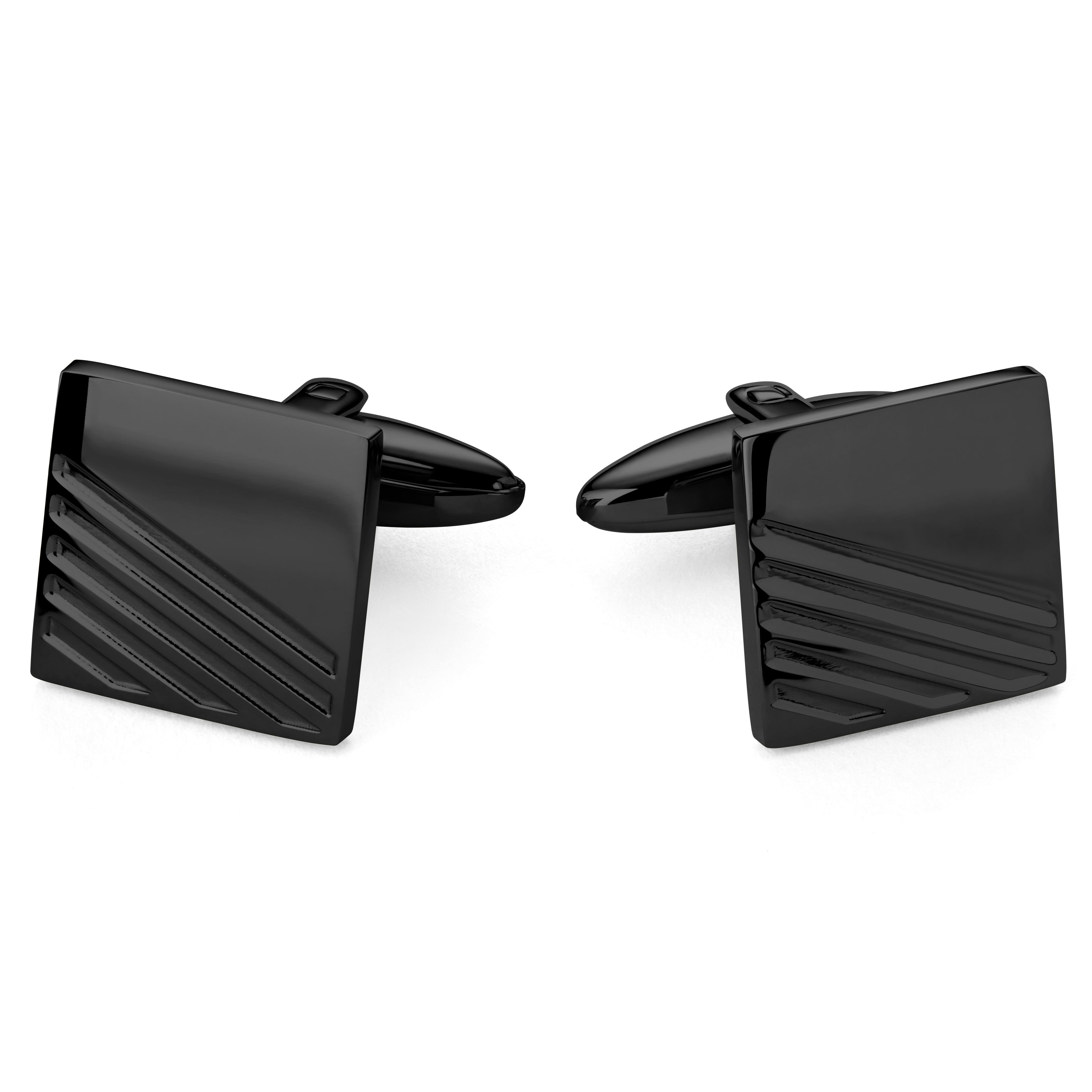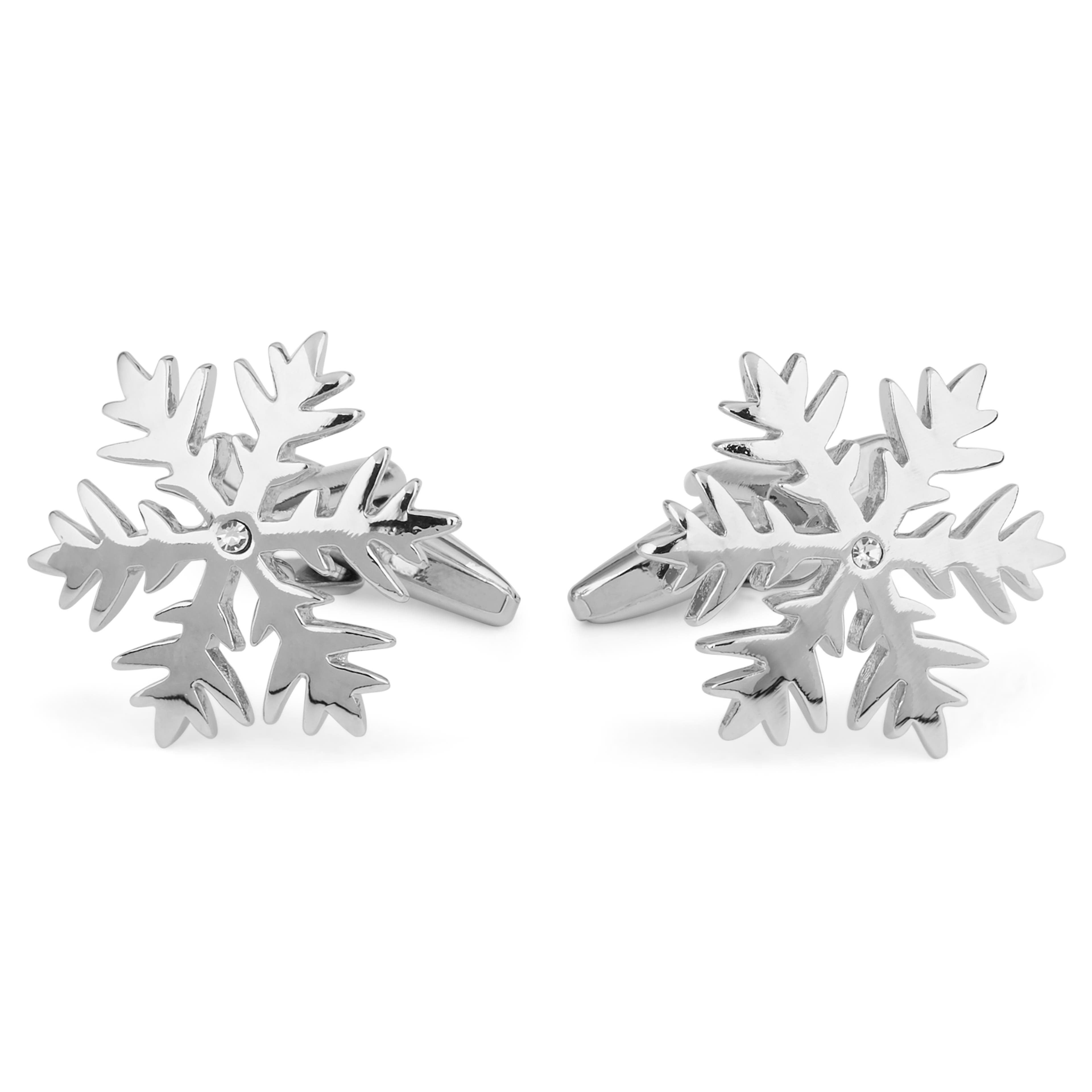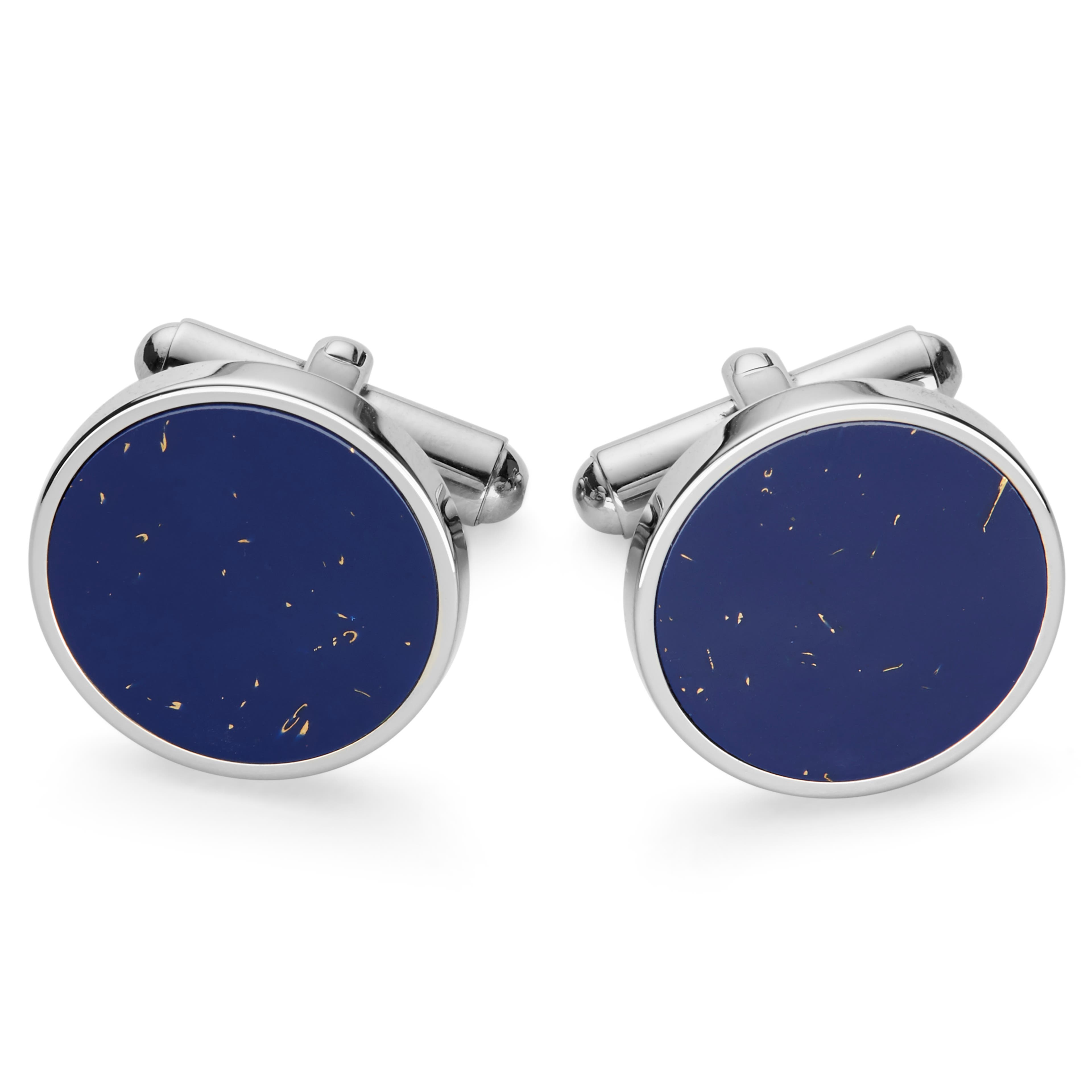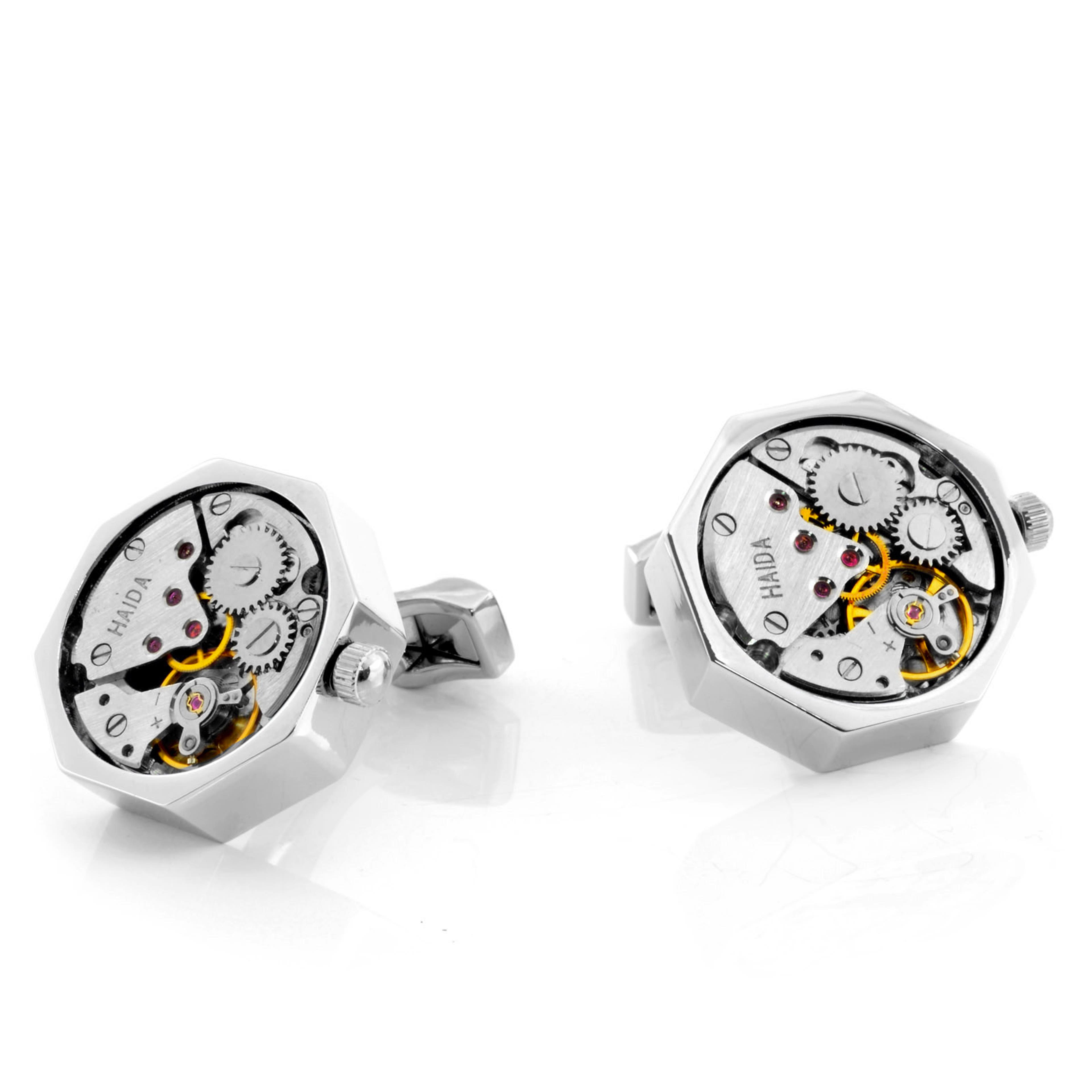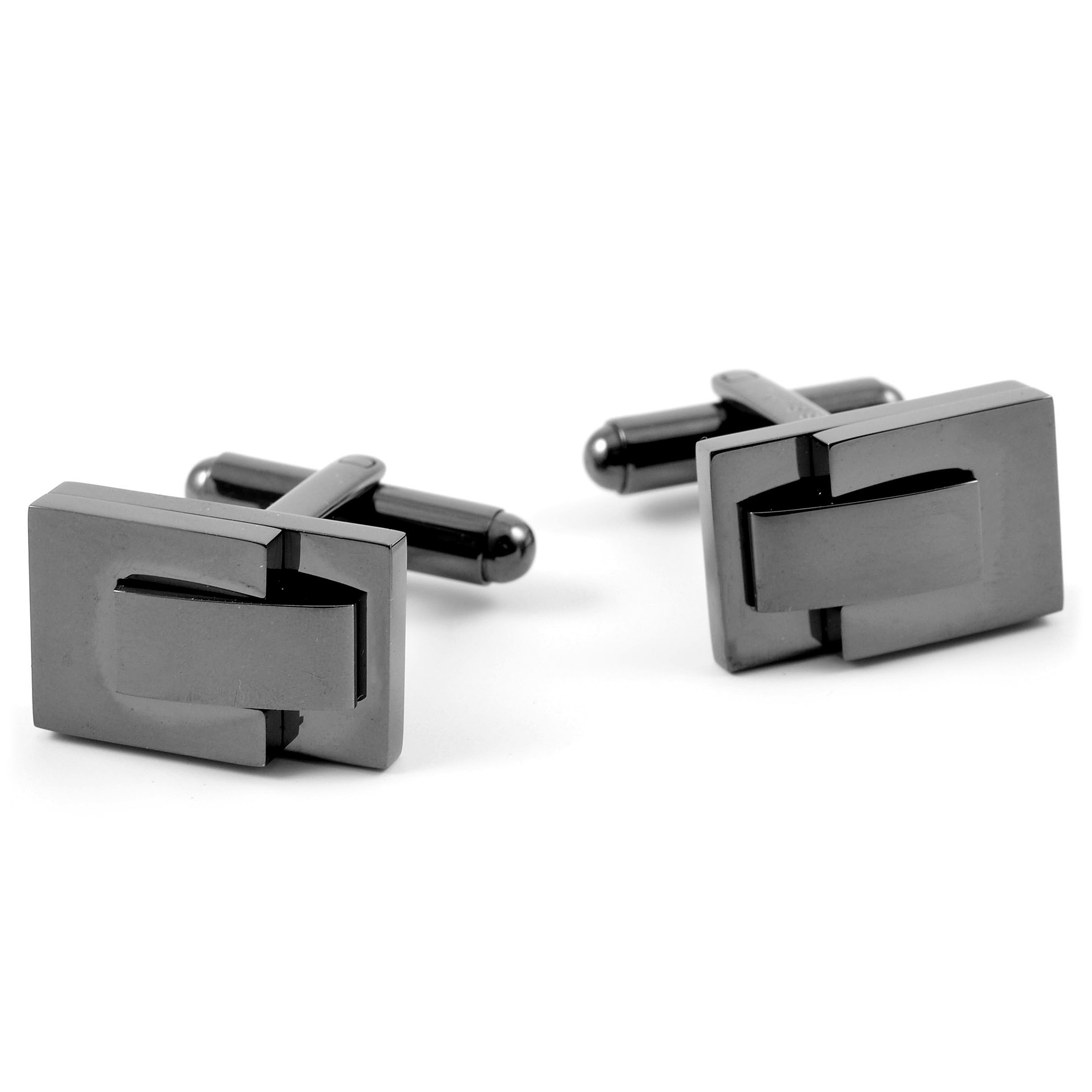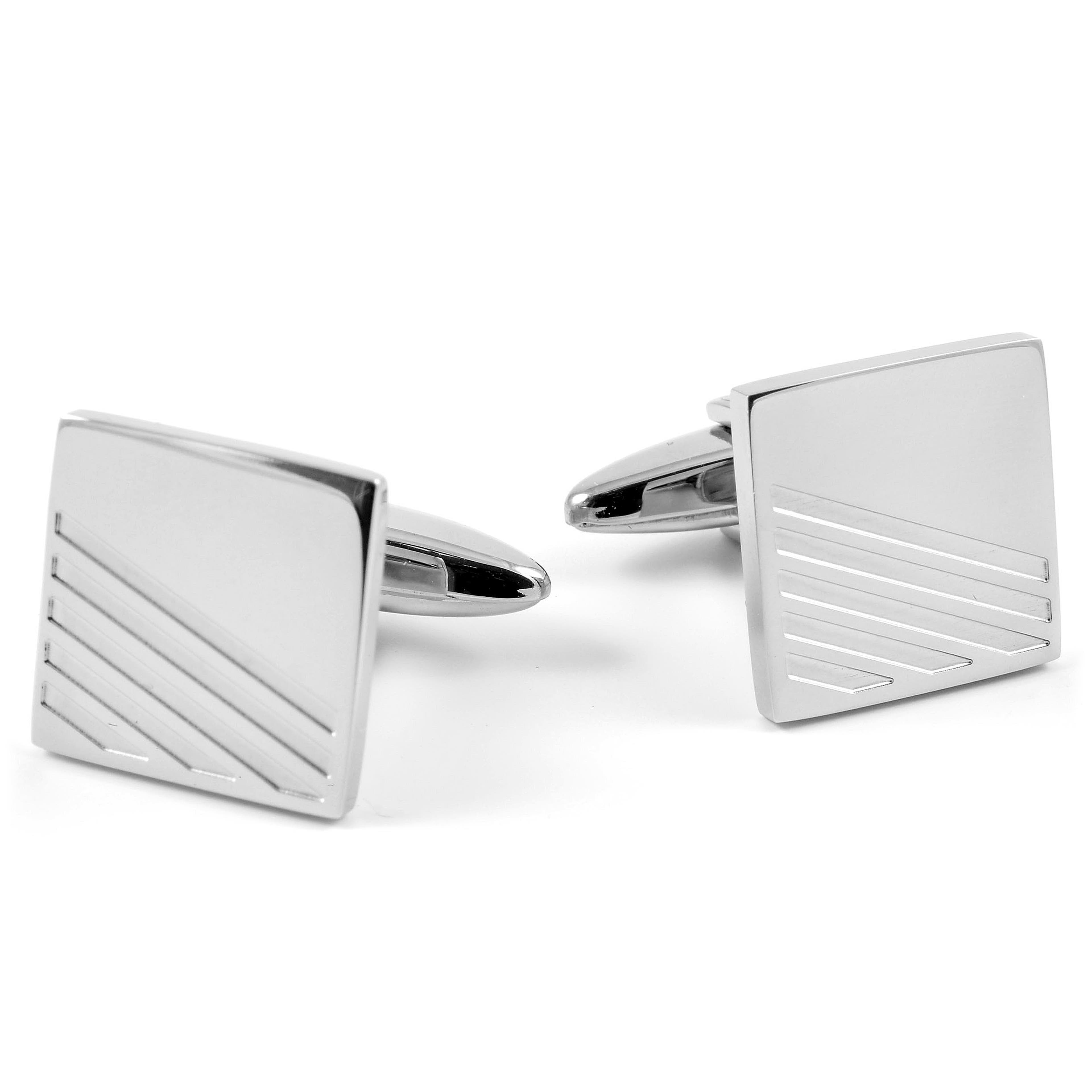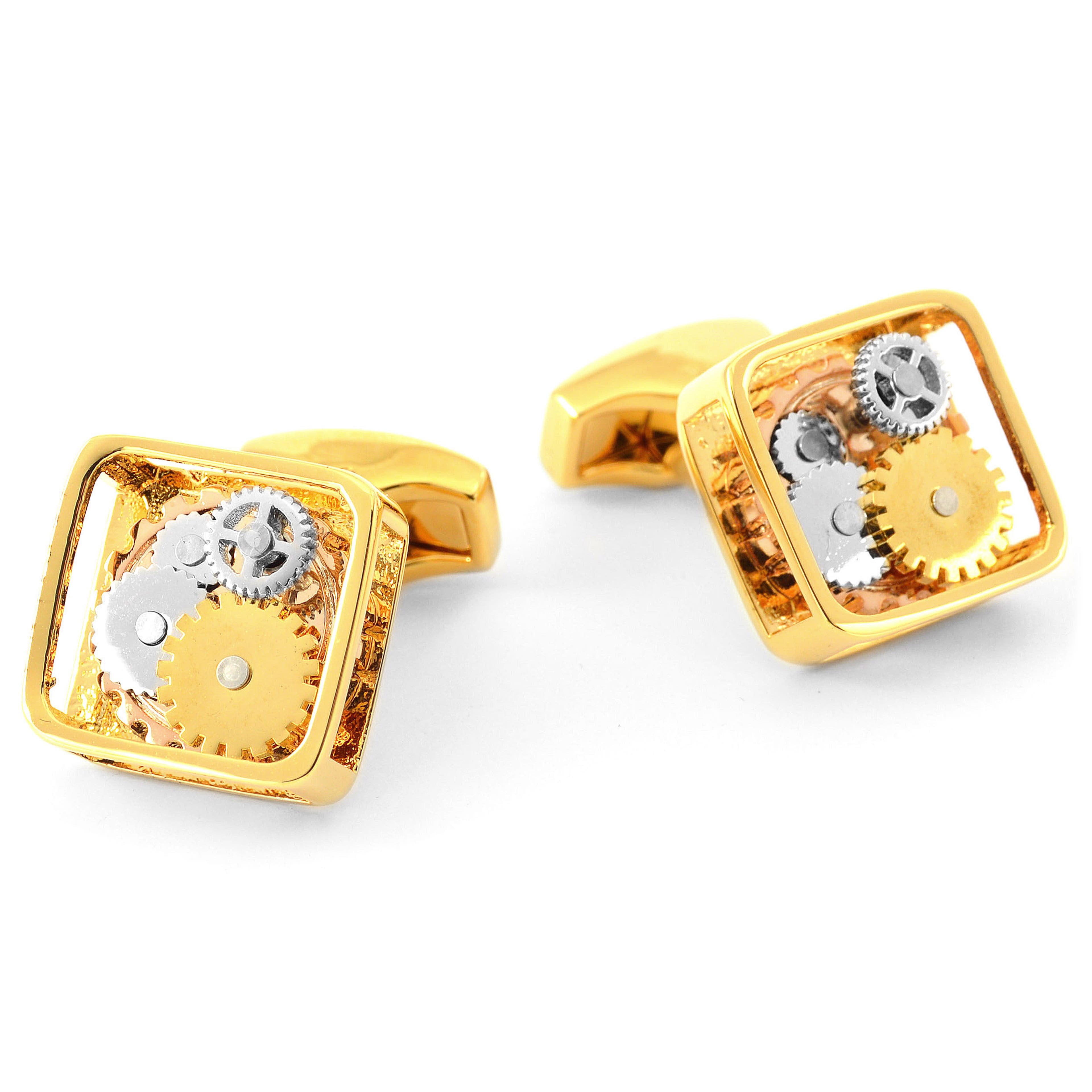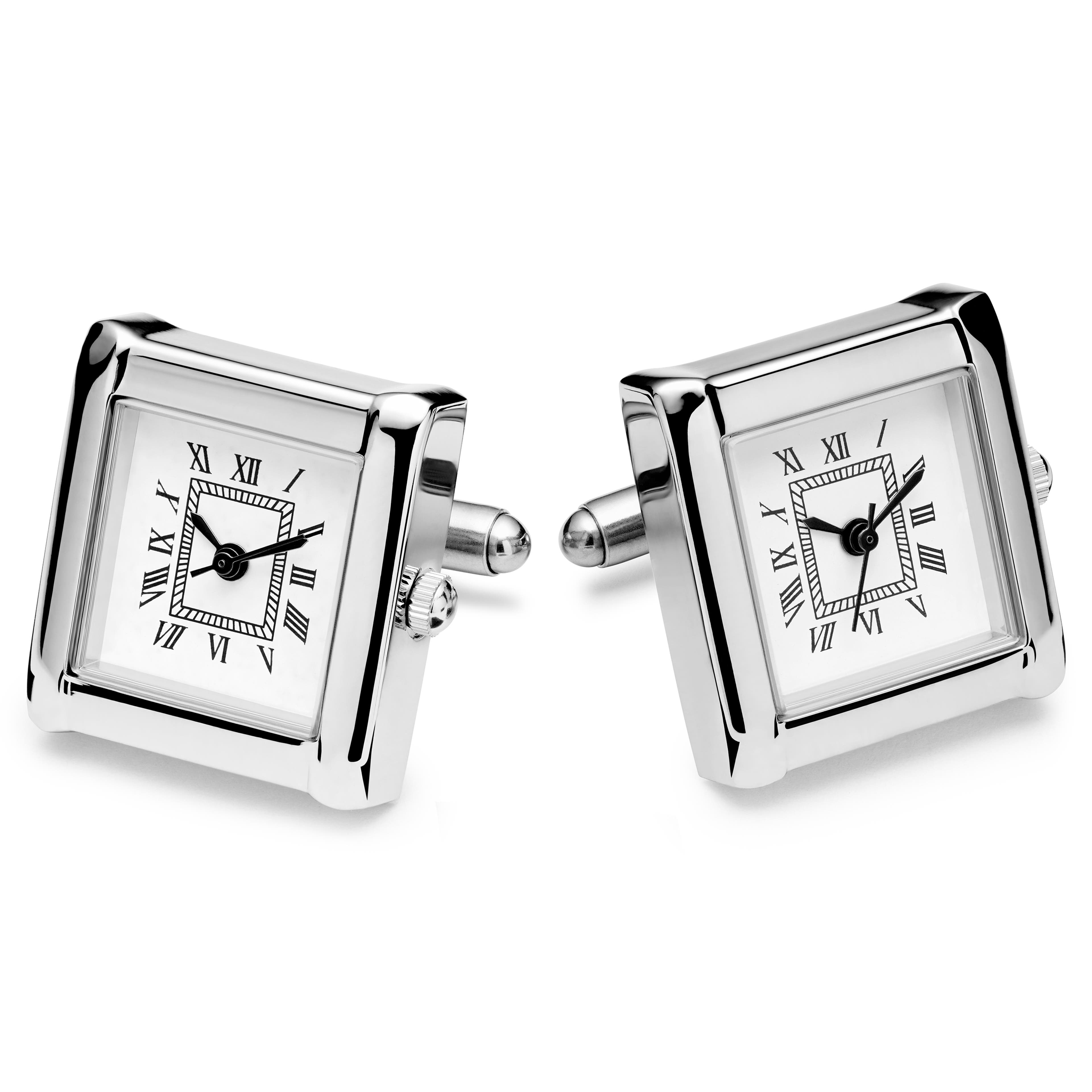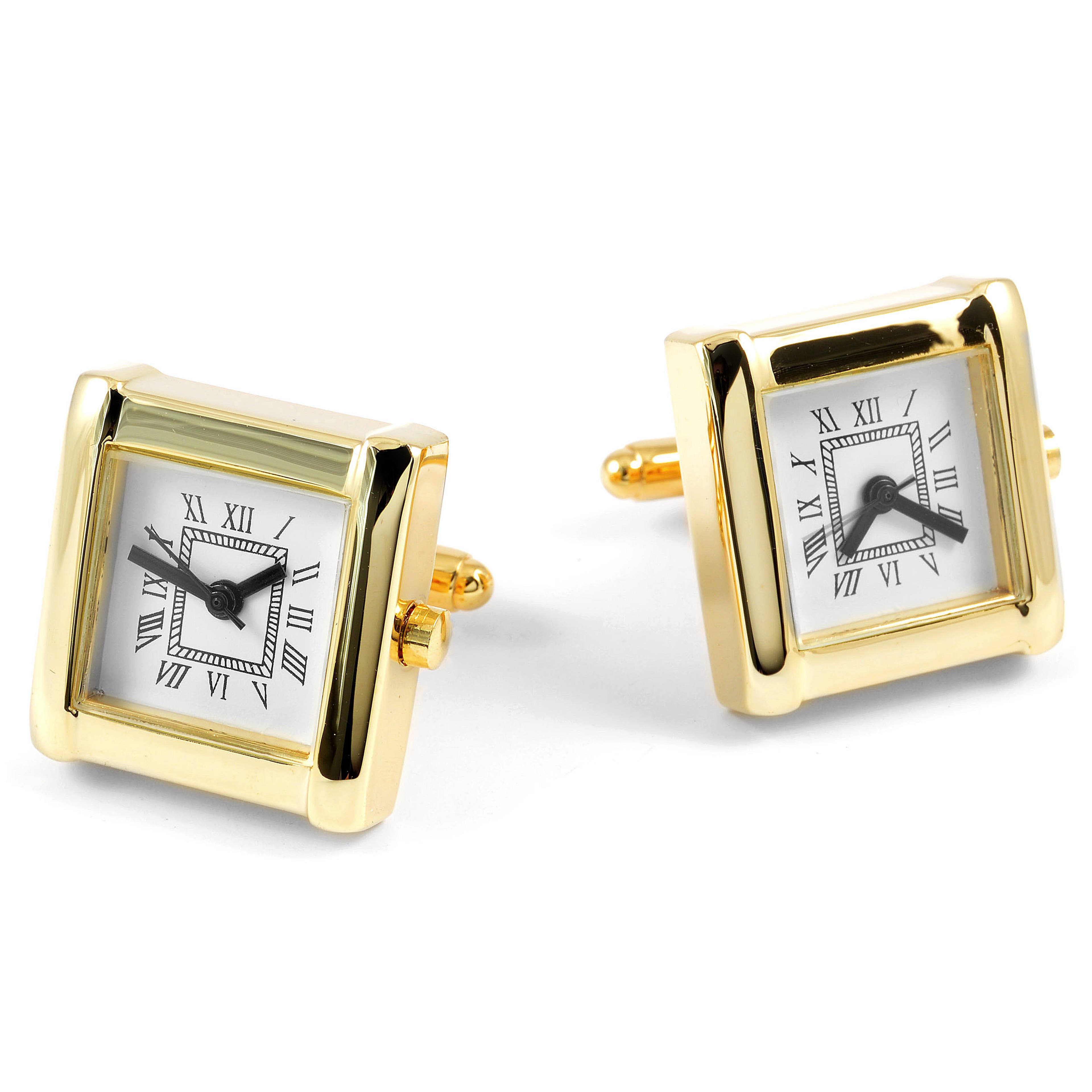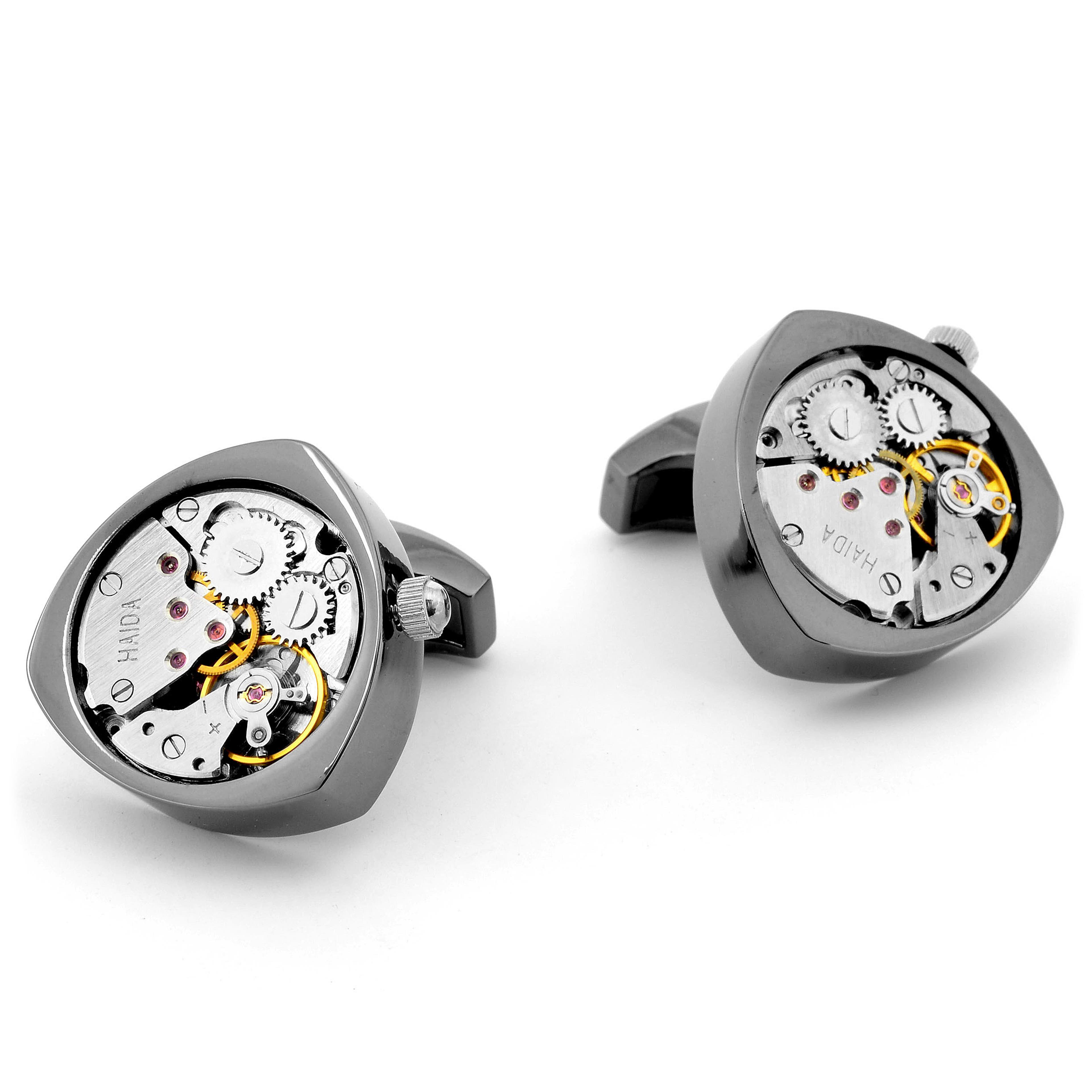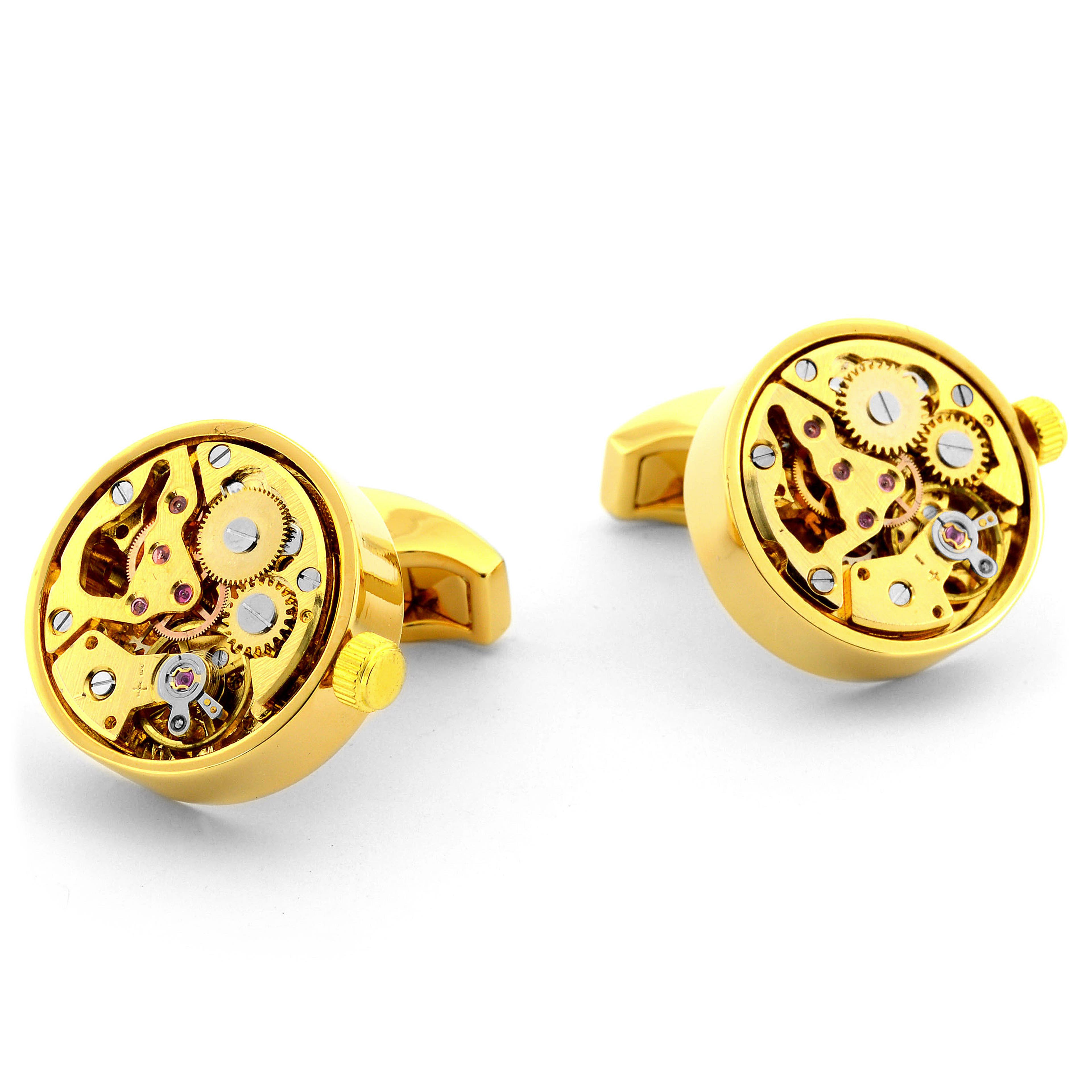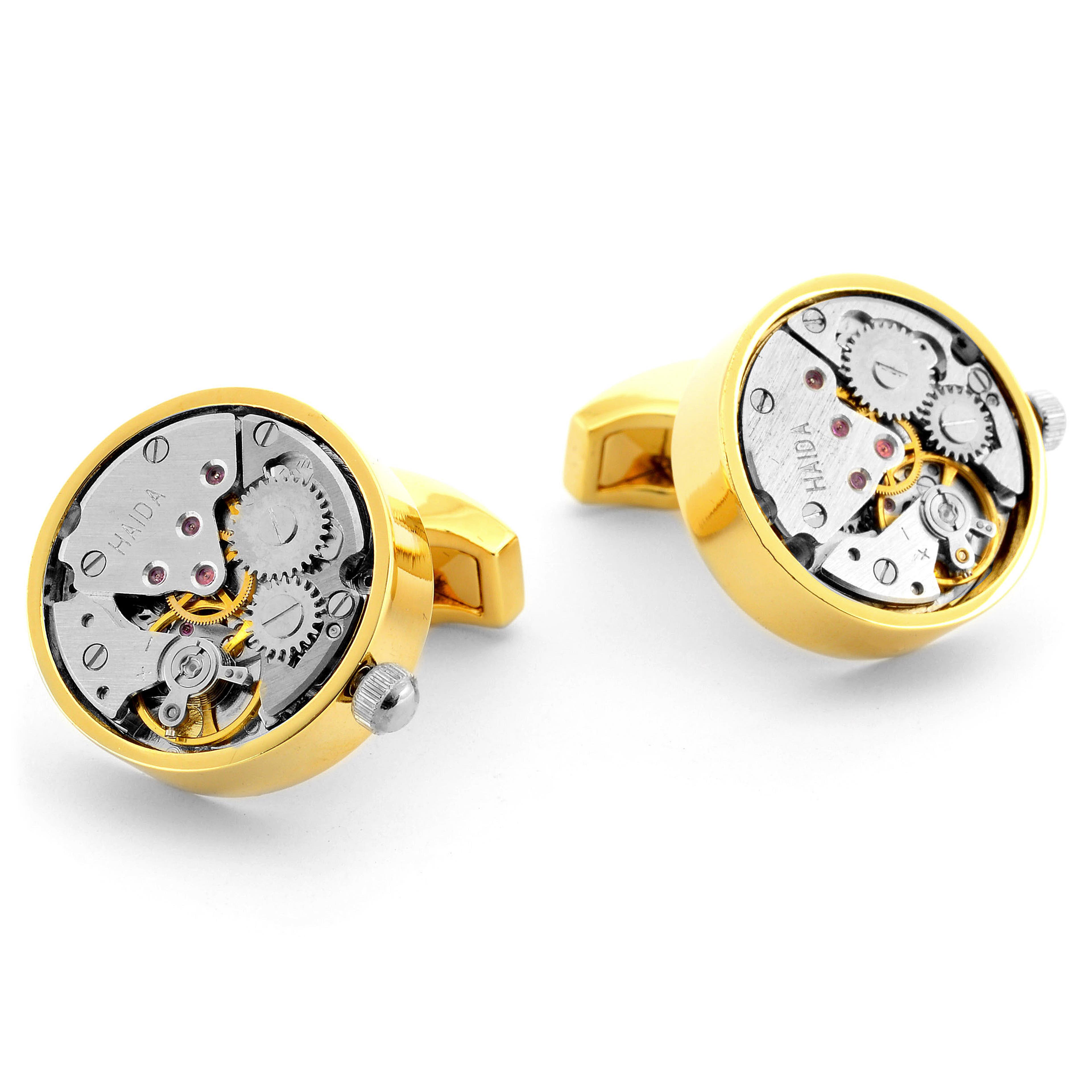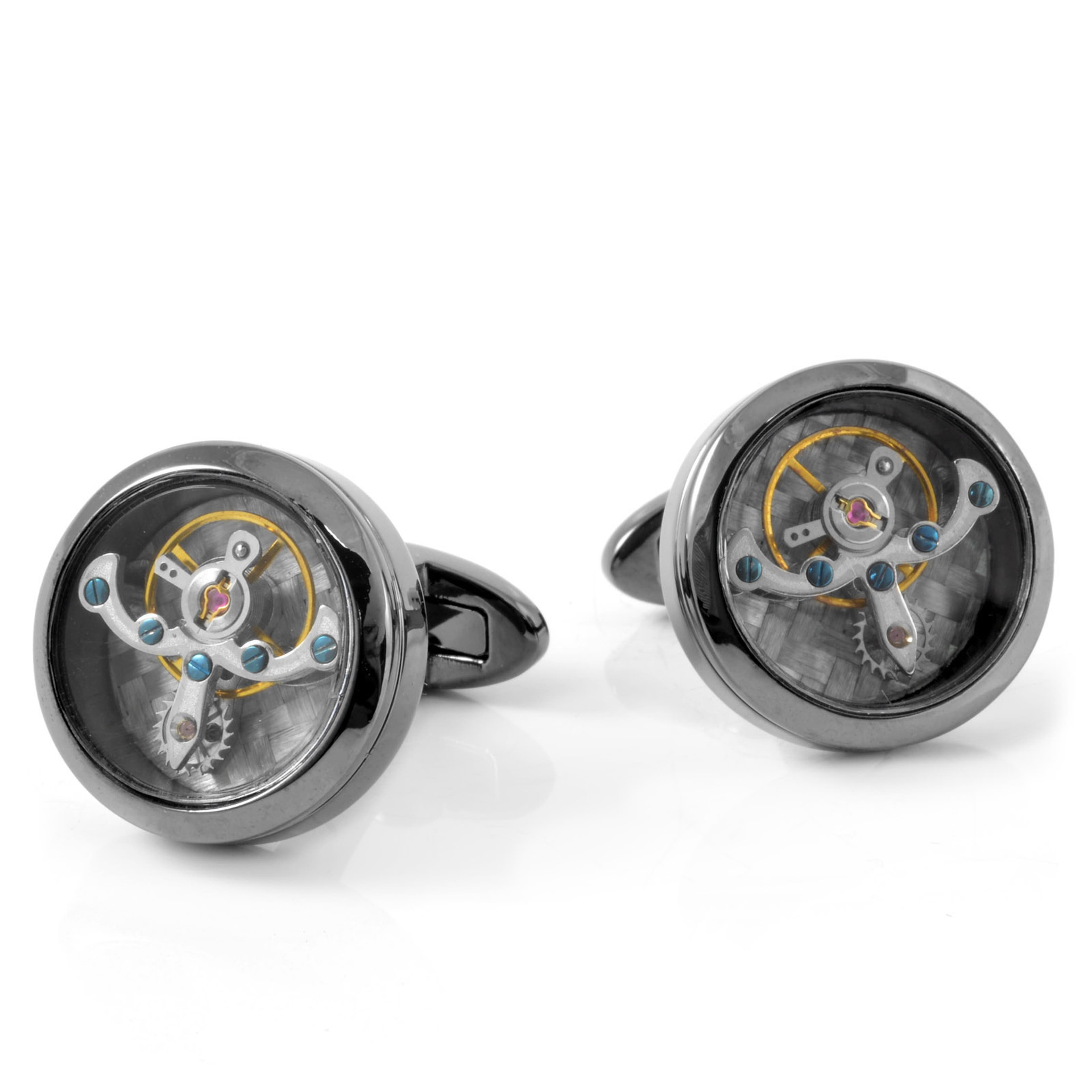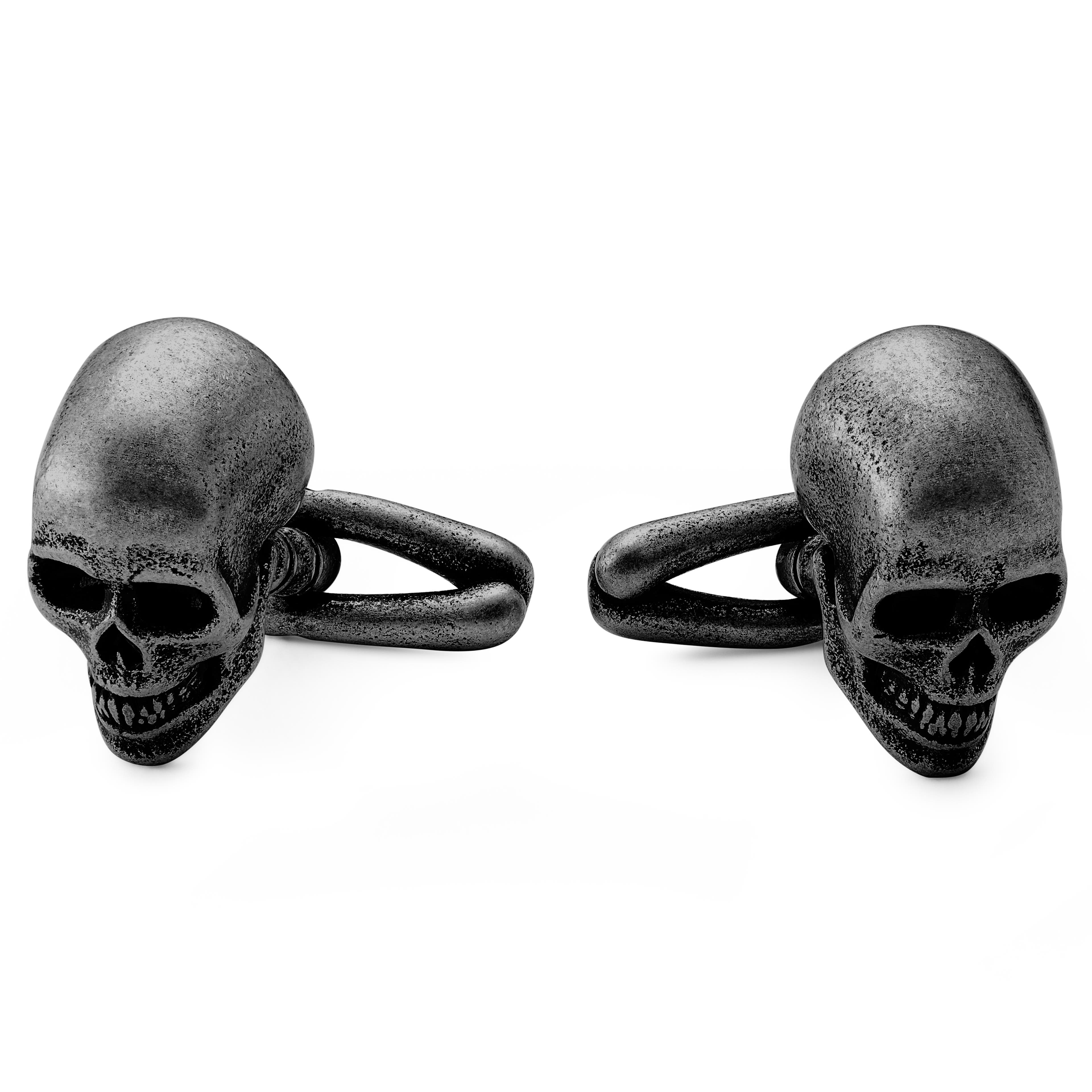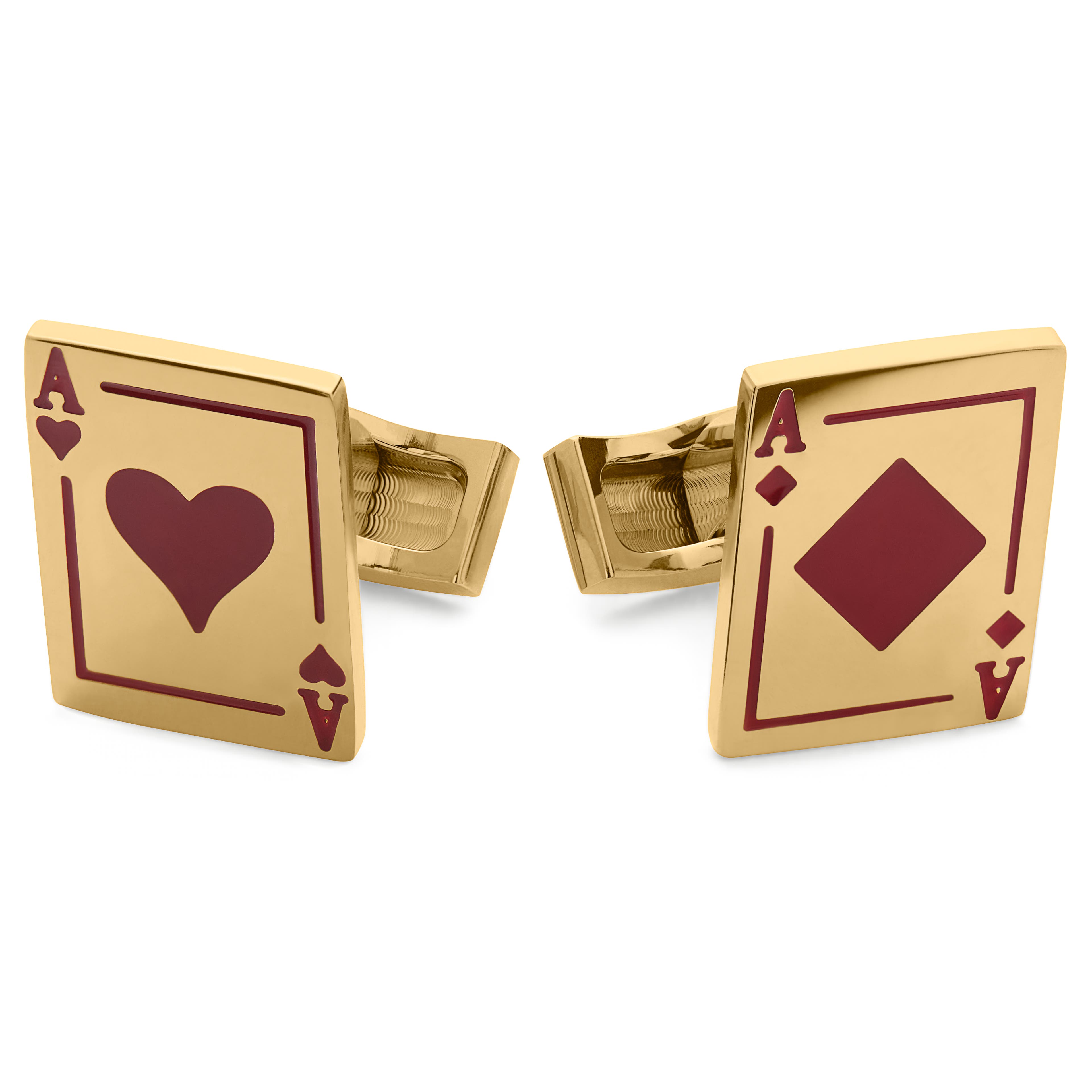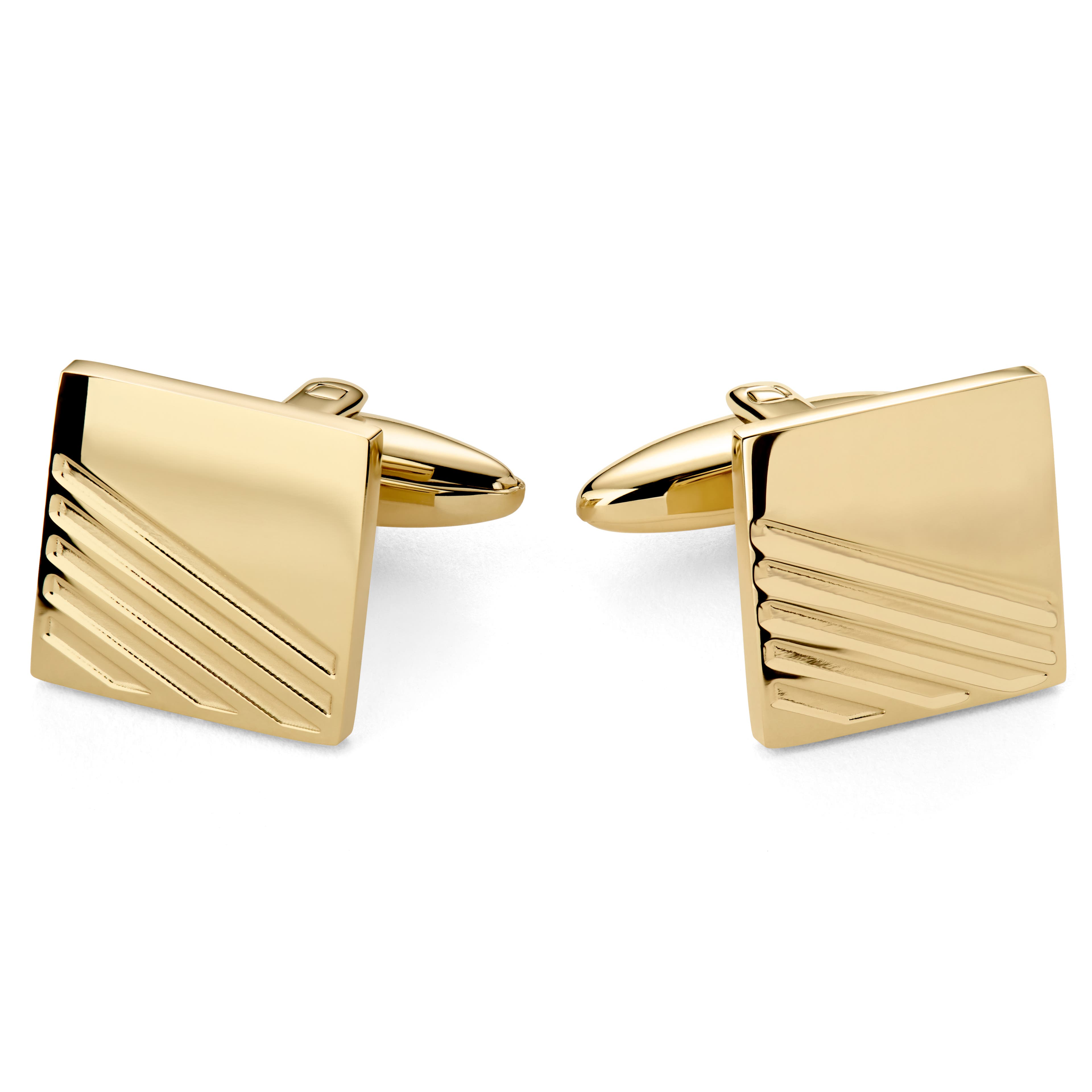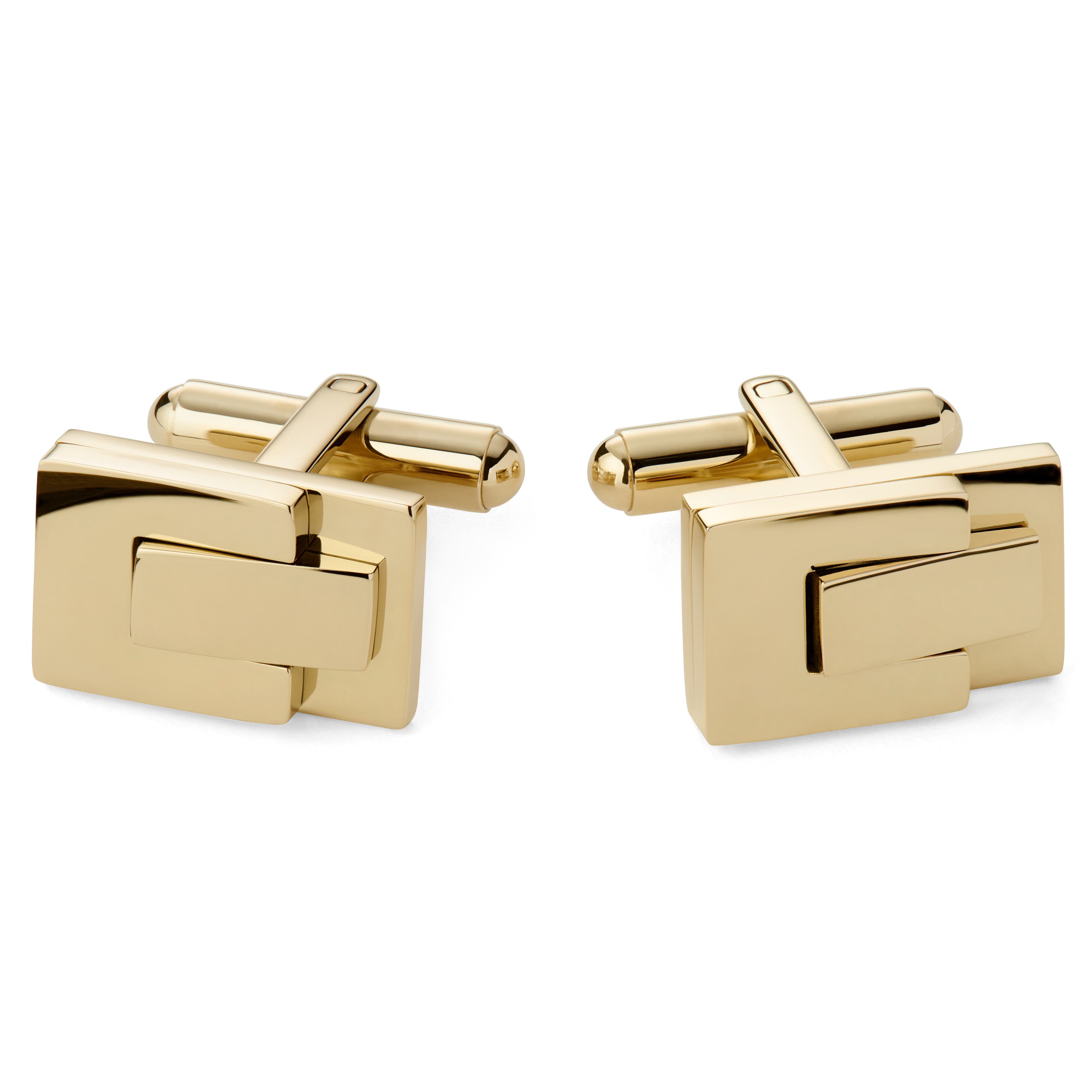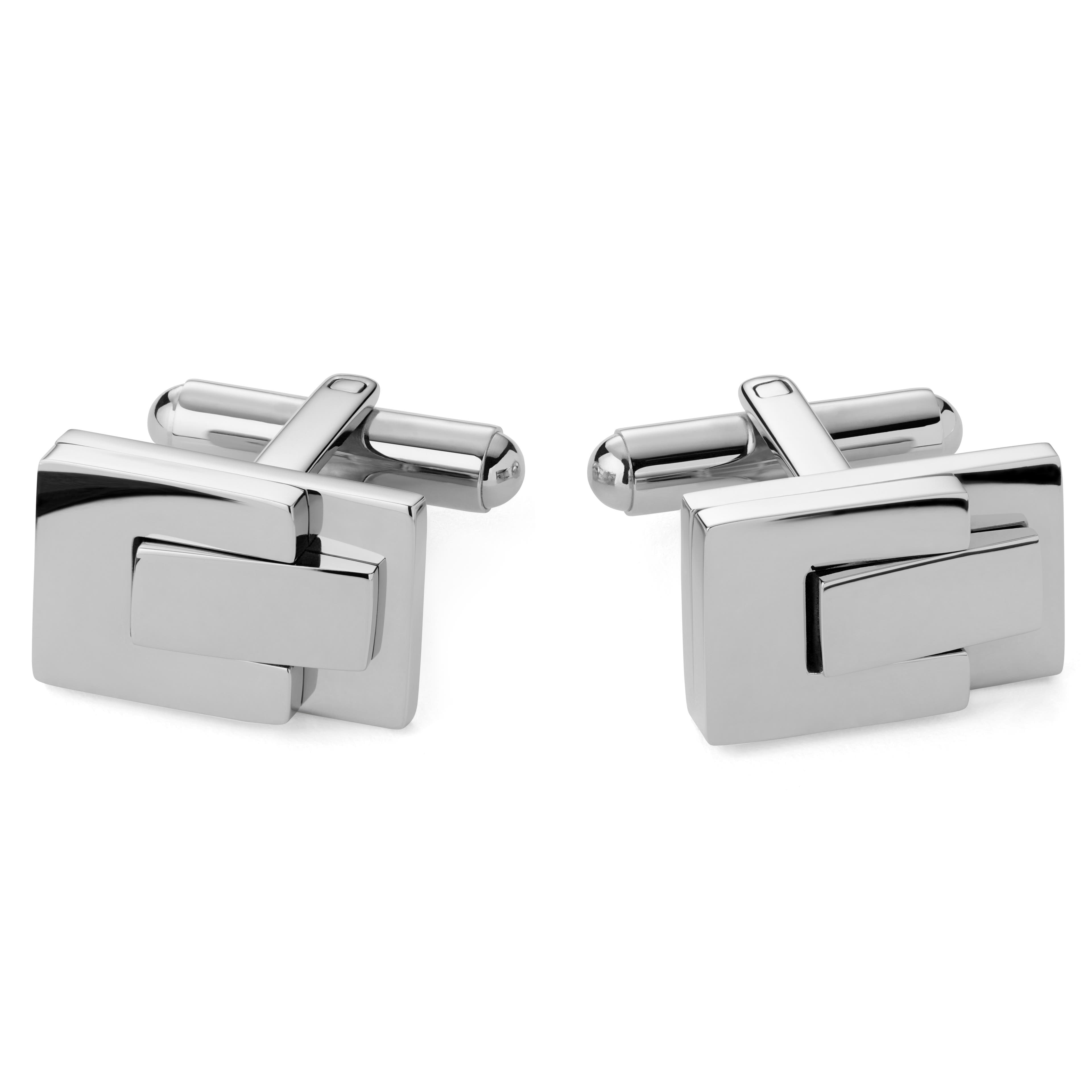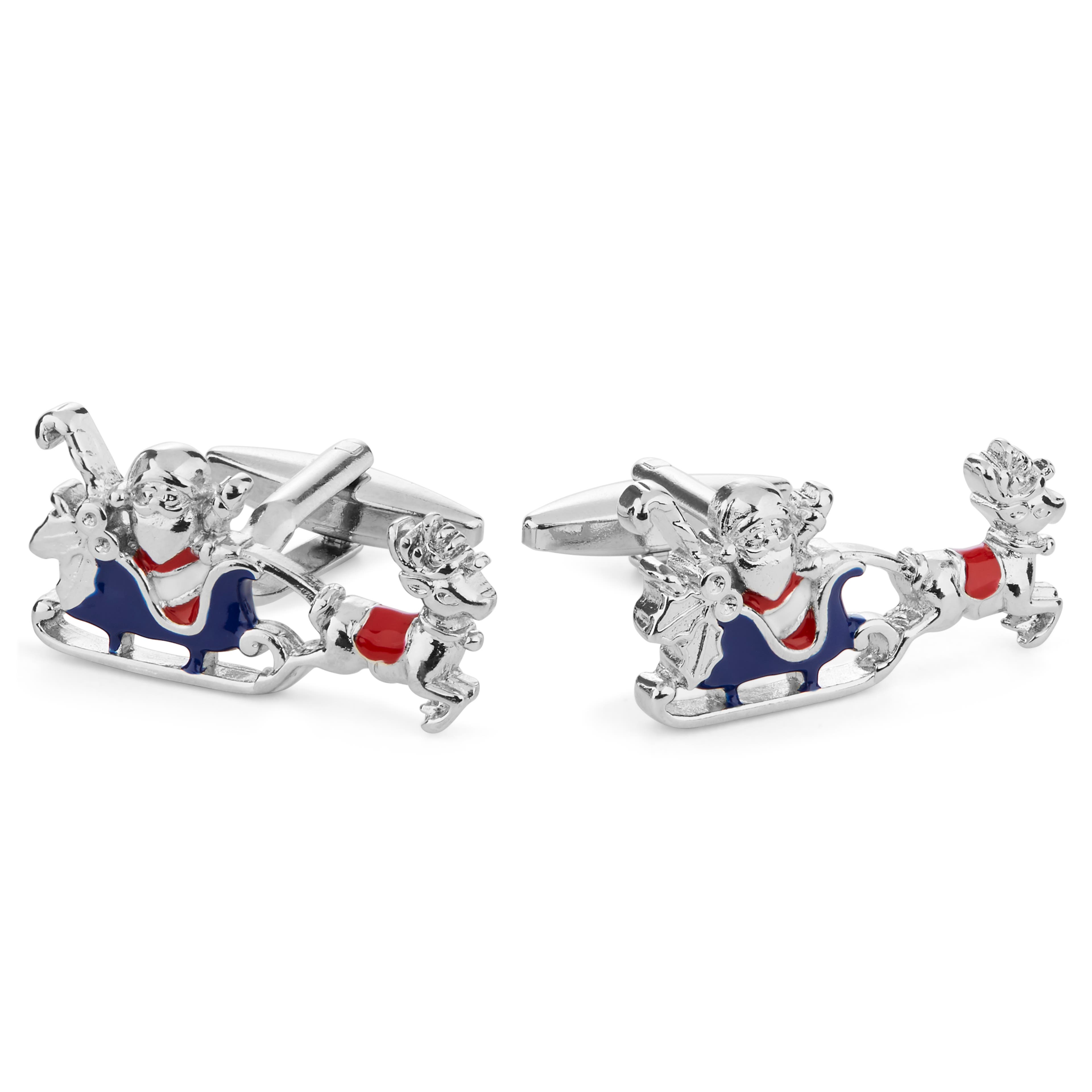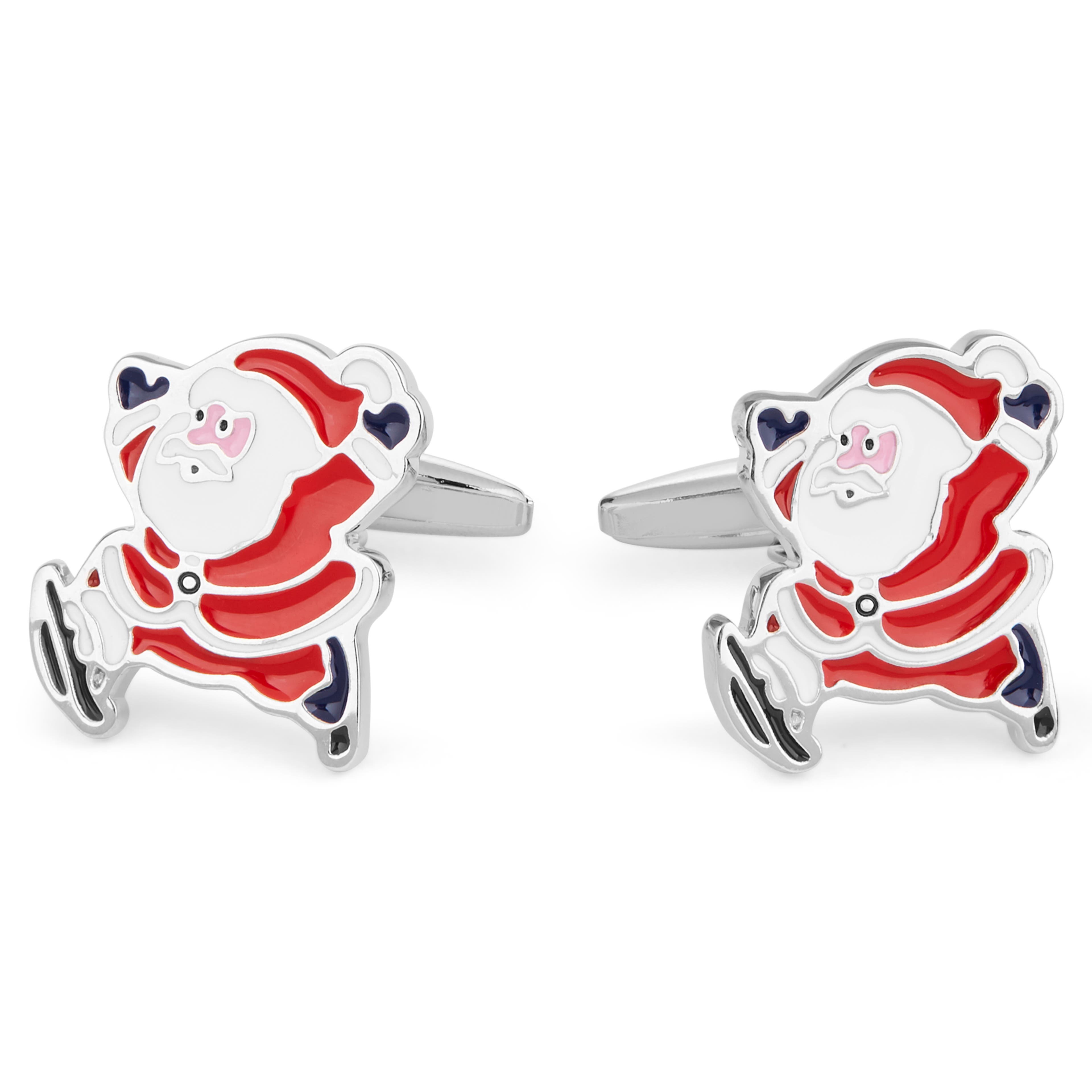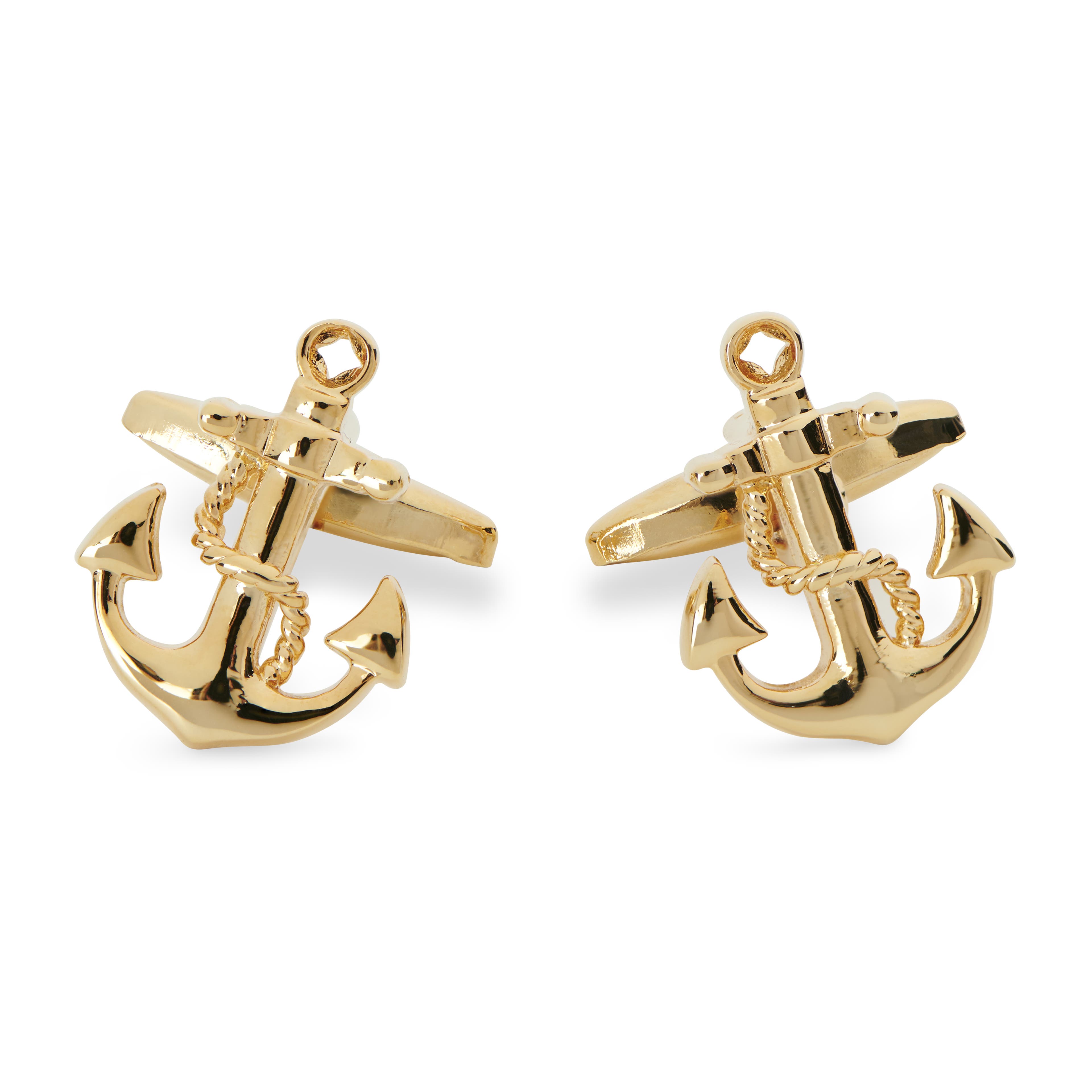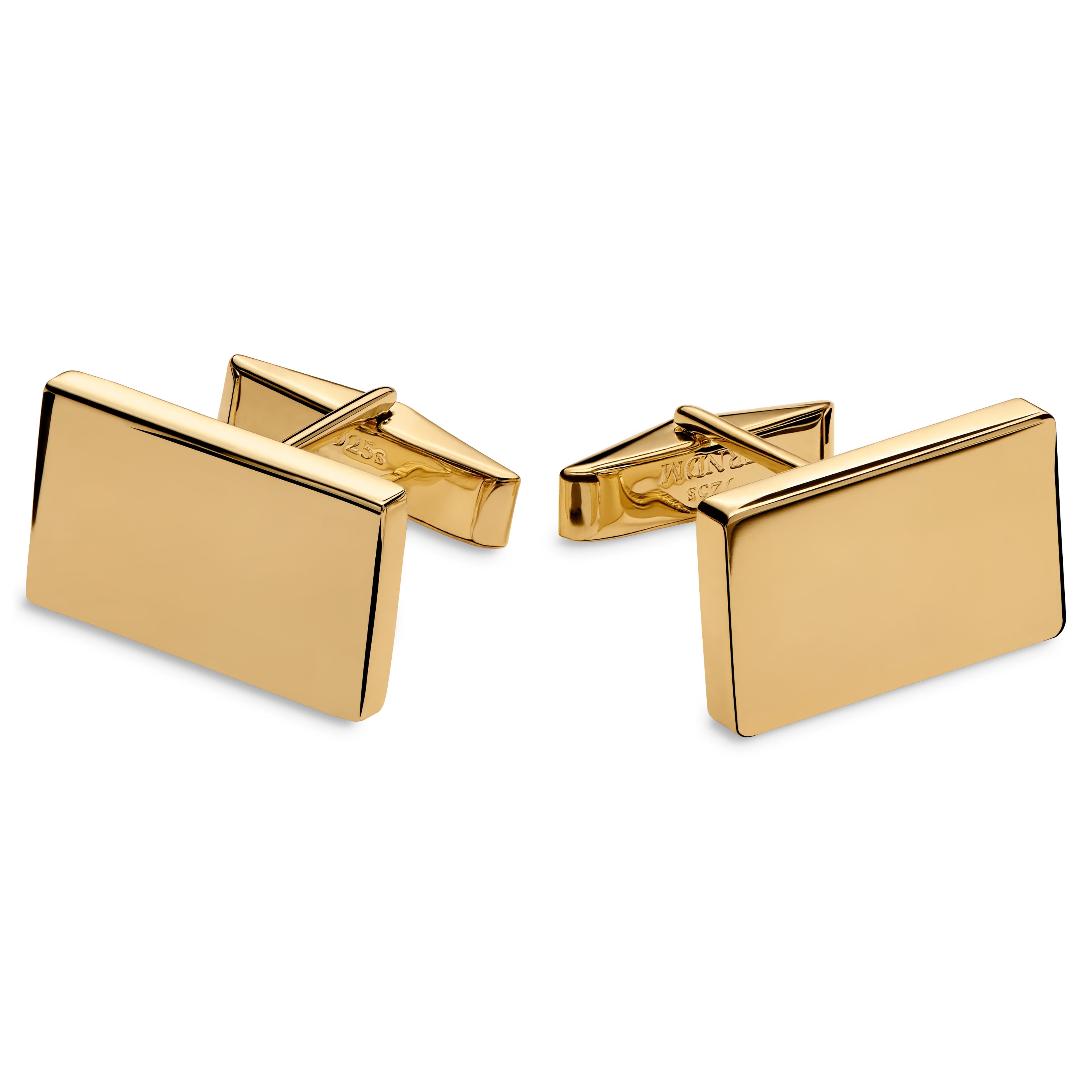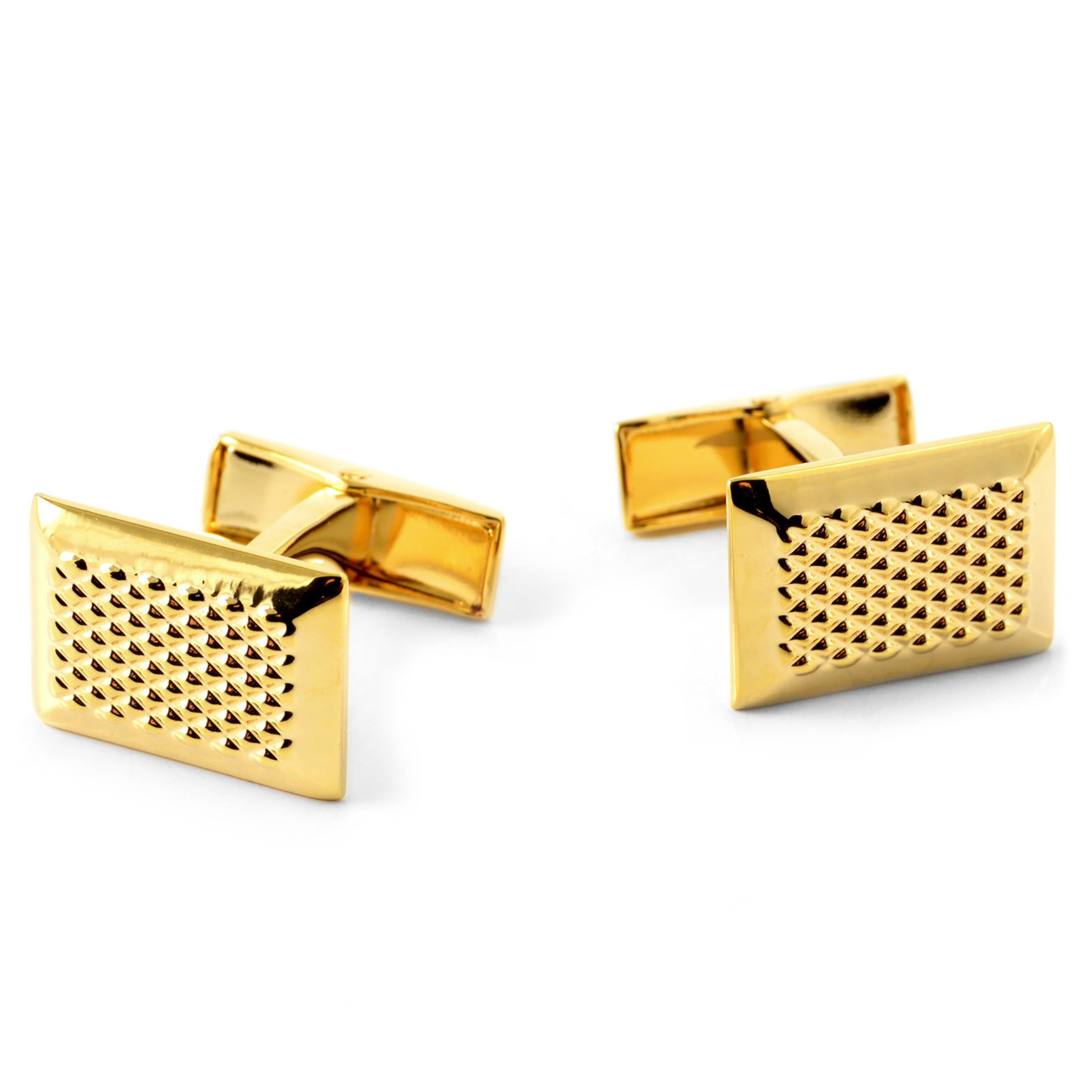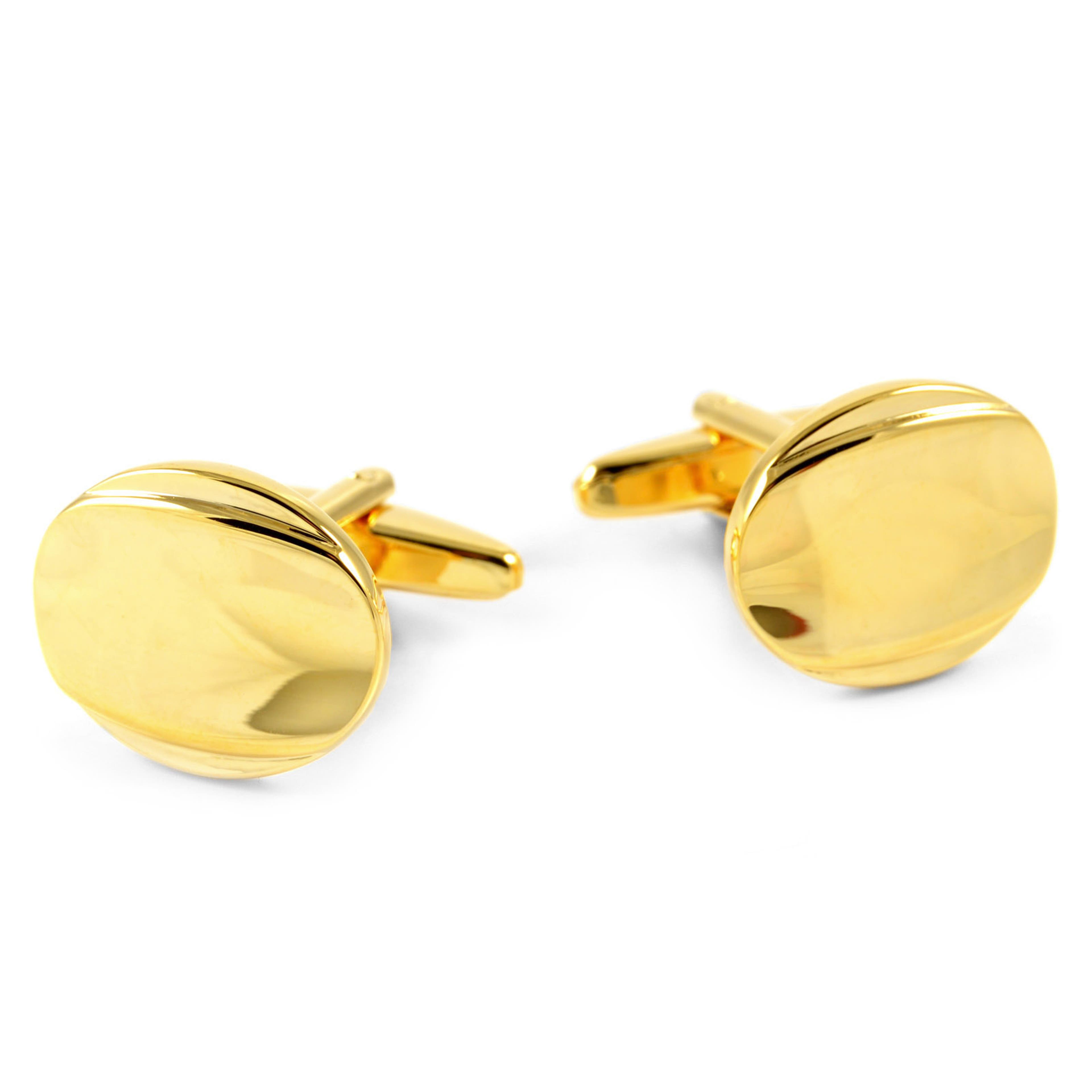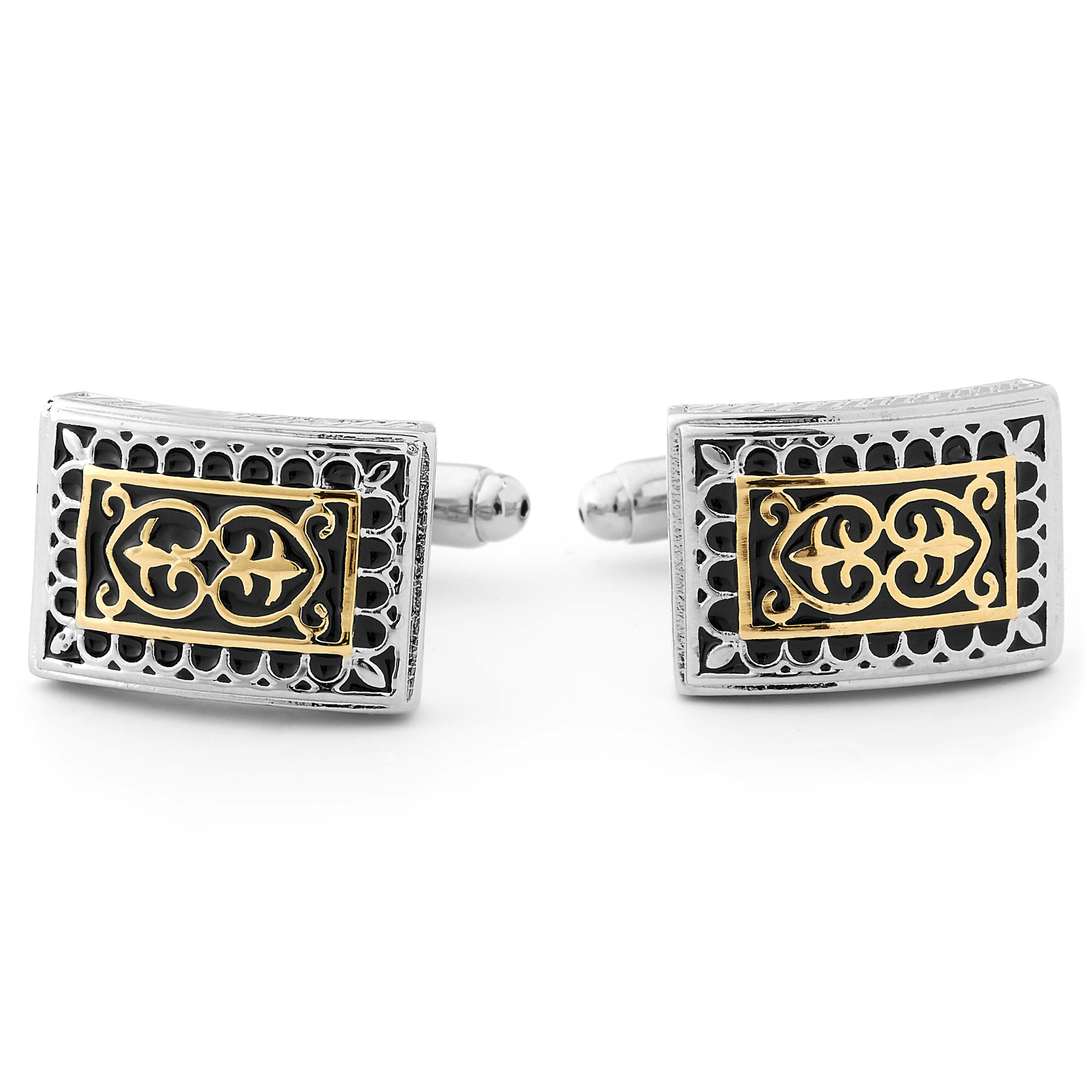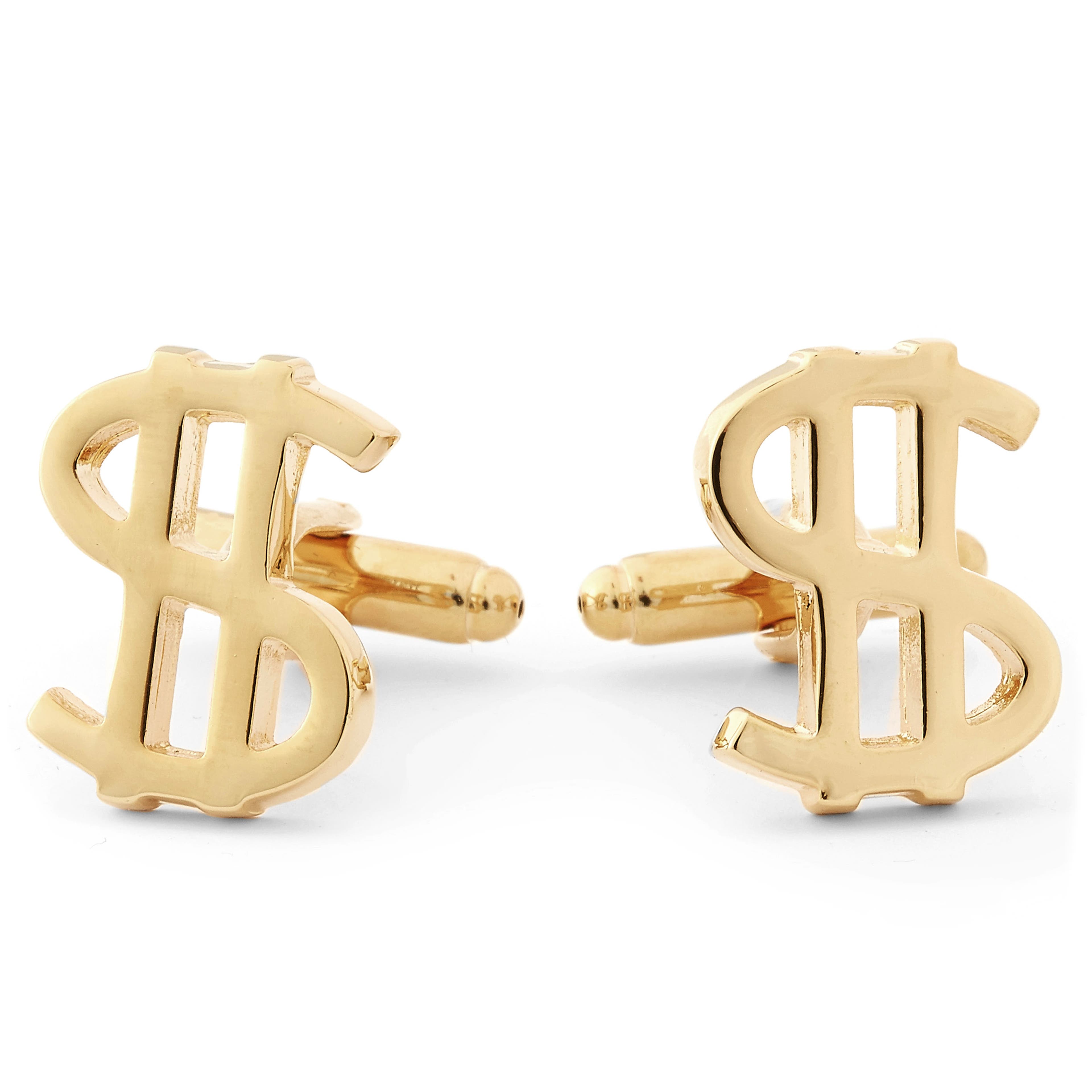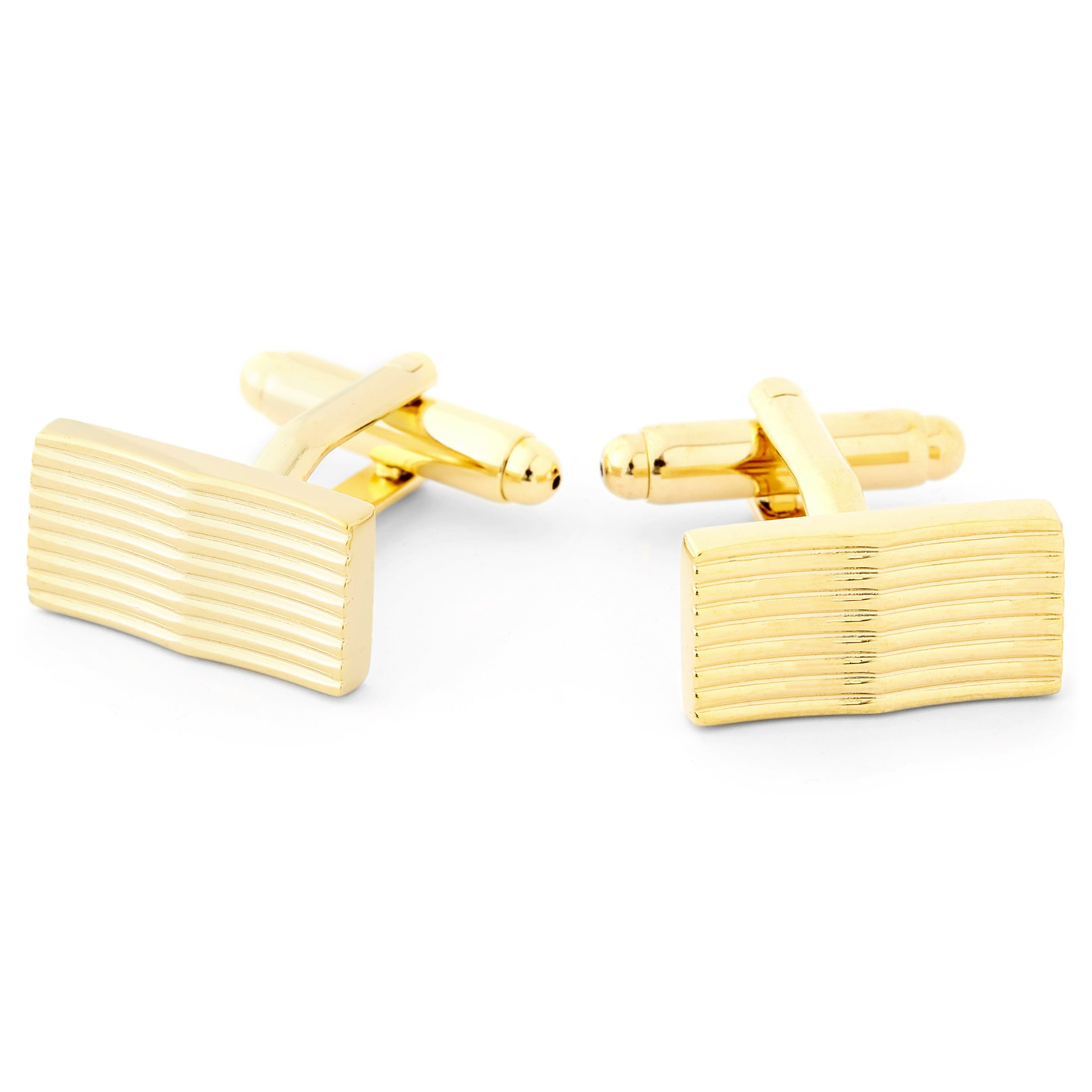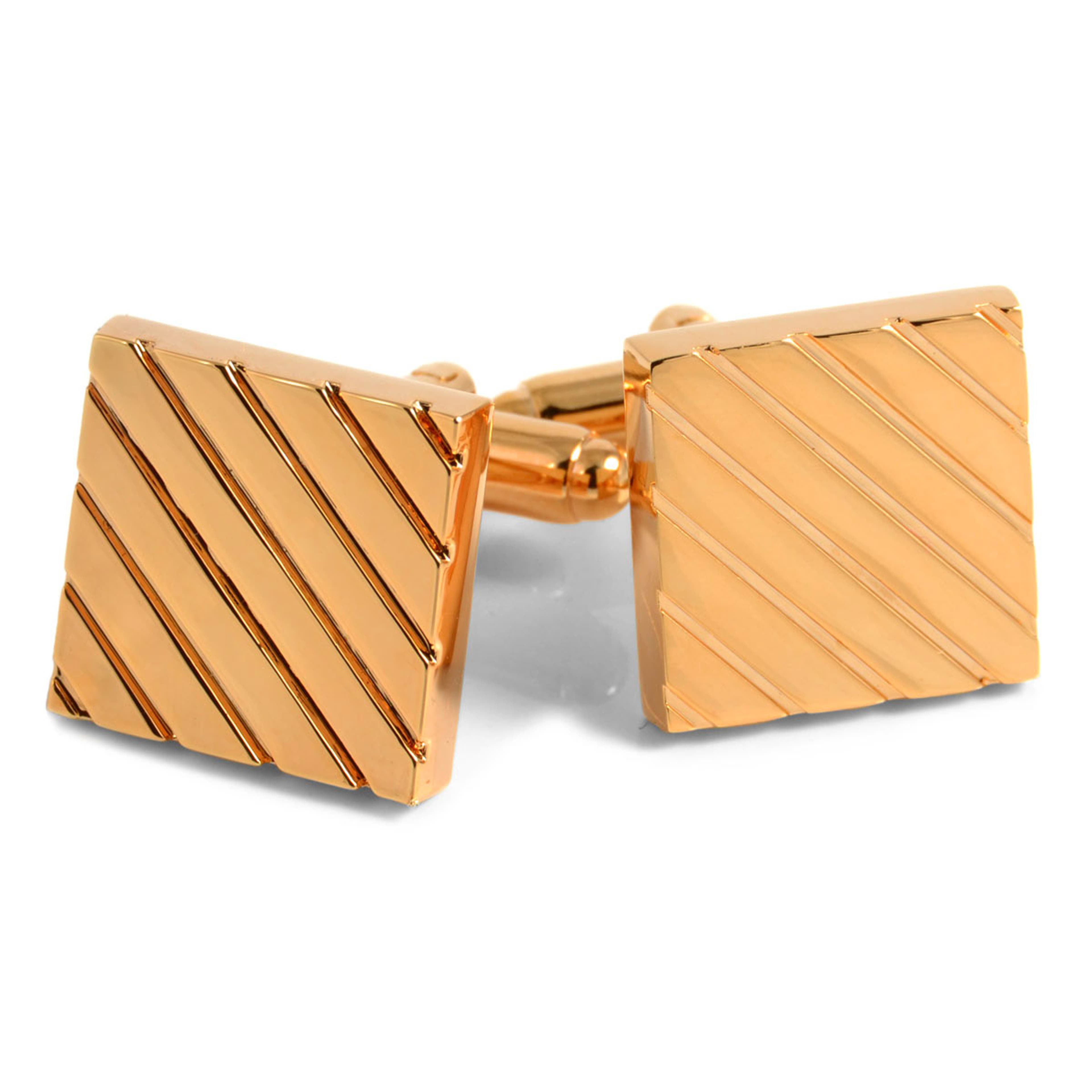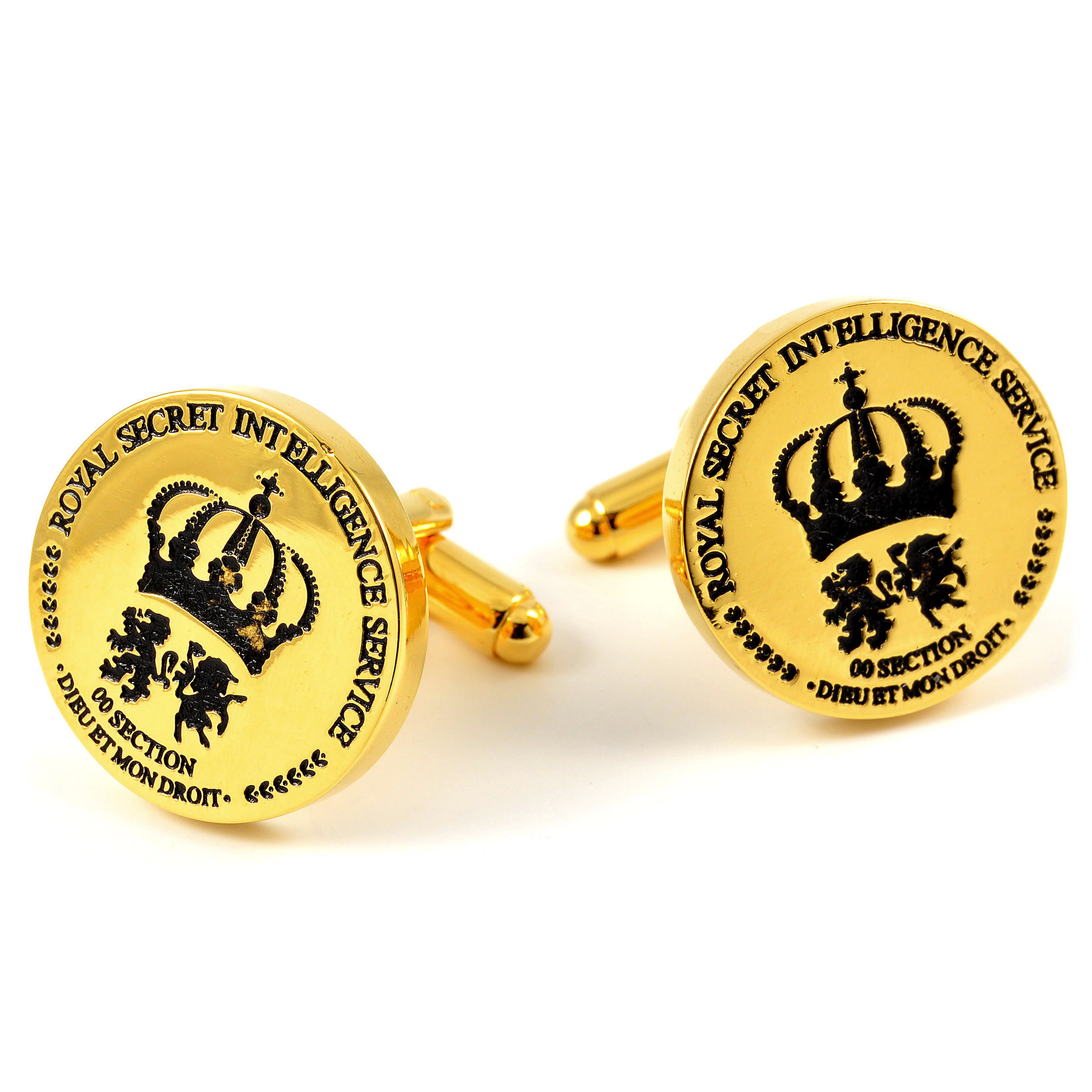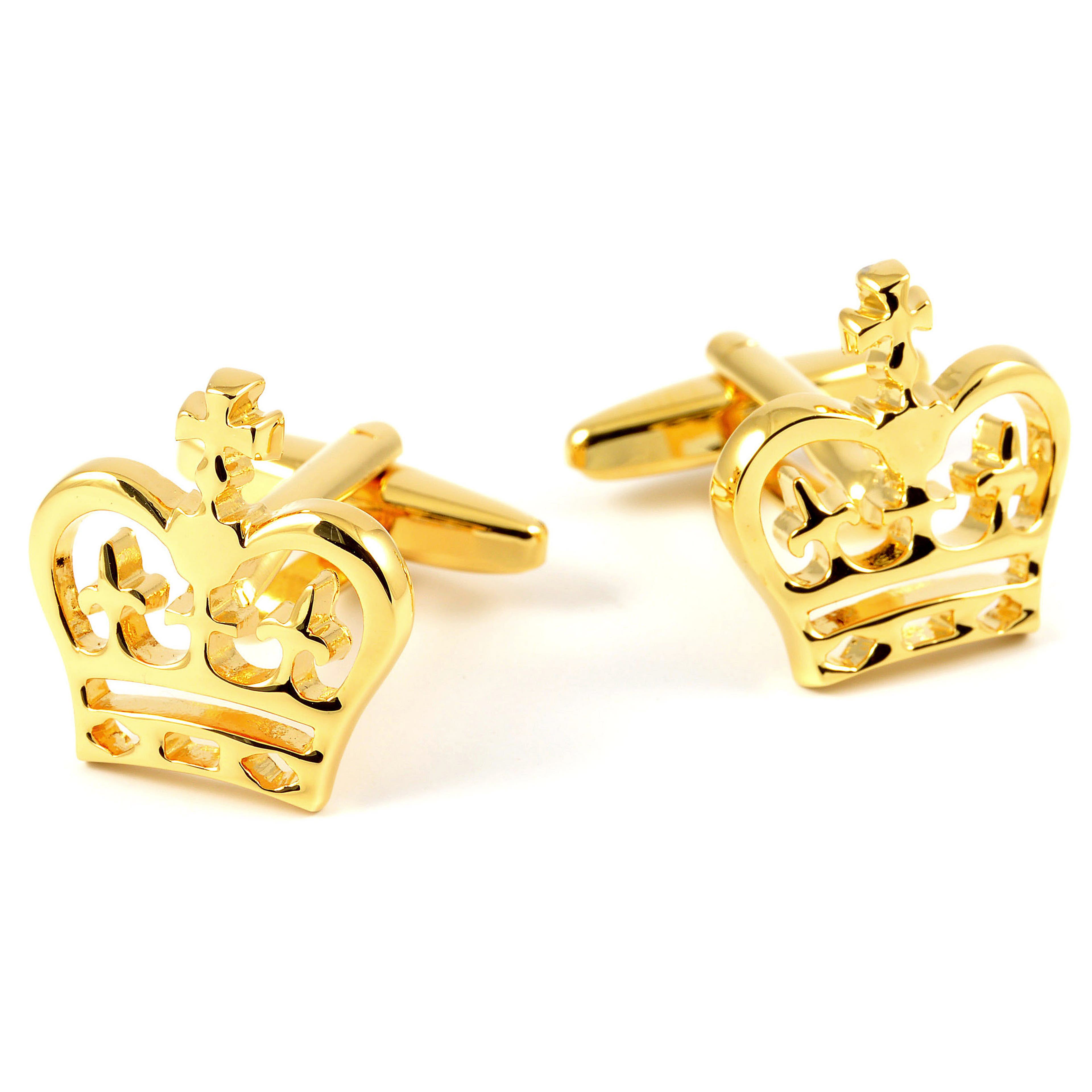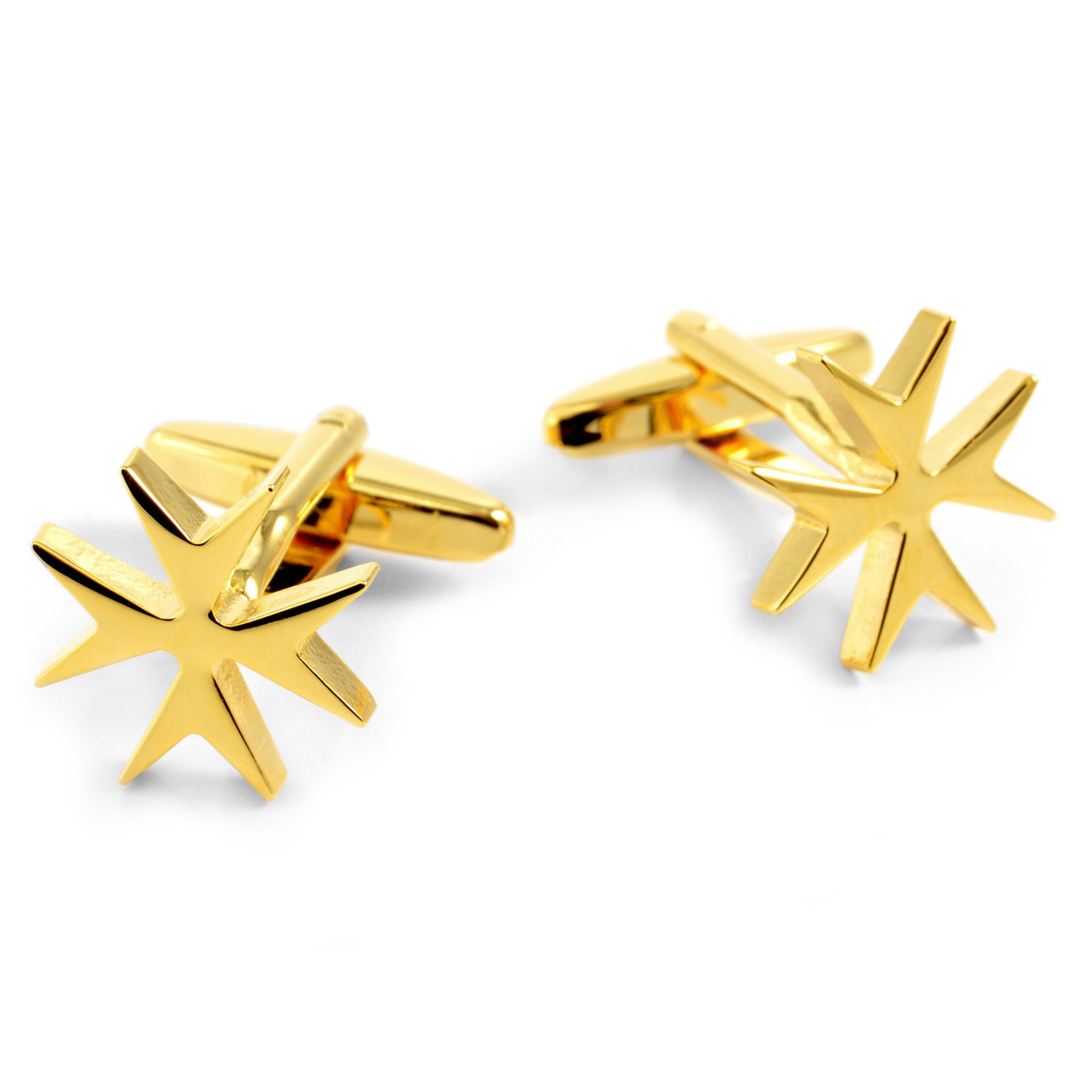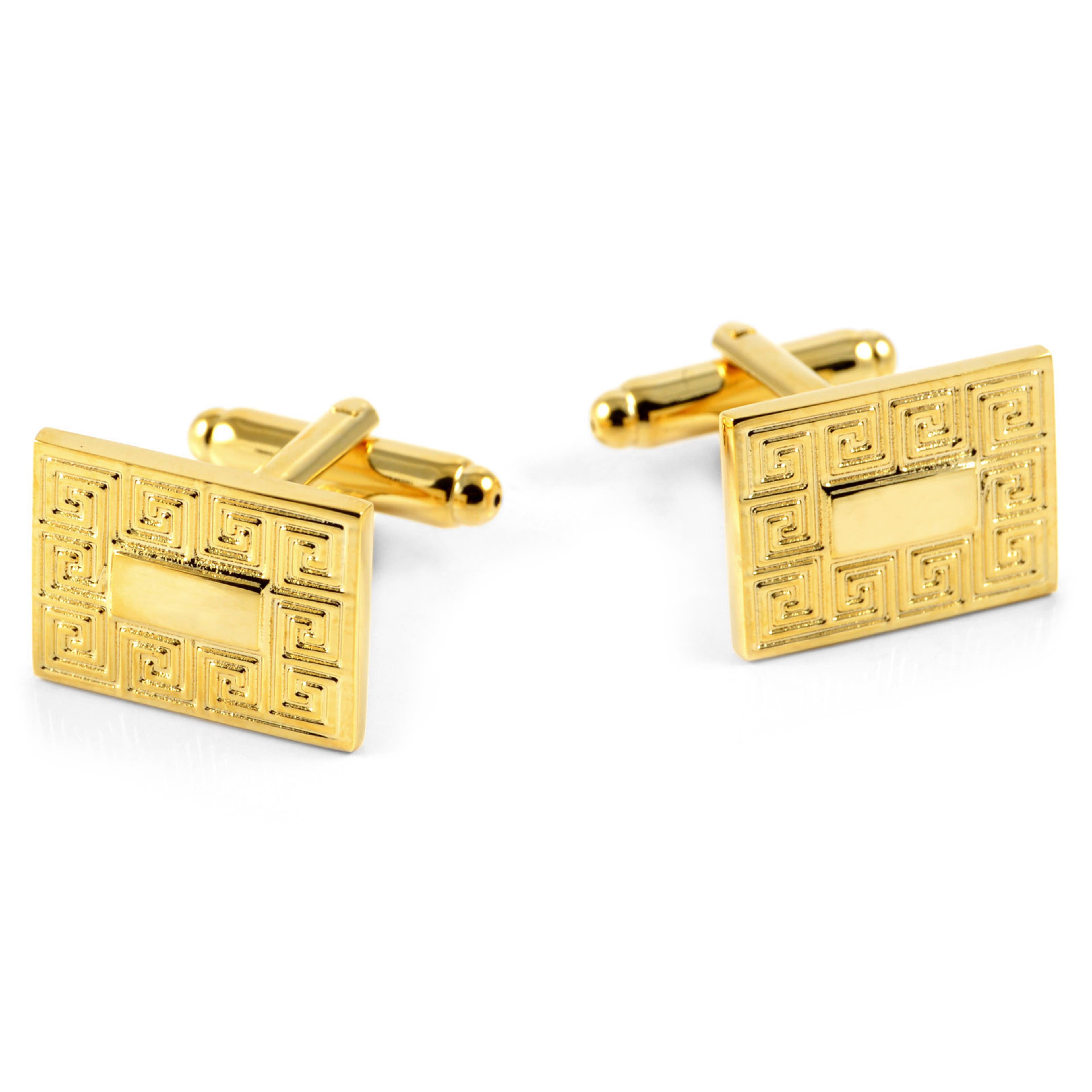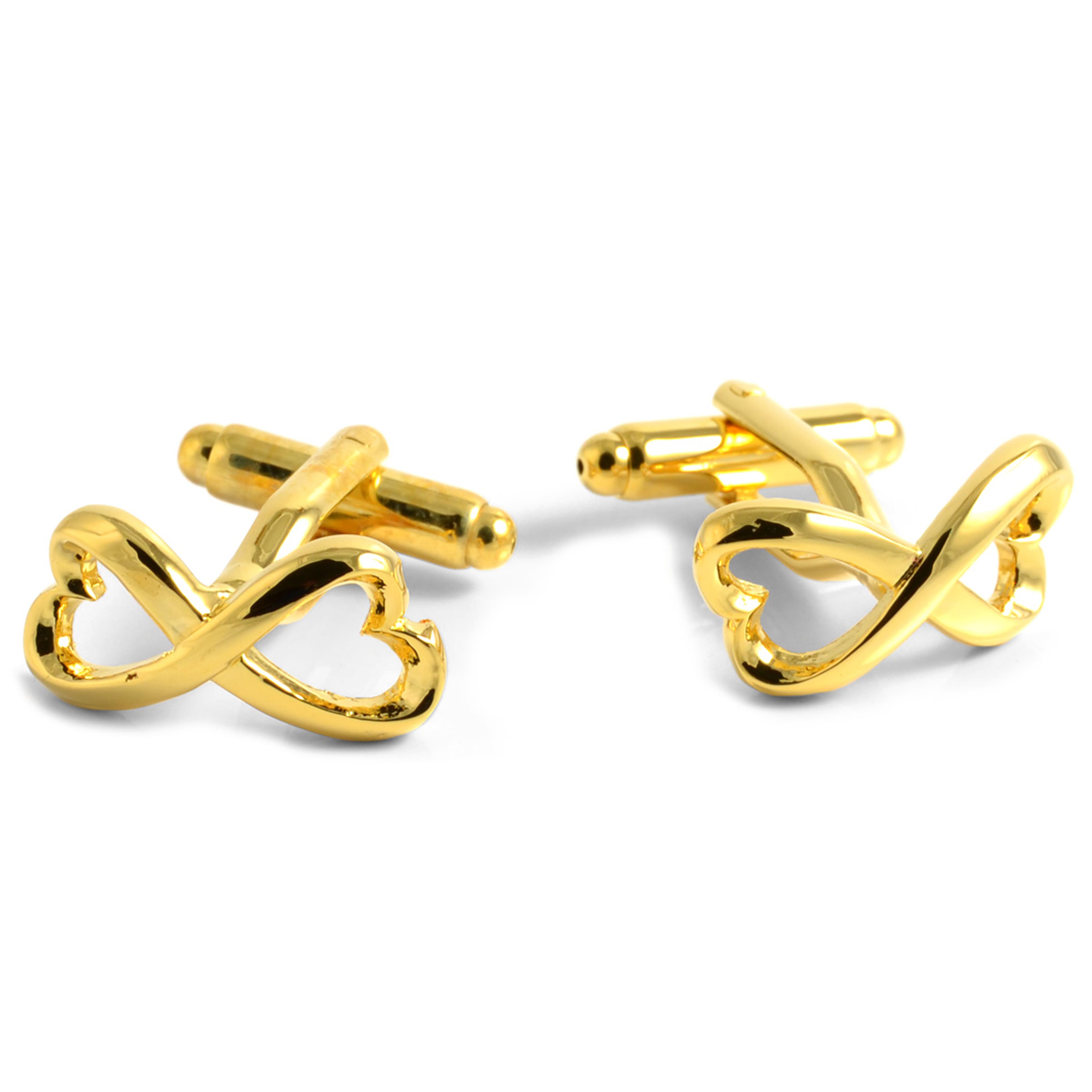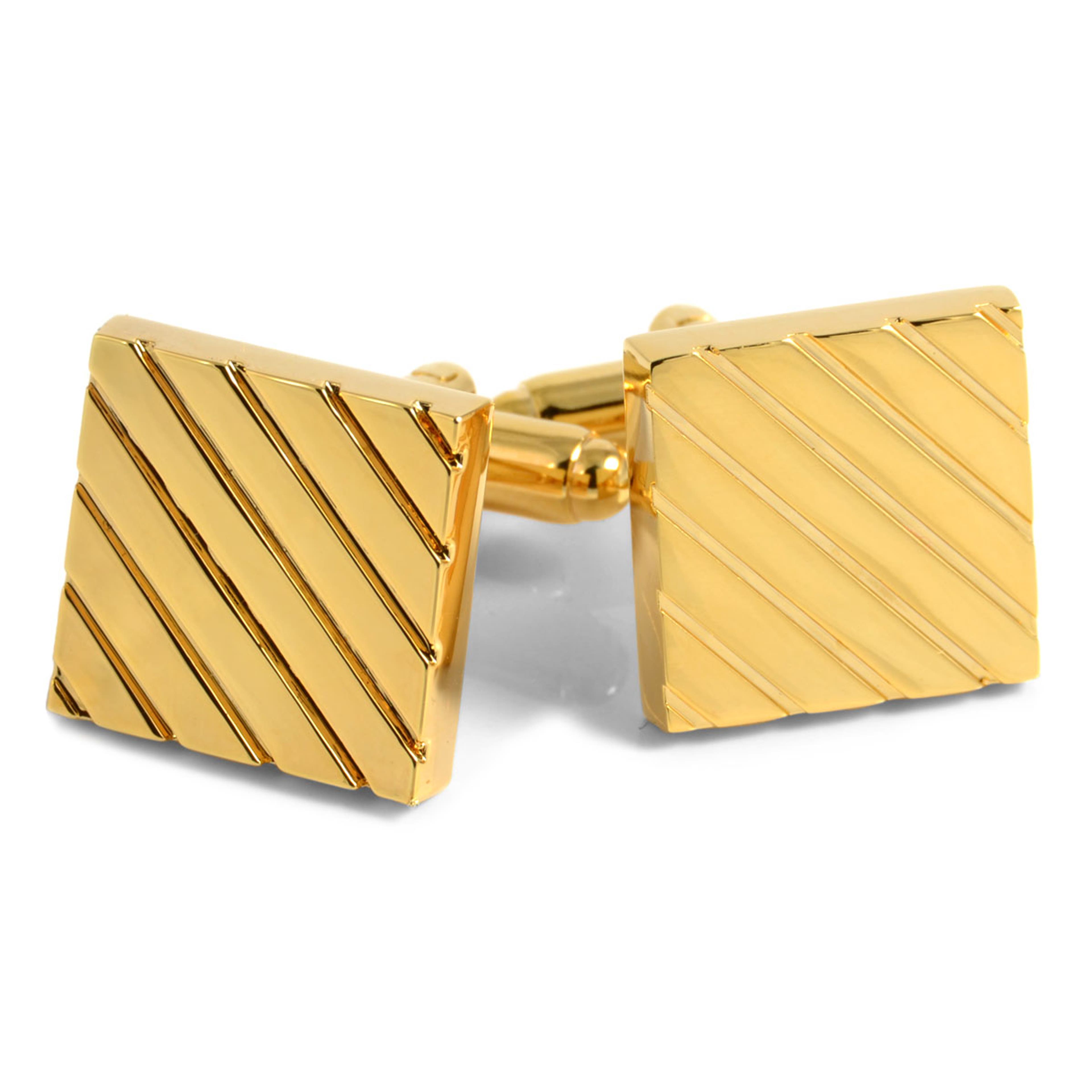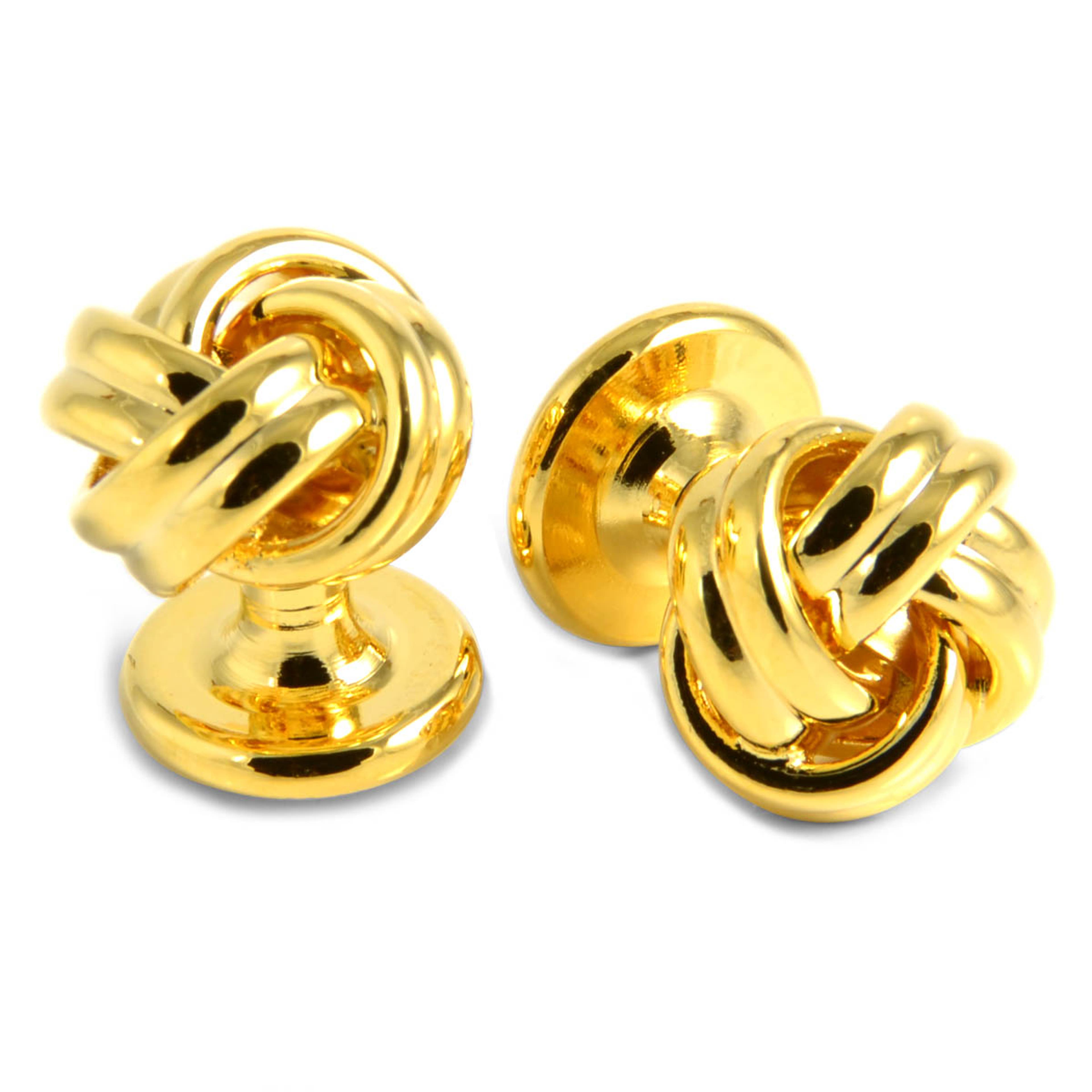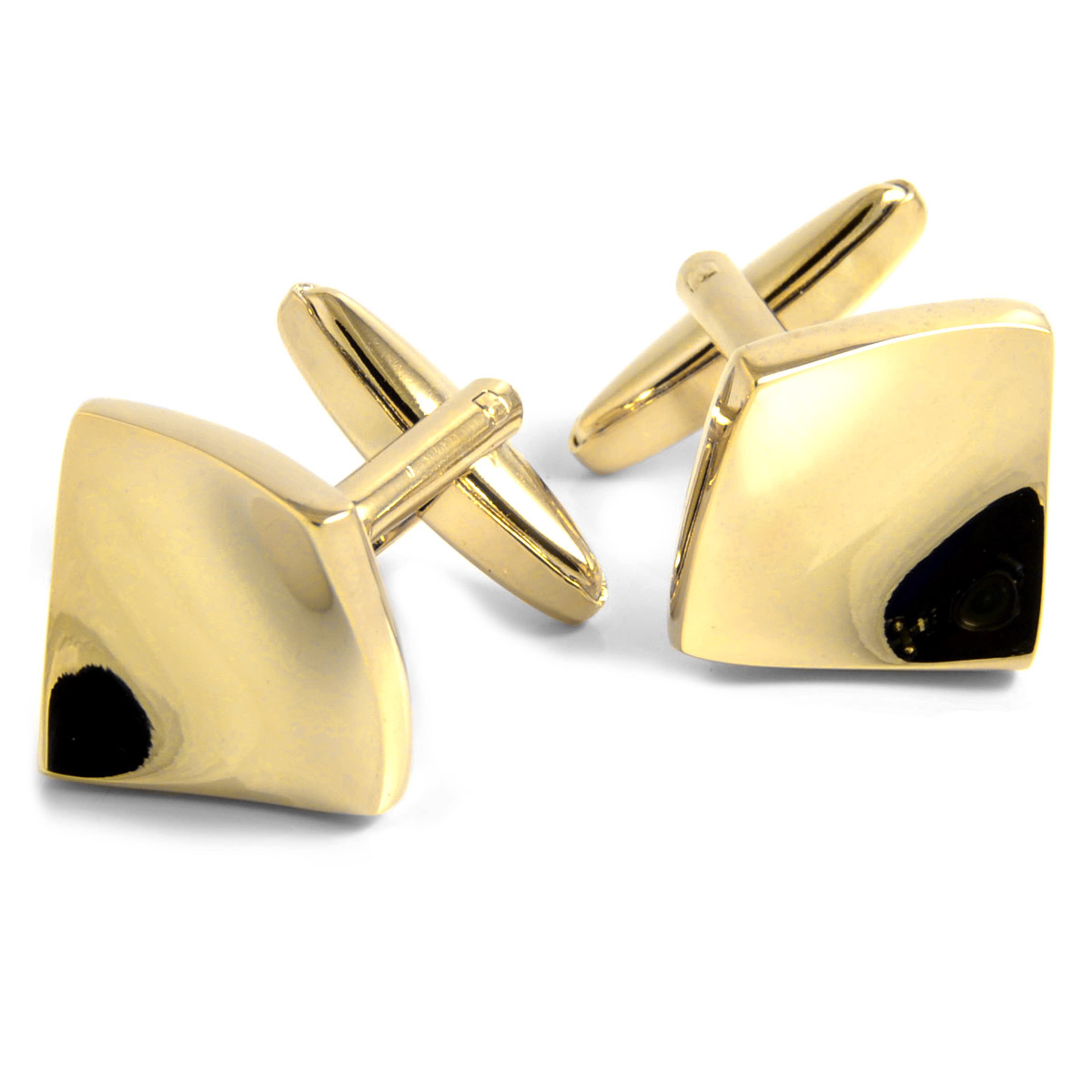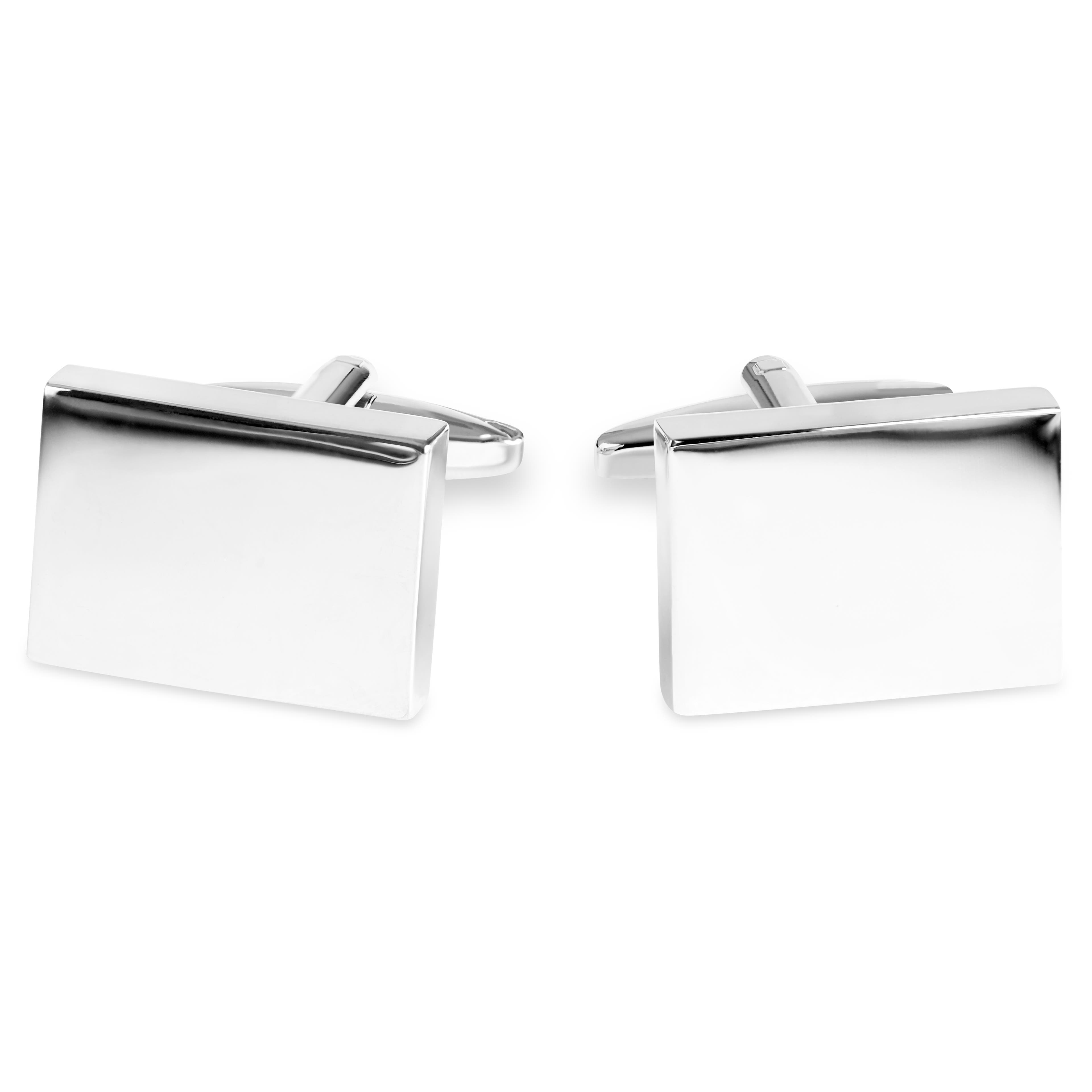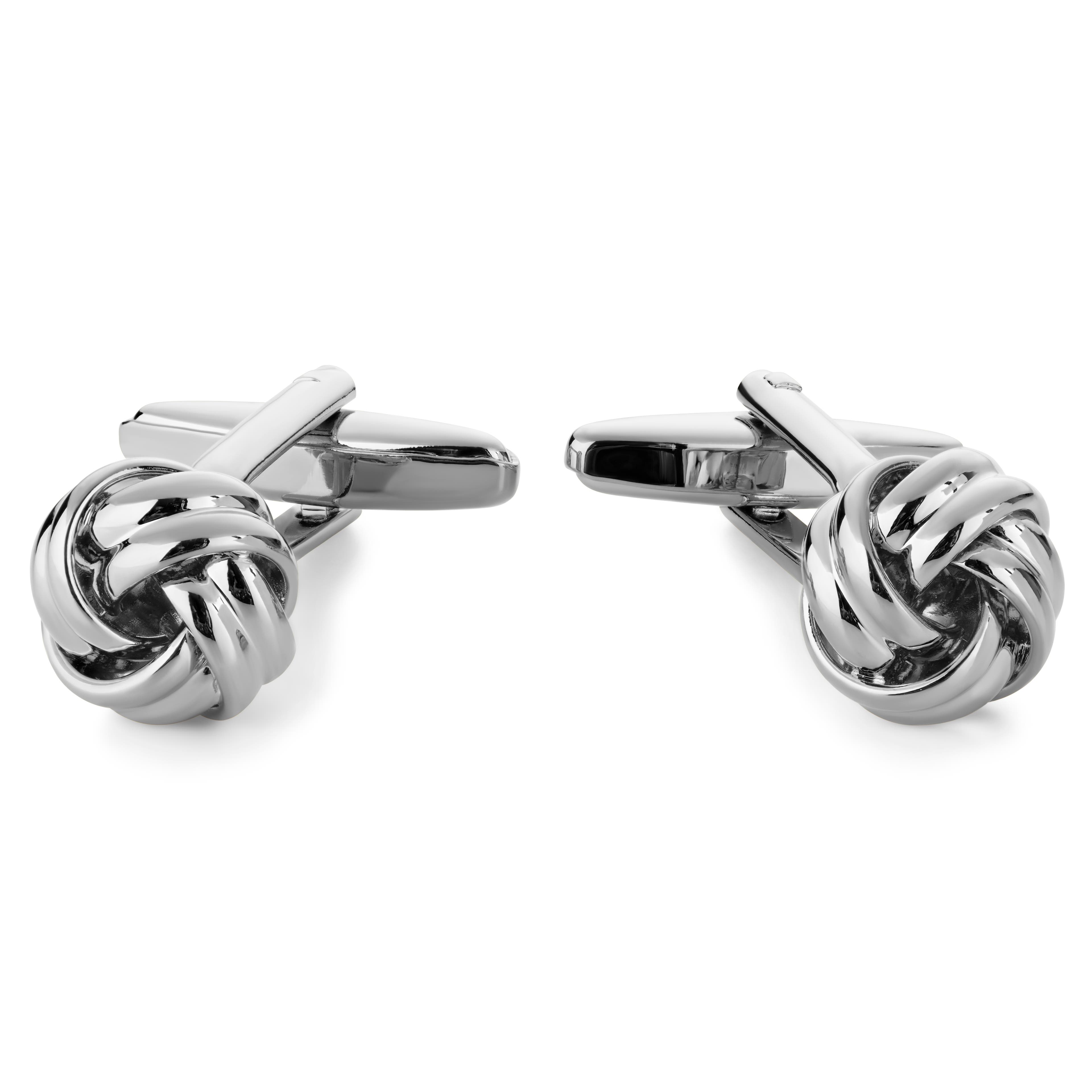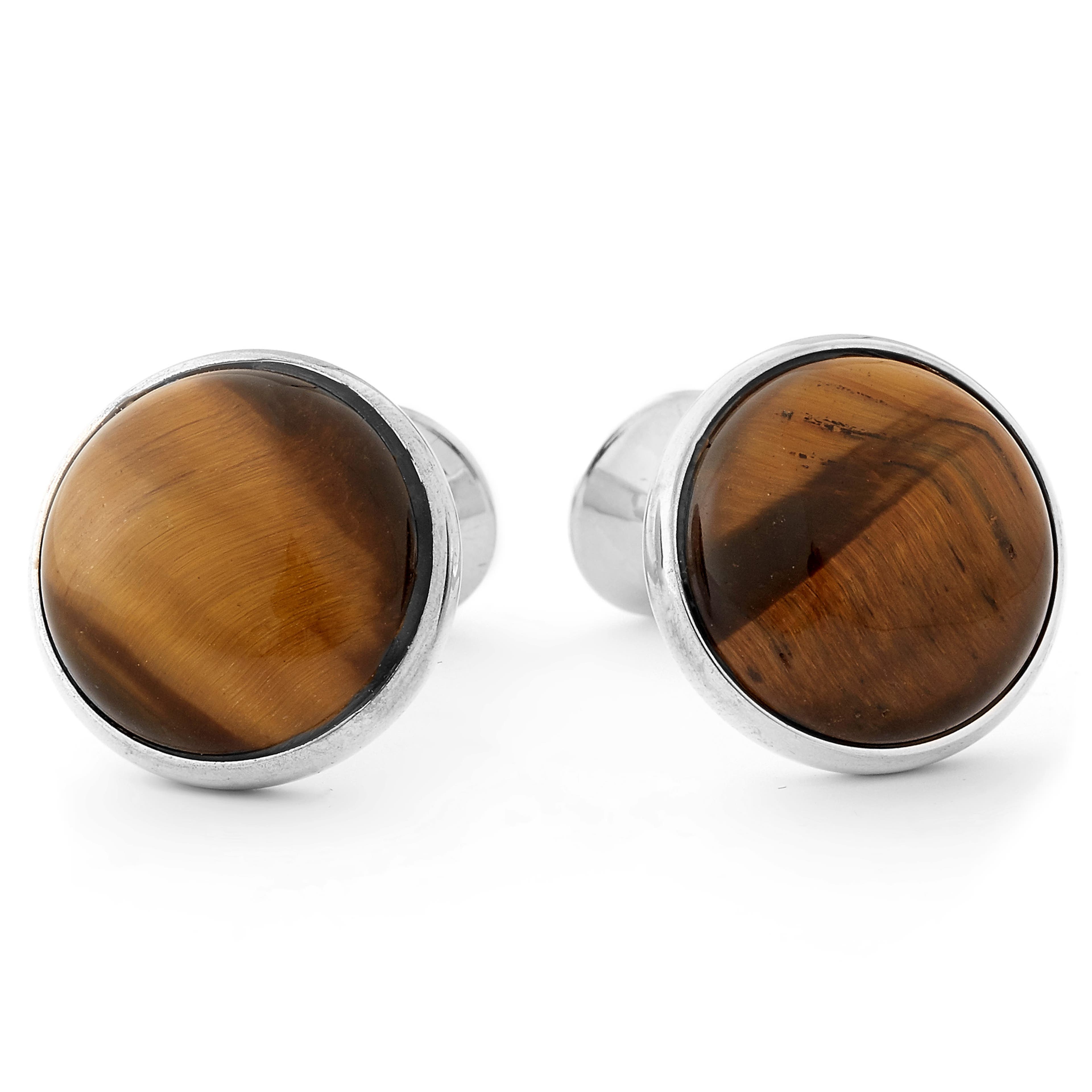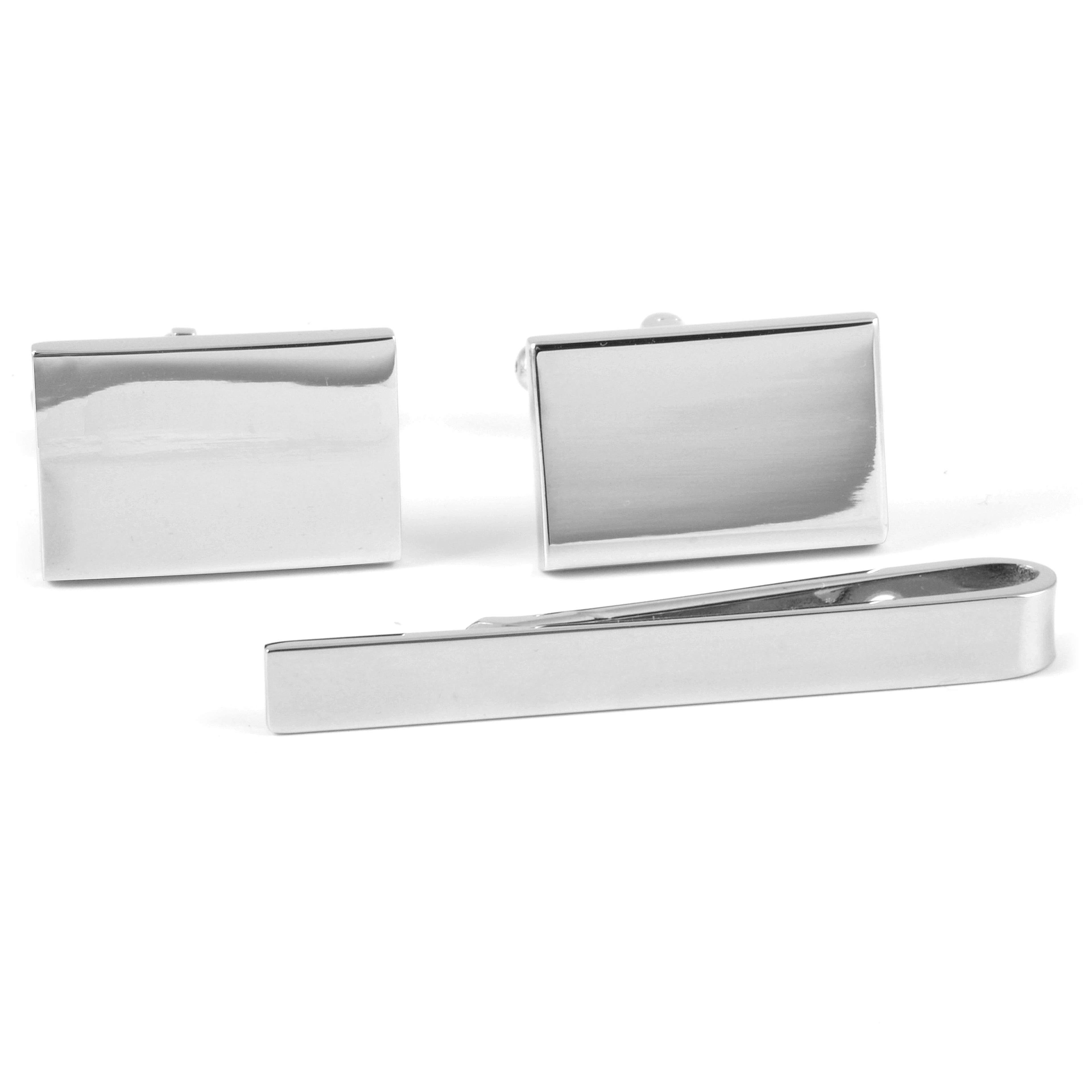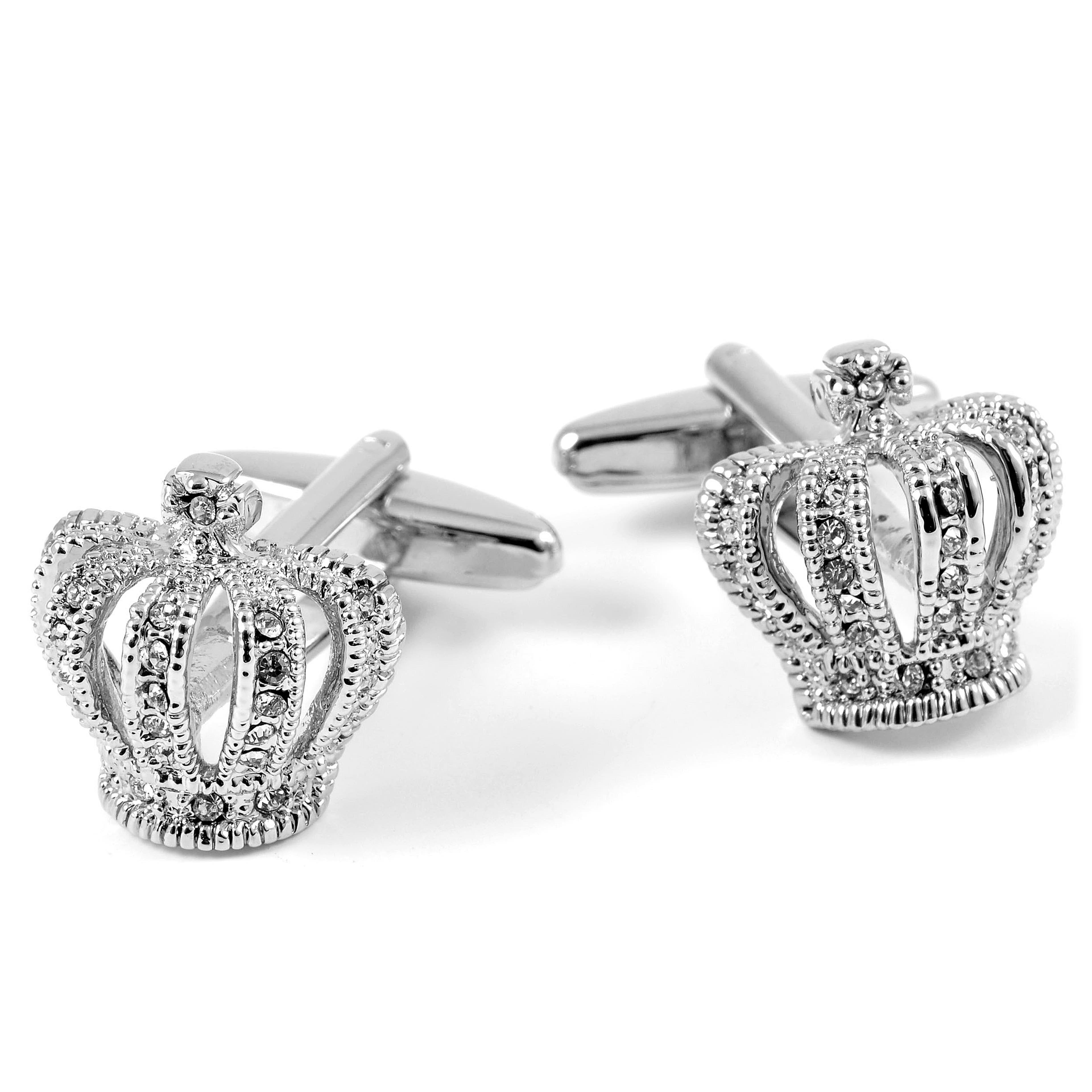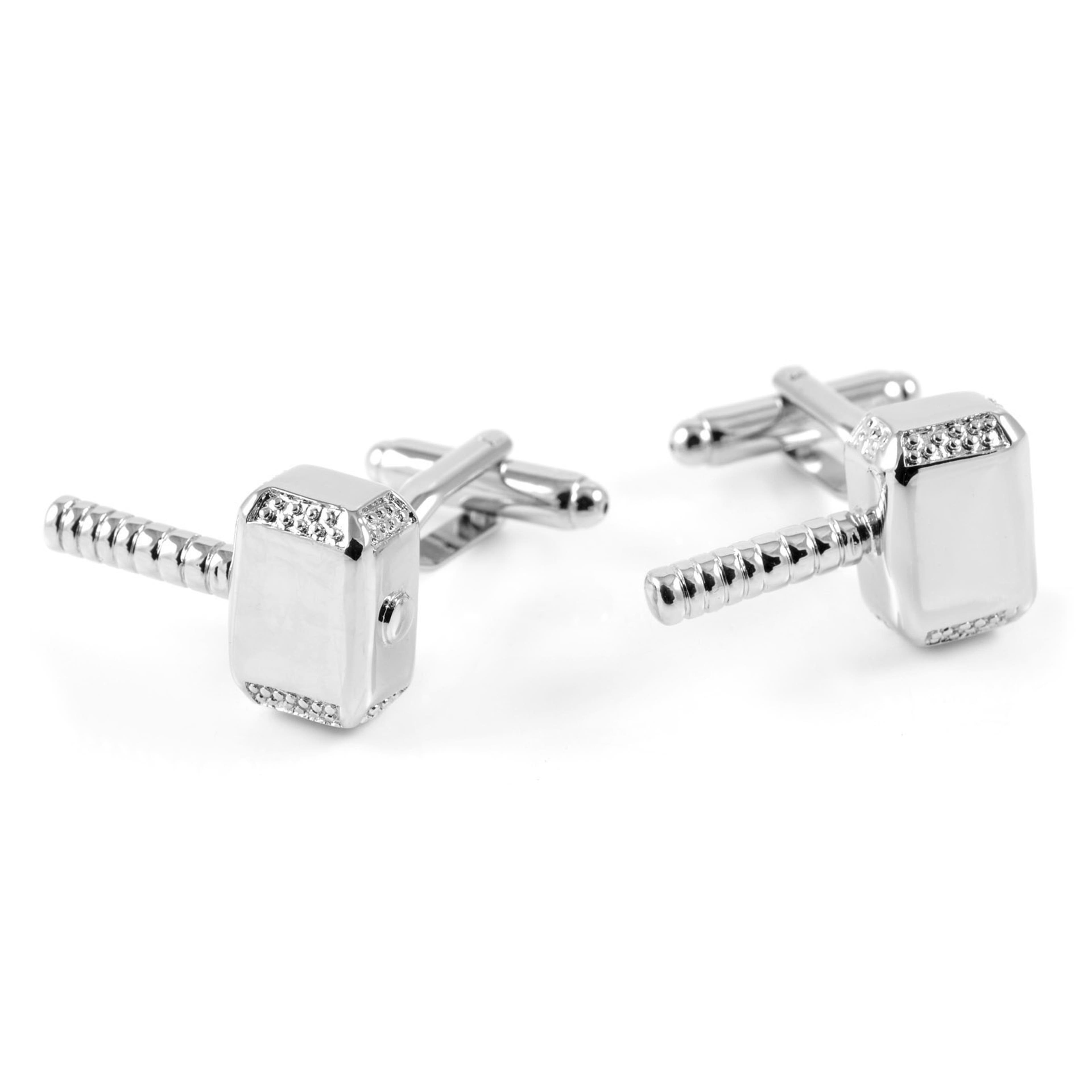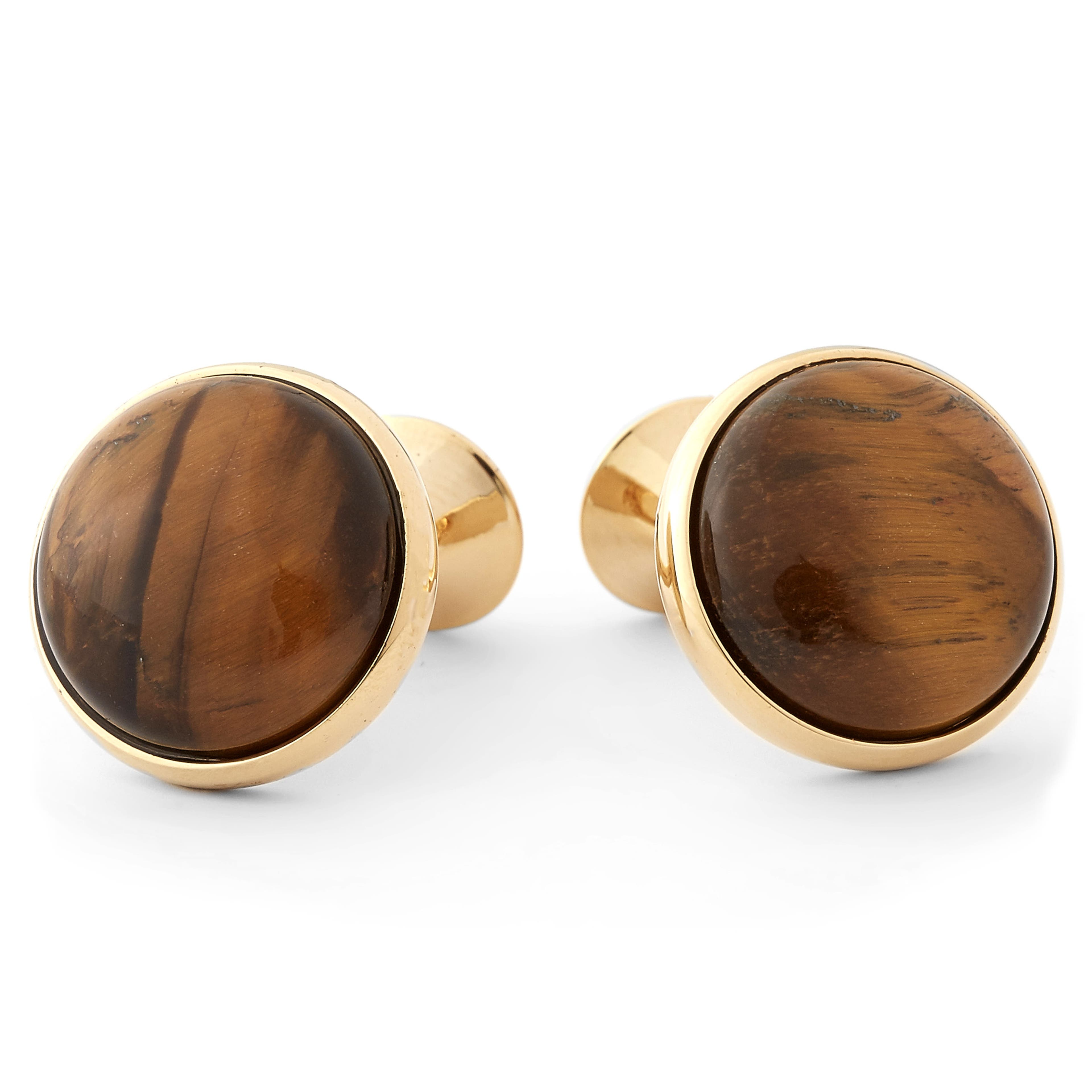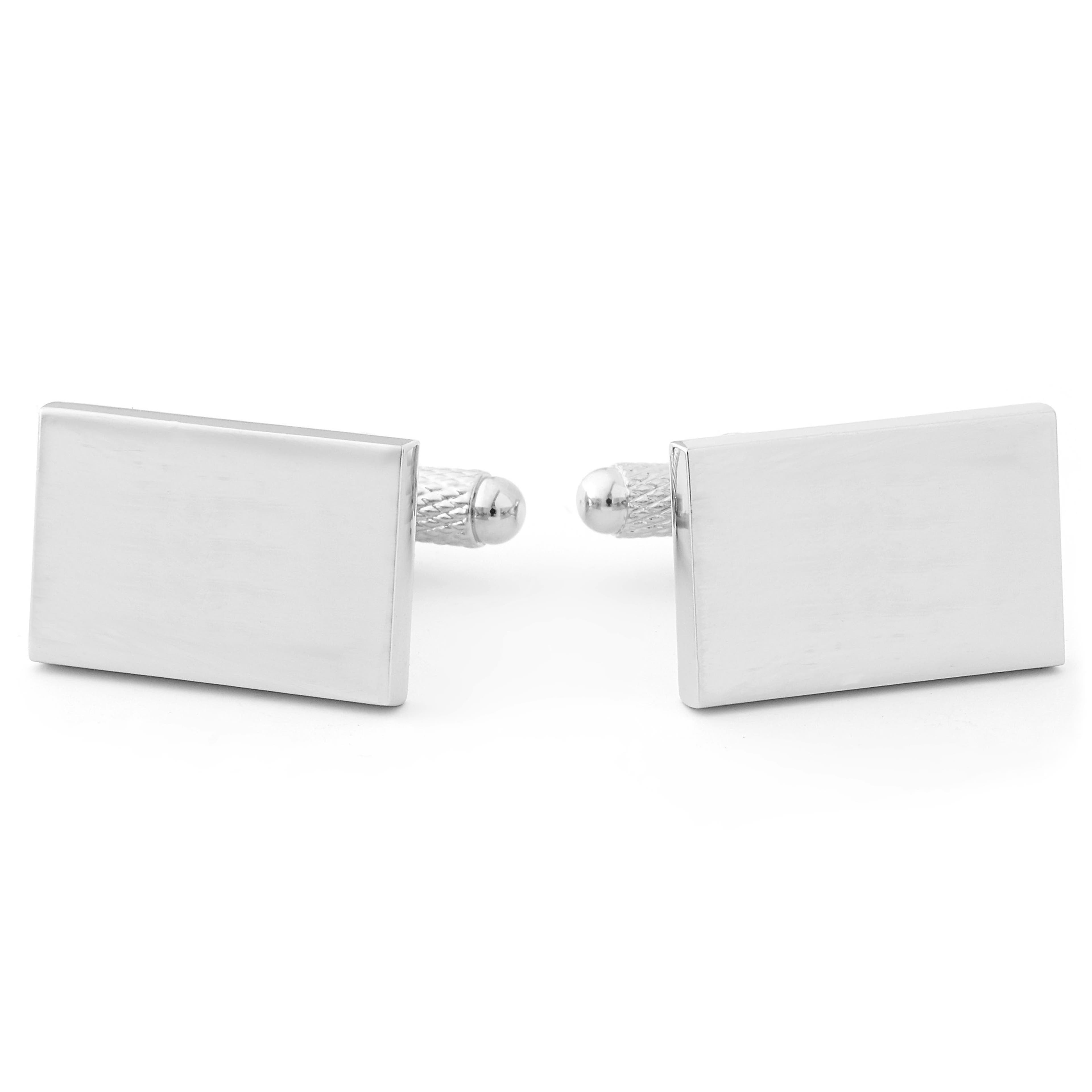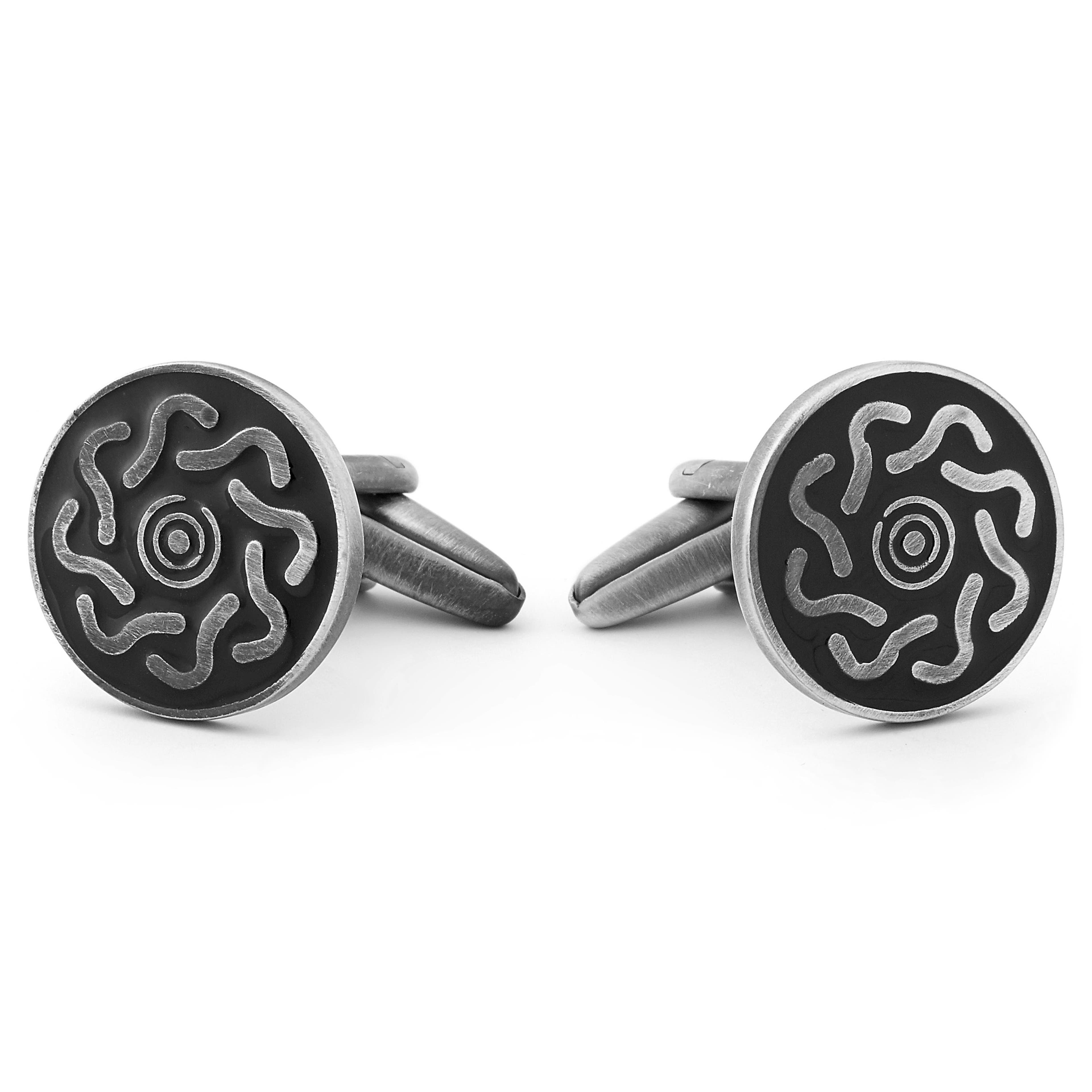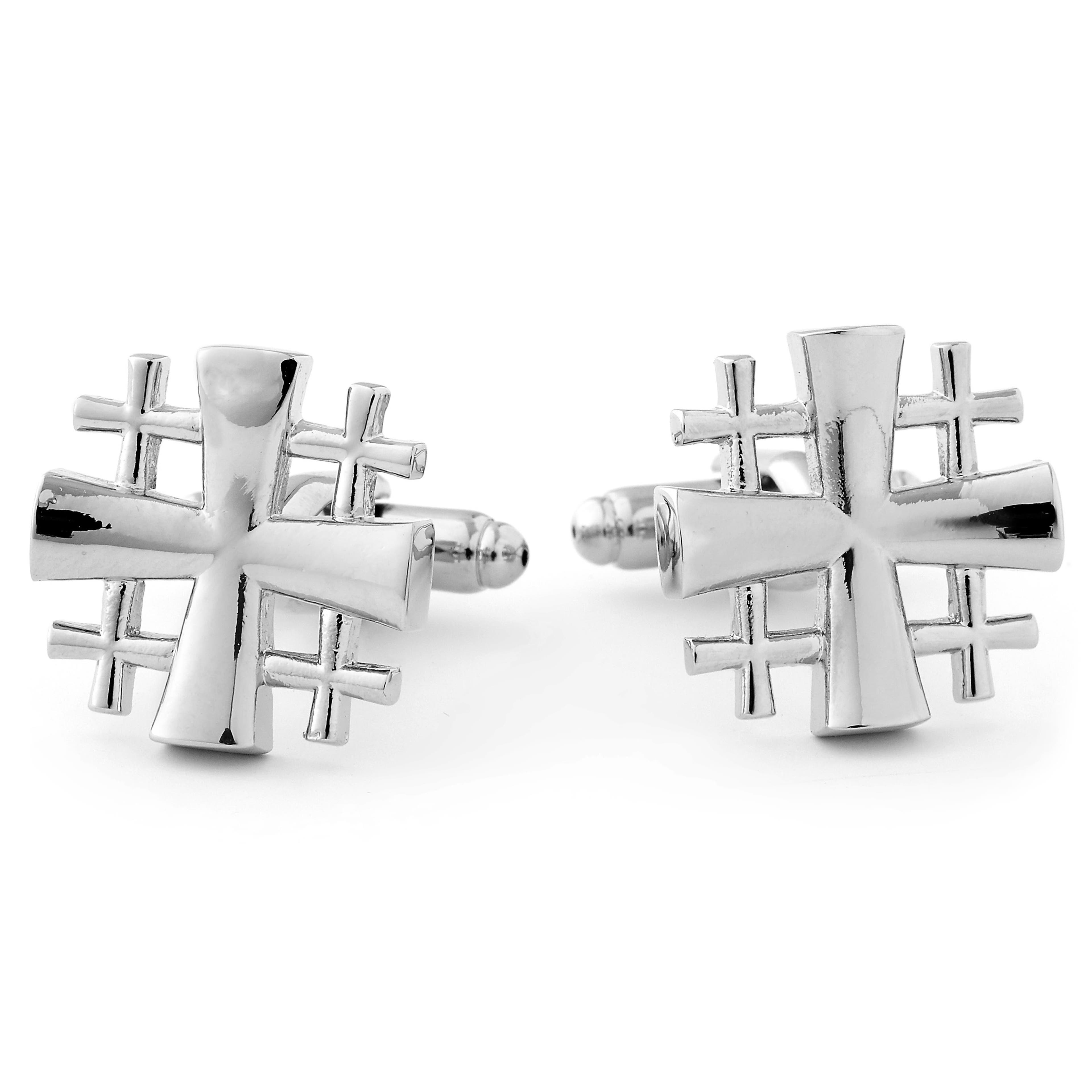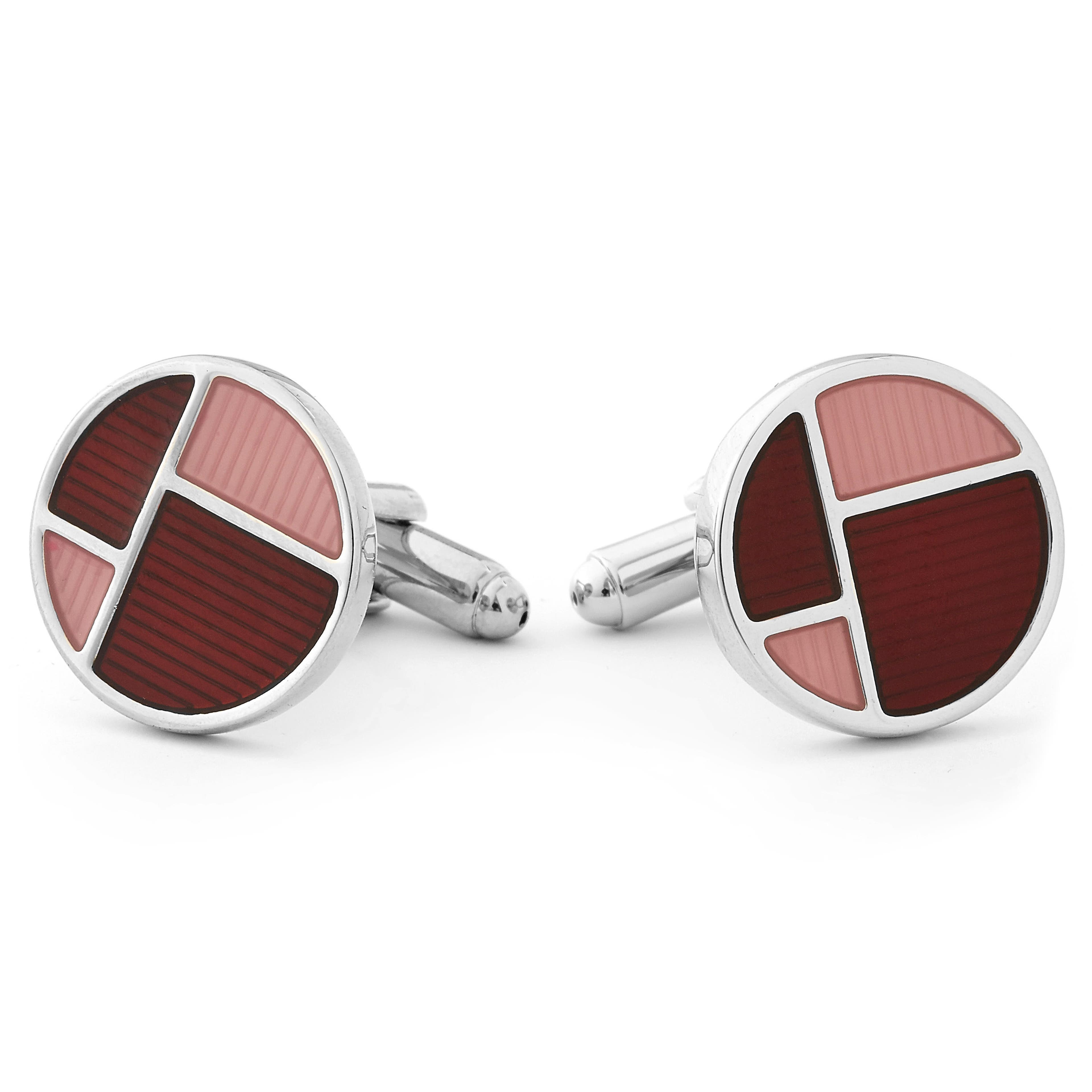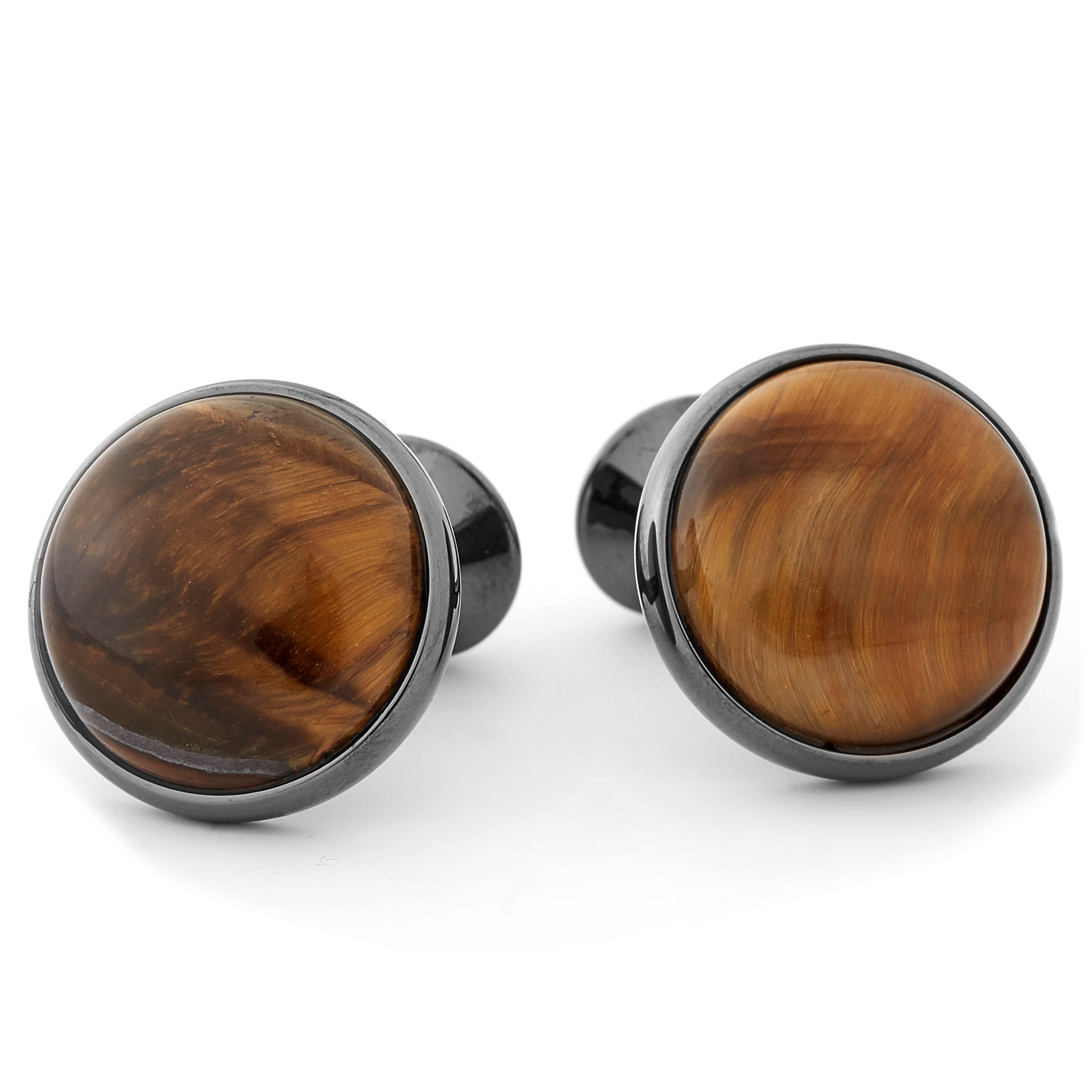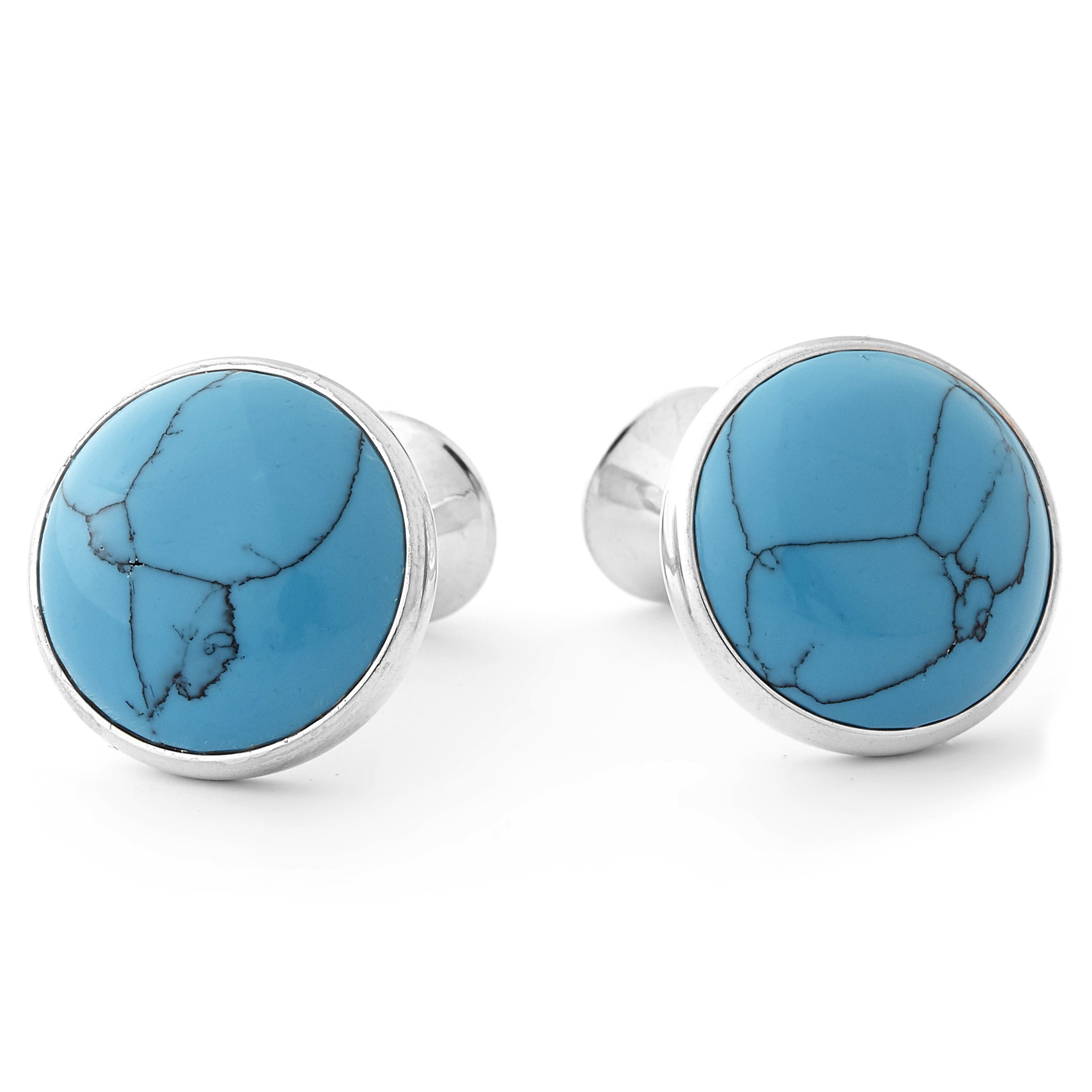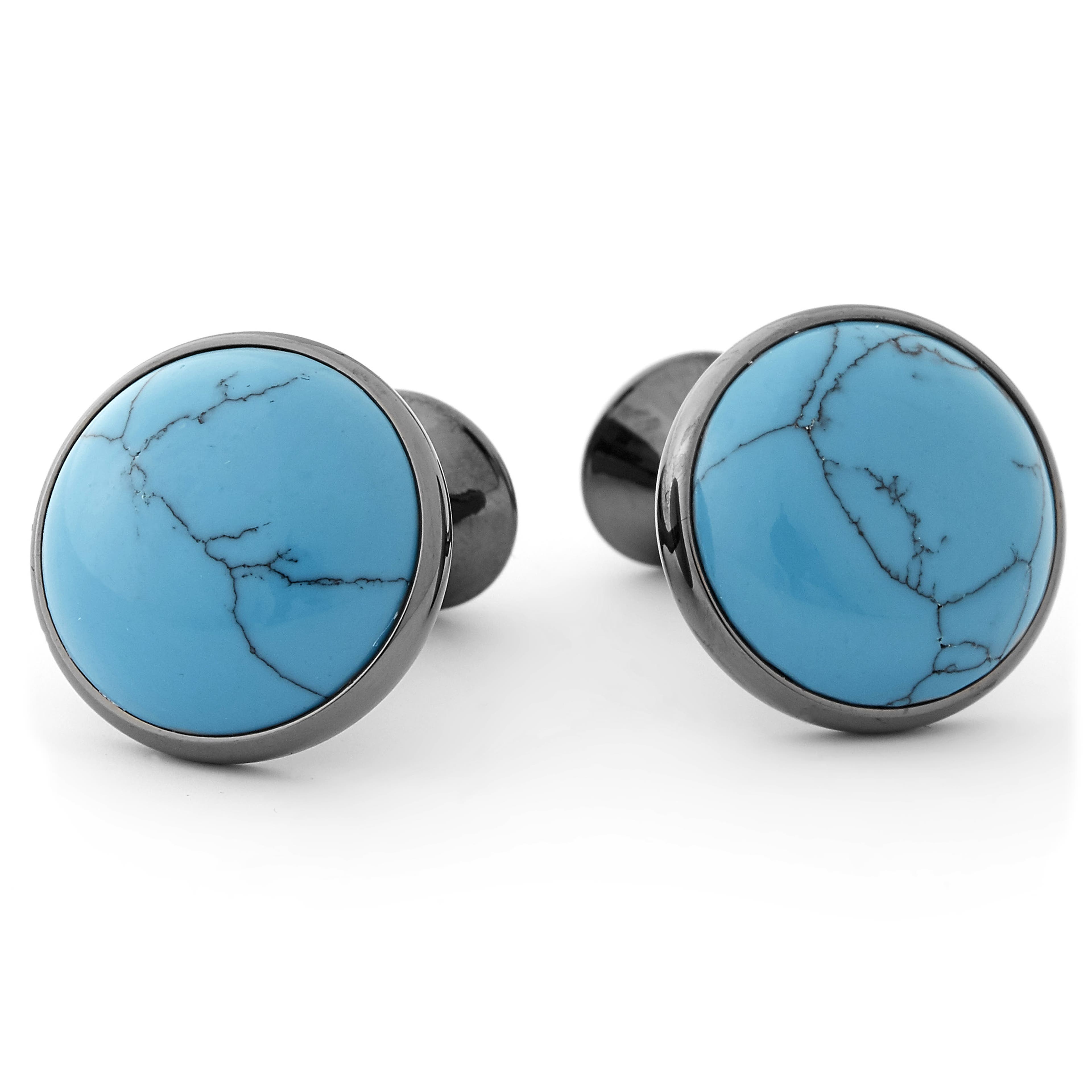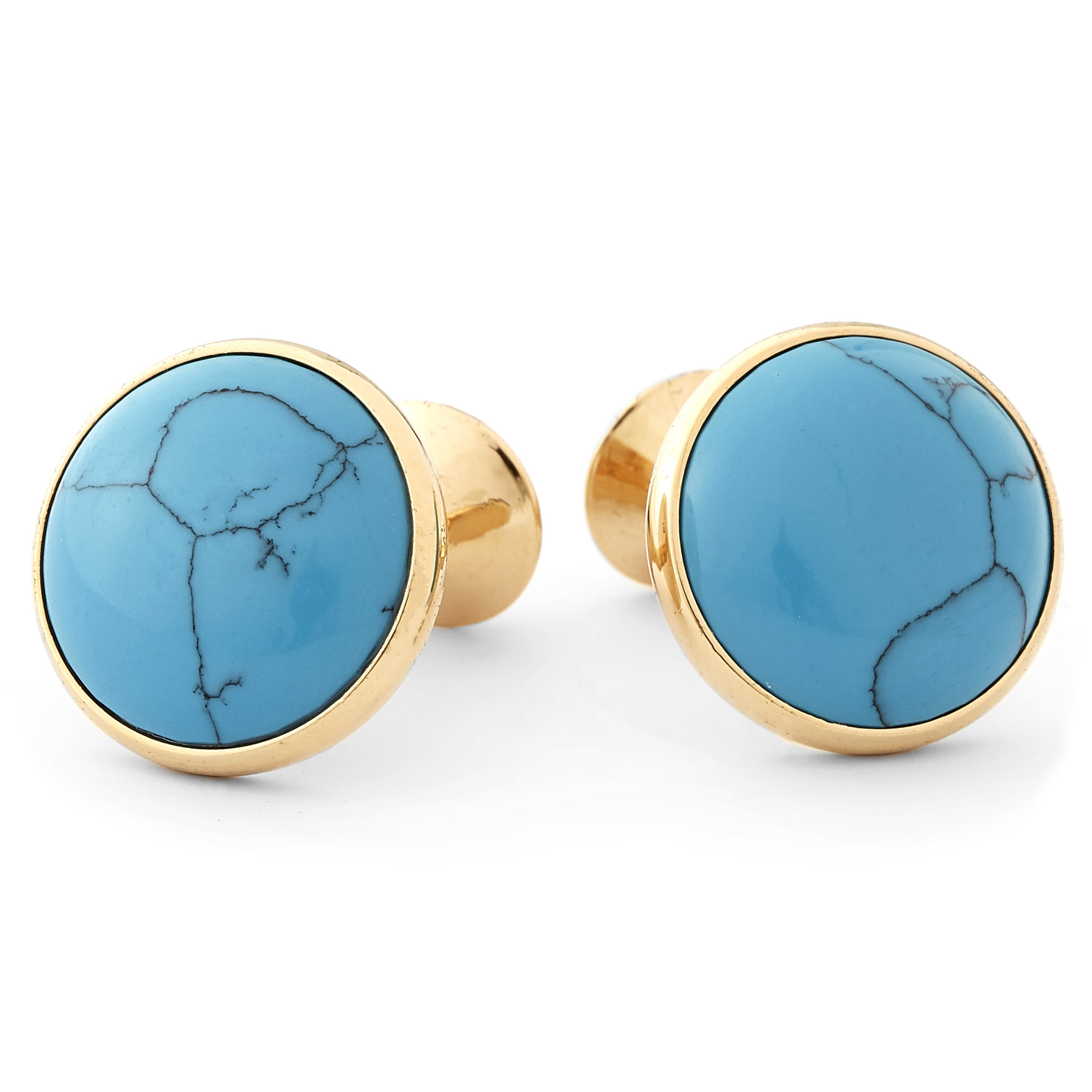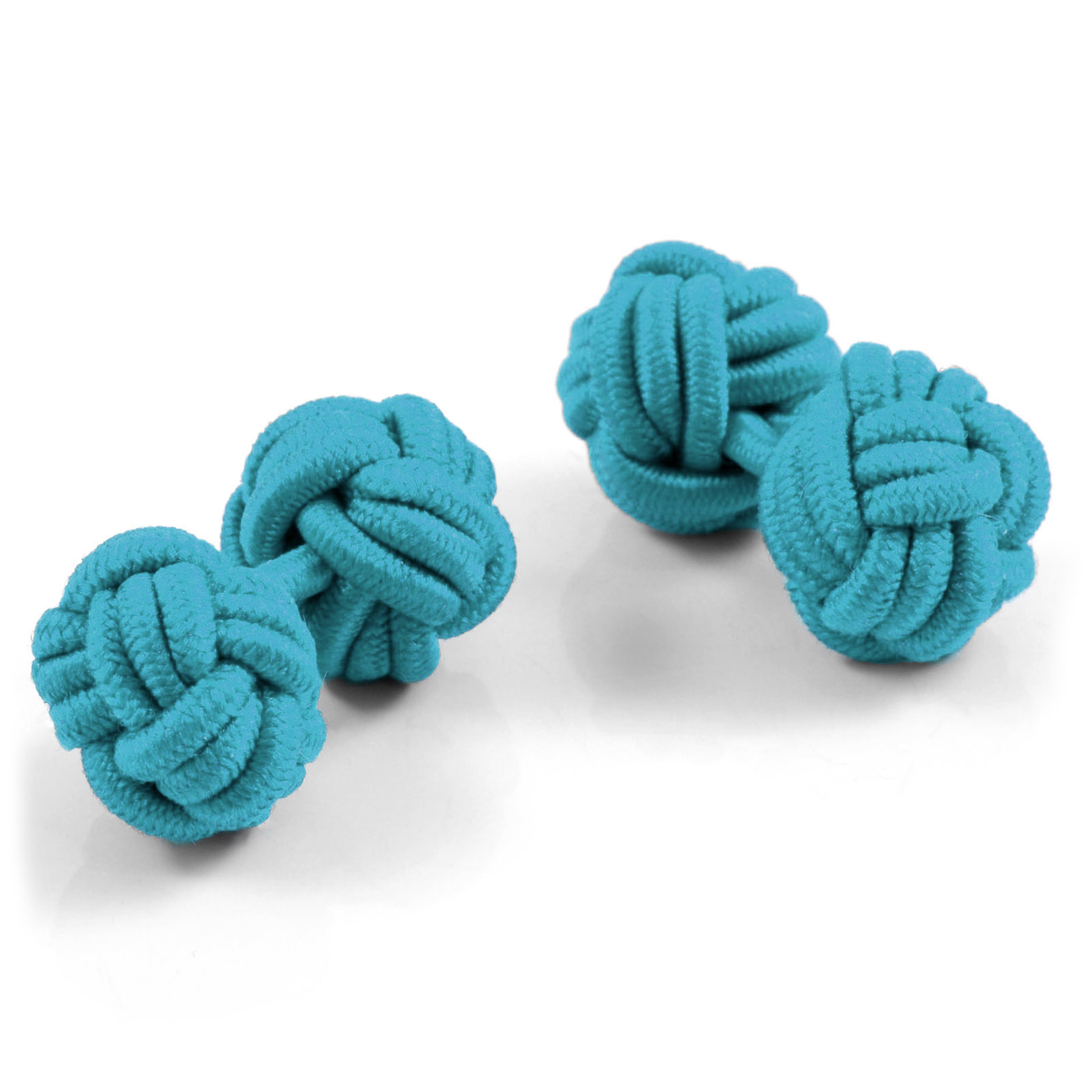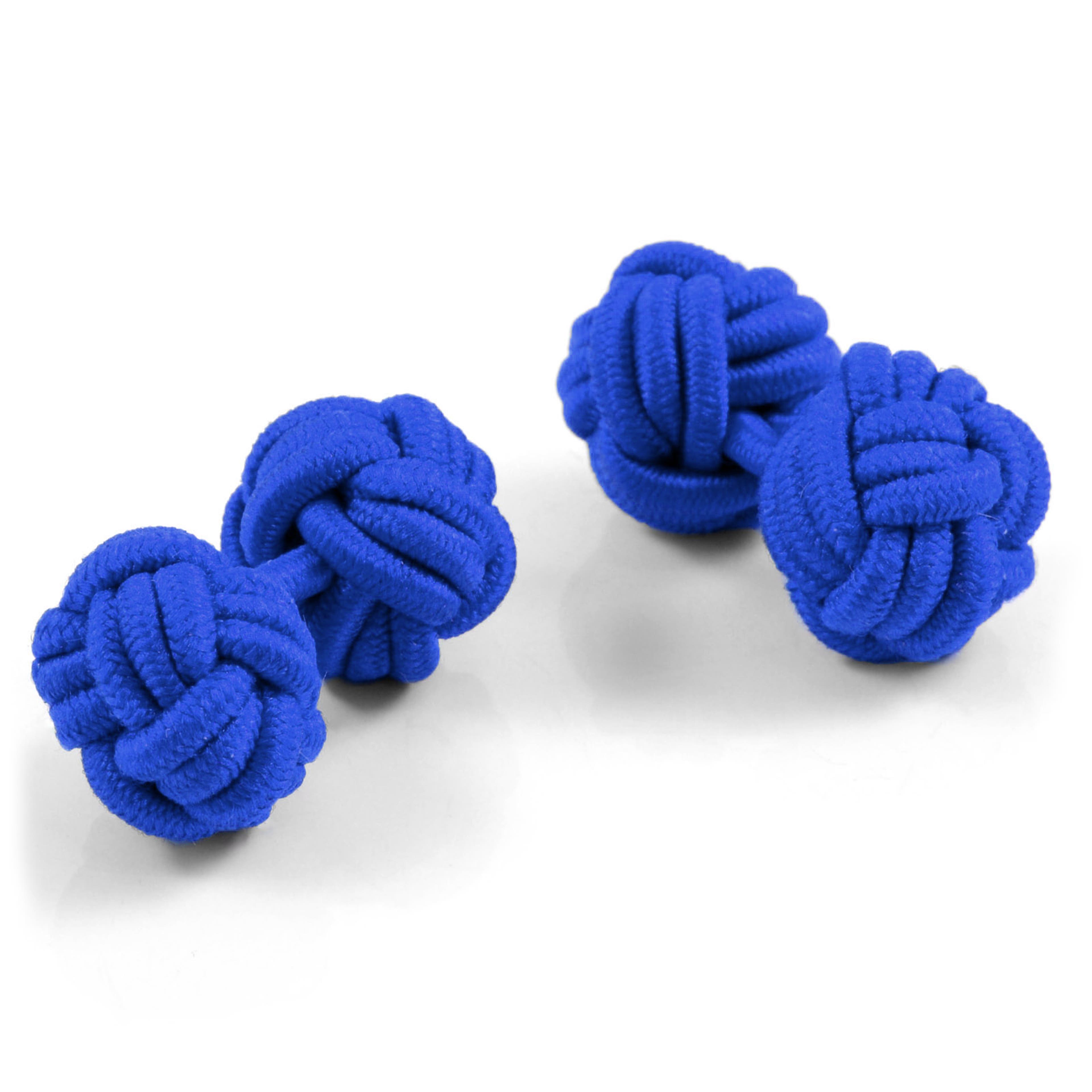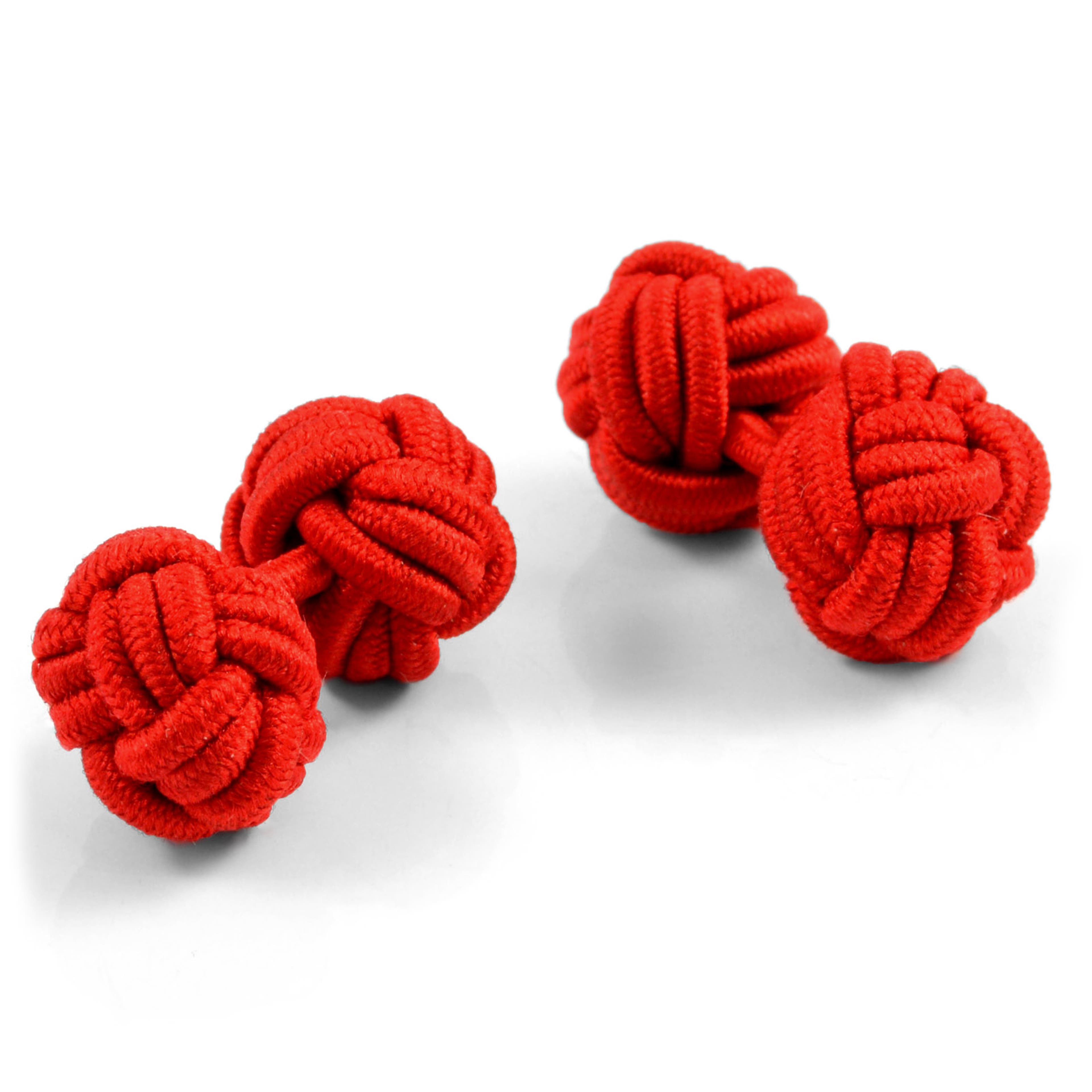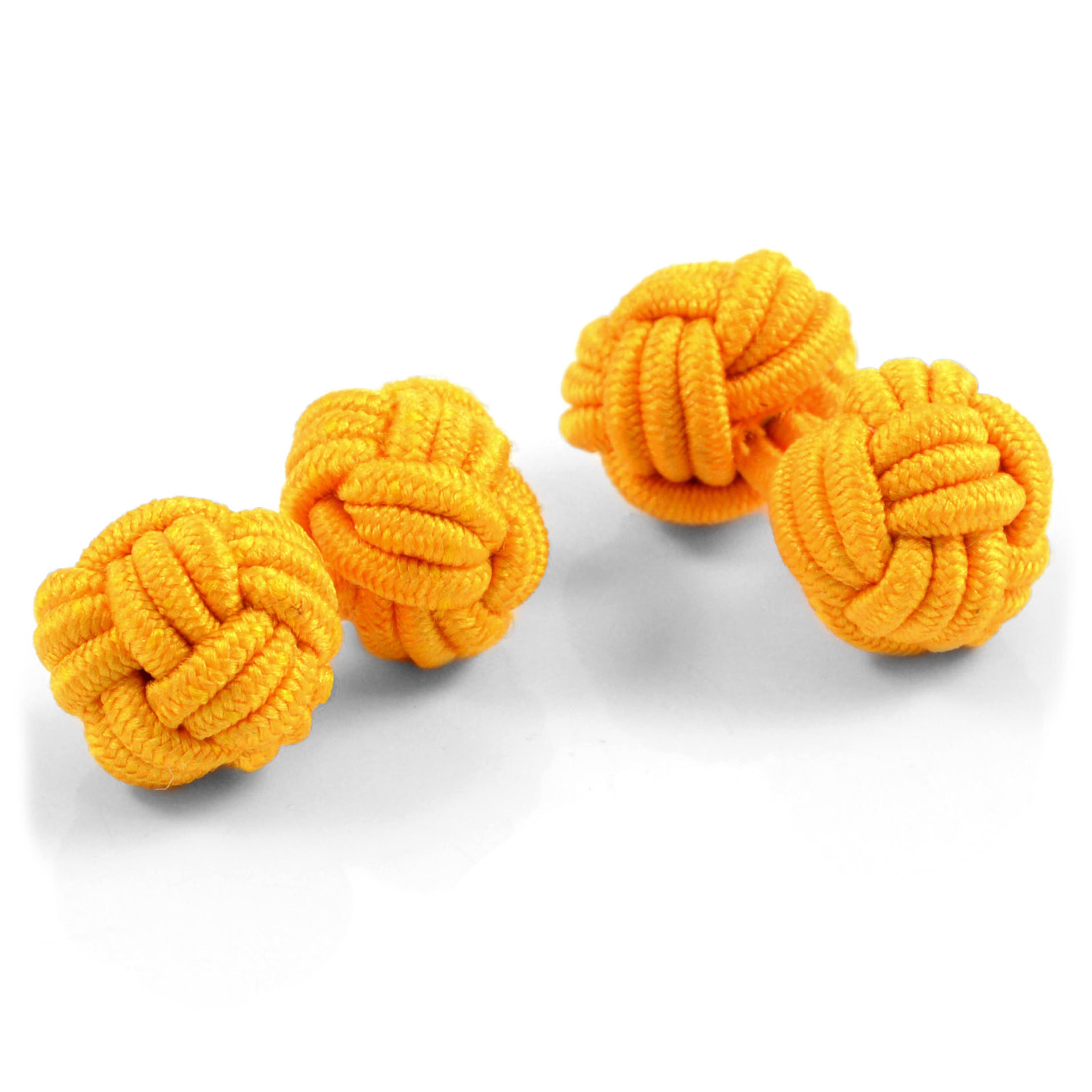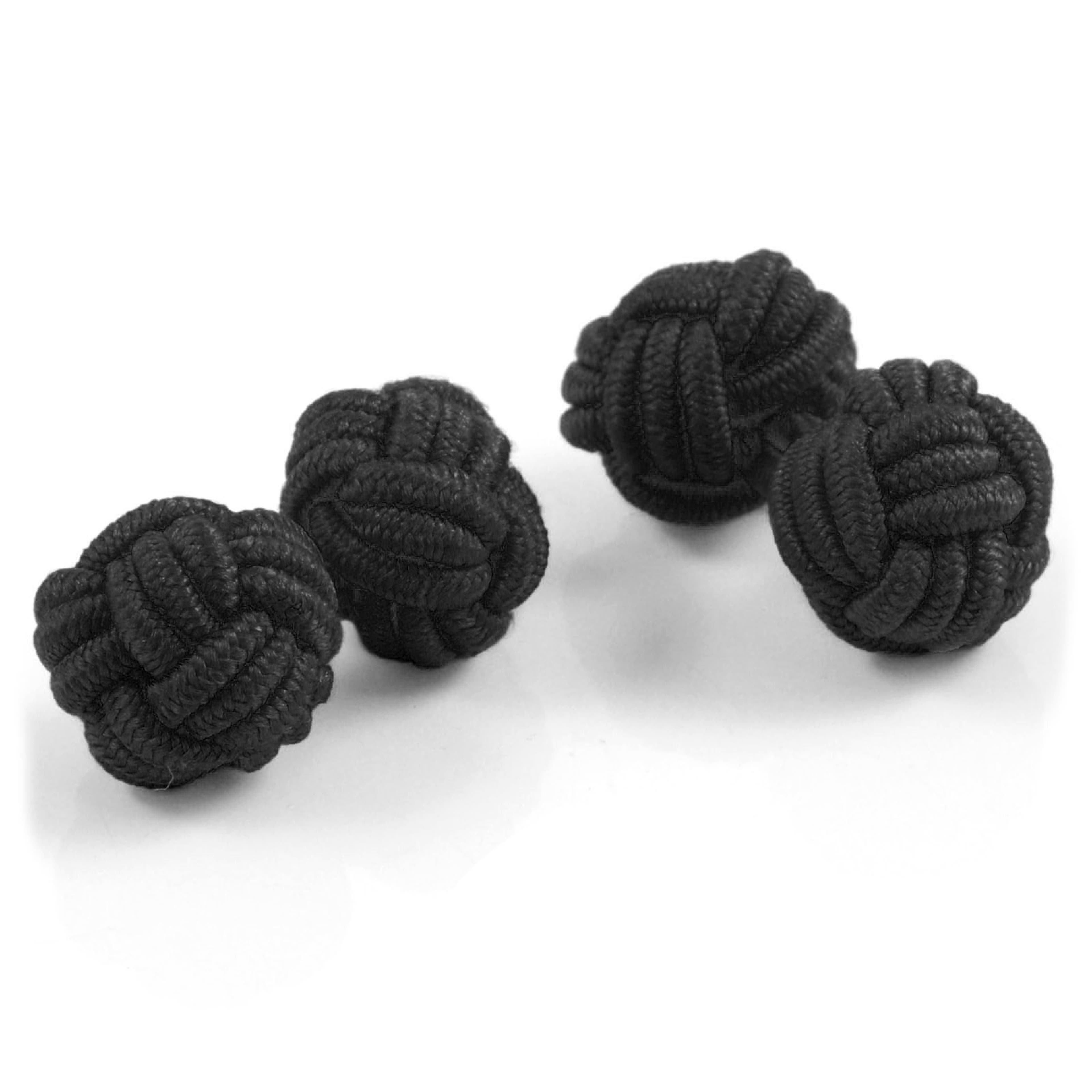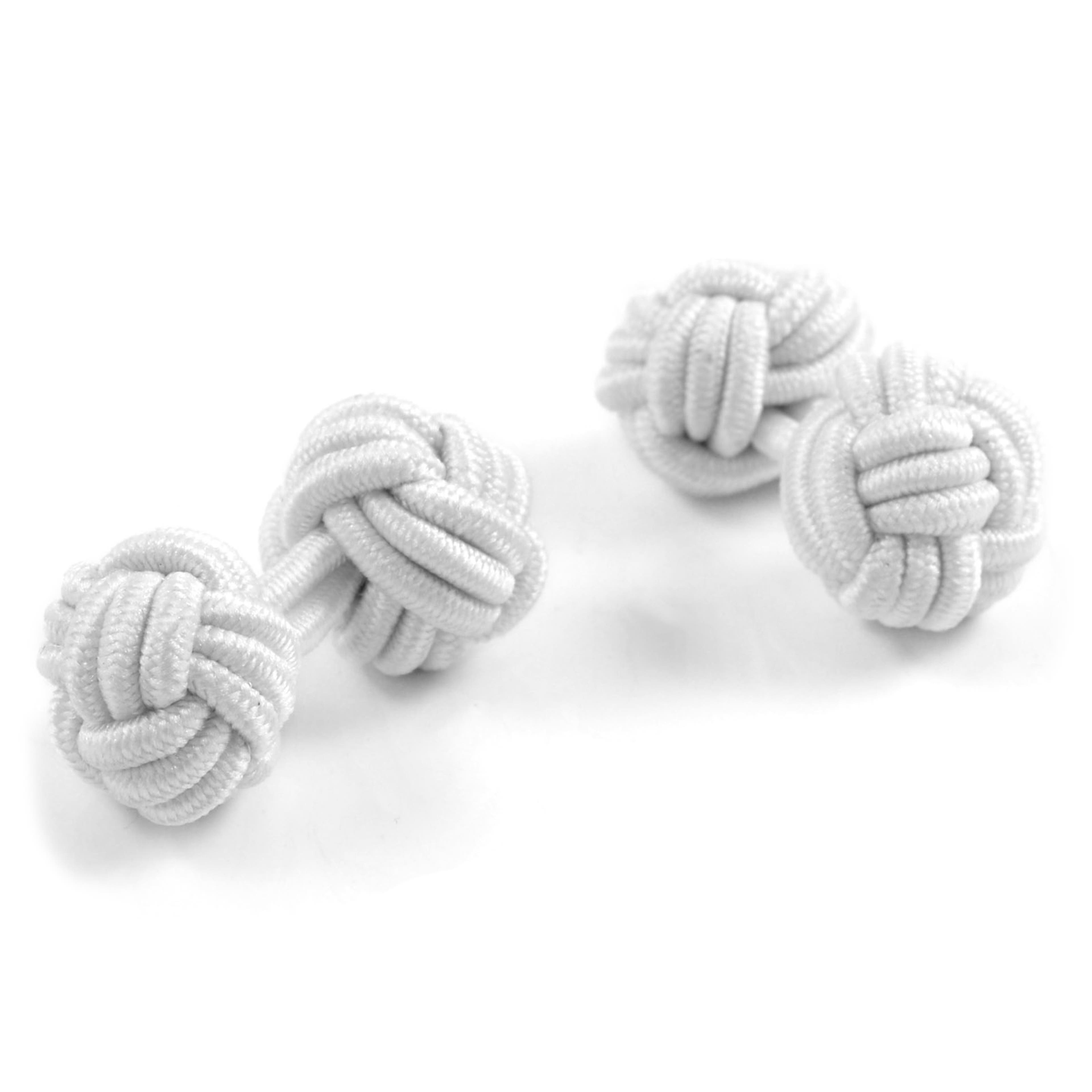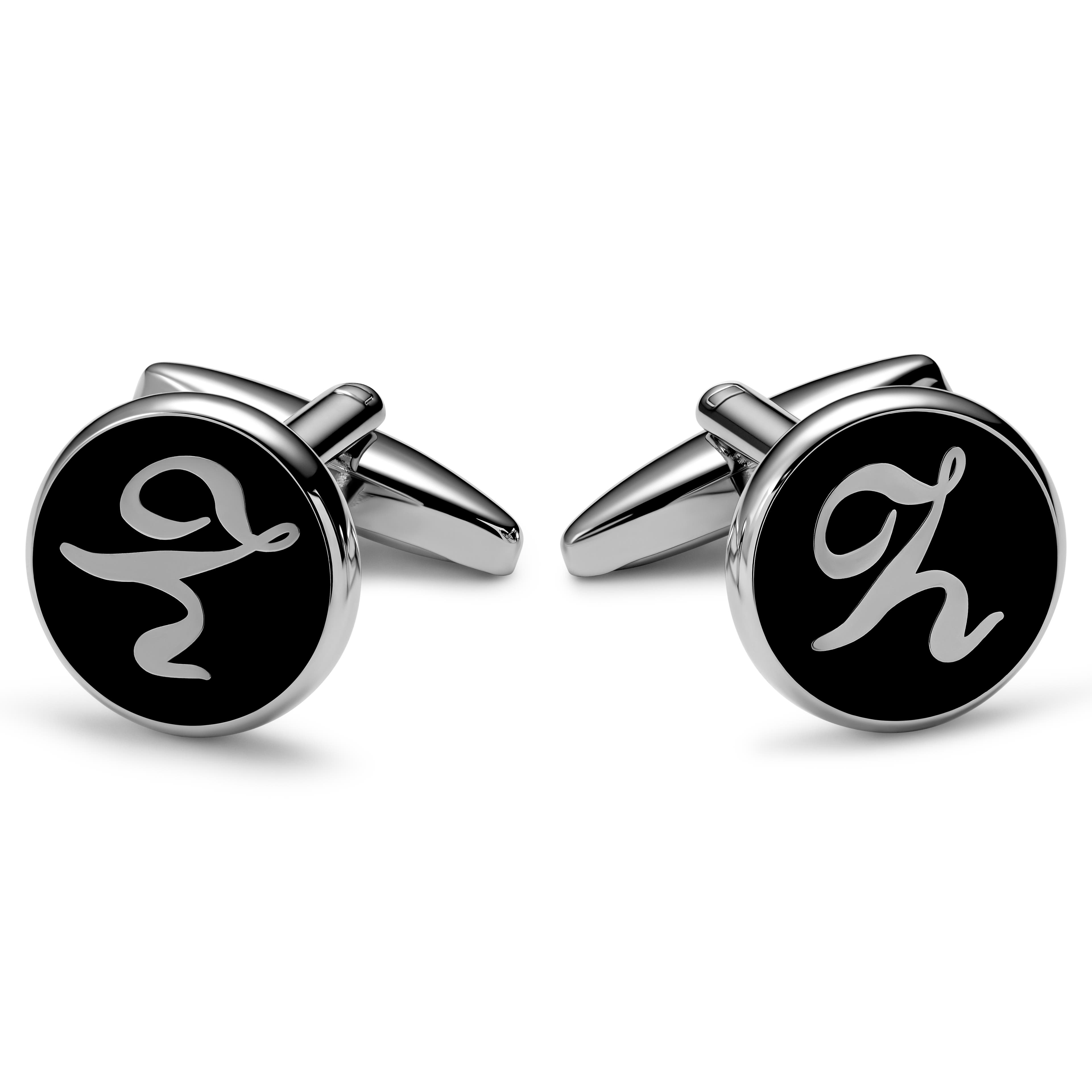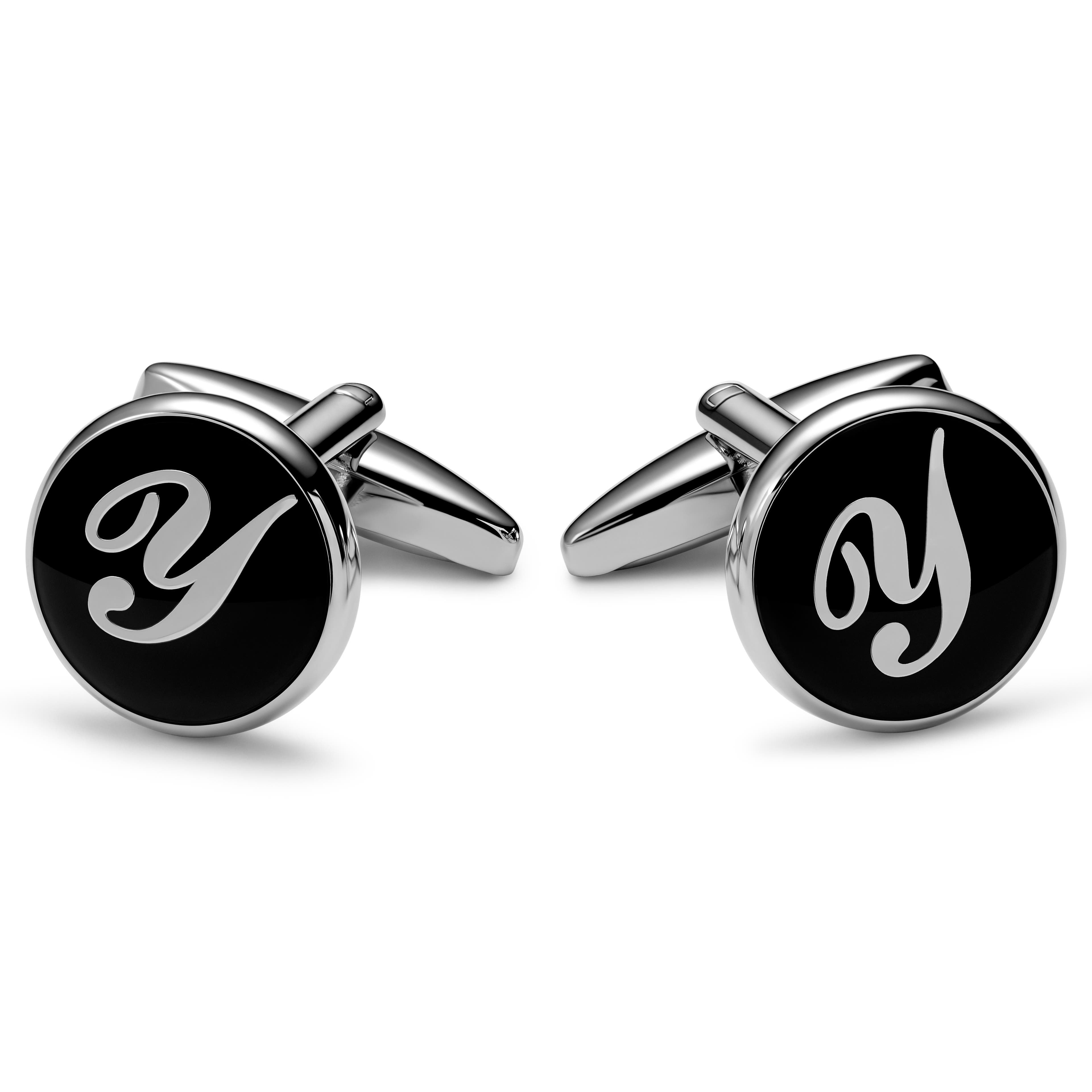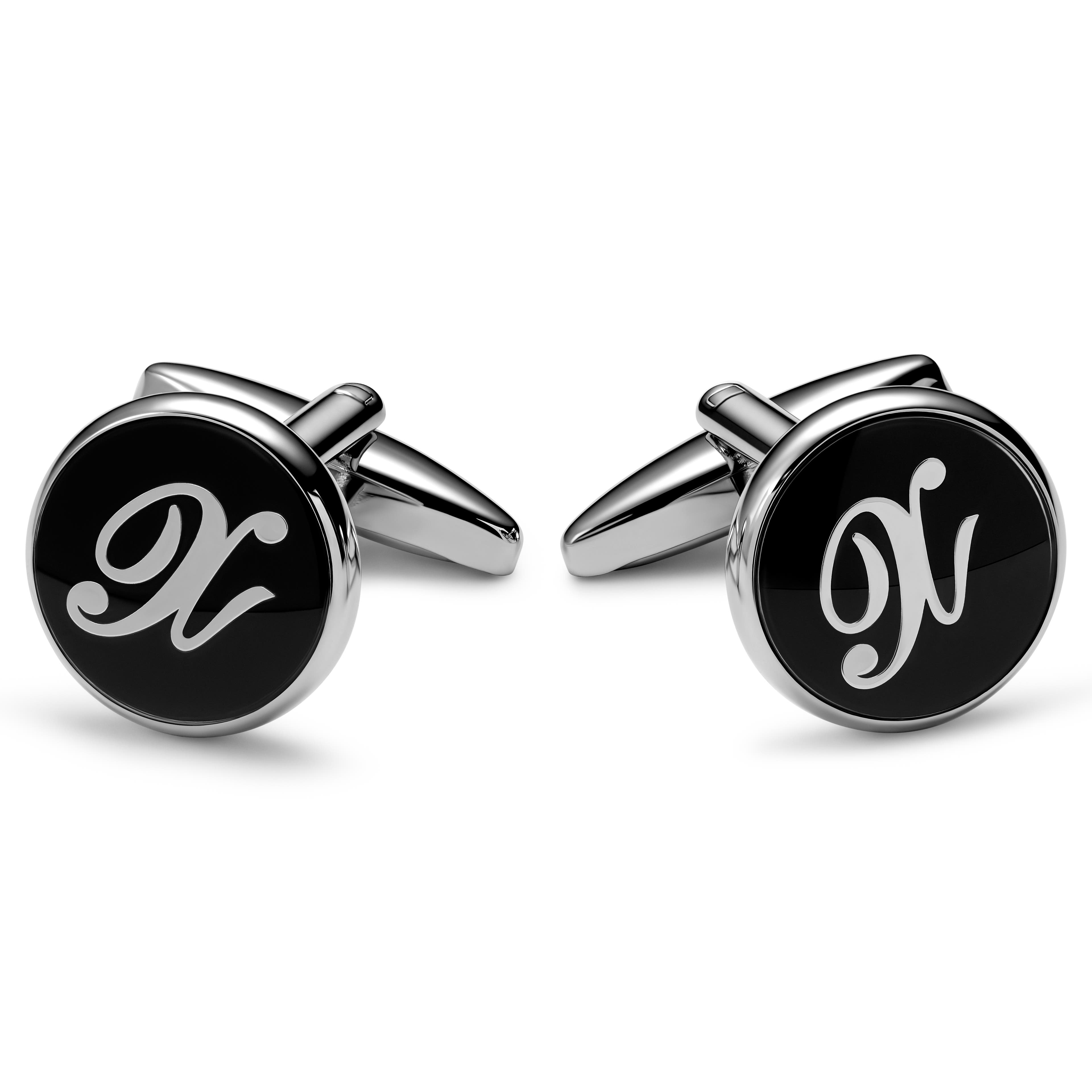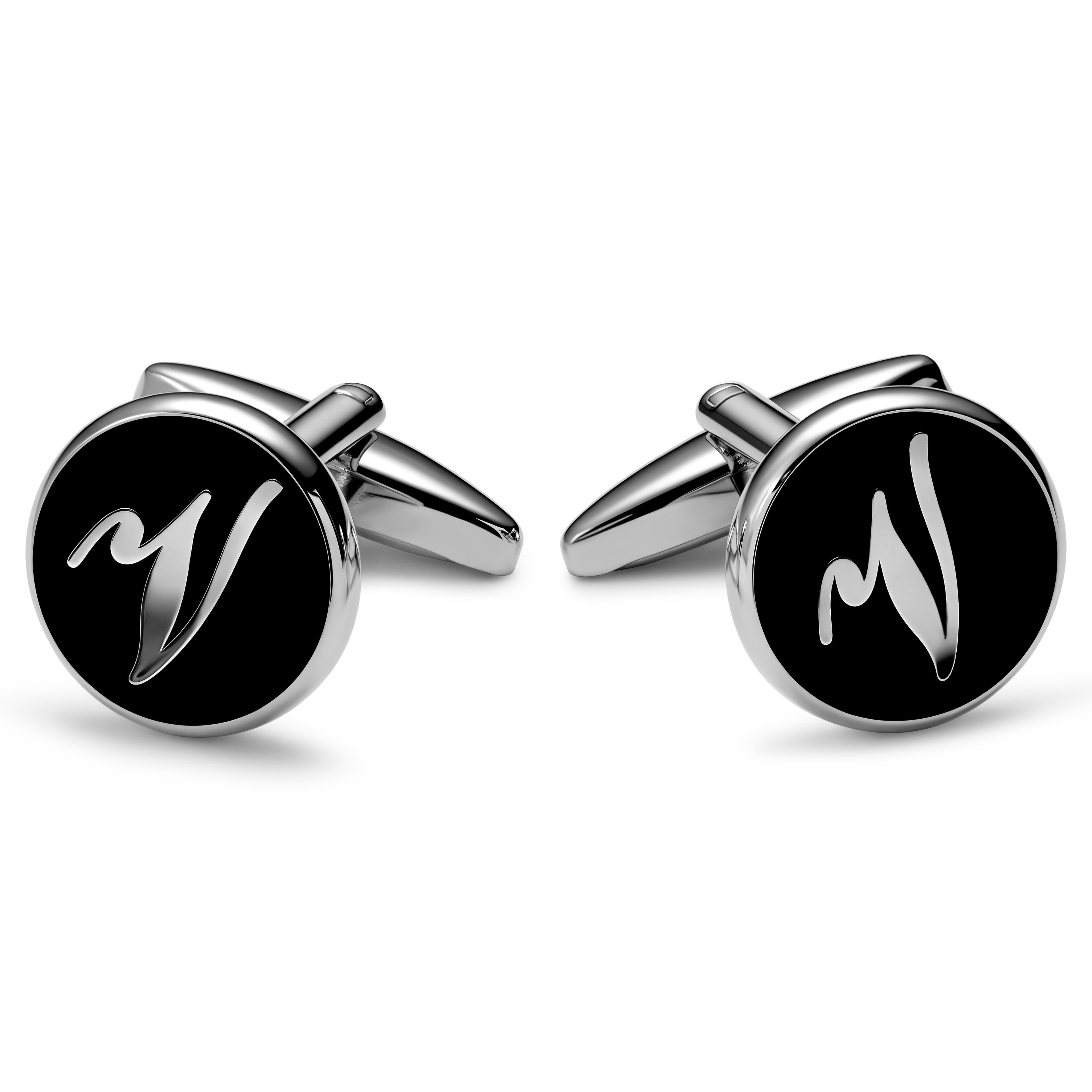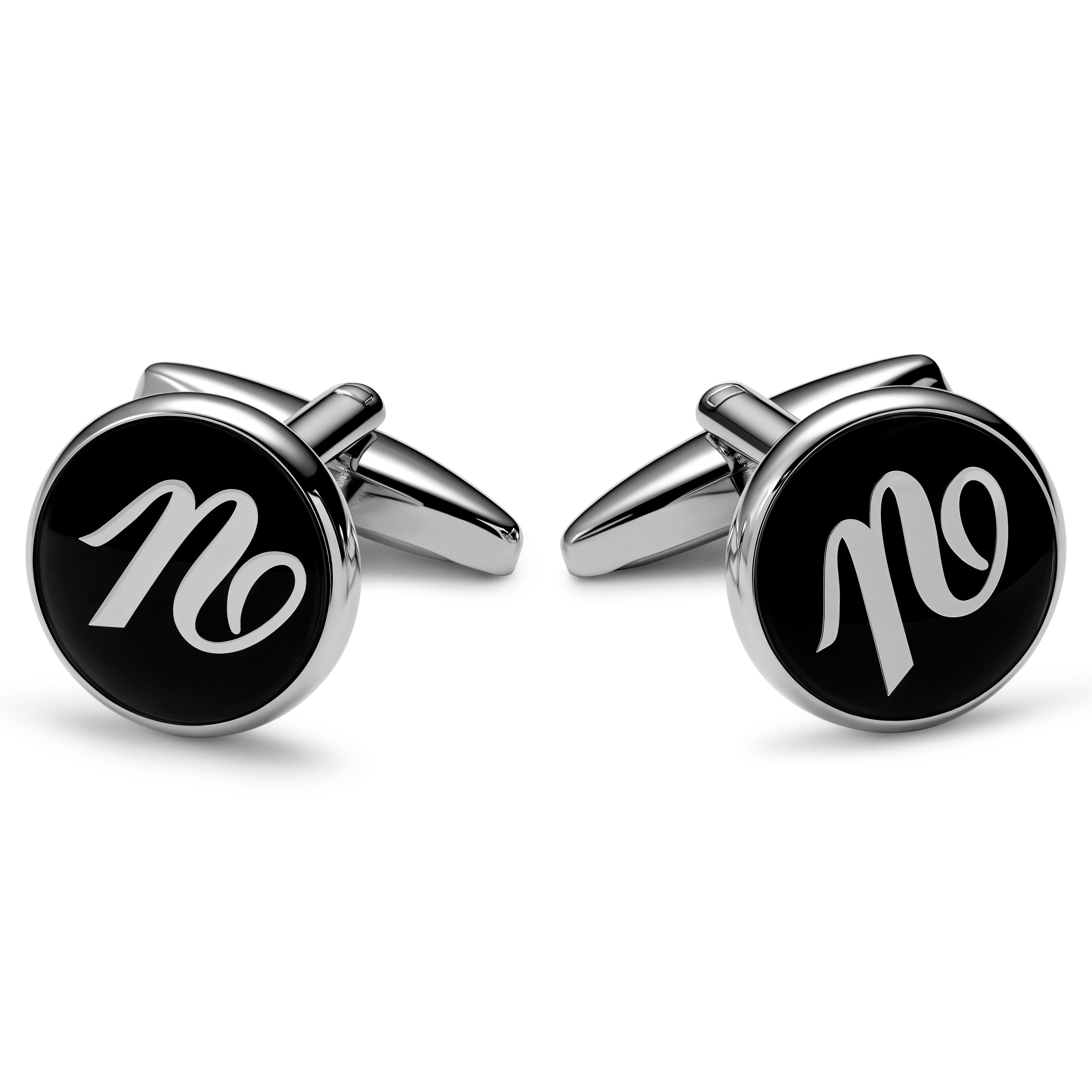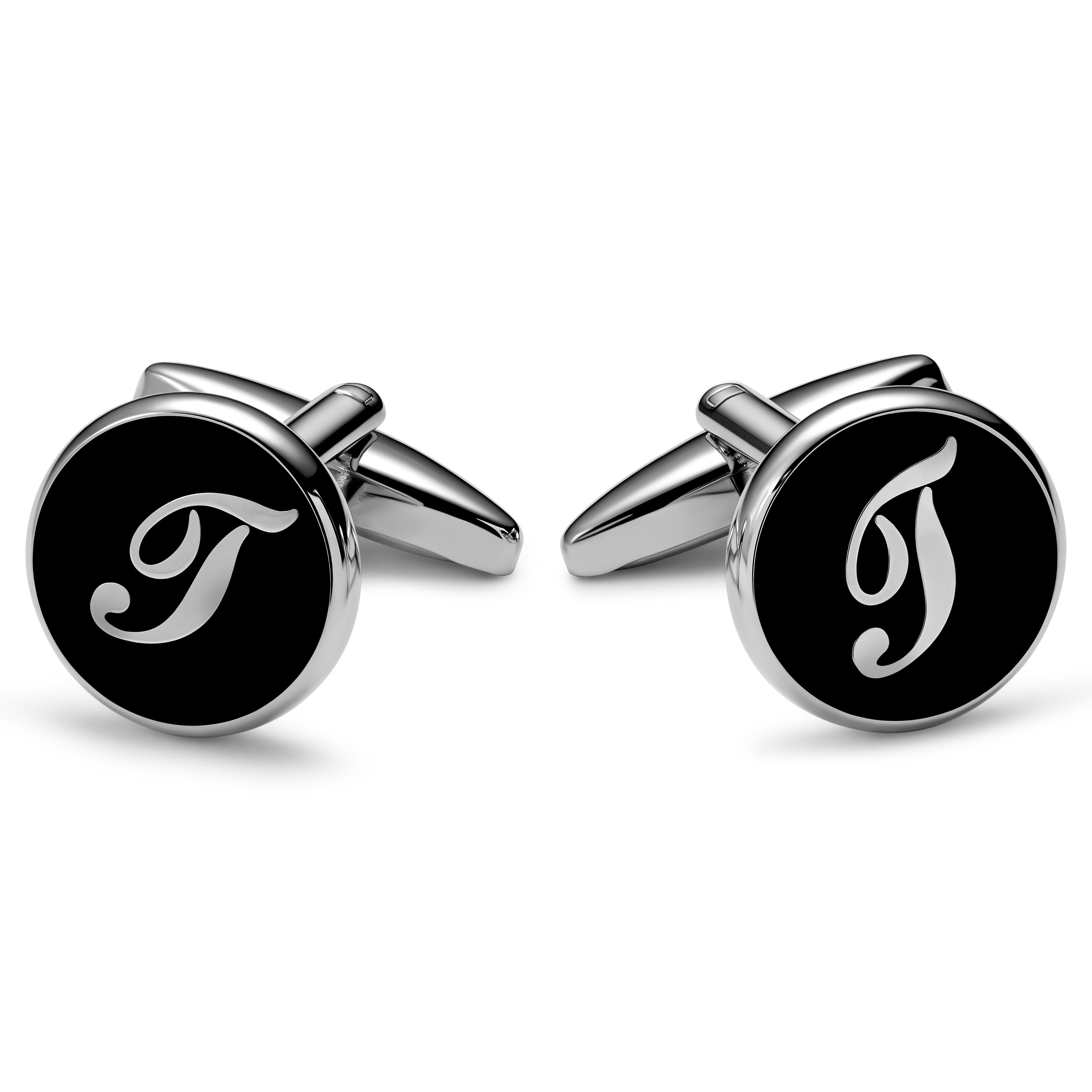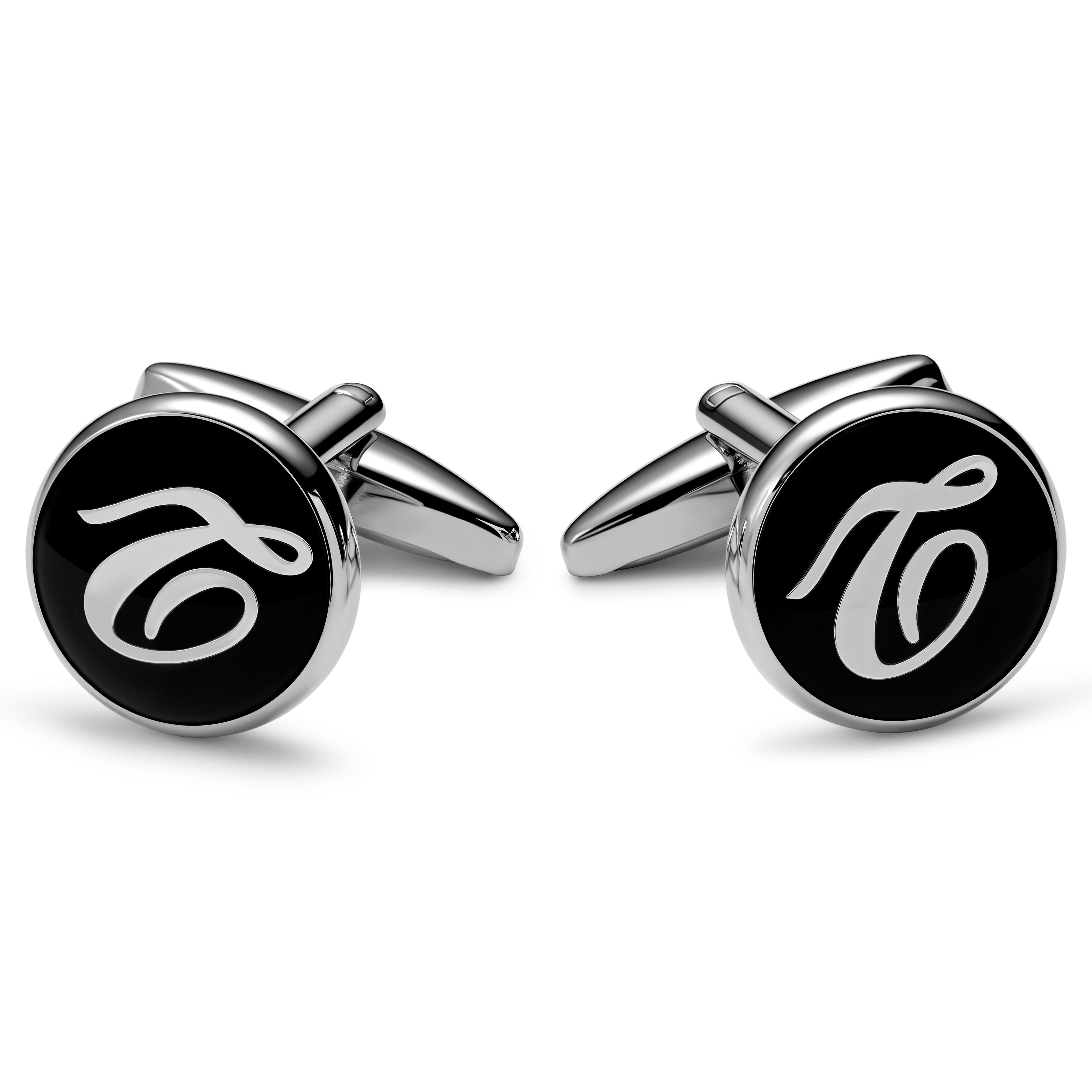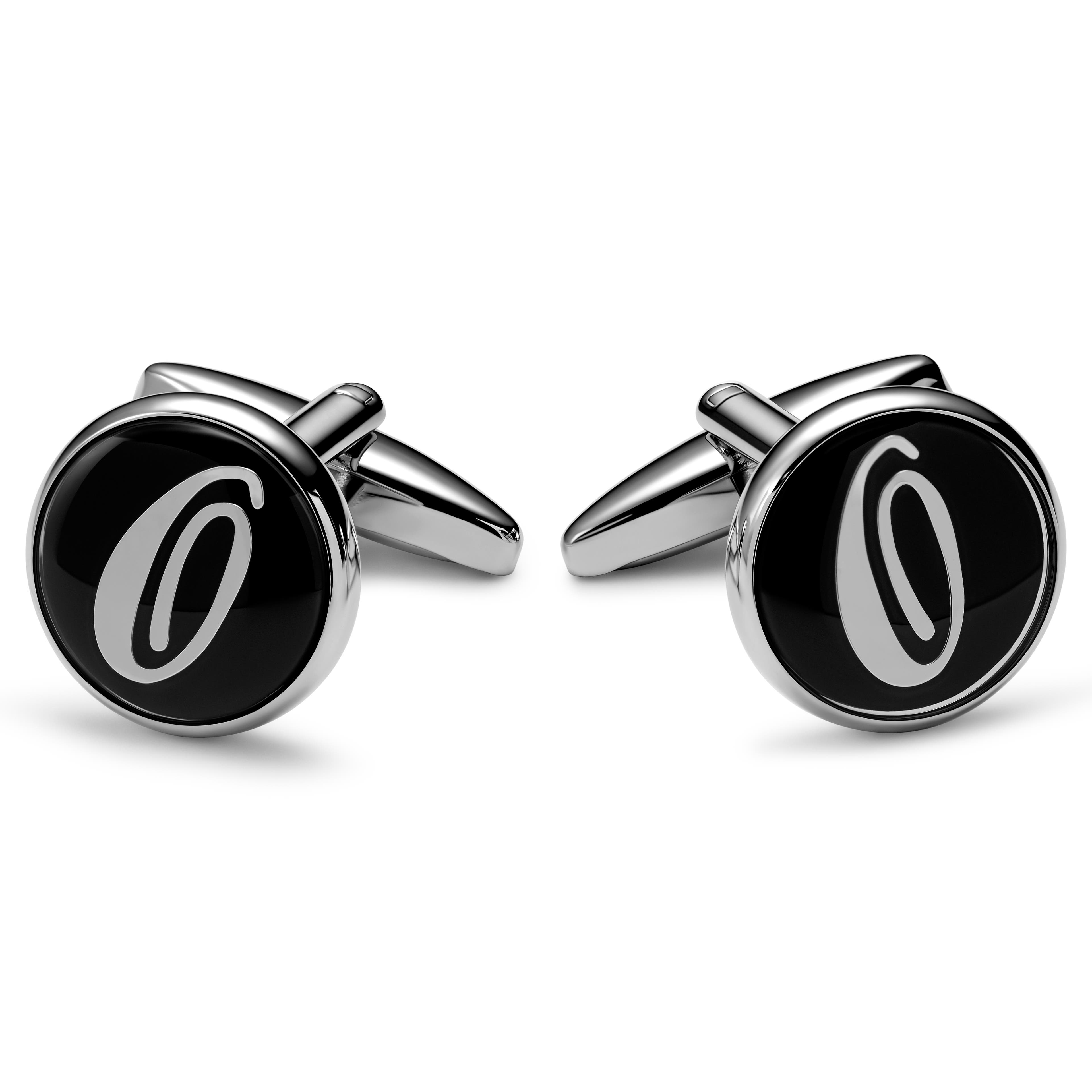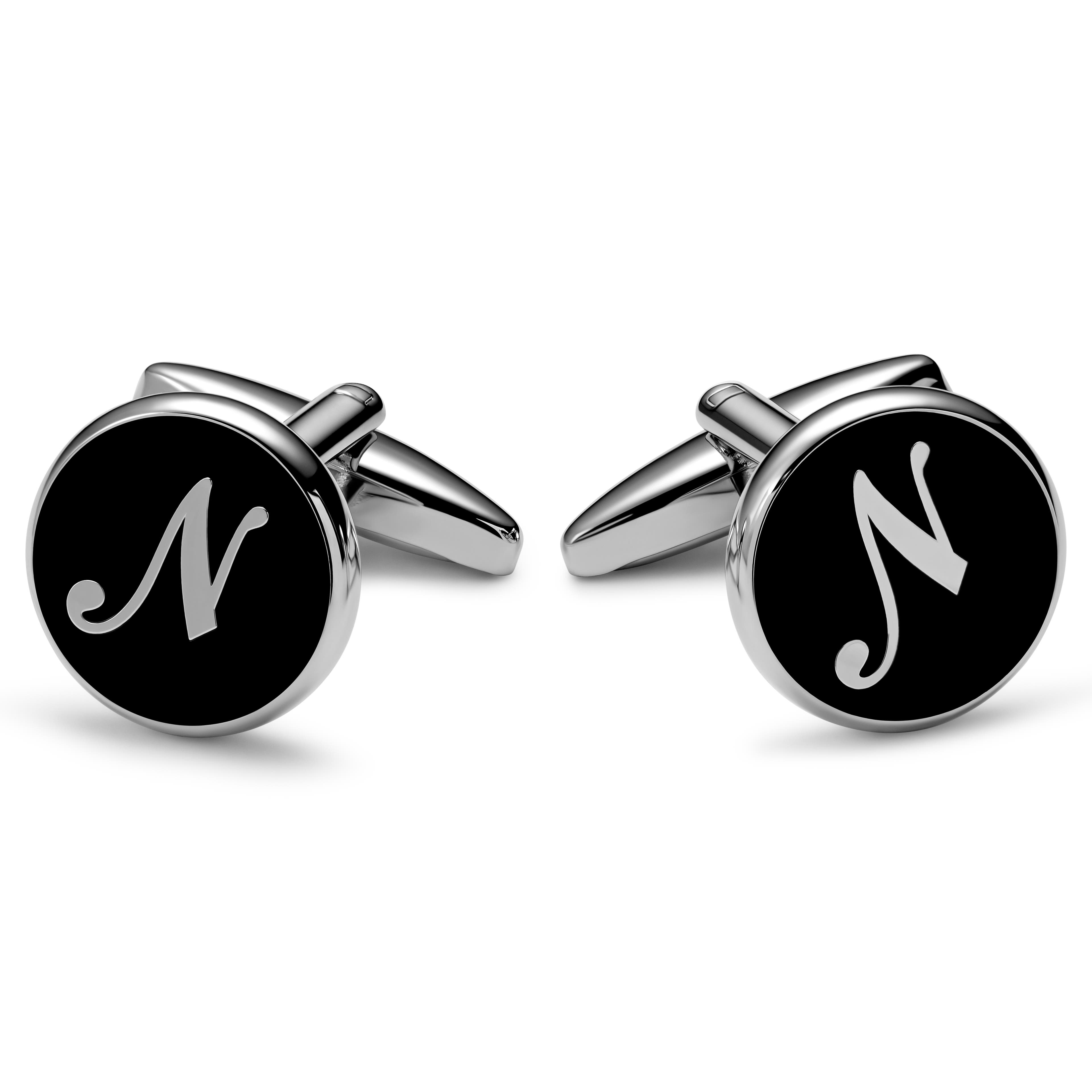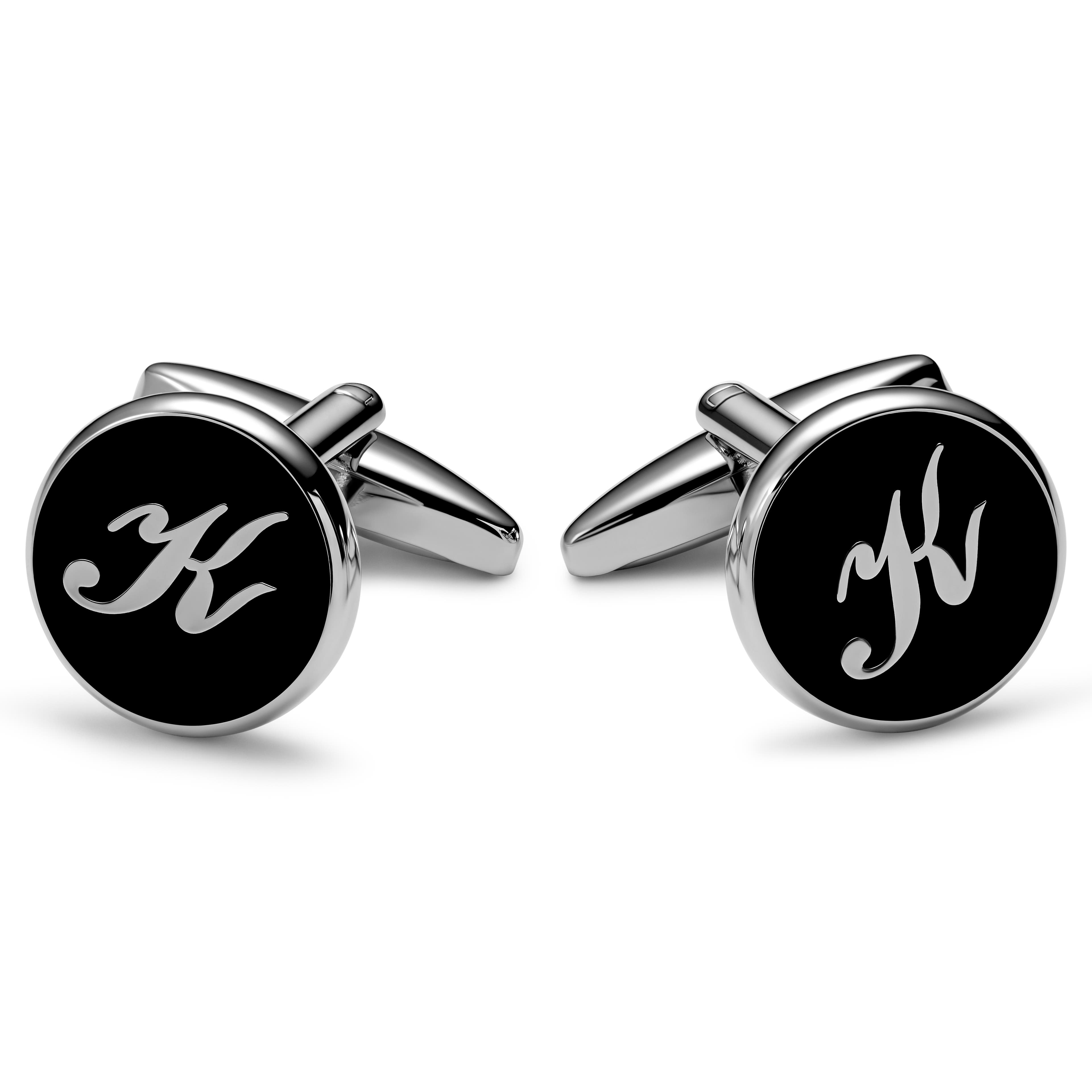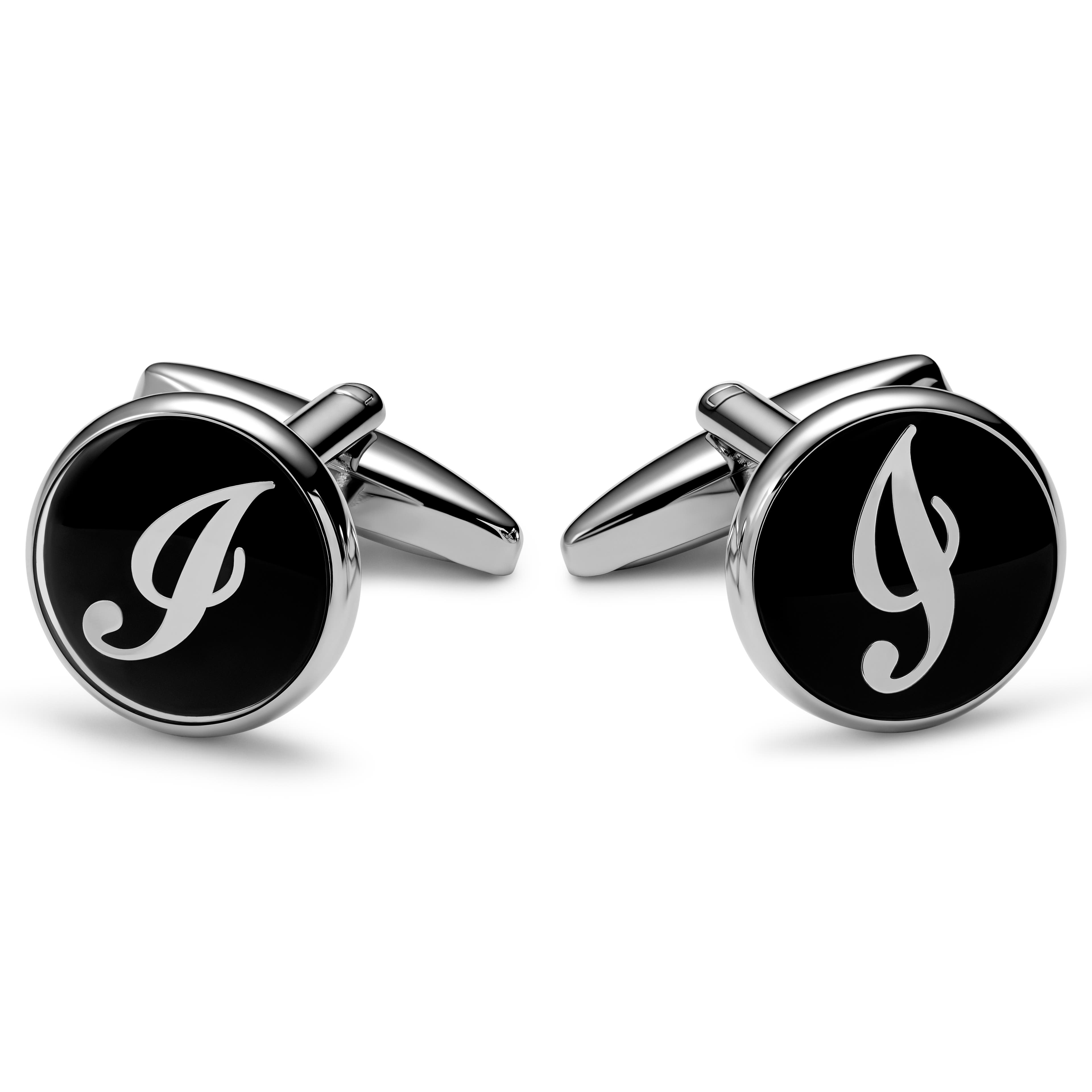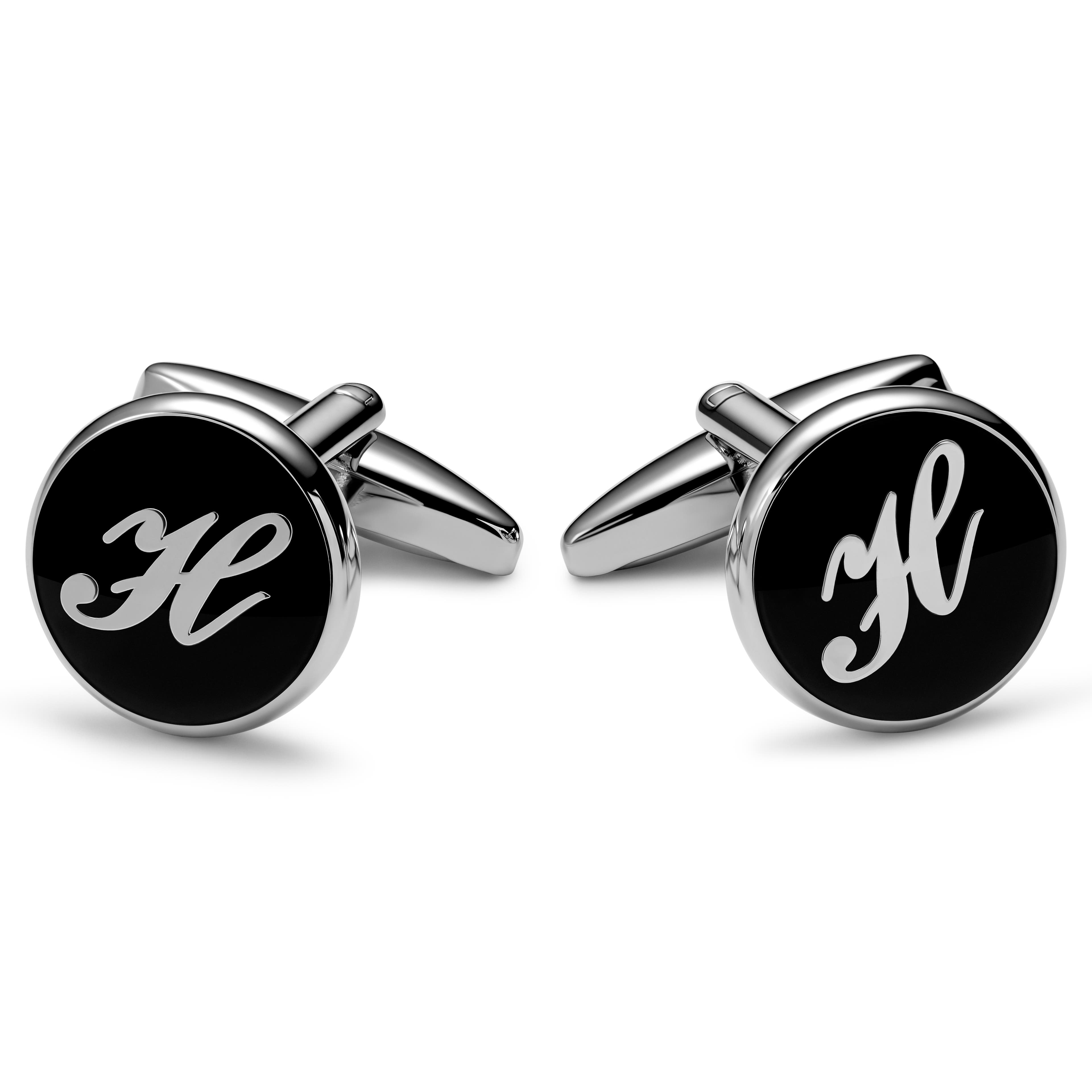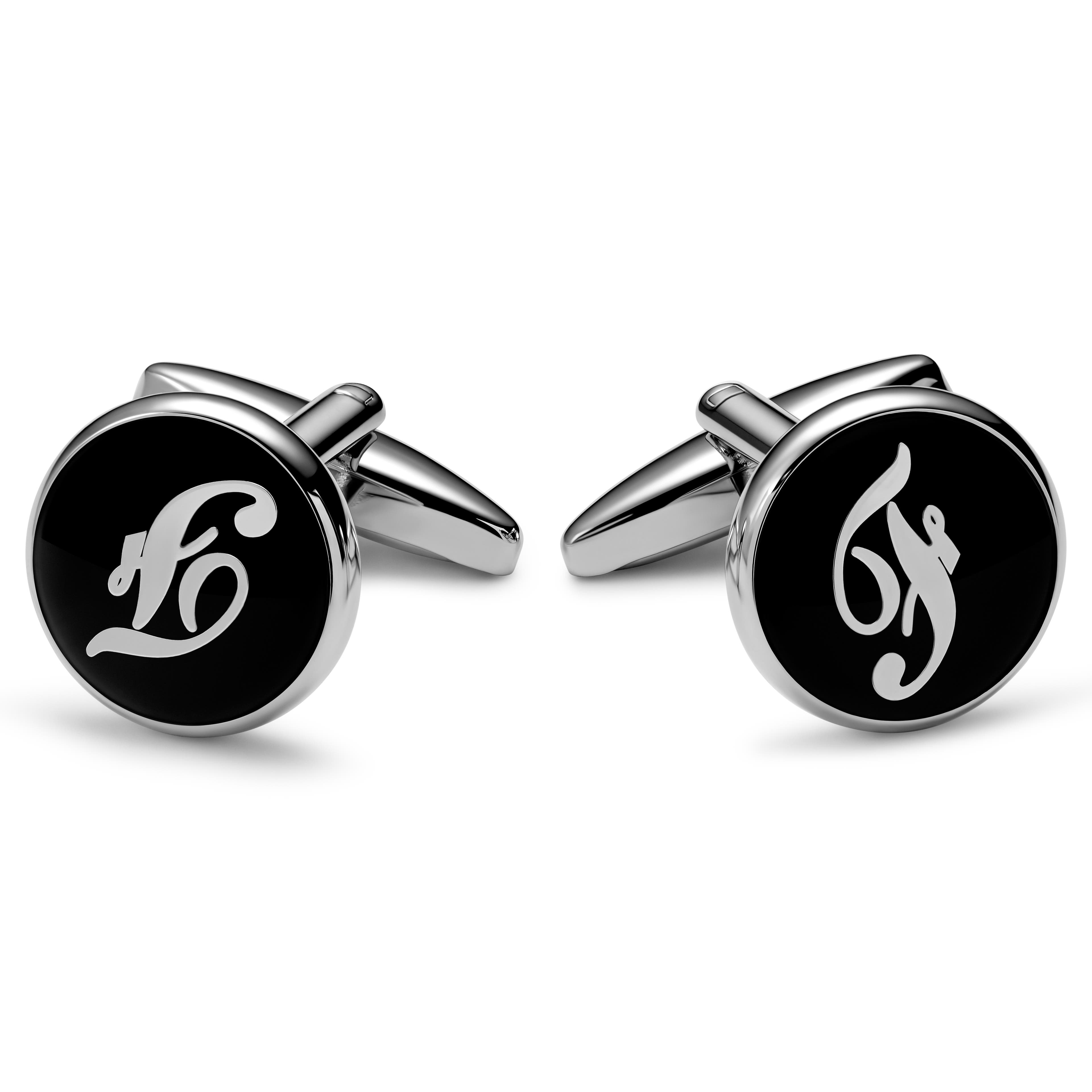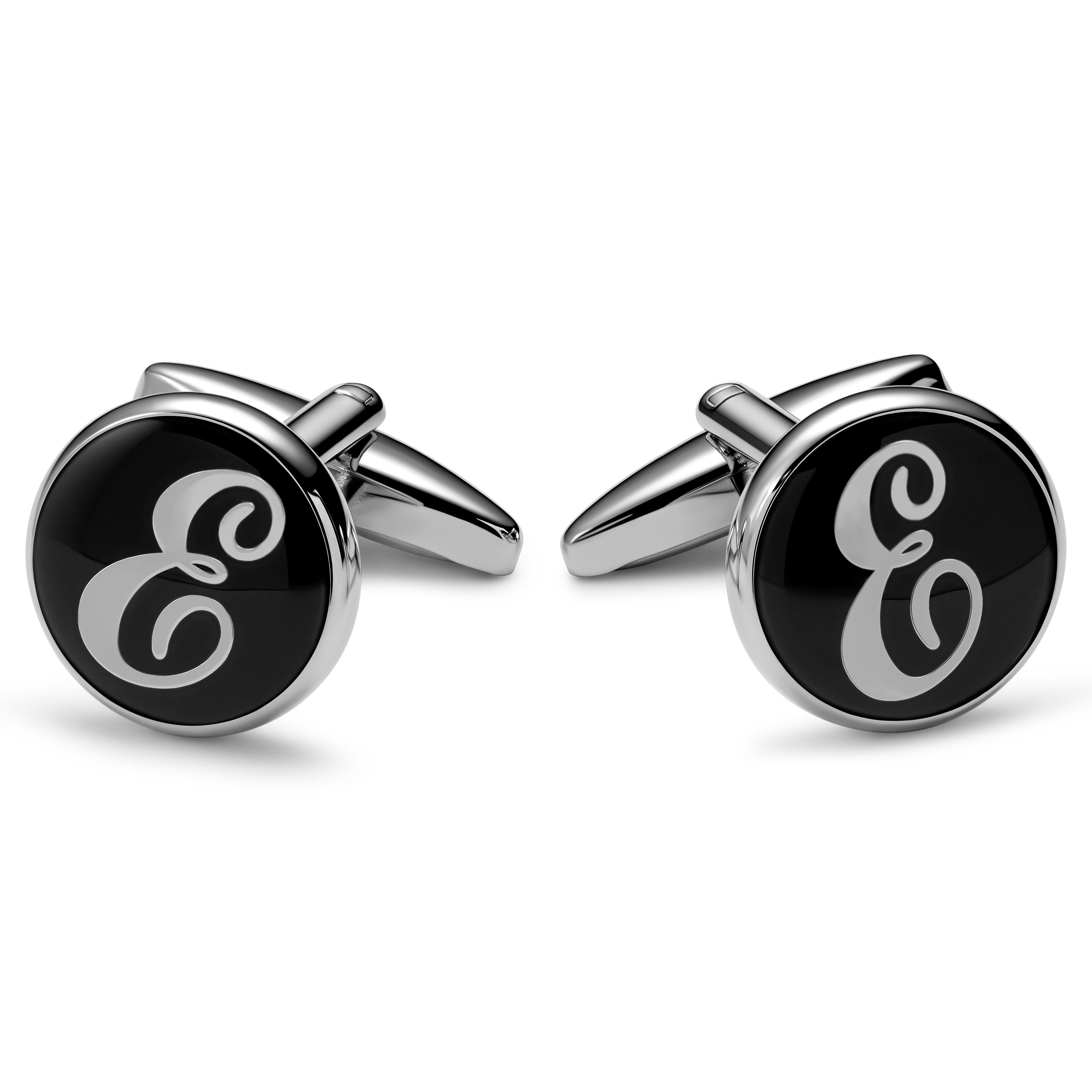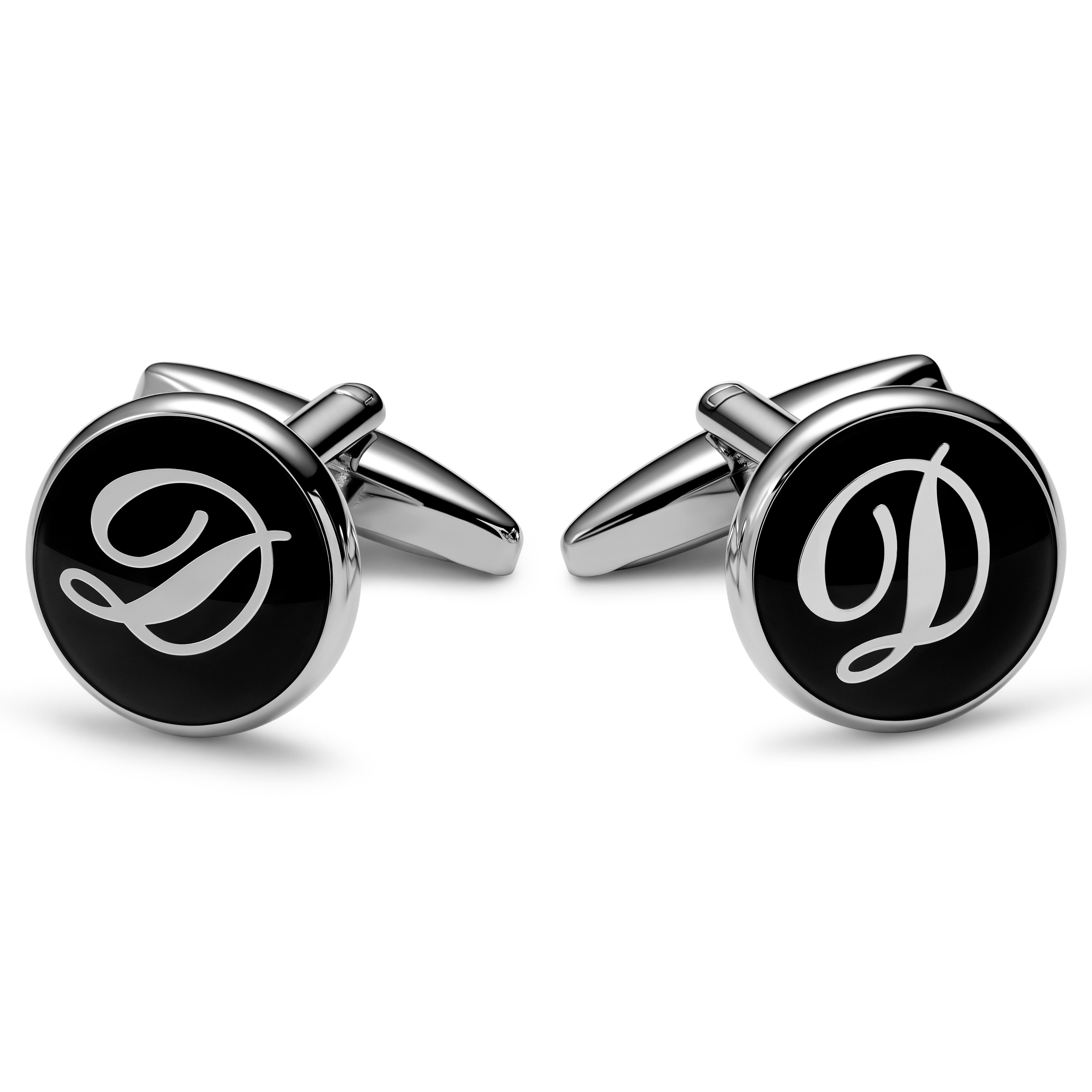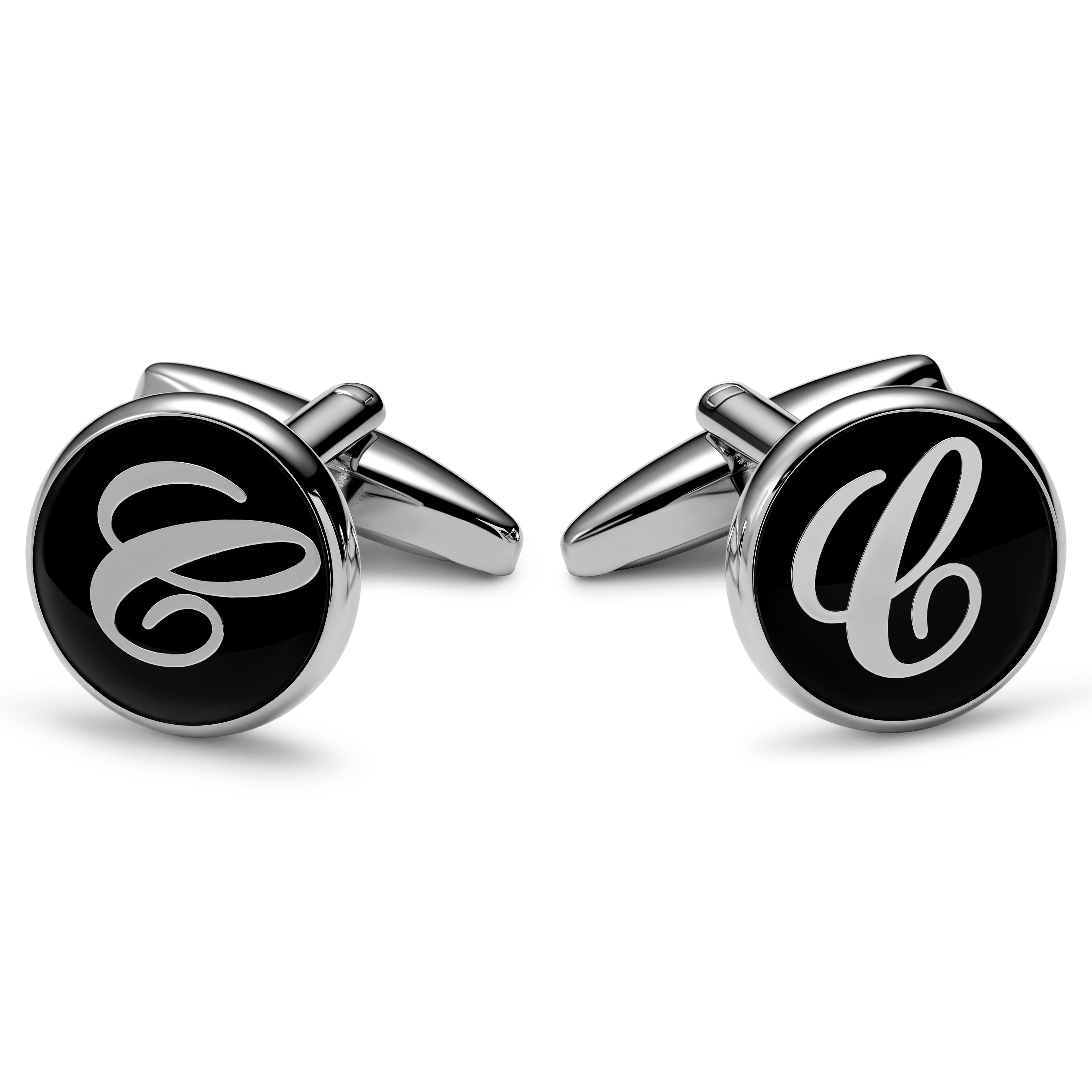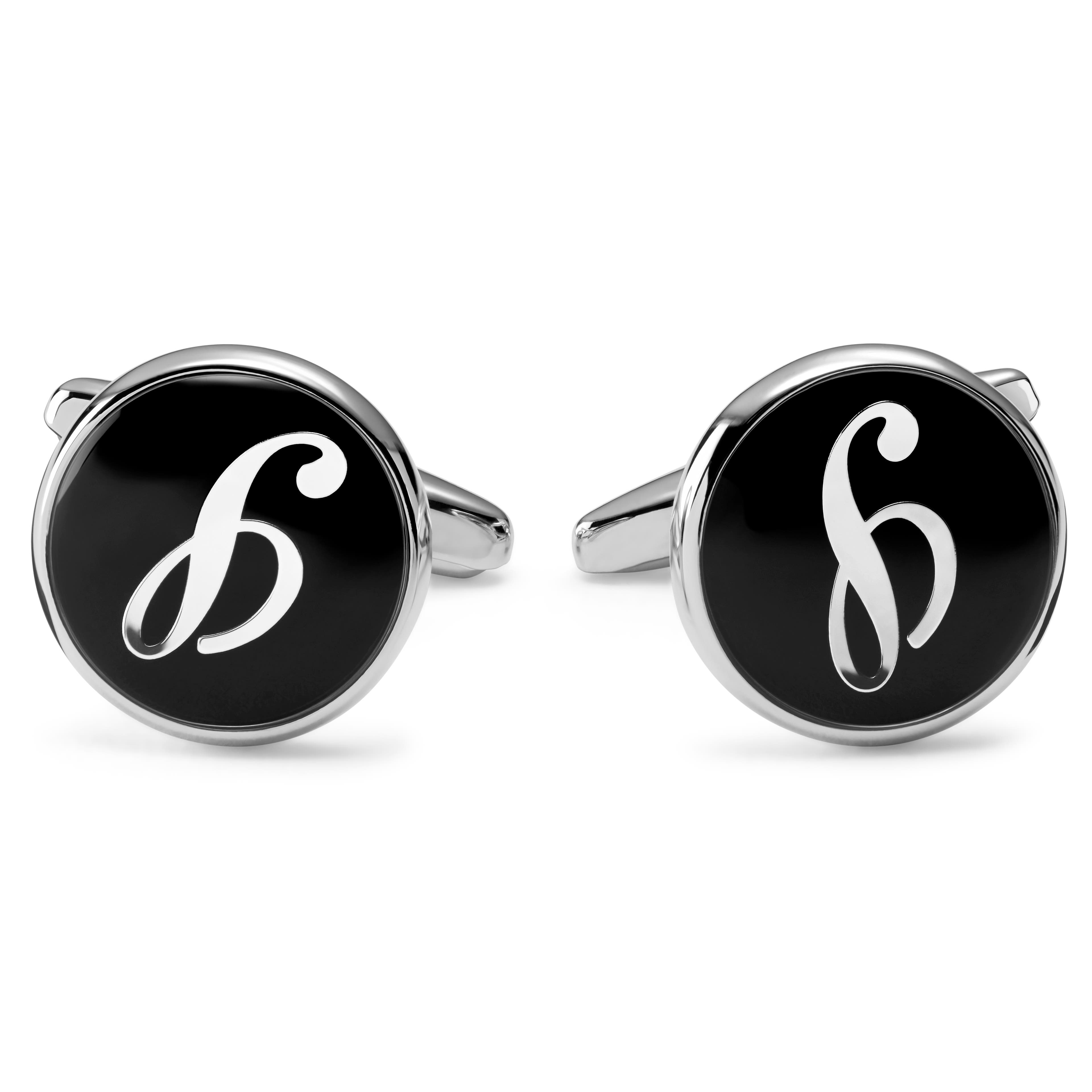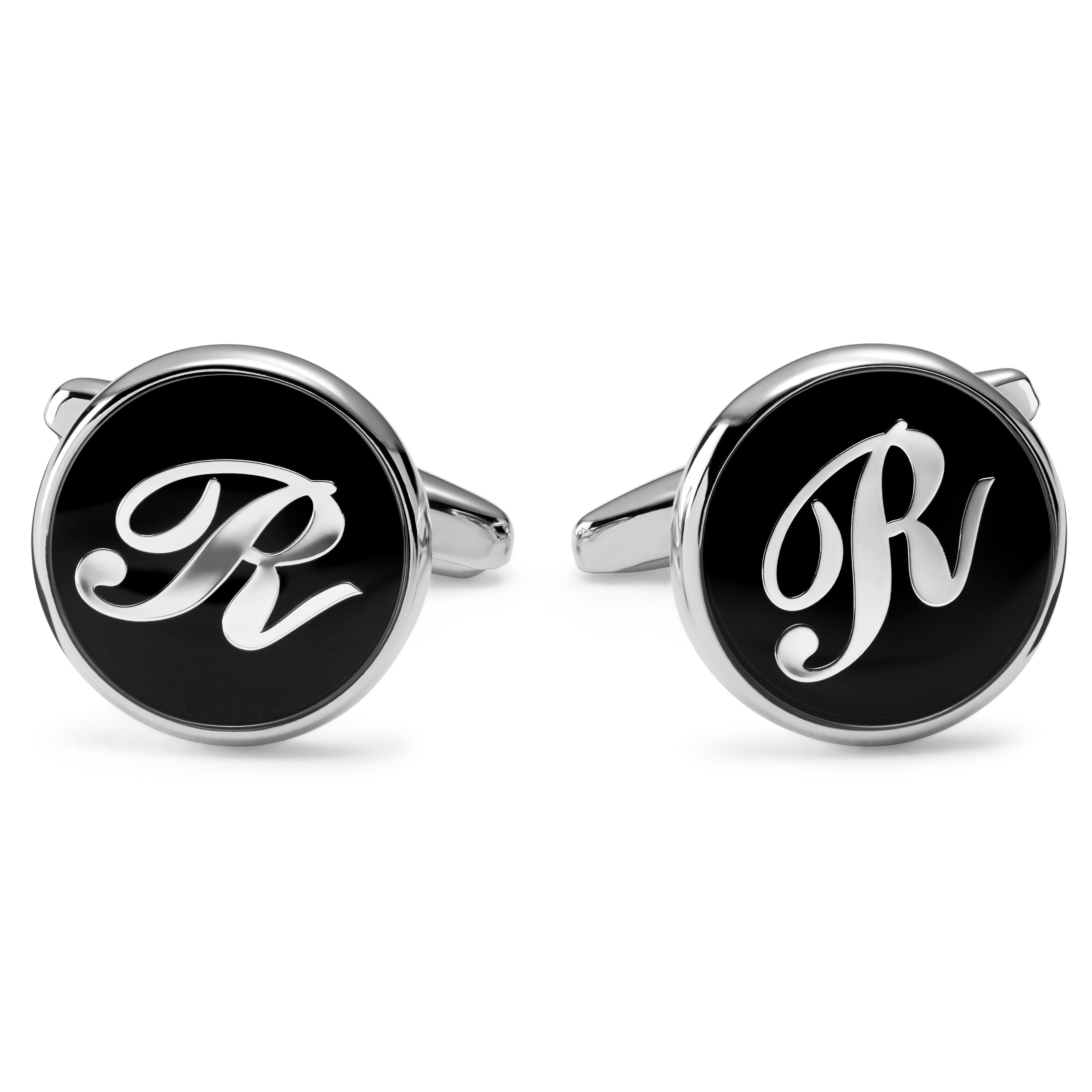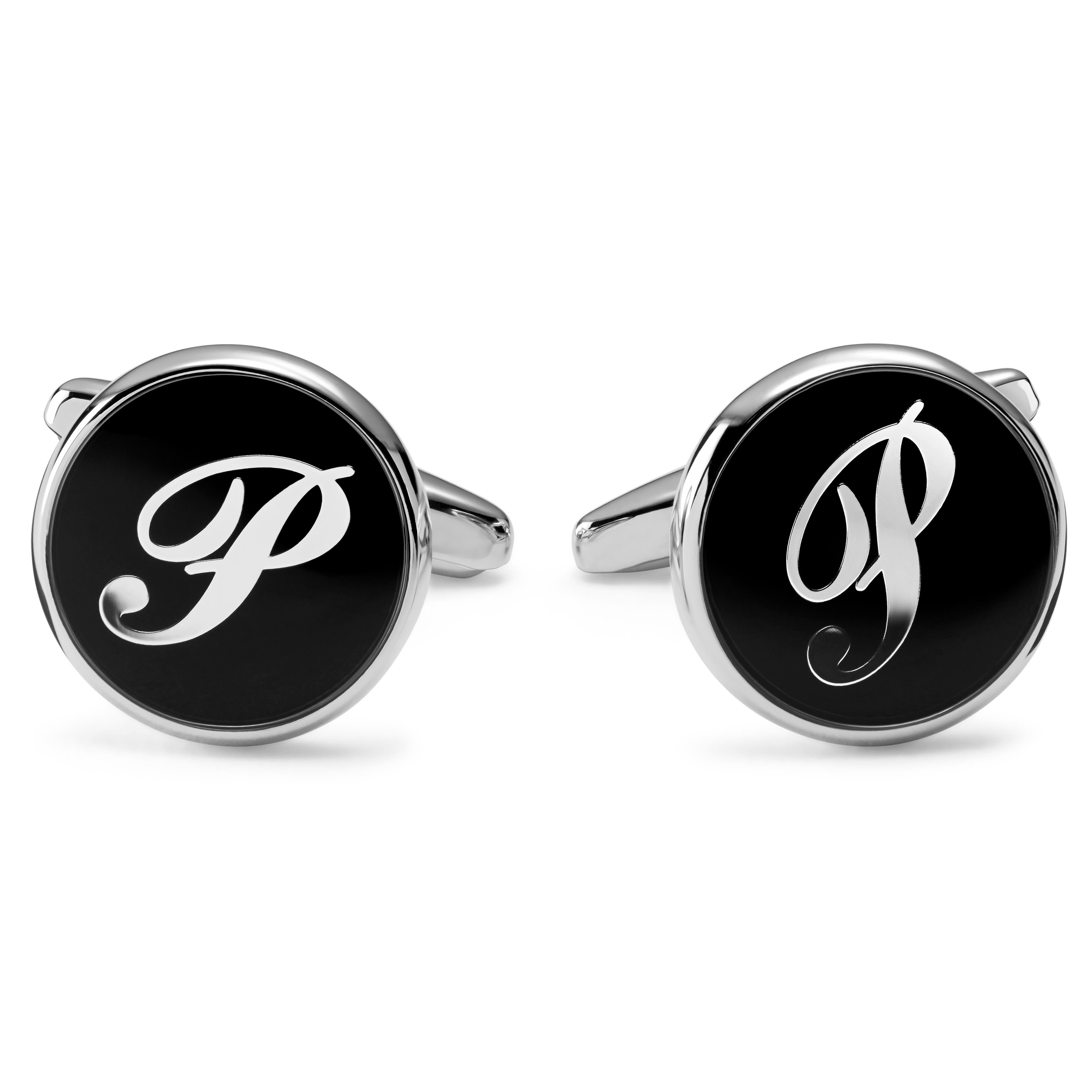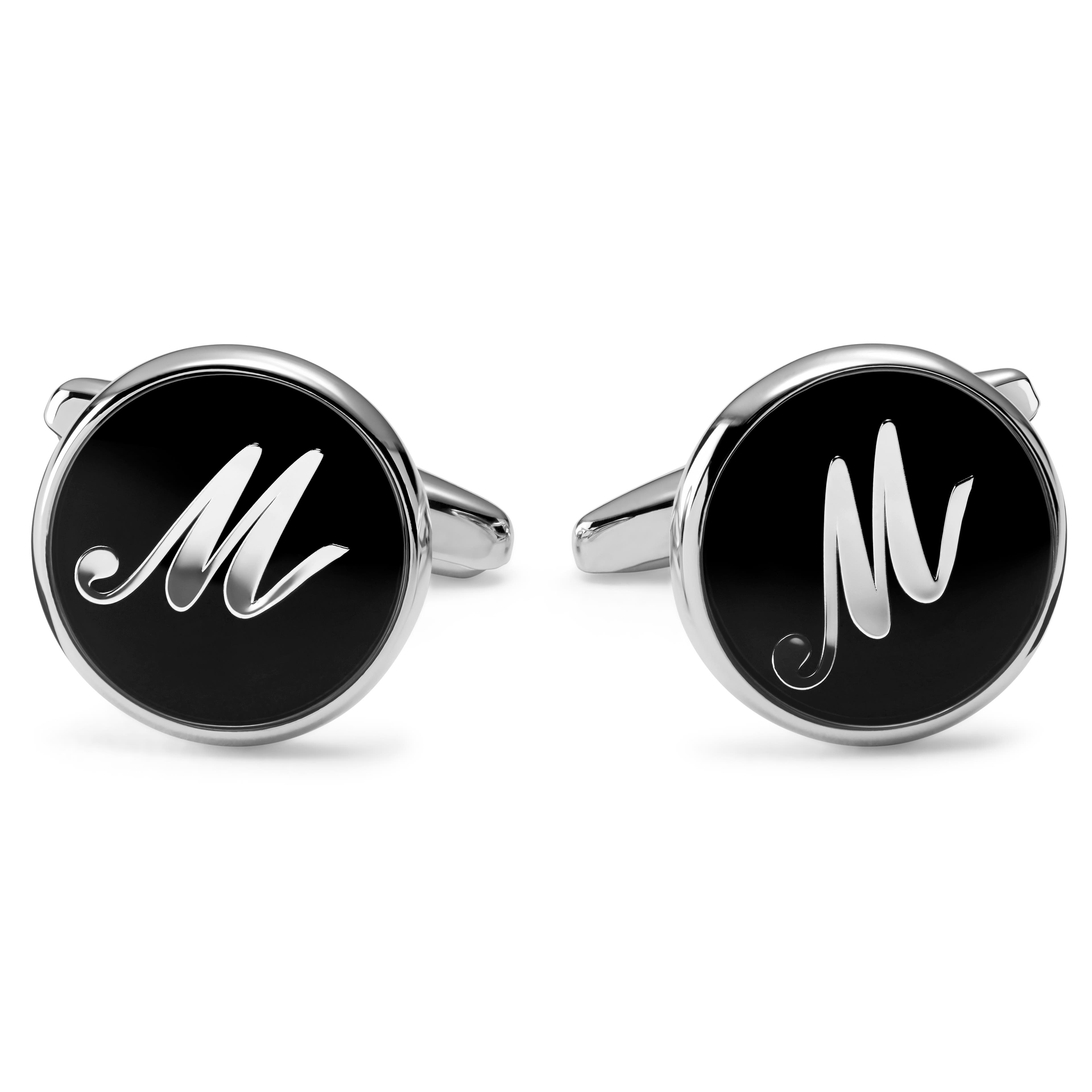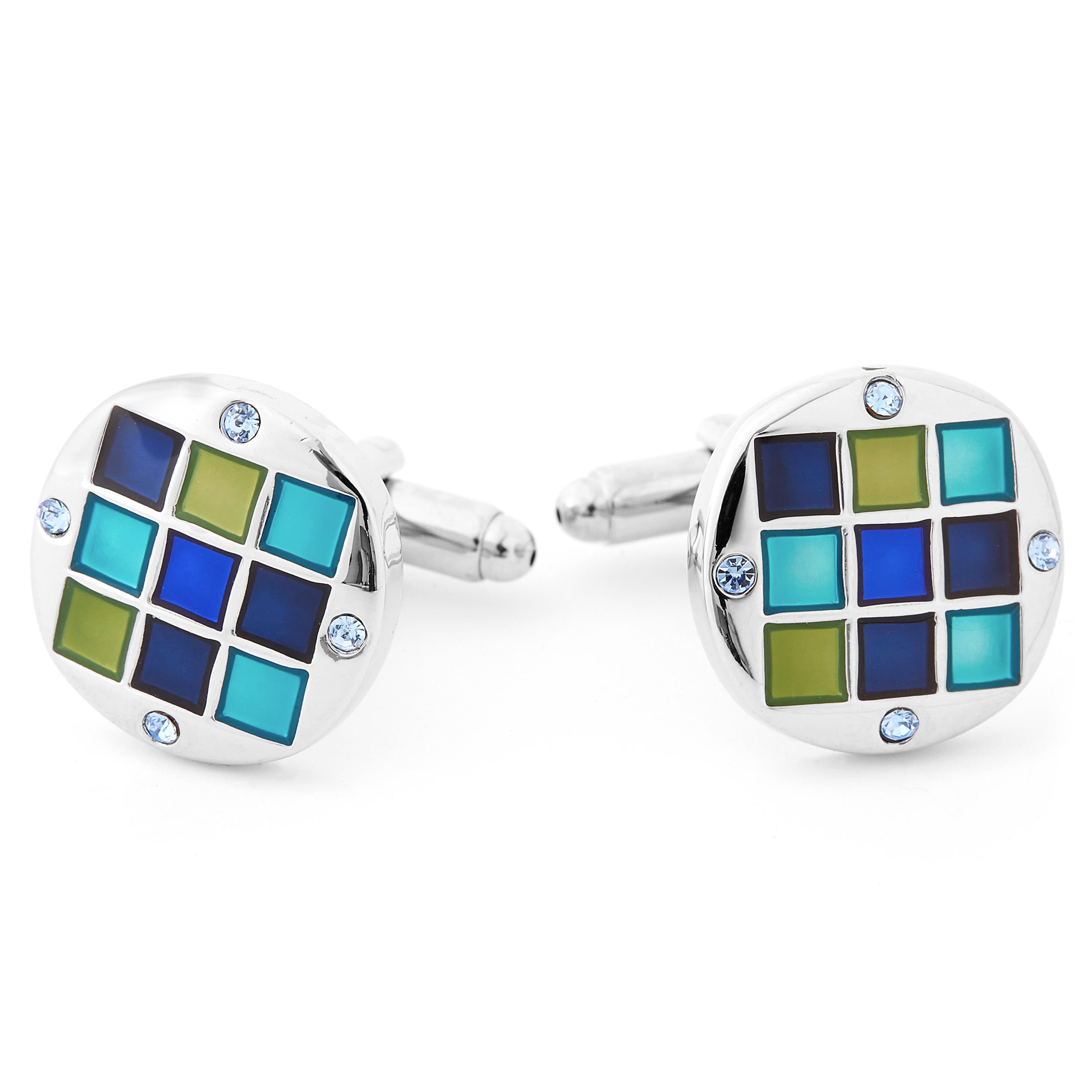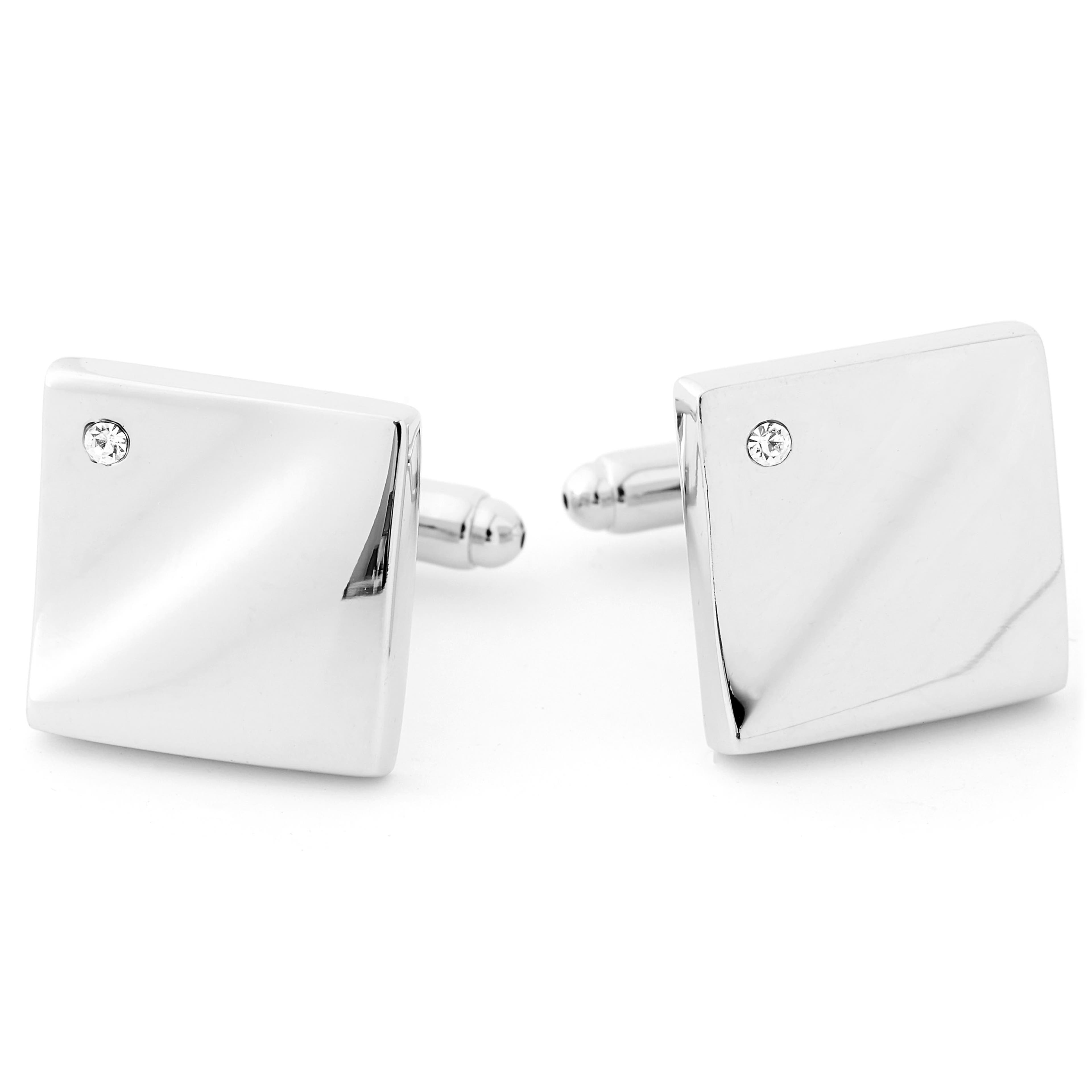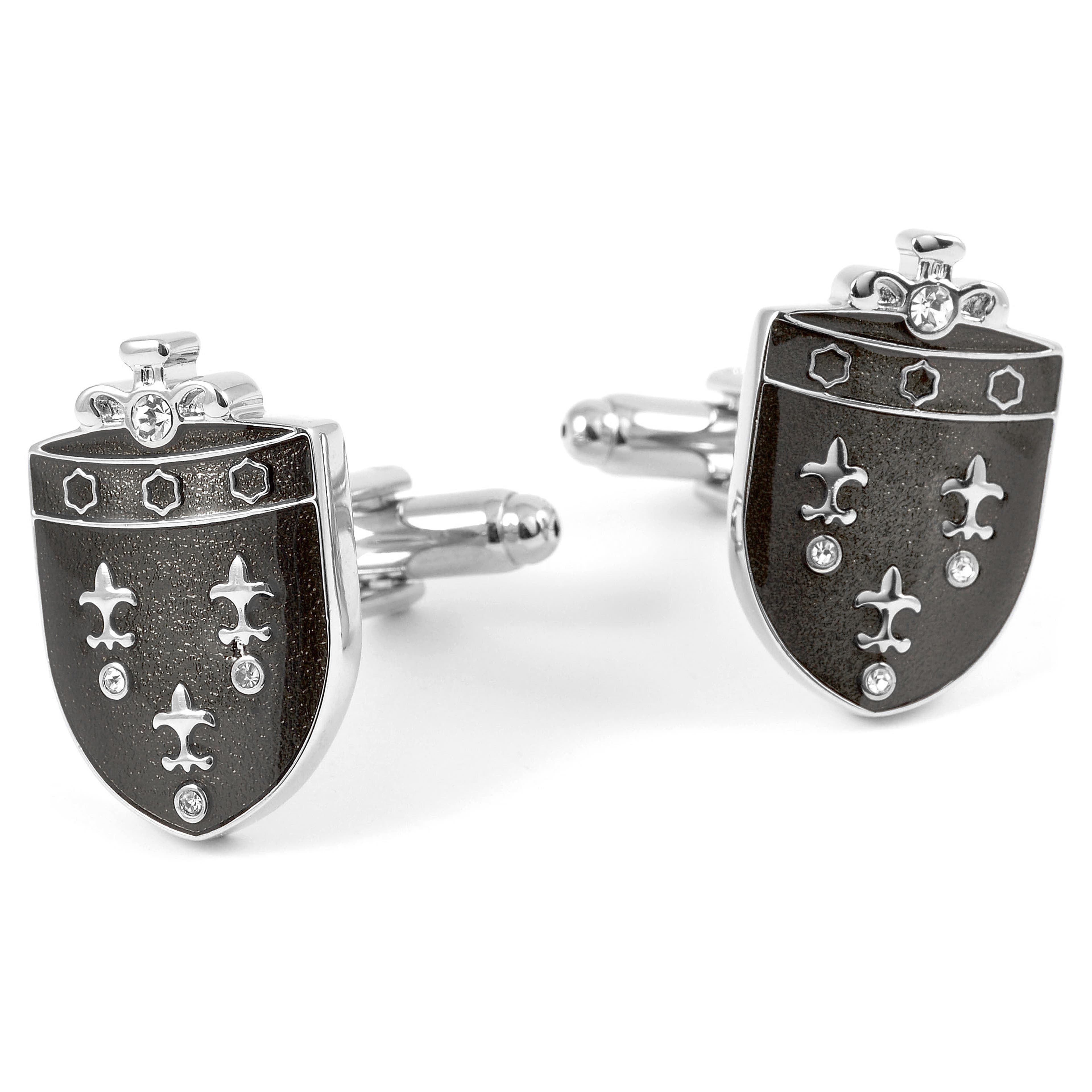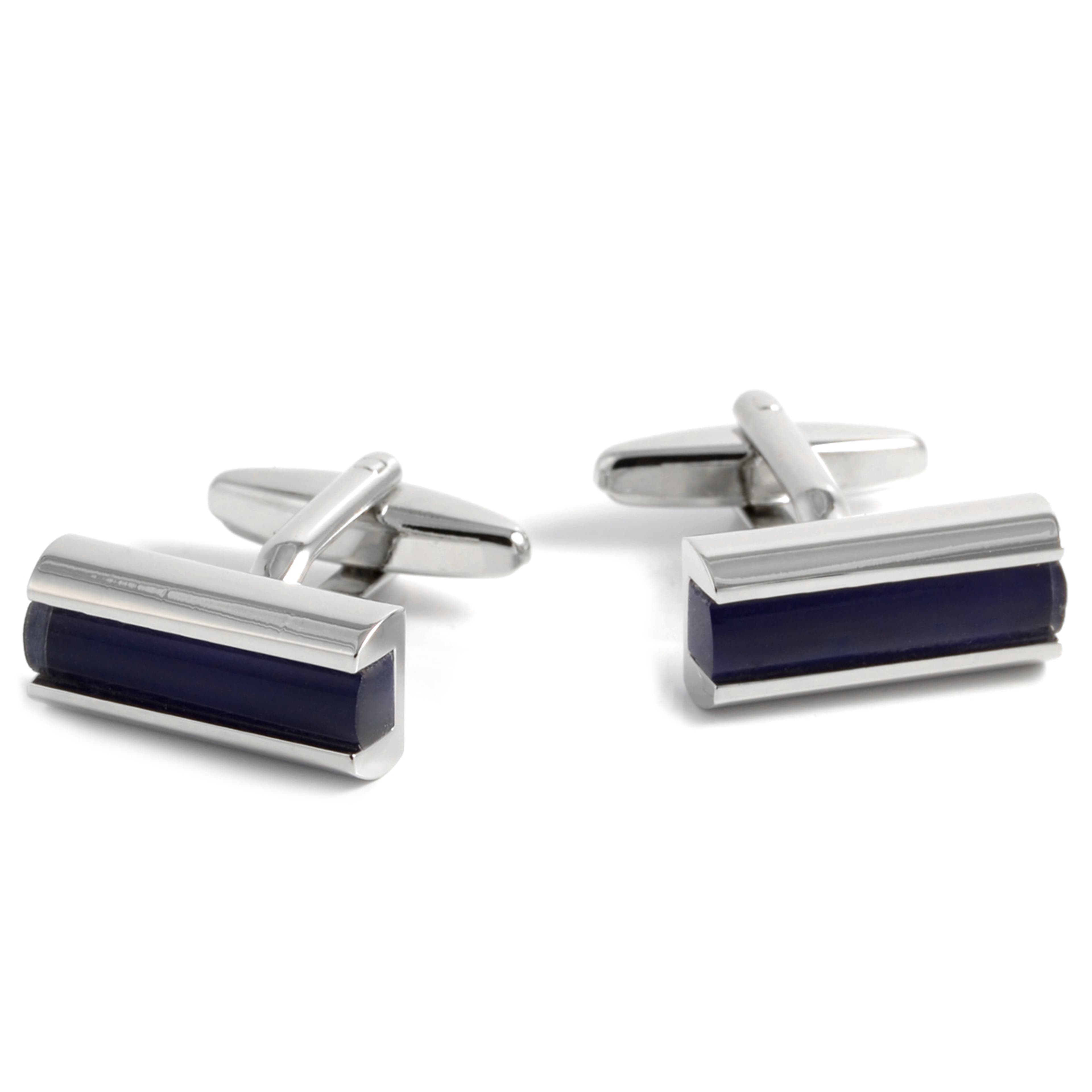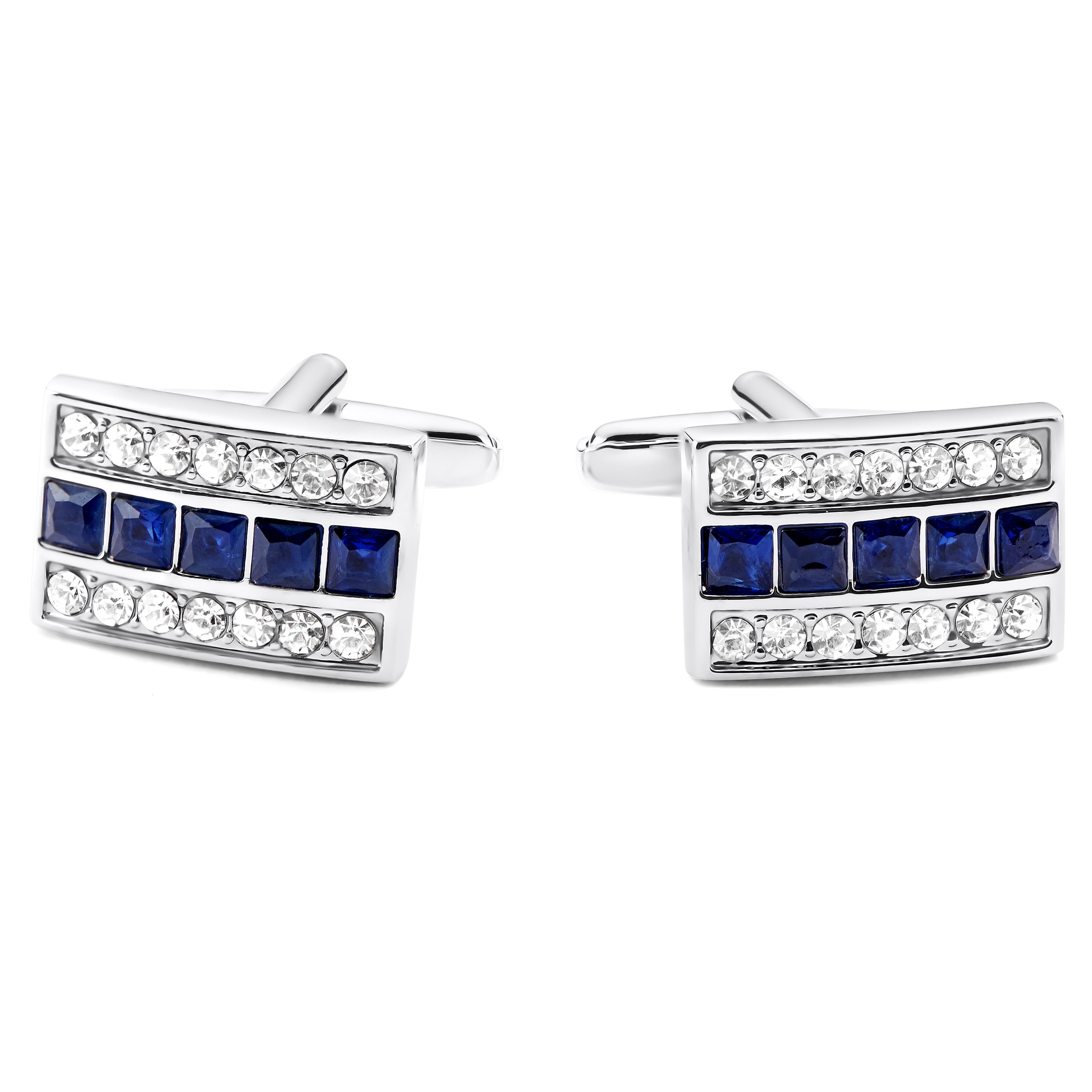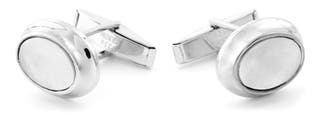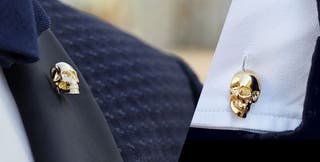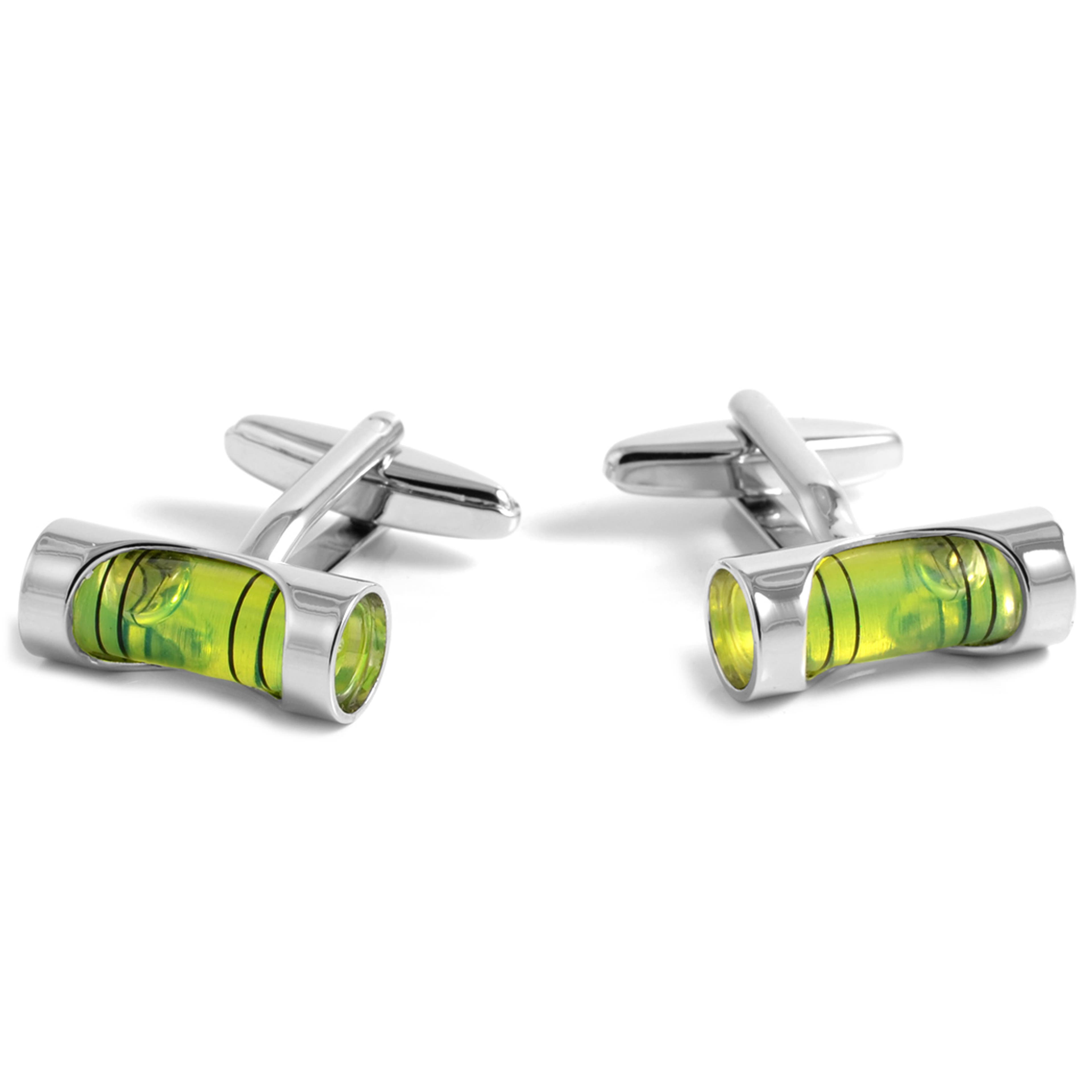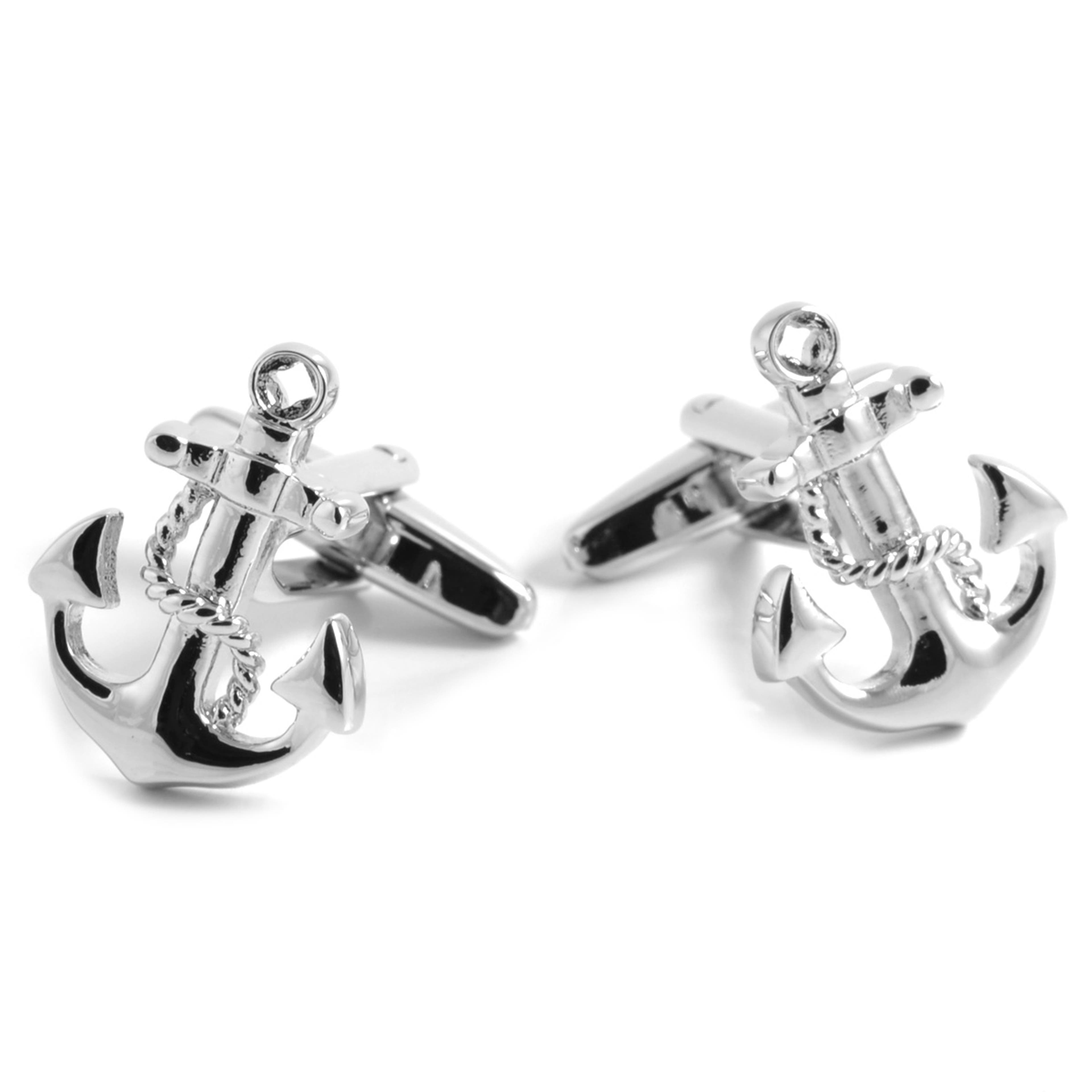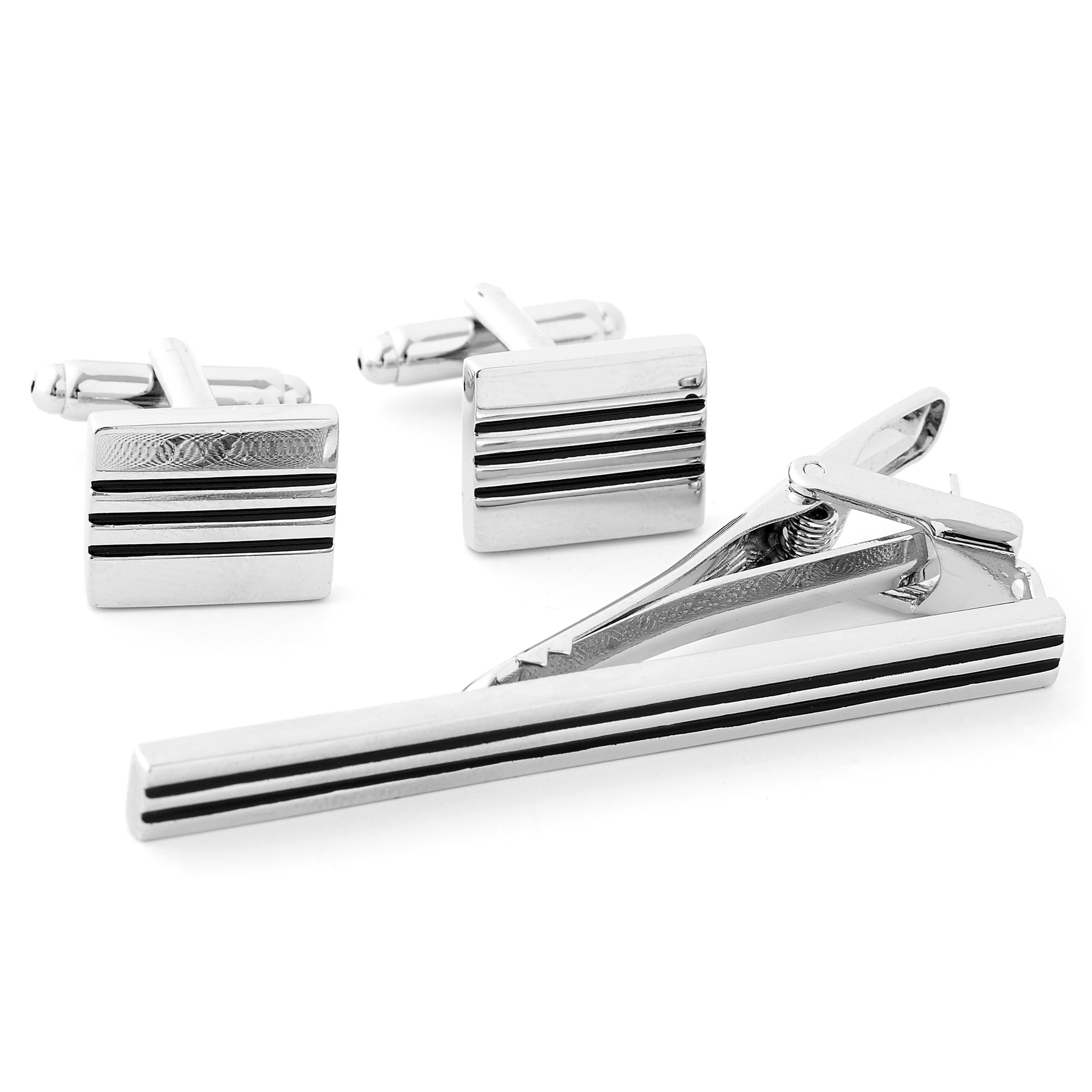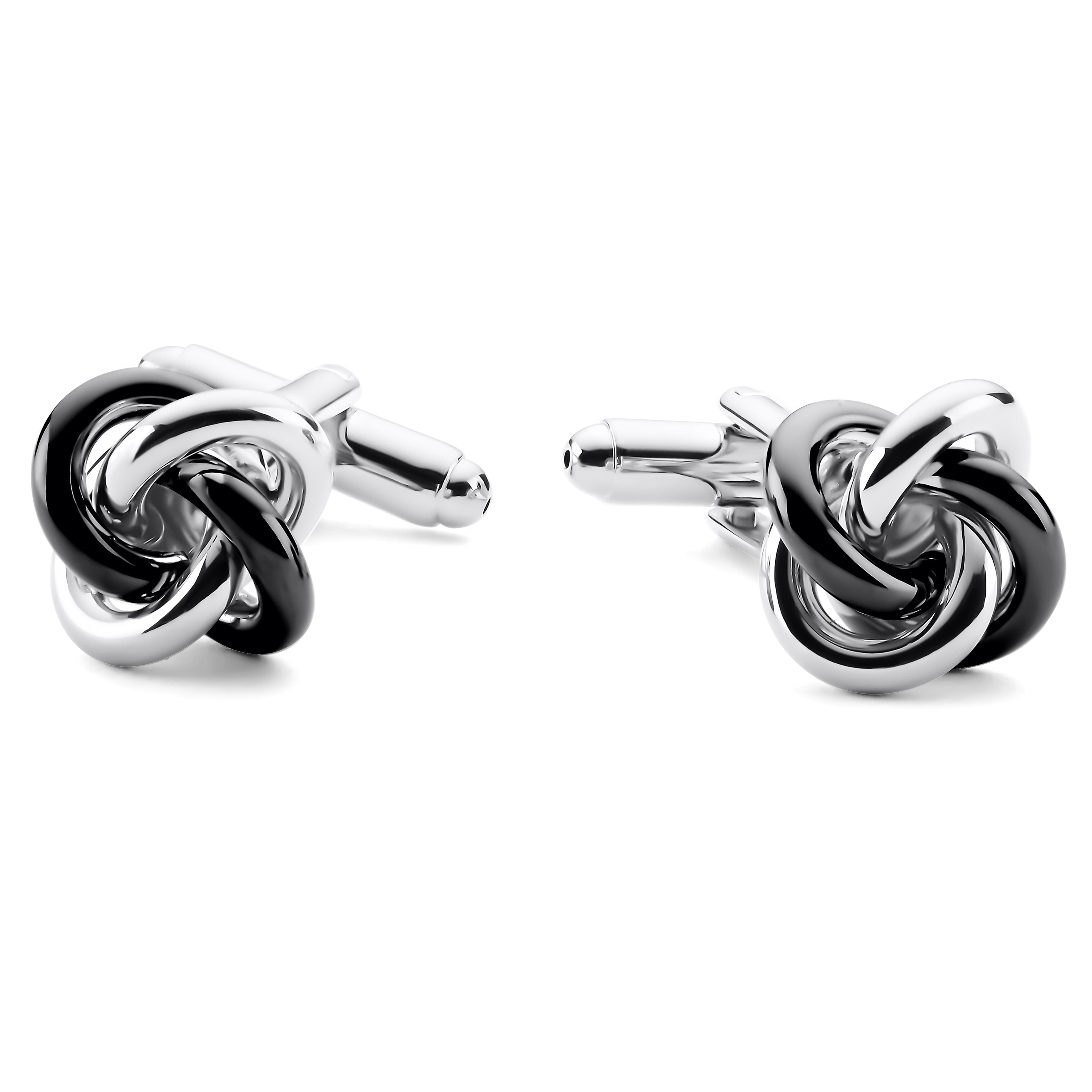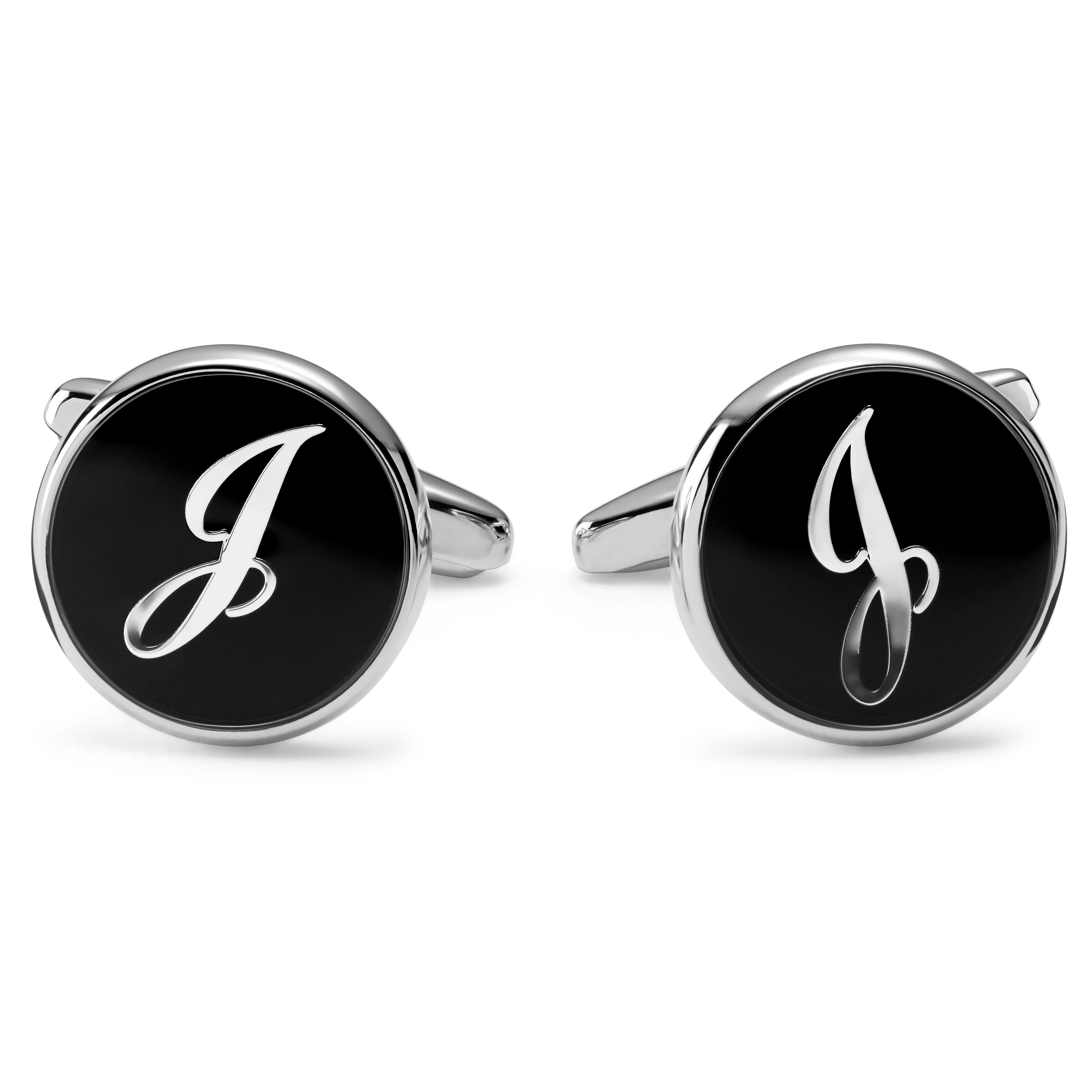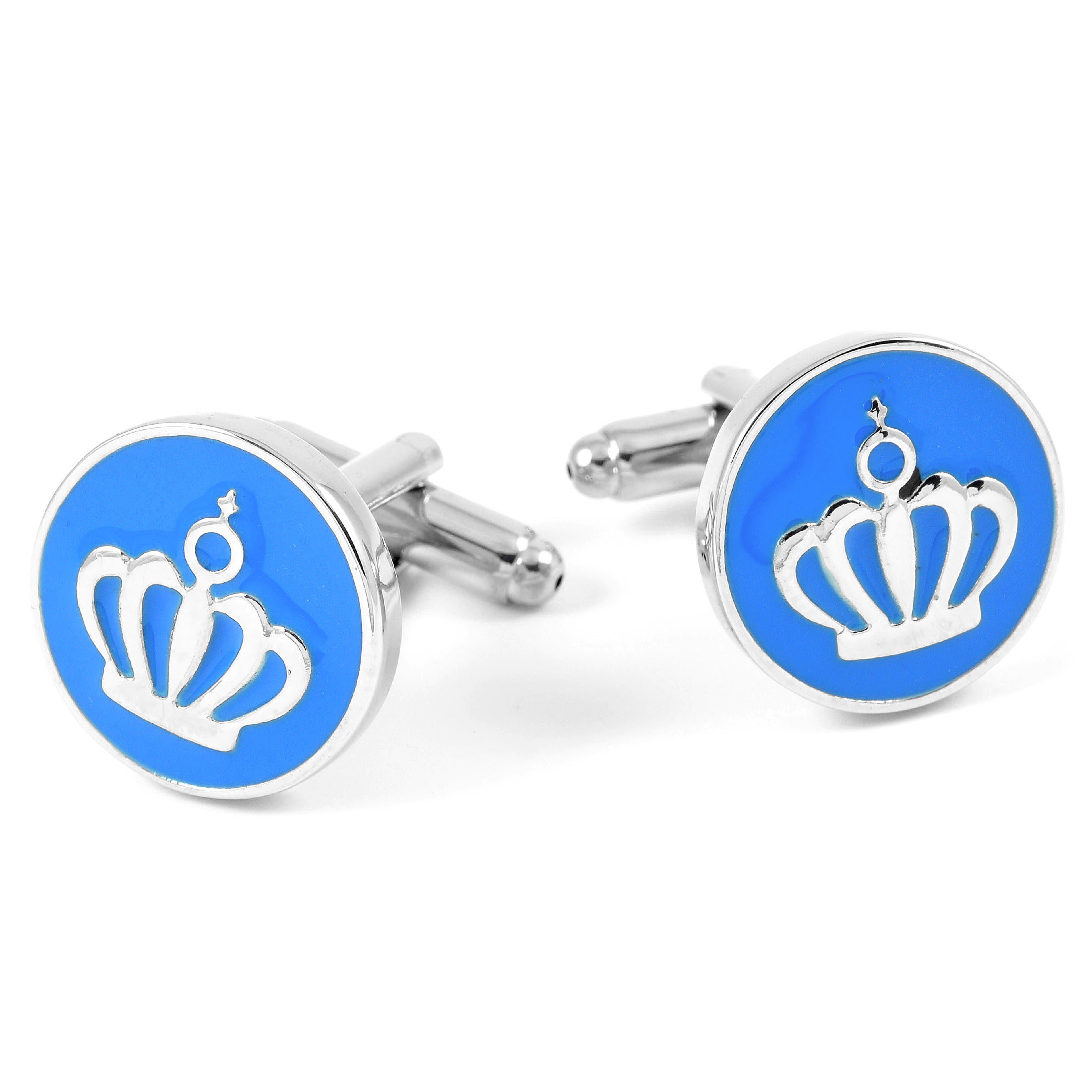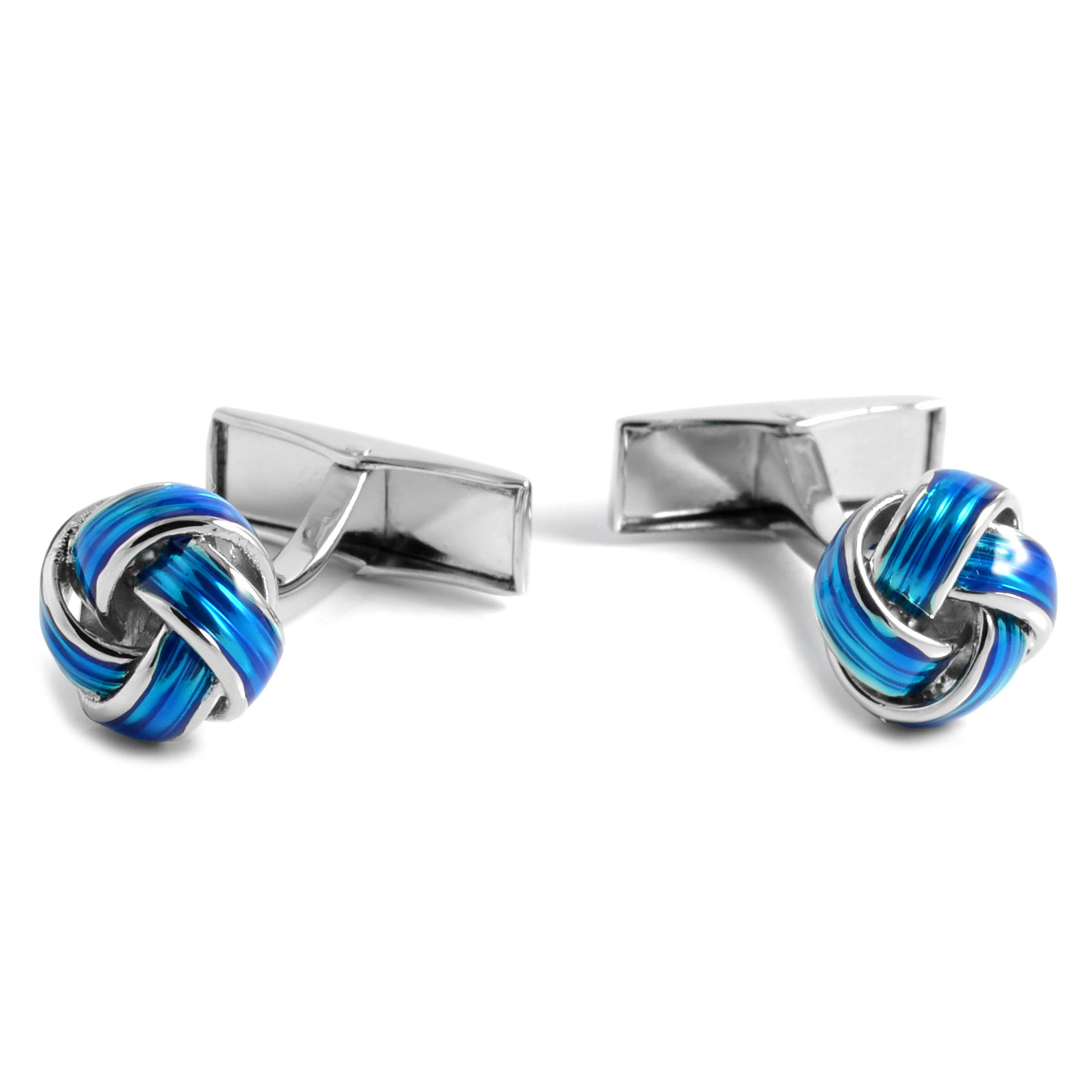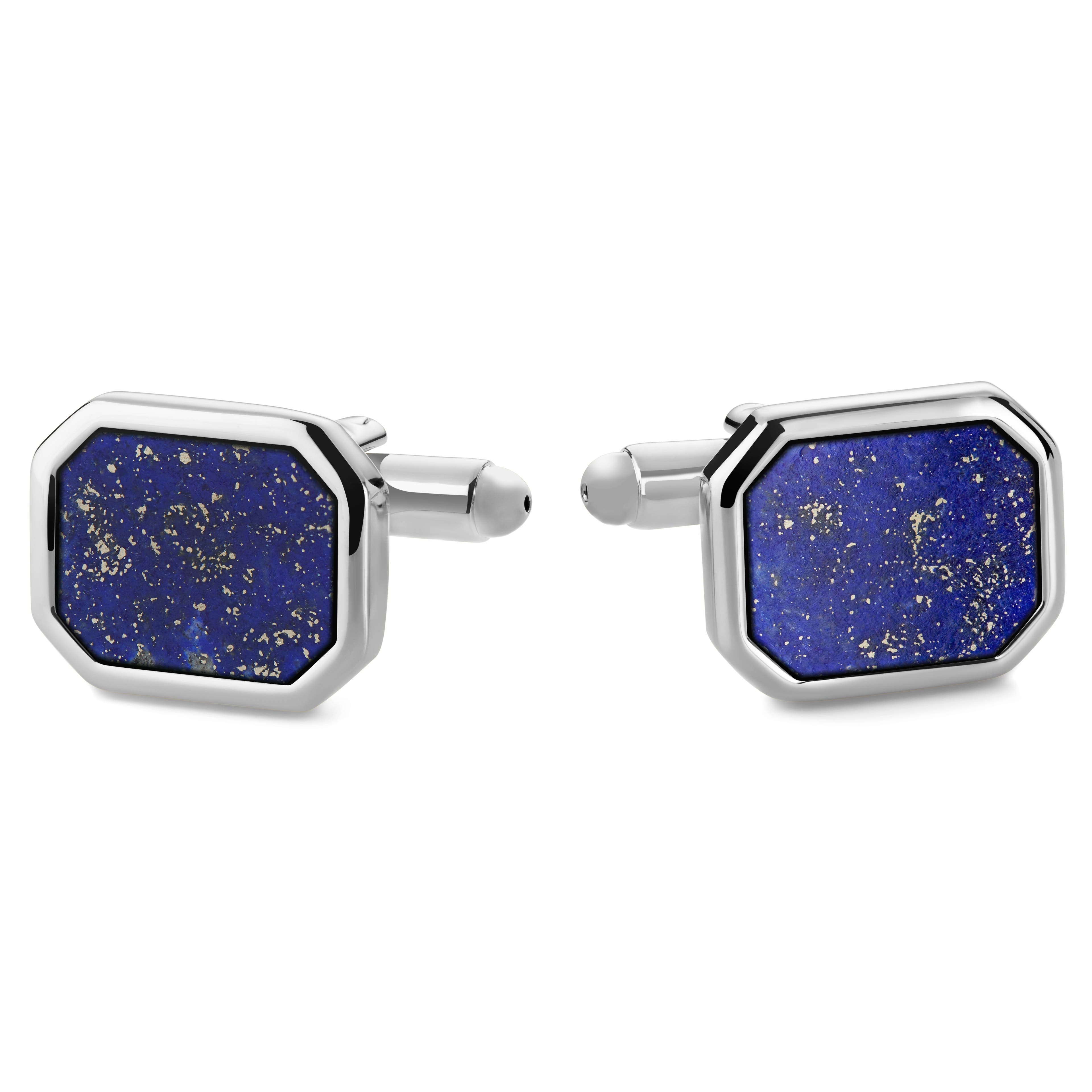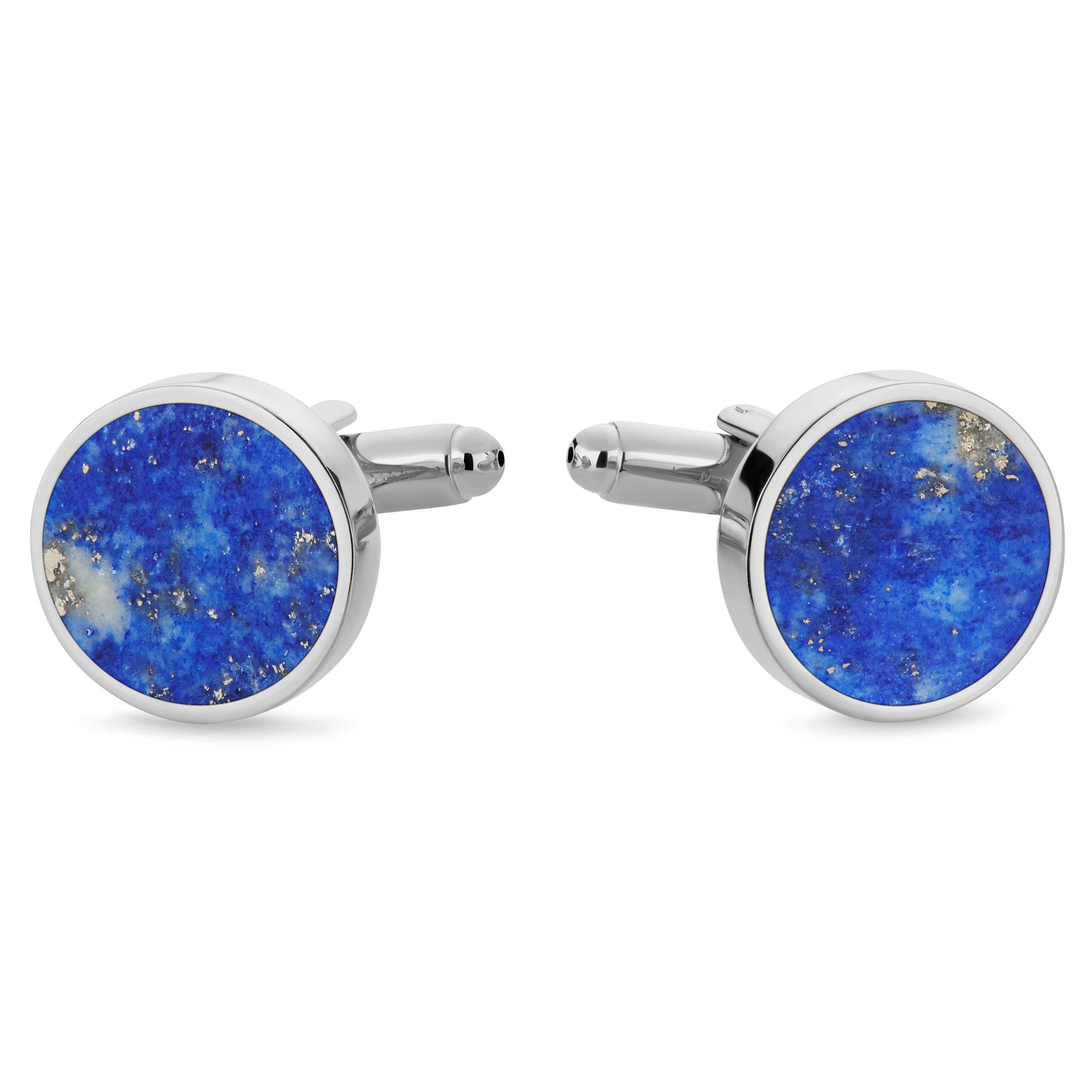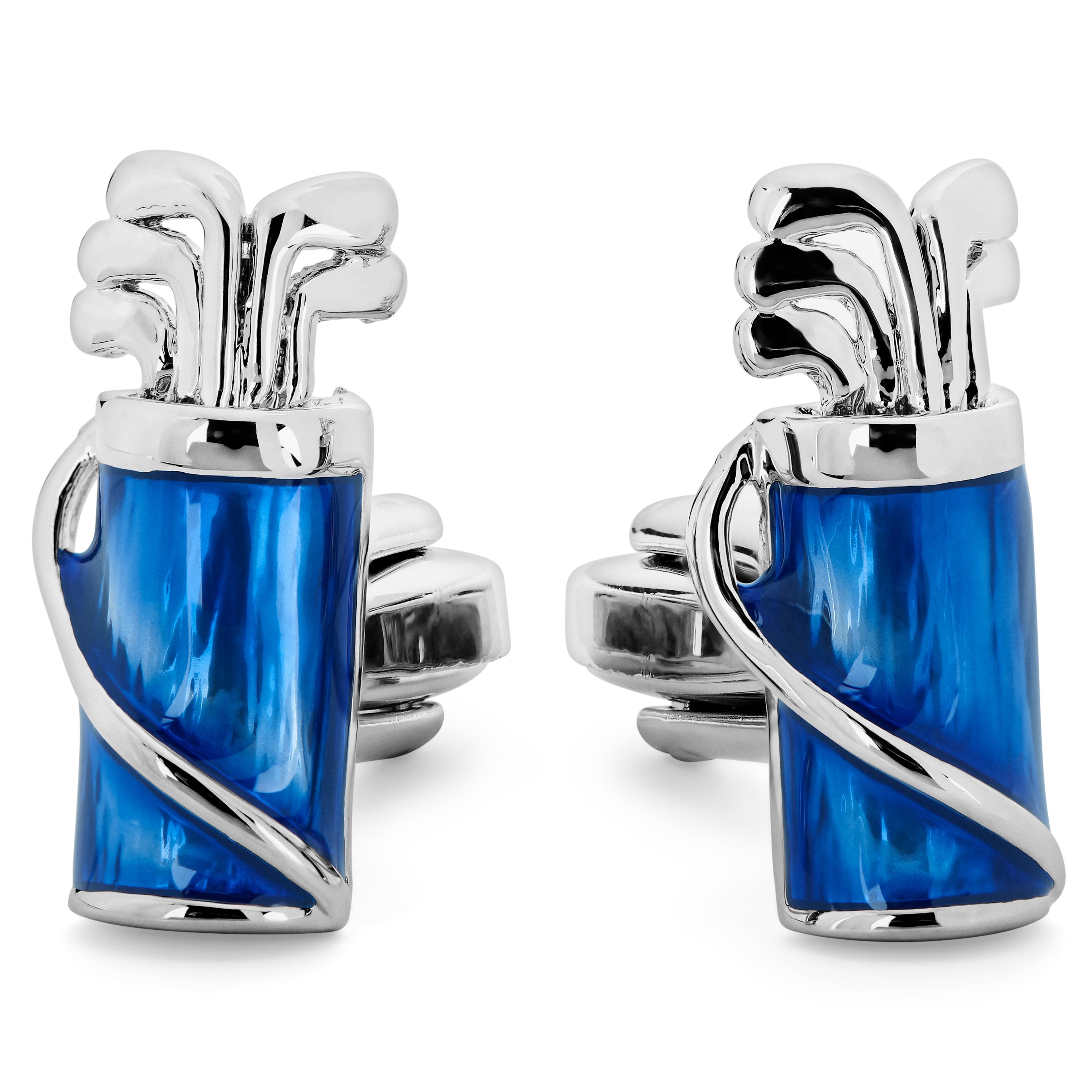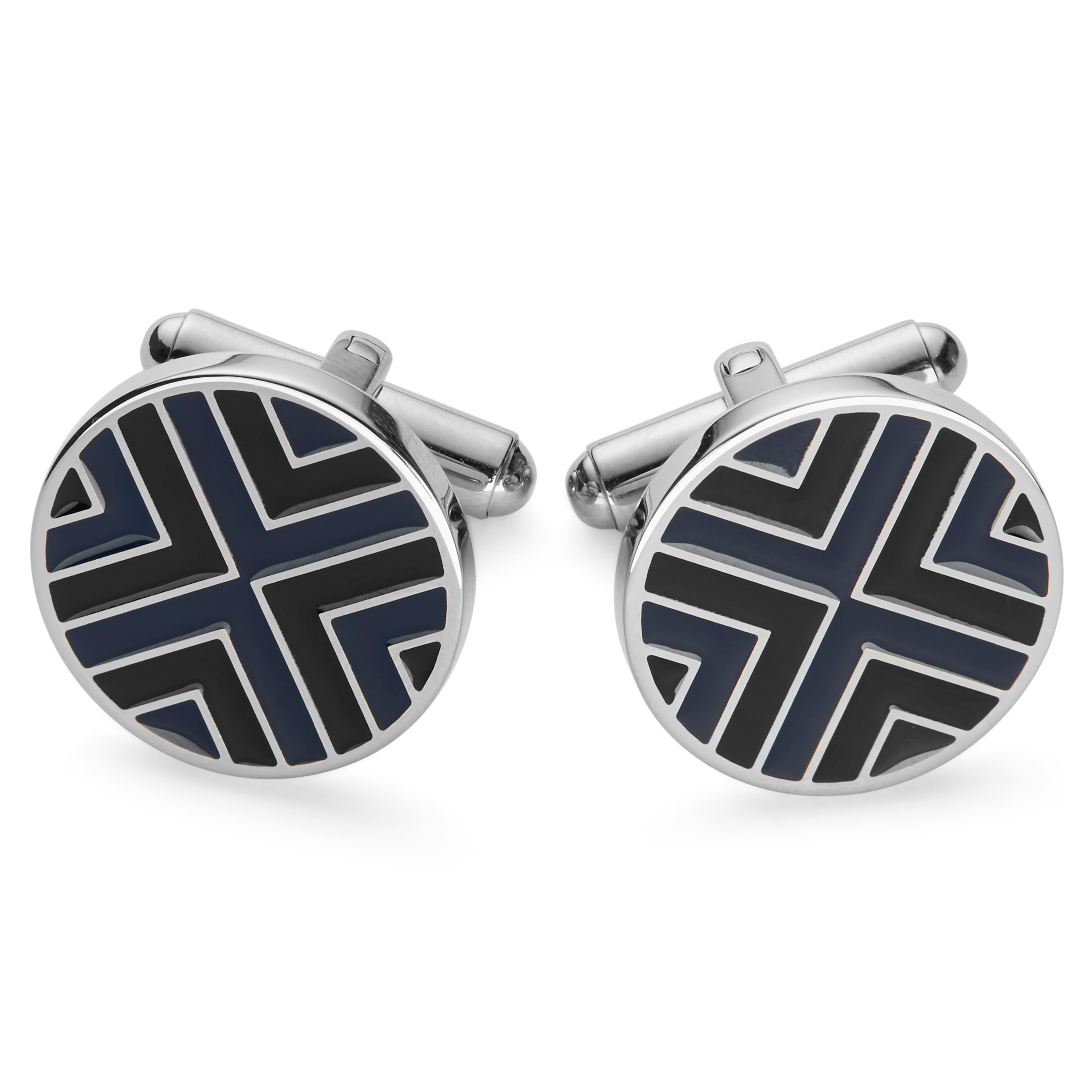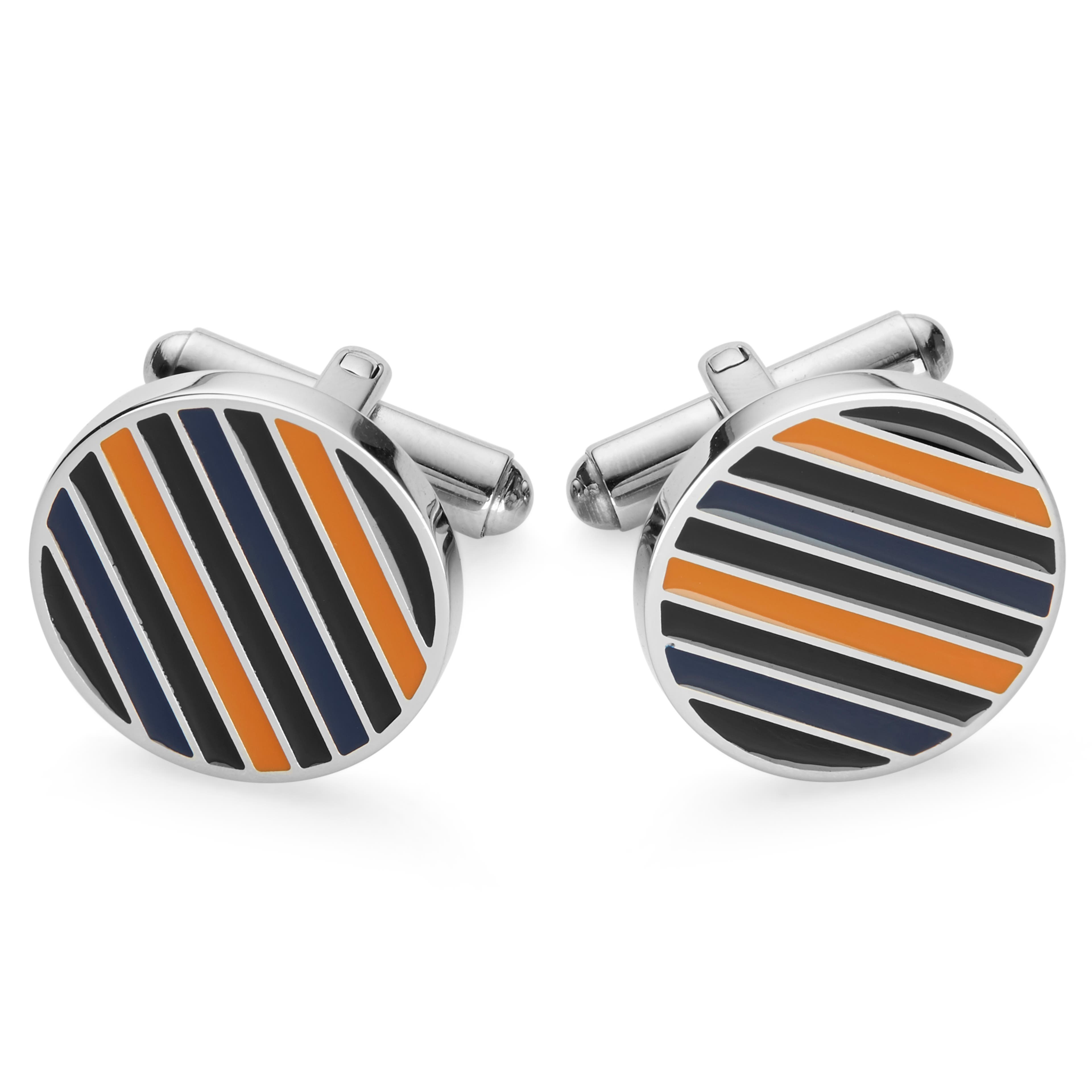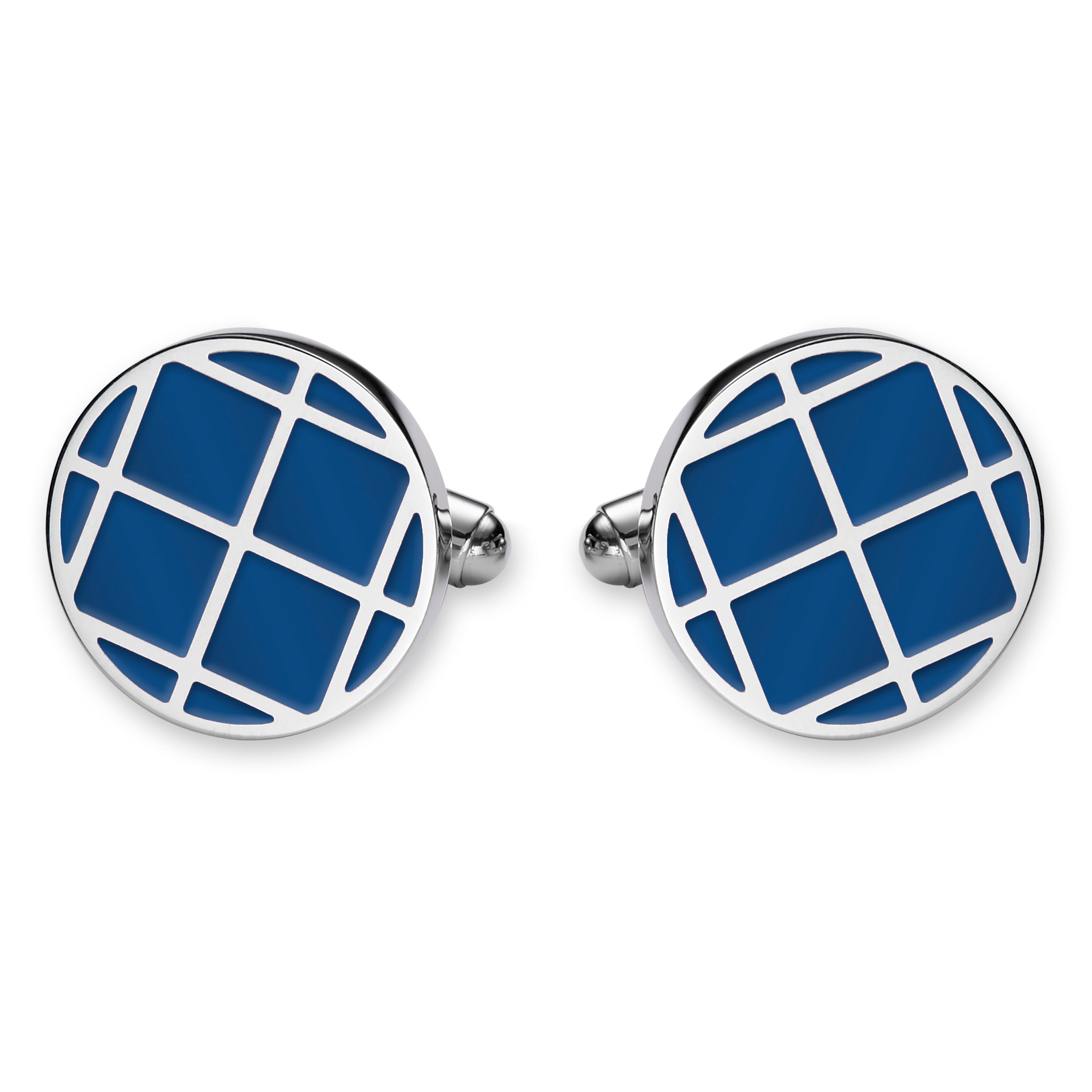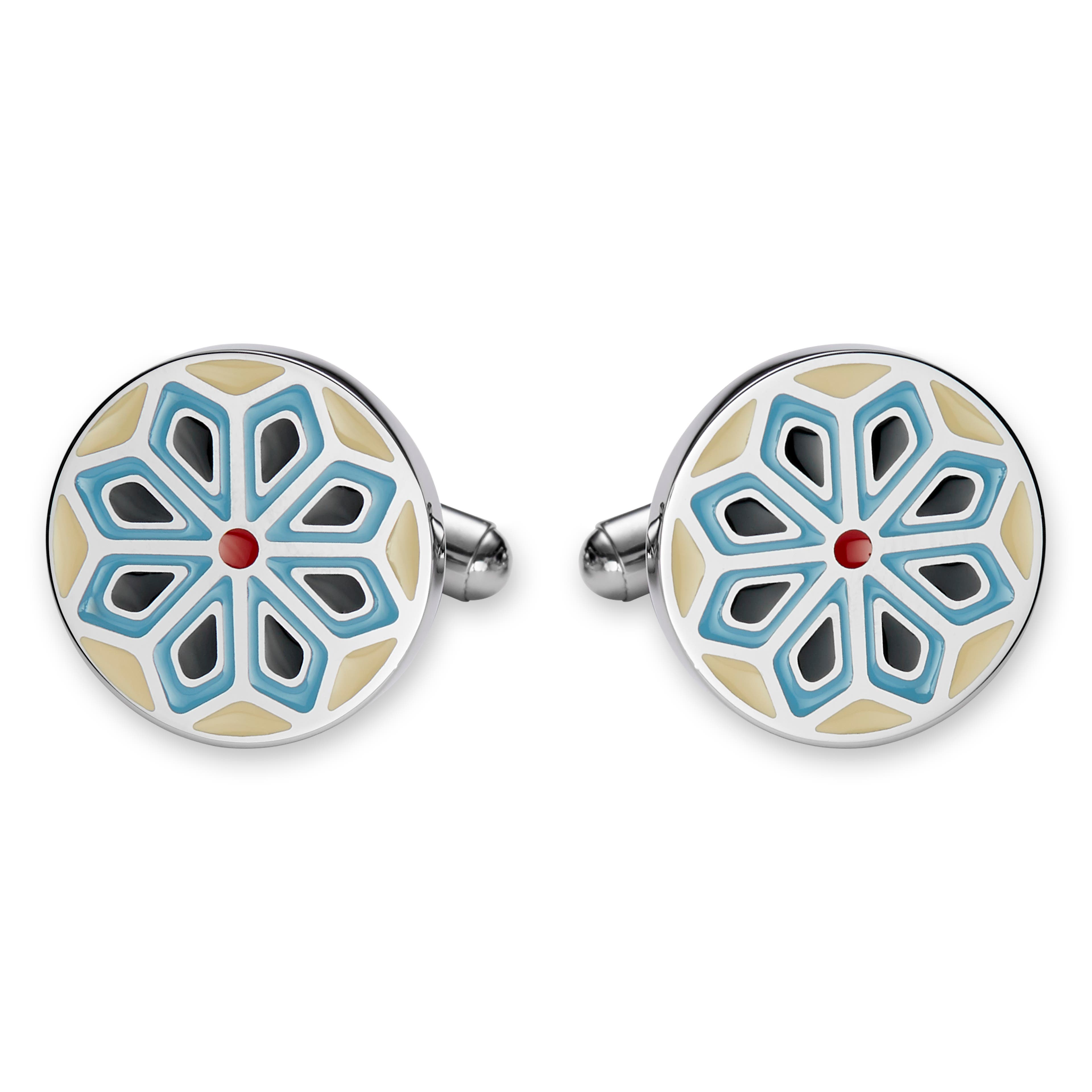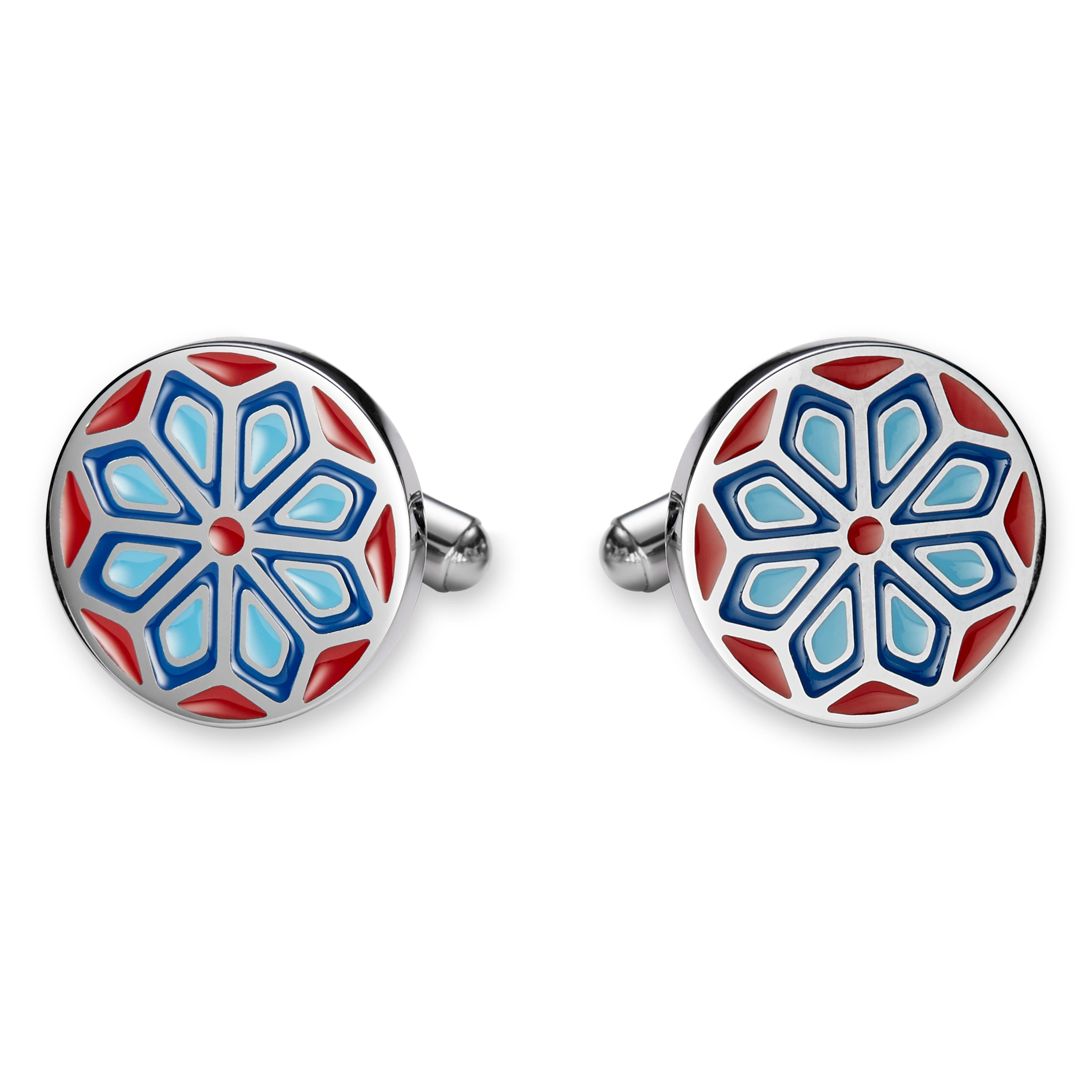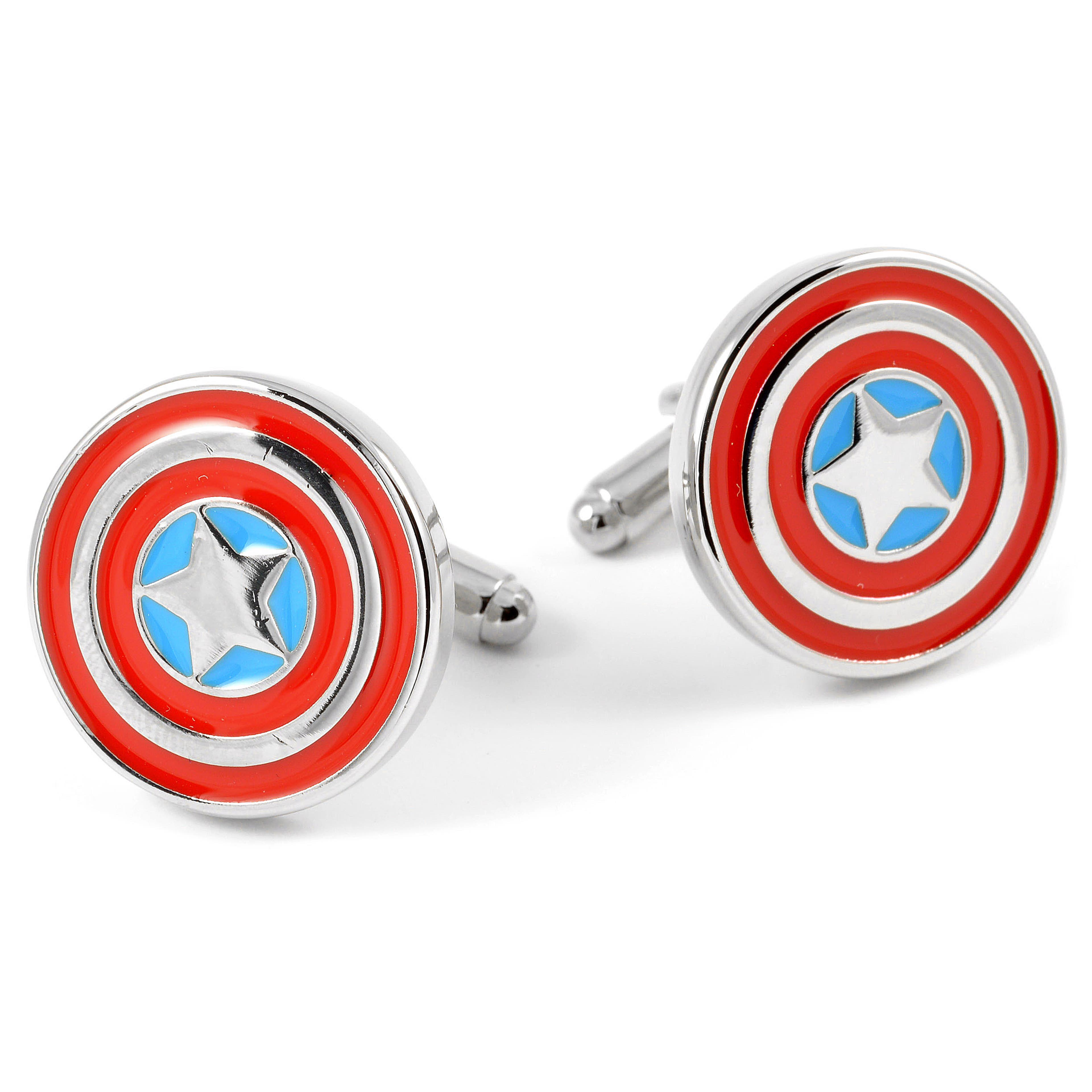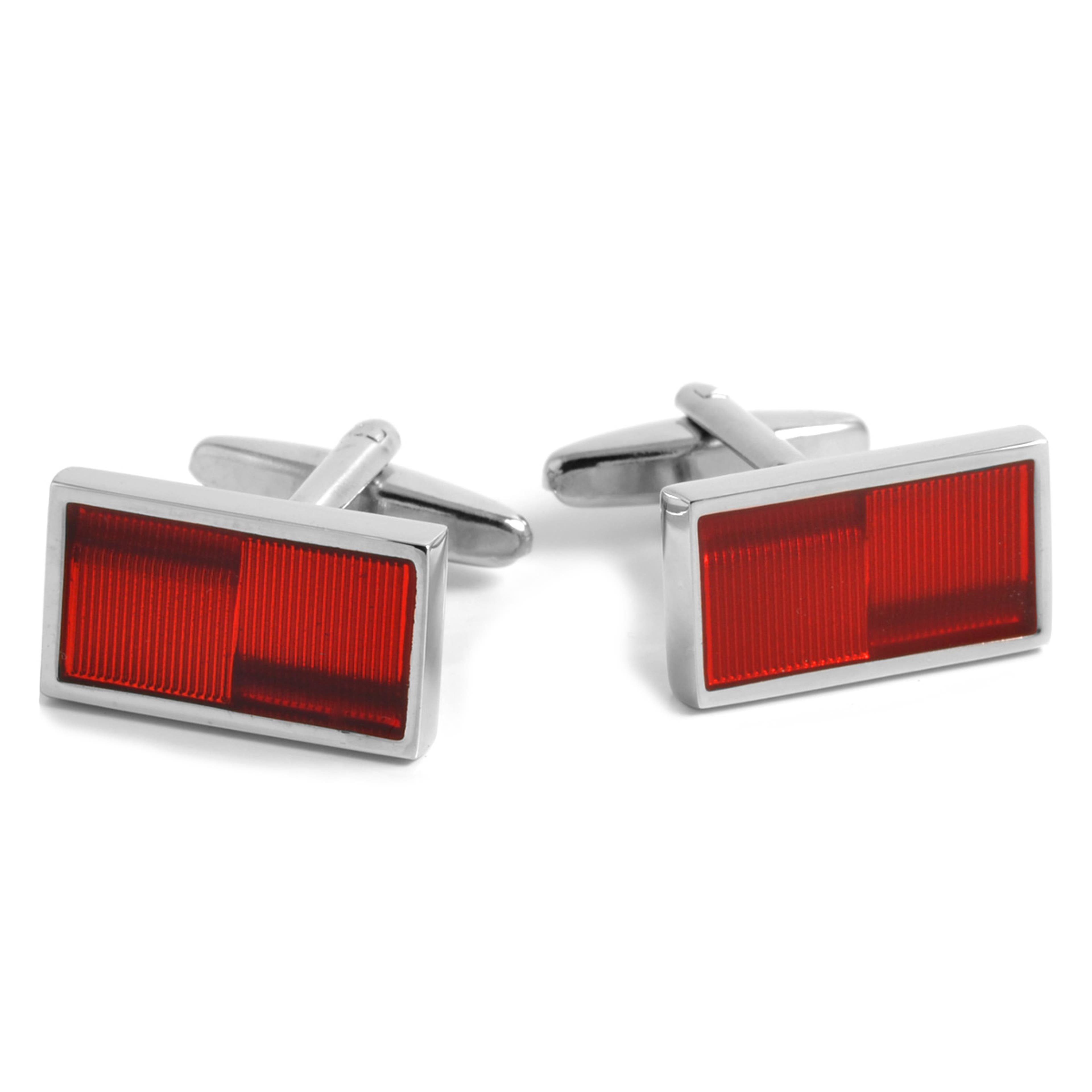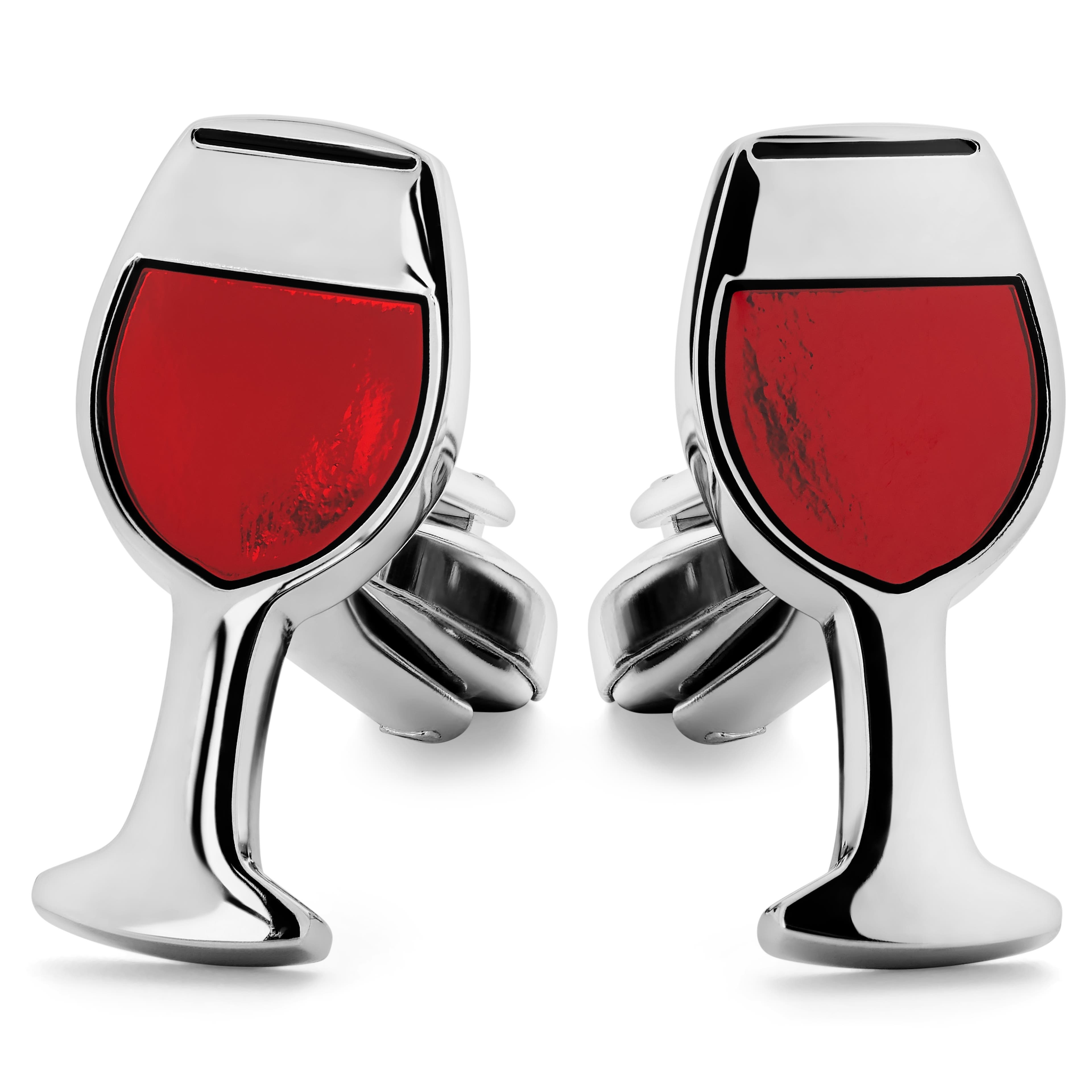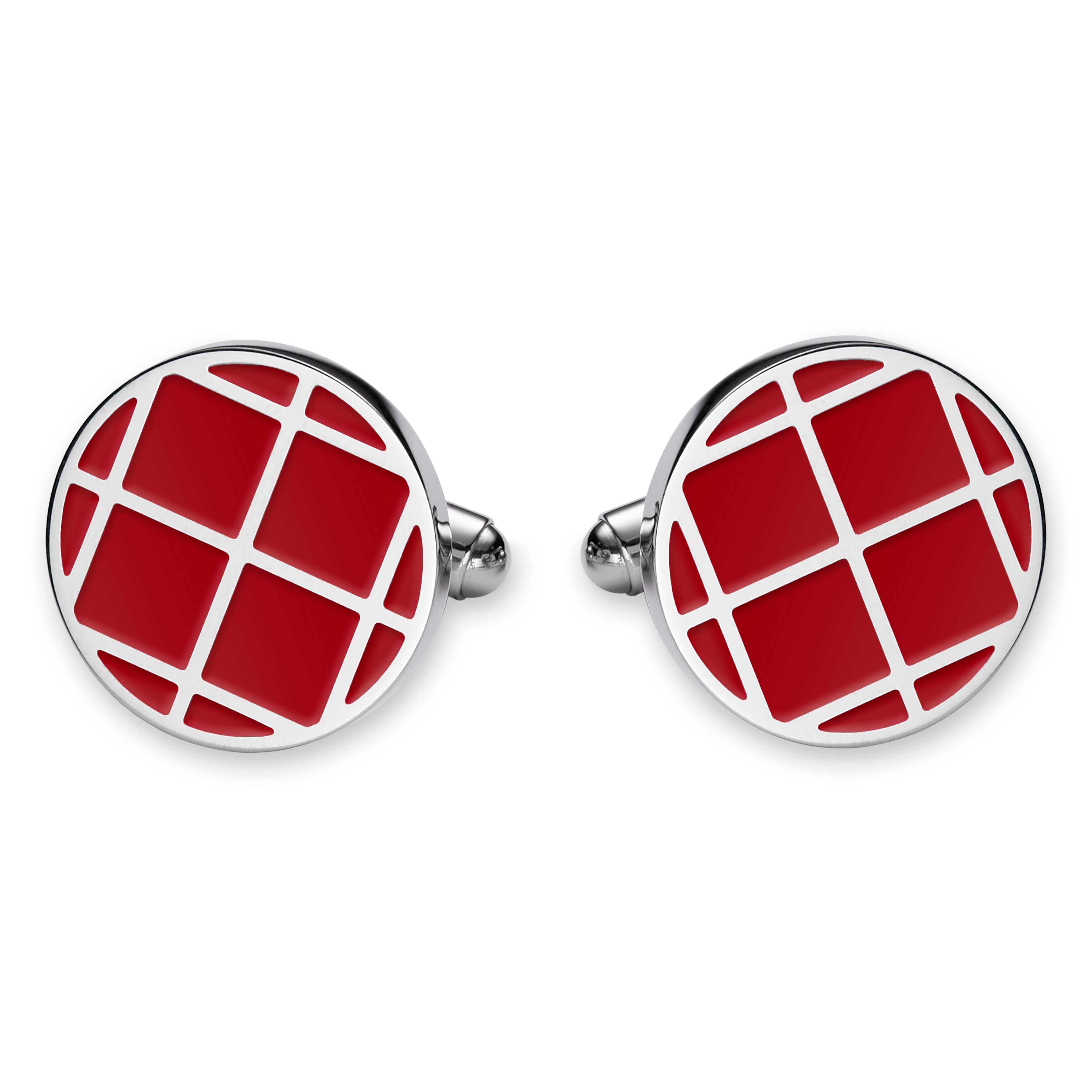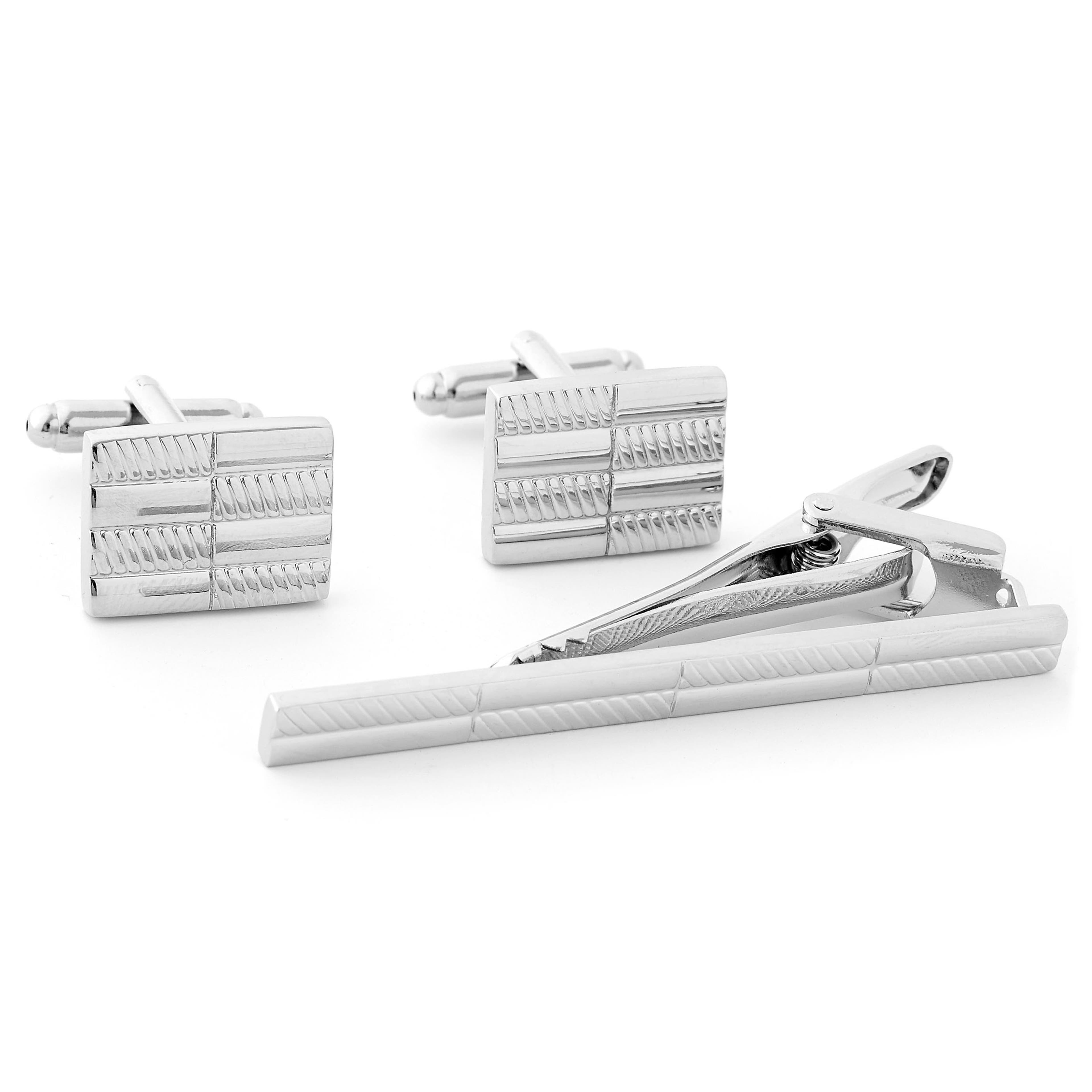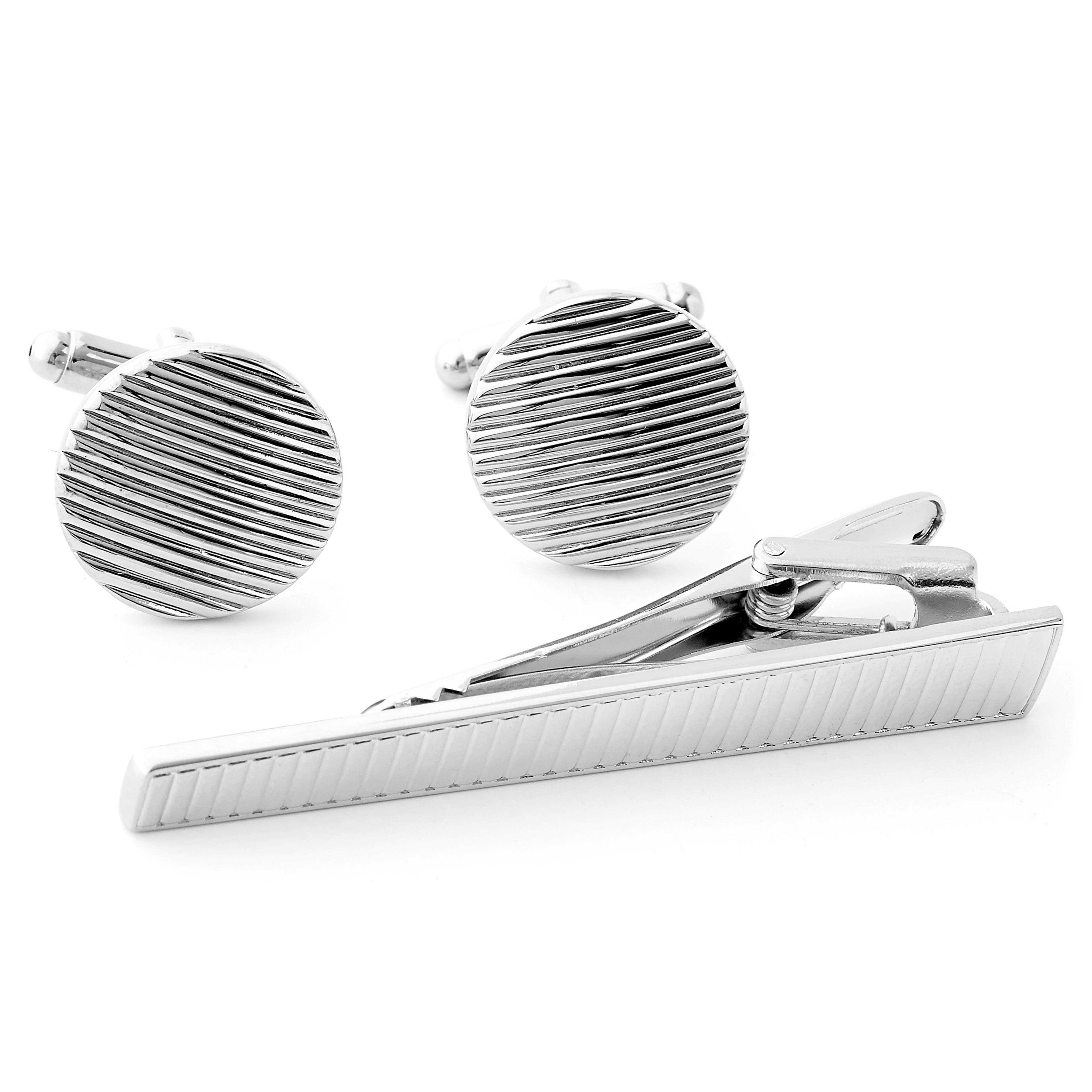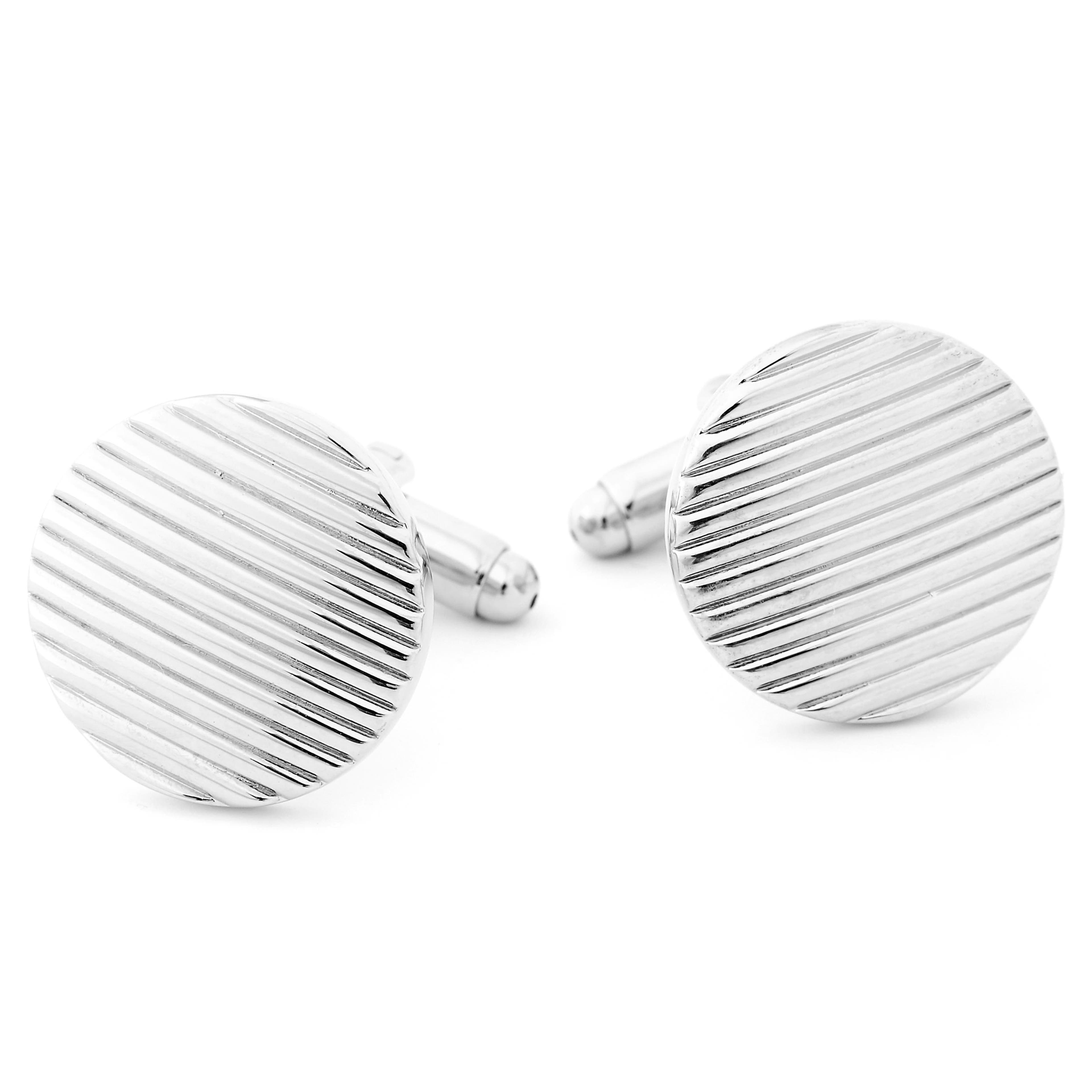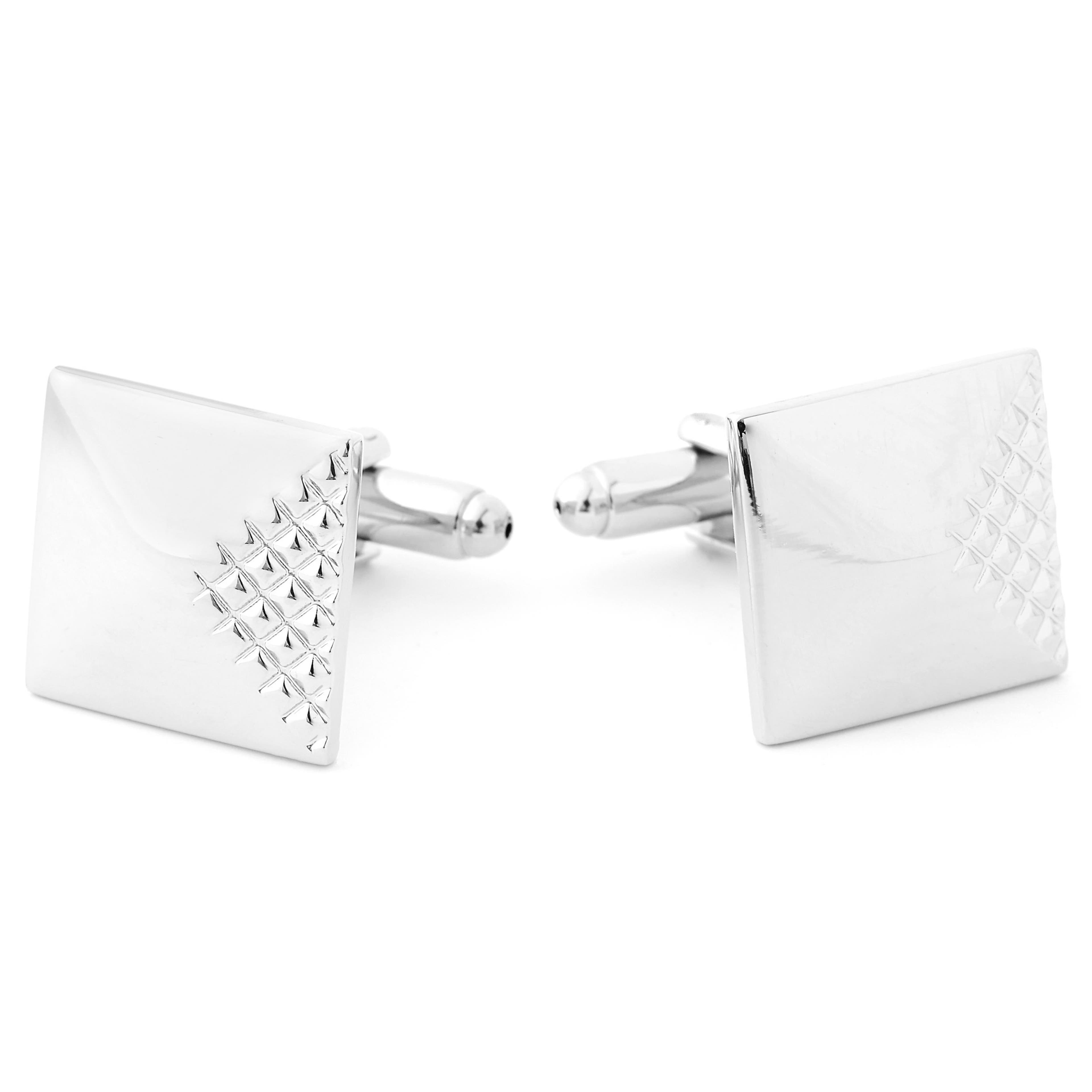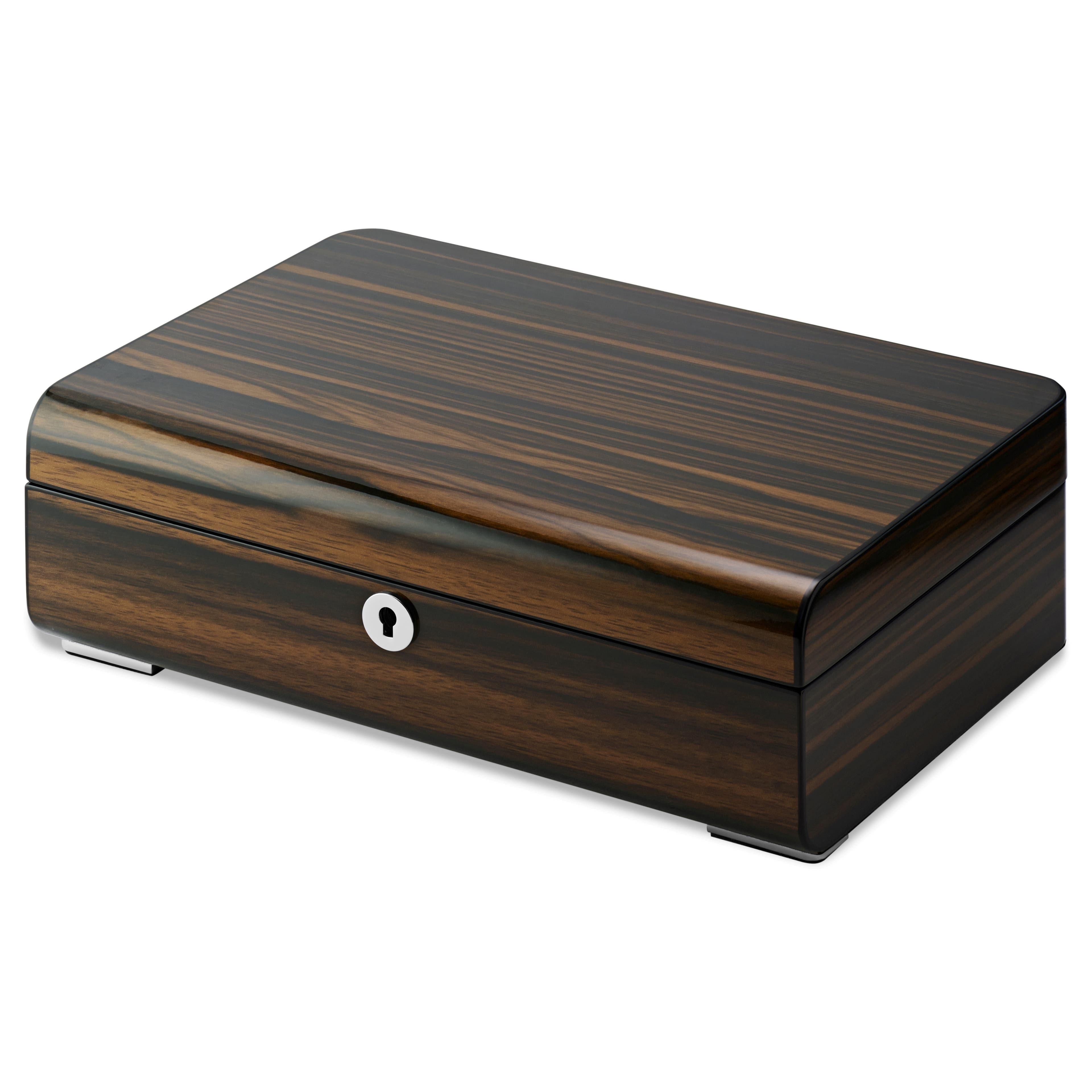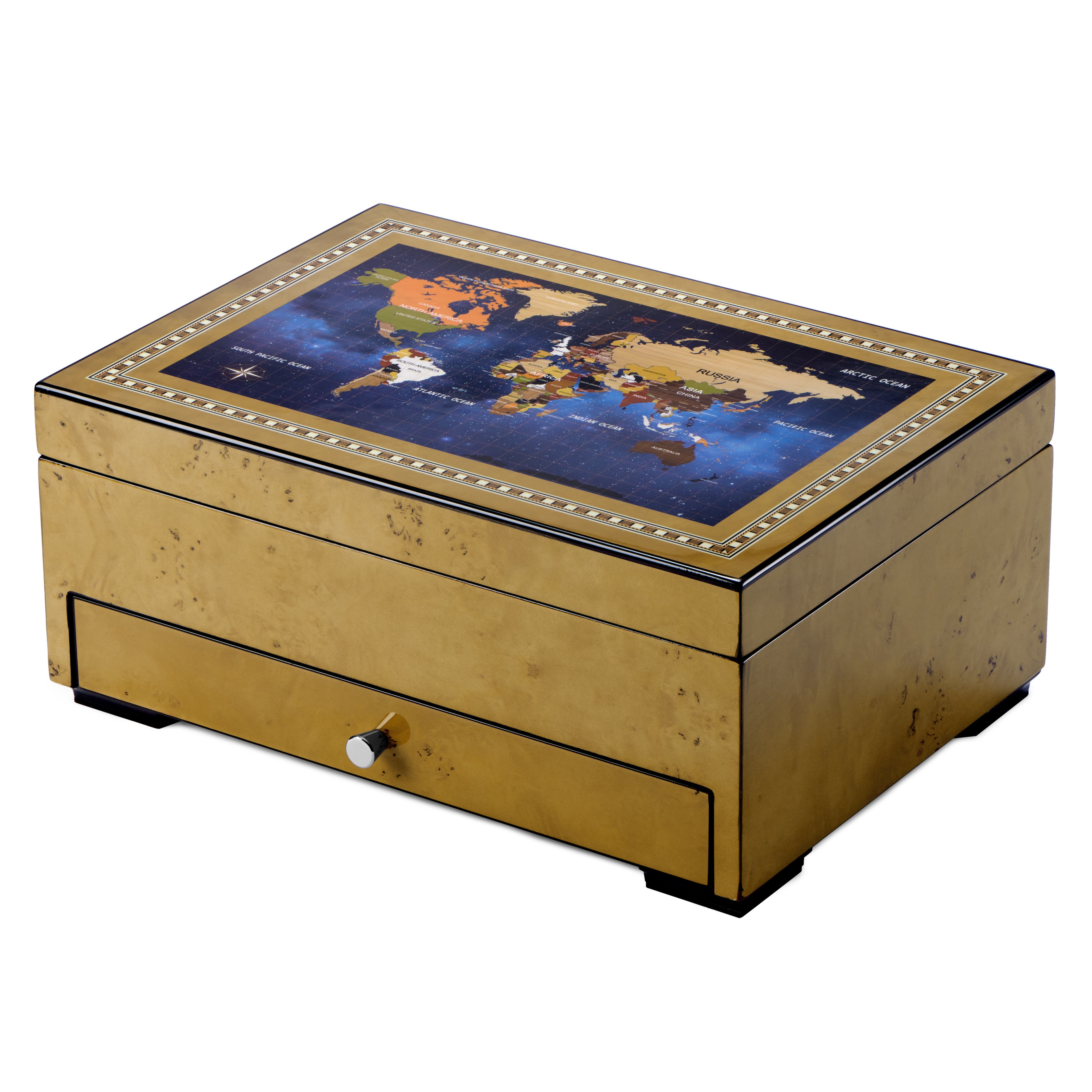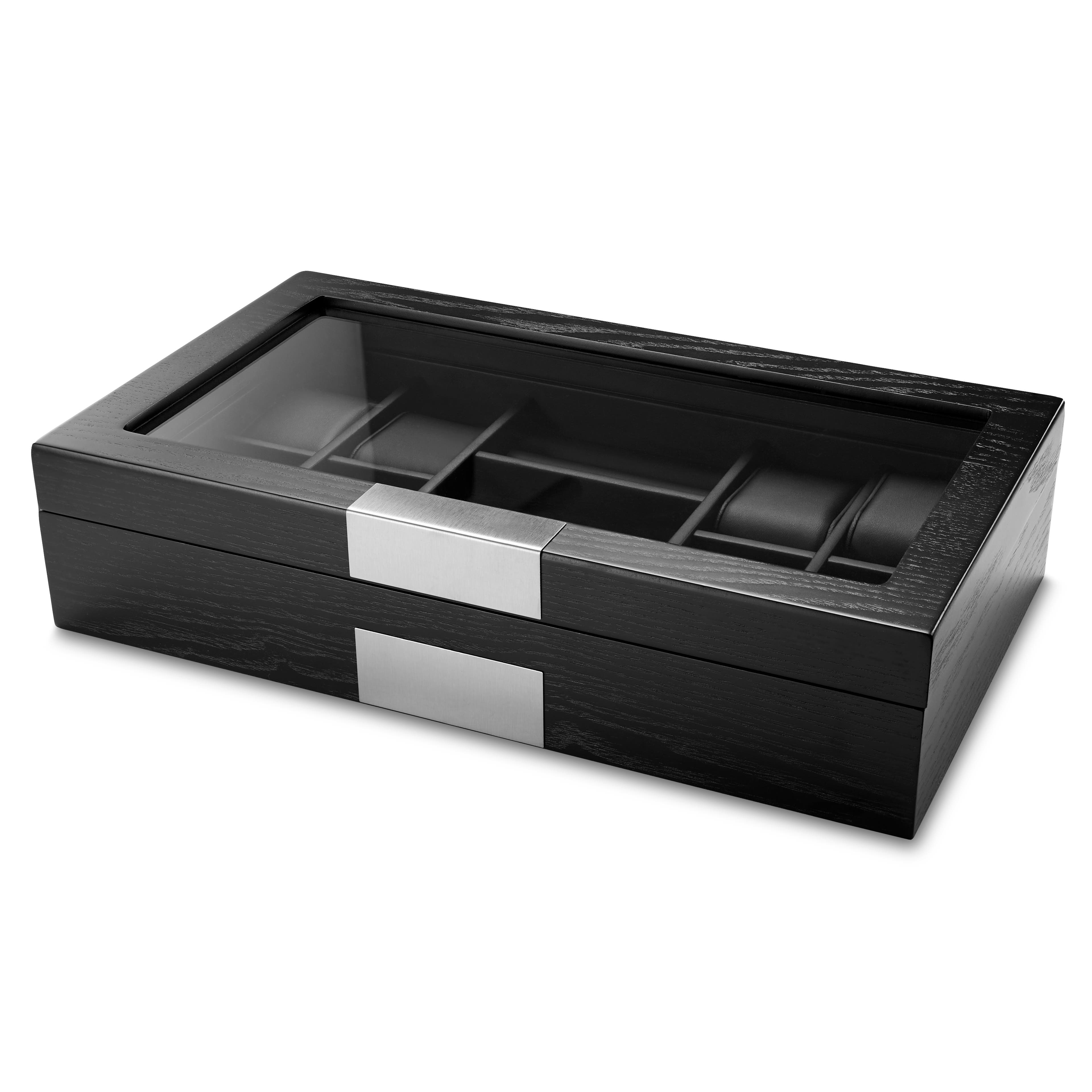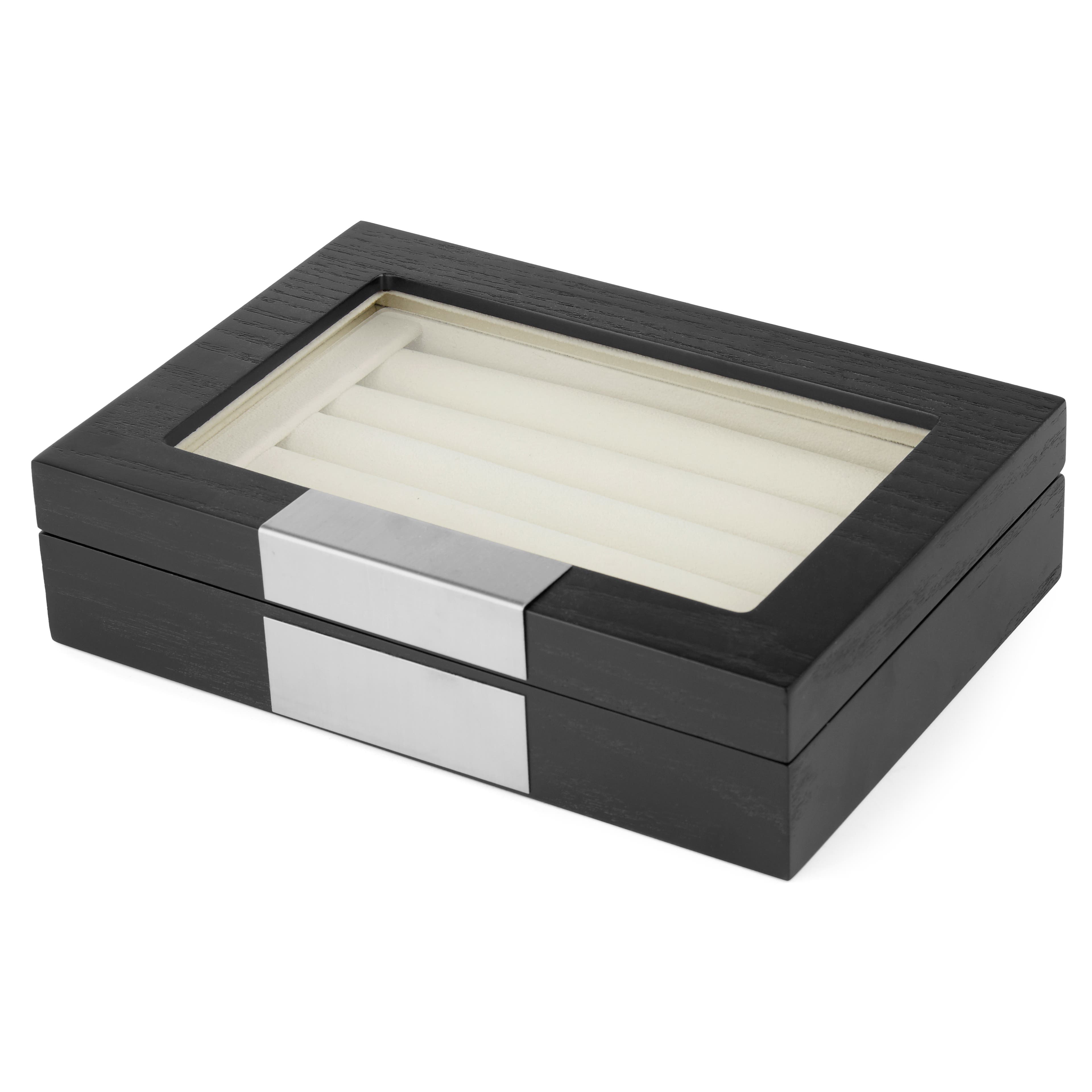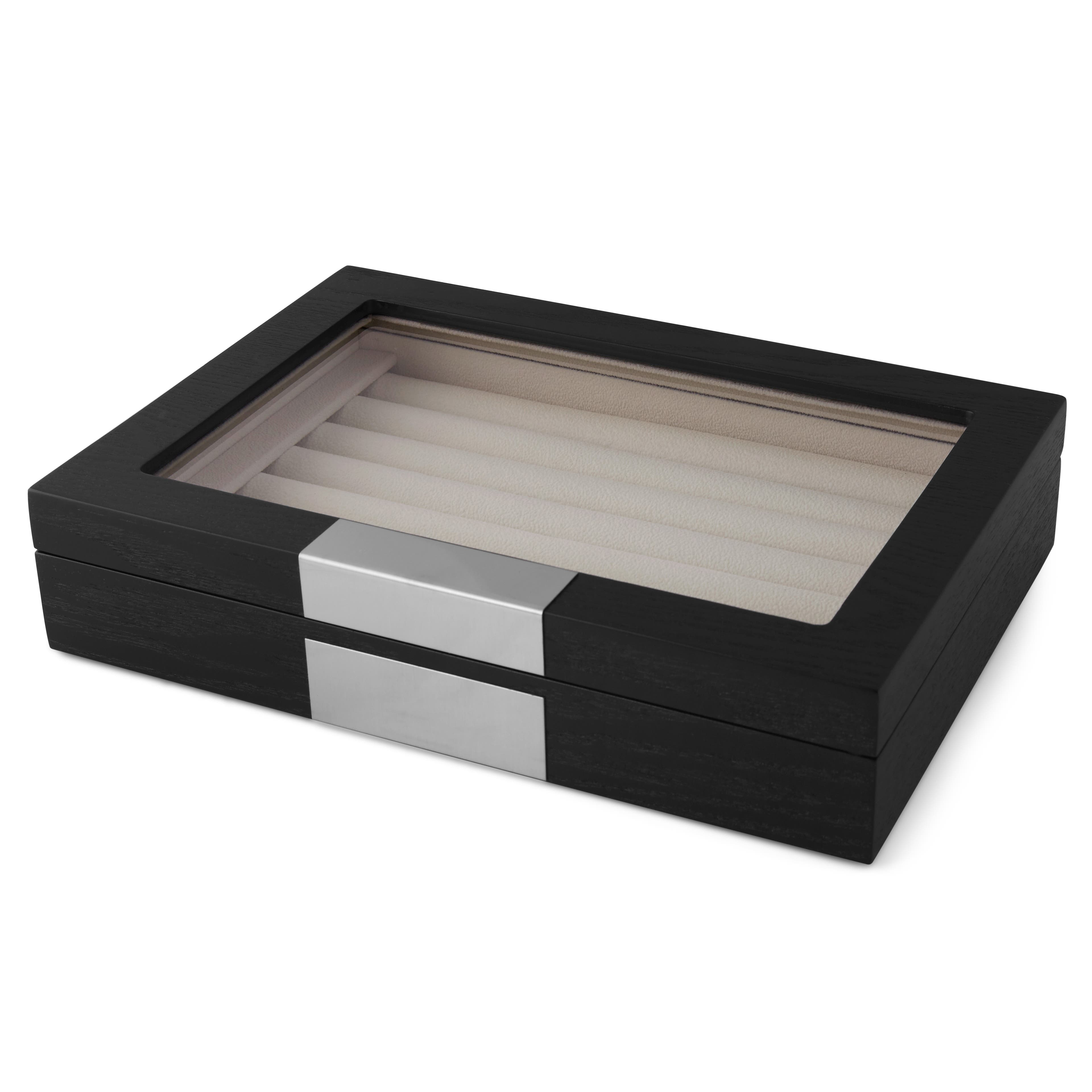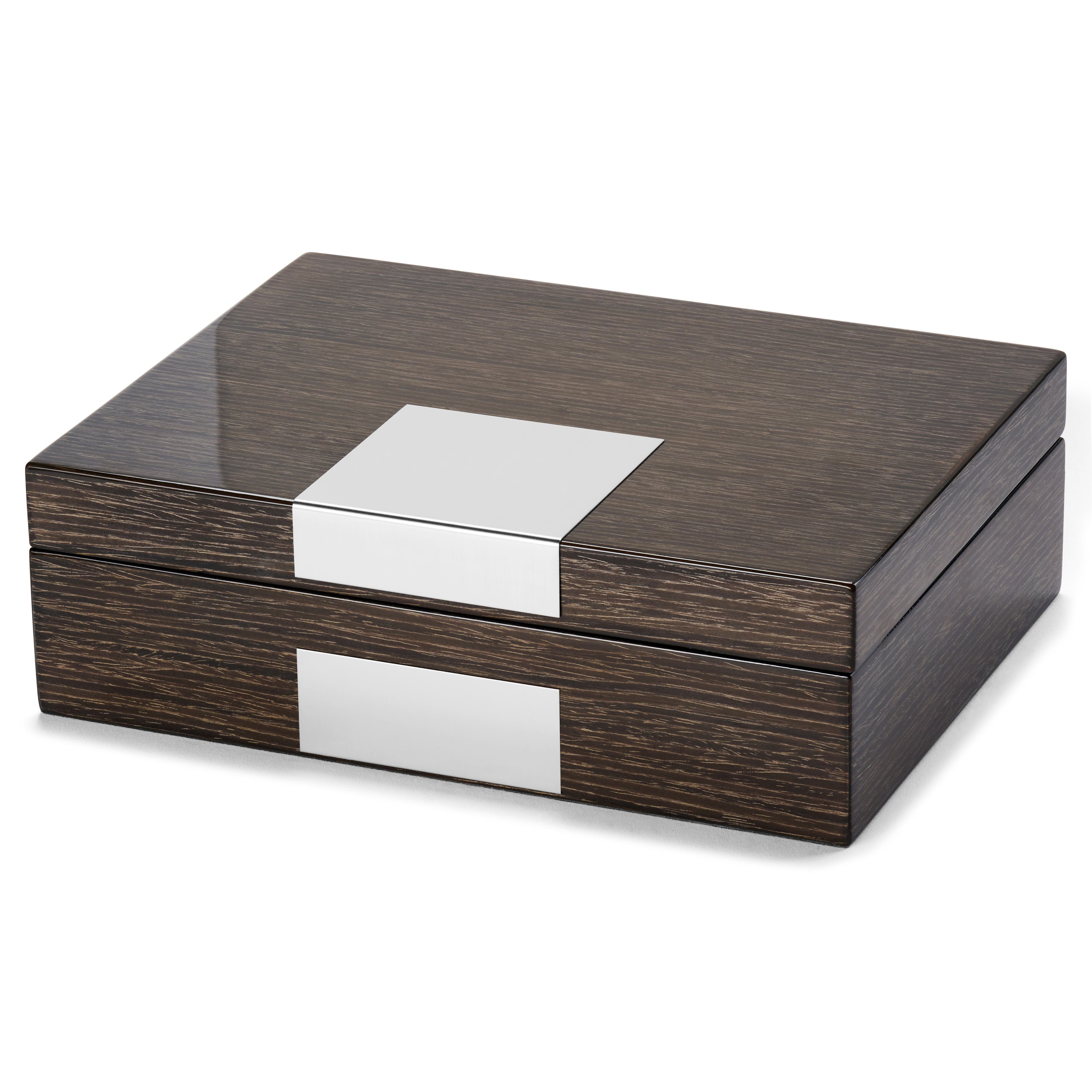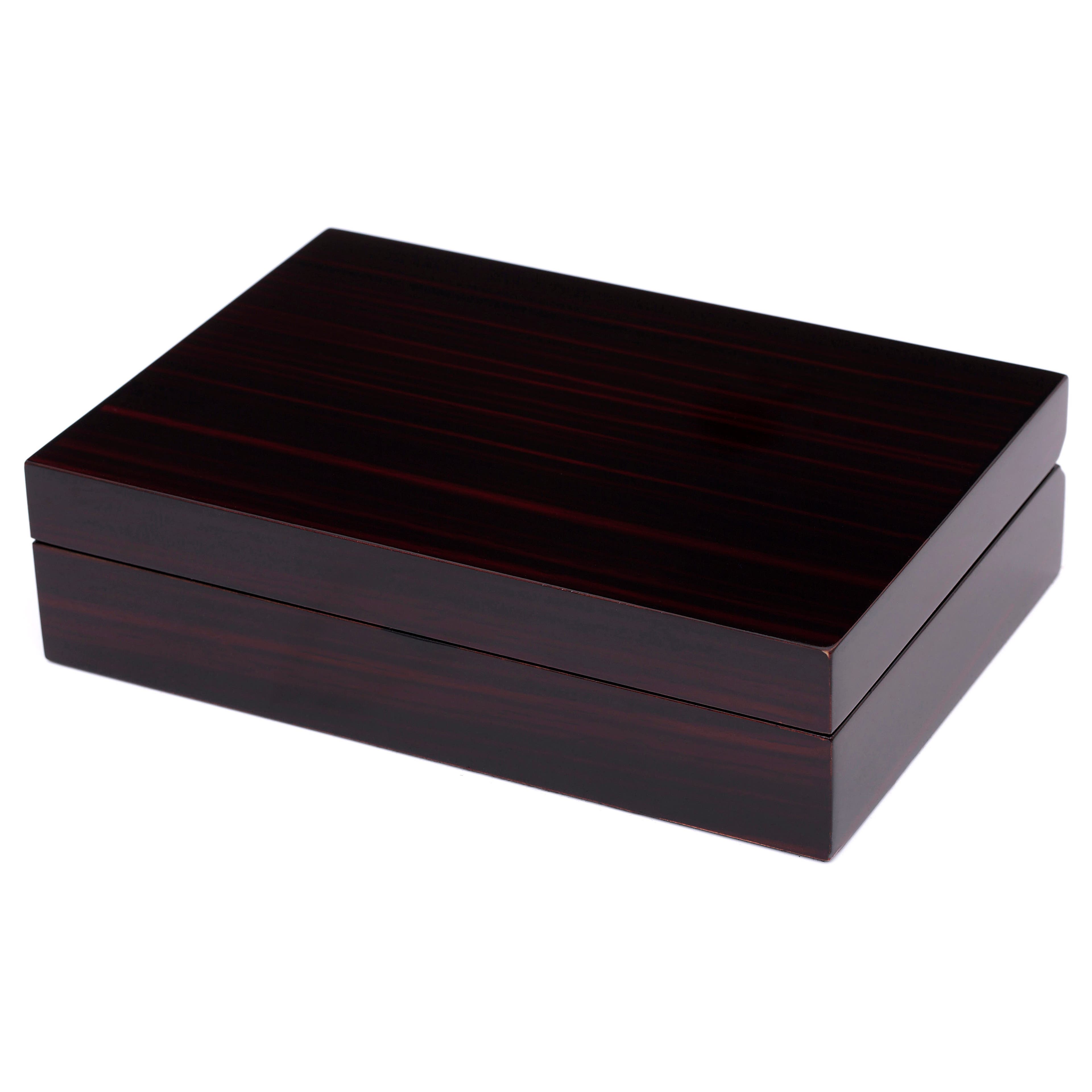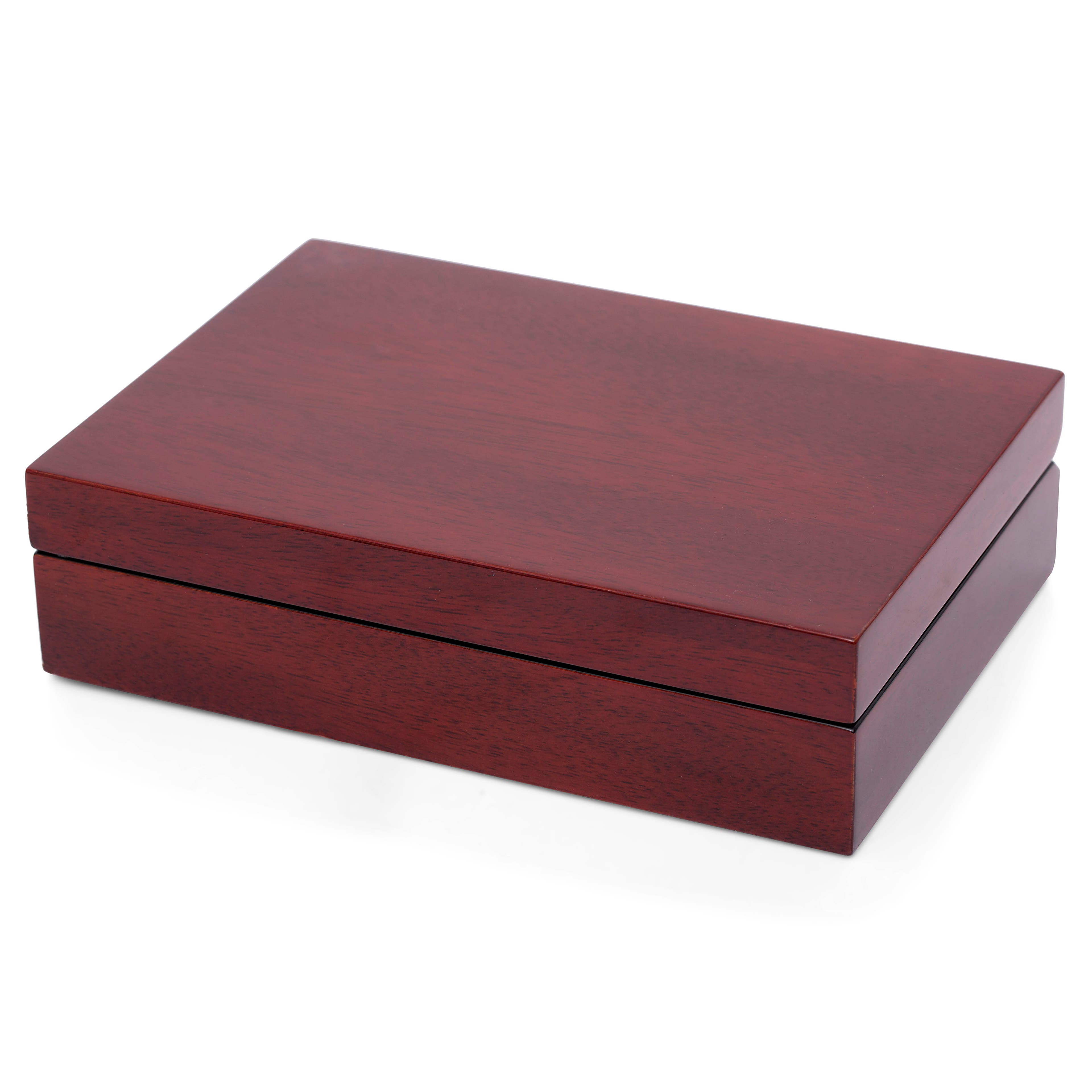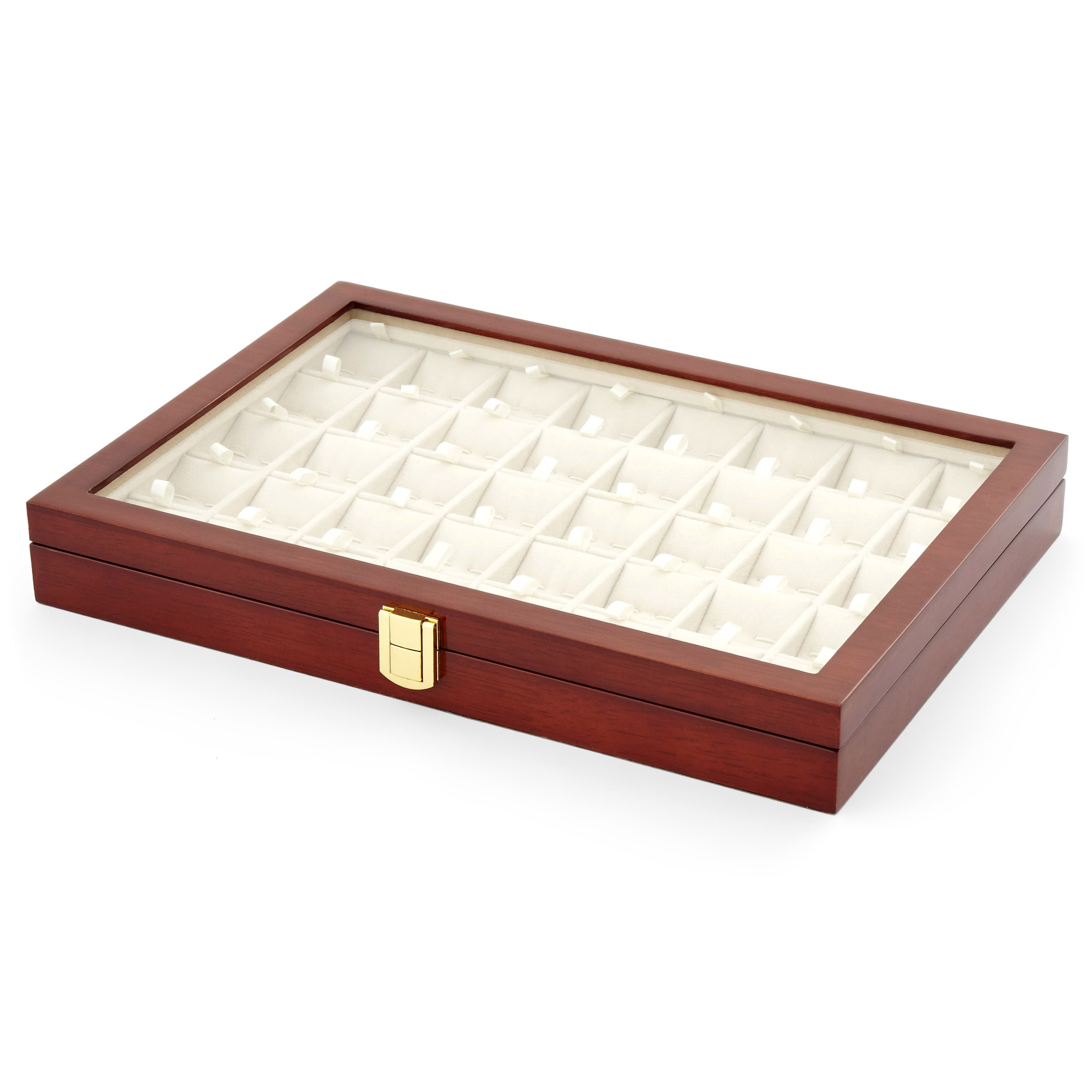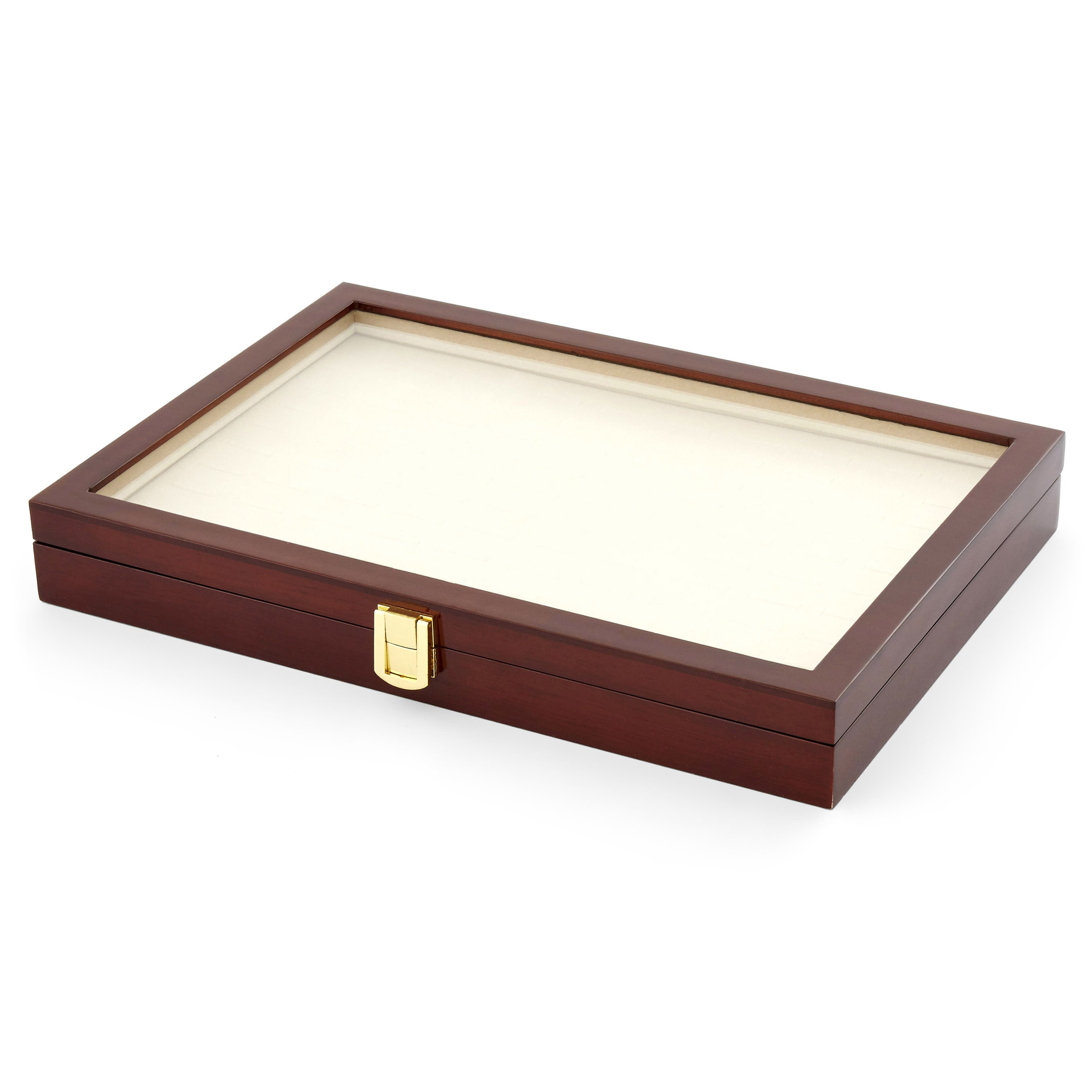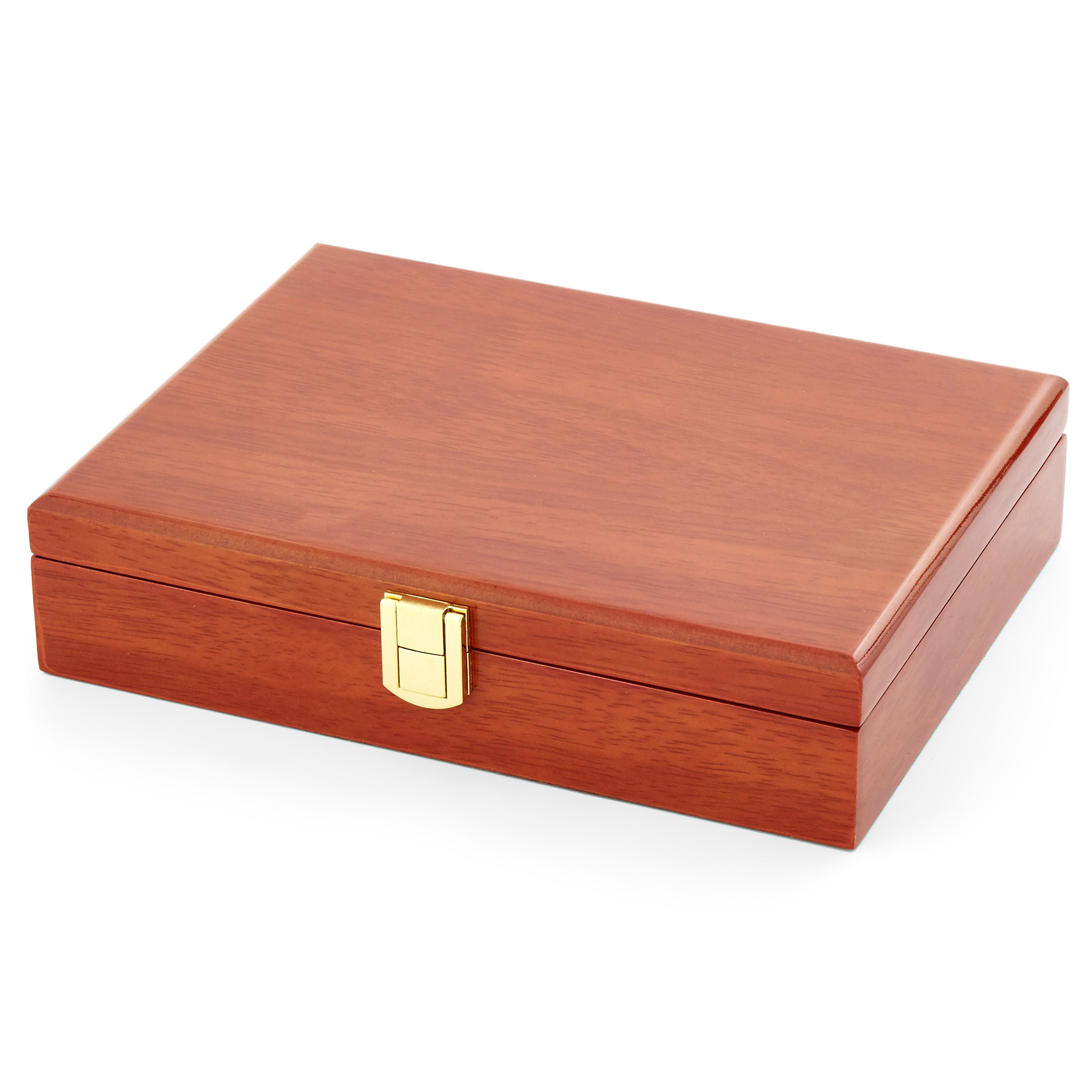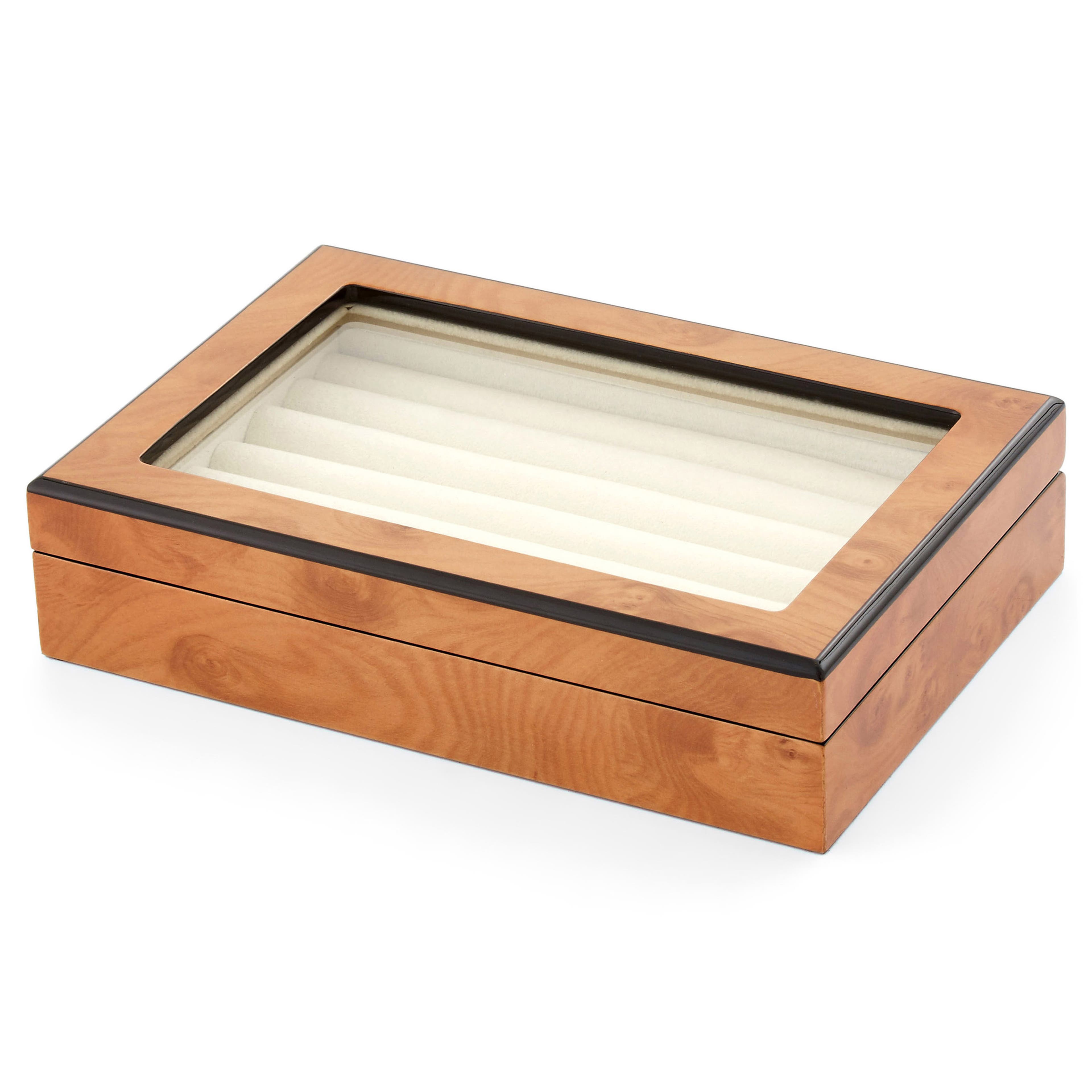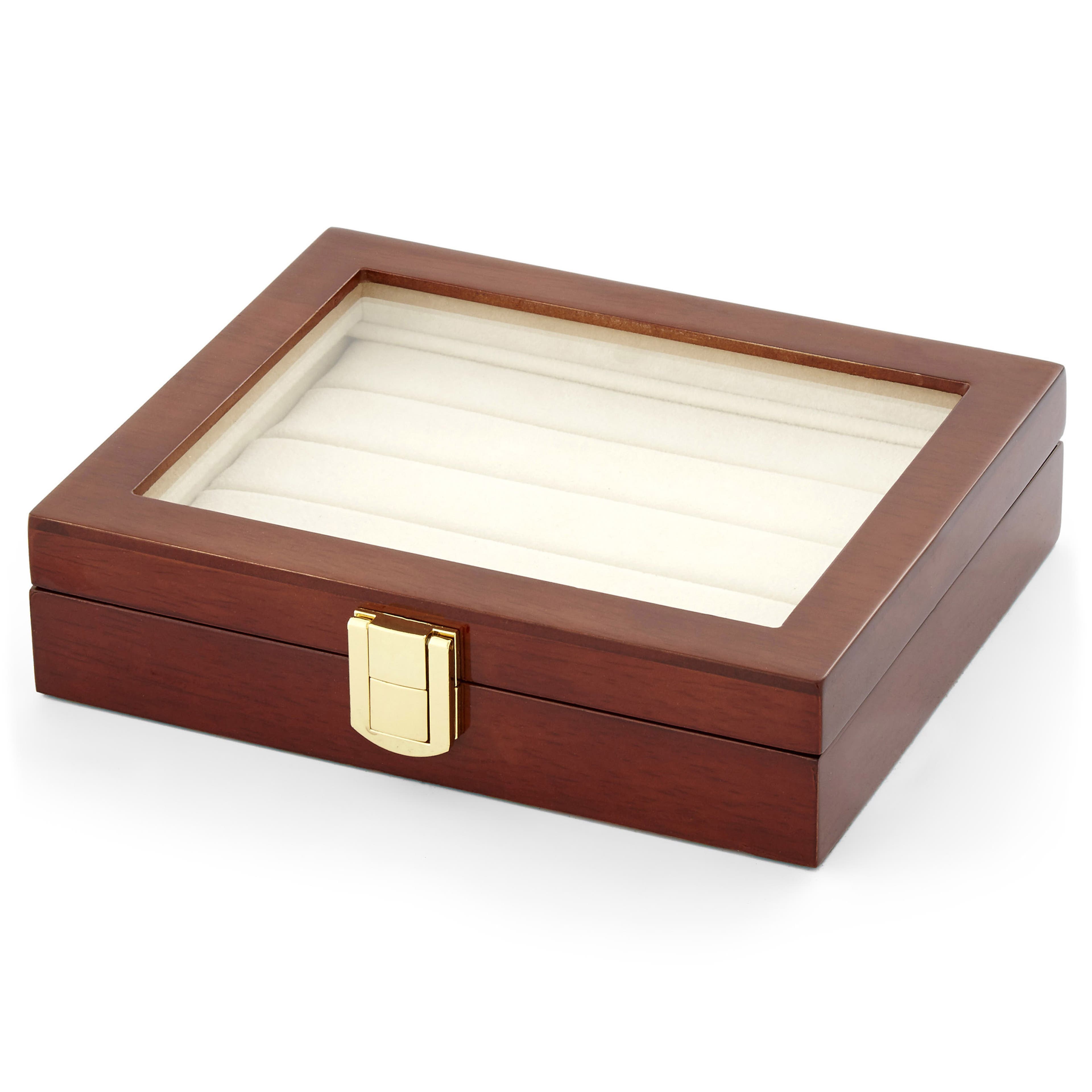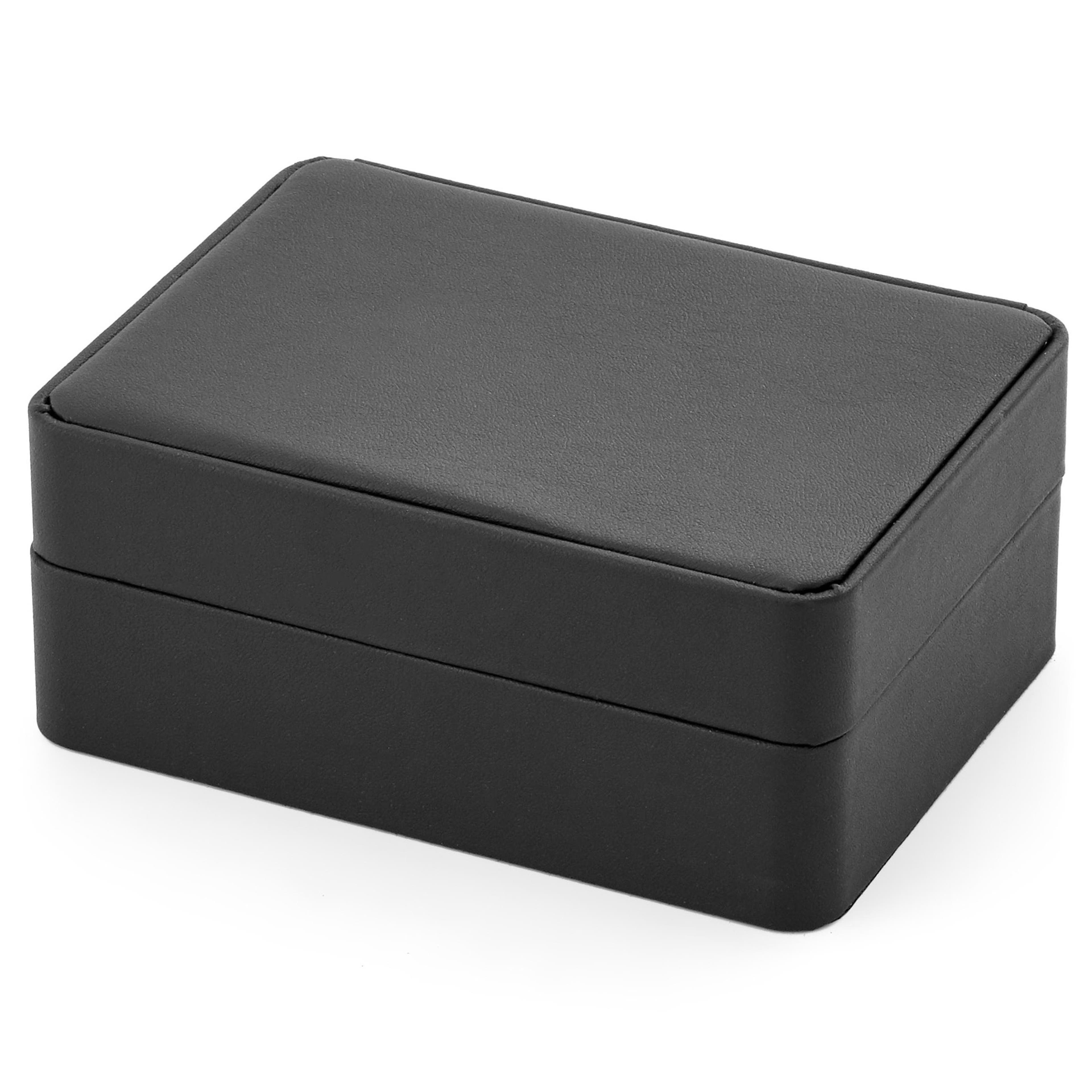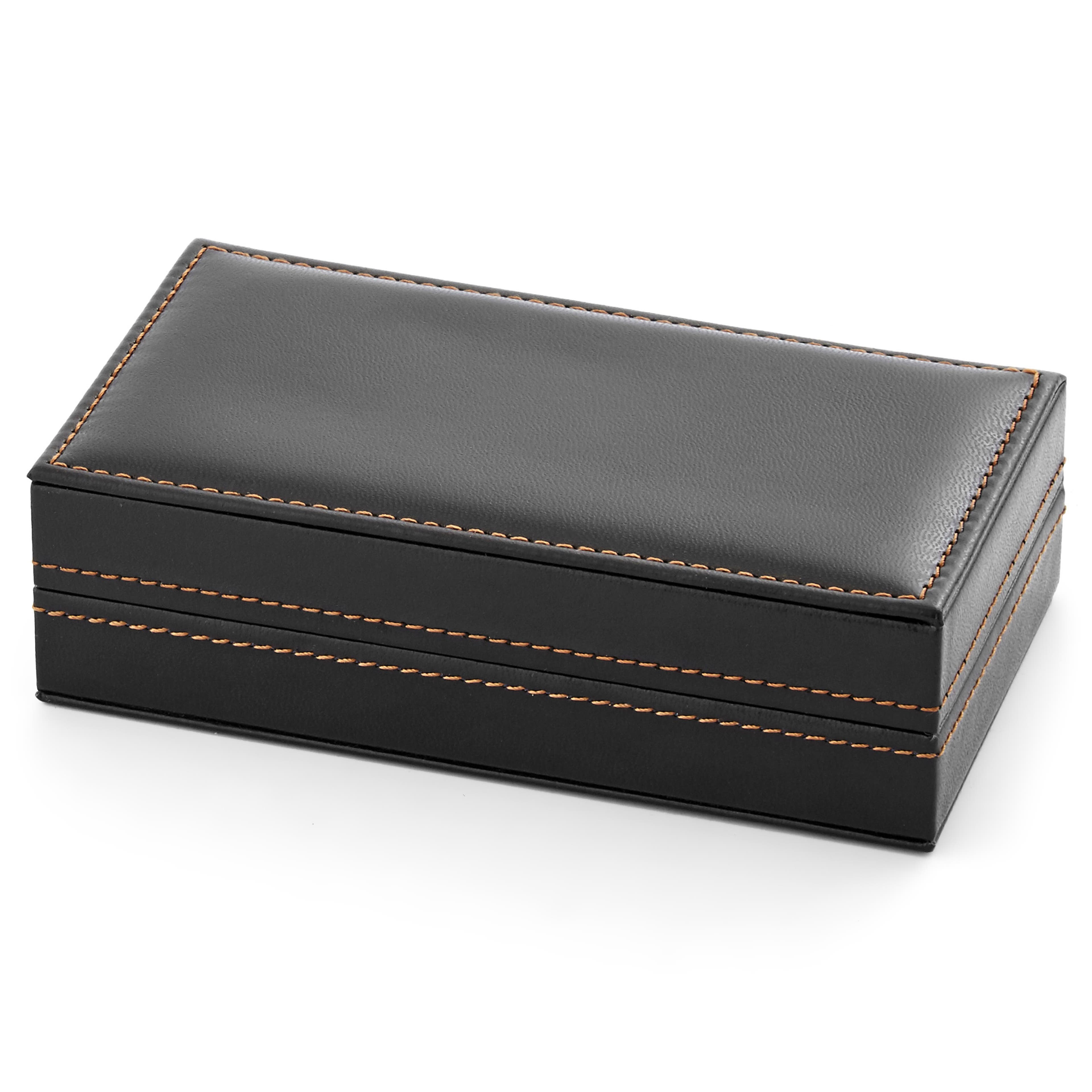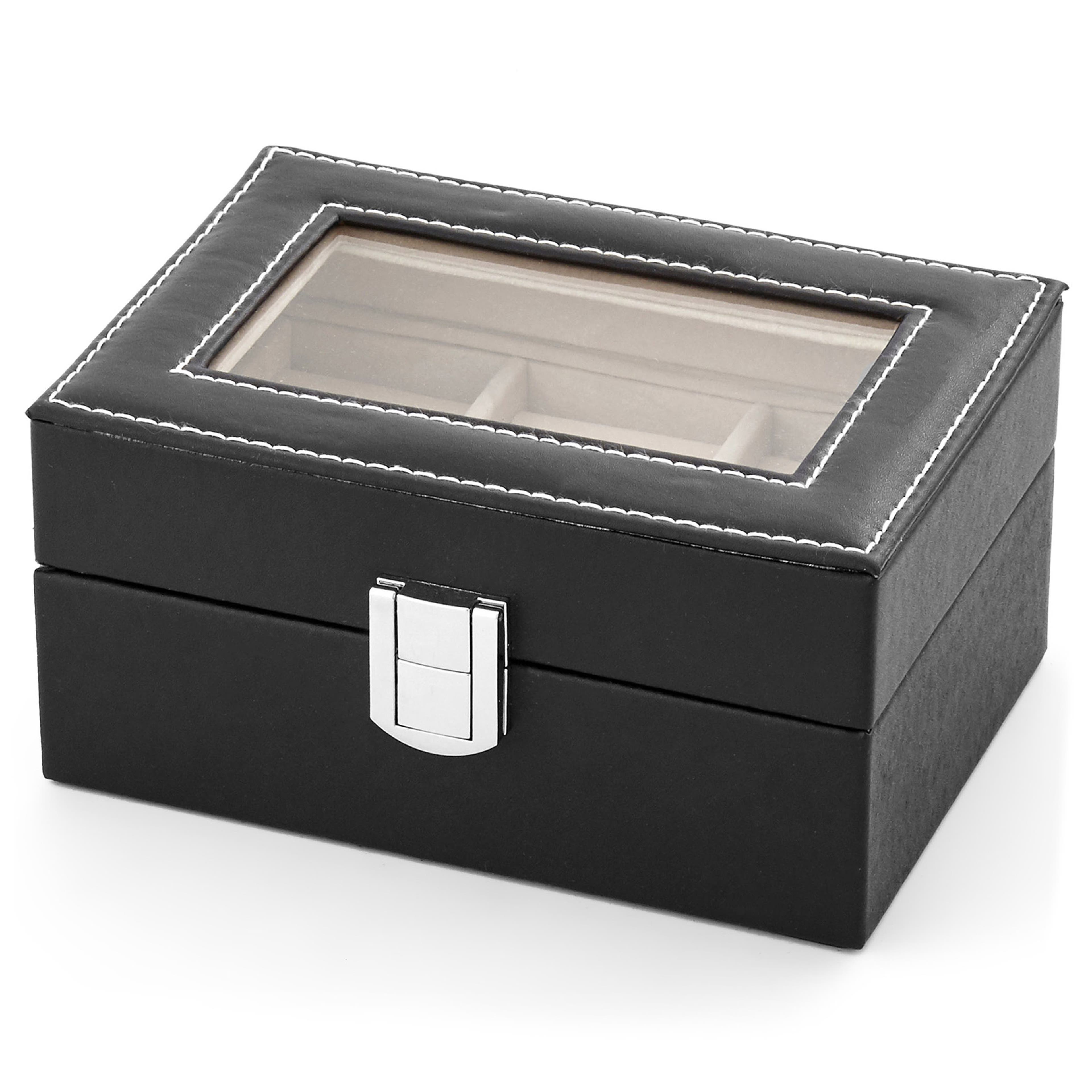Cufflinks - Your Ultimate Guide
You'll learn everything there is to know about cufflinks, from materials to locking mechanisms, as well as how to pair and wear them and everything in between. All in 15 minutes.
Cufflinks are small decorative accessories used to link cuffs, the extra fold of fabric at the wrist on a long-sleeved dress shirt. Whether you’re searching for your first pair or looking to freshen up your collection, this guide will make you familiar with all the different kinds and materials of cufflinks, as well as how to pair and wear them, and everything in between.
Cufflink Parts
Let’s get technical for a moment. Knowing your cufflink parts won’t just make you sound smart at dinner parties, it’ll also help you understand how they work and keep you looking sharp.
1. The front face - is the top of the cufflink, featuring a design, gemstone, or any other attractive material
2. The post - is the part that goes through the cuff holes and is attached to the toggle
3. The toggle - is the bottom part of the cufflink, pivoting 90 degrees to lock in place and preventing the cufflink from slipping out of the cuff holes
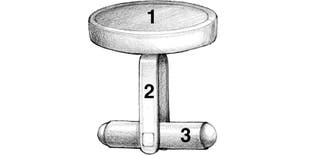
Some cufflink types such as chain link, ball return, and silk knot cufflinks do not have toggles and straight posts, featuring either a chain, curved post, or string as their closure mechanism and an identical or similar design on the other end.
Cufflink Types
All cufflinks serve to secure shirt cuffs together. But just like there’s more than one way to wear a suit or brew a beer, different cufflinks have different ways of keeping cuffs attached.
Let’s take a look at what’s out there and everything you need to know to pick the right pair for you.
Whaleback Cufflinks
So called because the toggle mechanism securing the cuffs is shaped like a whale’s tail, these links are both practical and popular.
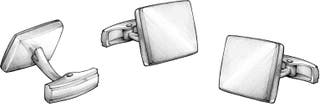
Use whaleback cufflinks by flipping the toggle into an upright position parallel with the post and slip through the holes of your cuffs. To lock, simply flip the toggle back, perpendicular to the post, and your cufflink will stay nice and put.
- Pro: Common & popular
- Pro: Easy to use
- Pro: Inexpensive
- Con: Not always long-lasting
Whaleback cufflinks are mass-produced, making them affordable. They’re also very easy to slip through and fix cuffs together. But the problem with their design is that, depending on the quality and frequency of use, the strain on the mechanism can eventually result in damage or breakage. What’s more, unlike other types of cufflinks, only one side, the front face, is presentable.
Bullet Back Cufflinks
They sound like the kind of gizmo that’d settle an epic action film--in the last scene, the hero and the villain square off after using up all their ammo, and just when the hero is beaten he reaches to his cufflink, pulls out a bullet, loads a handgun, and bam!

But they’re not. Instead, they feature a toggle closure mechanism shaped like a bullet, hence the name.
- Pro: Common & popular
- Pro: Easy to use
- Pro: Inexpensive
- Con: Not always long-lasting
Use bullet back cufflinks by making sure the toggle is parallel to the post. Slip it through your cuff holes, and flip the toggle back to lock in place.
Bullet back cufflinks are mass-produced, making them affordable. But consistent strain on the closing mechanism can result in their failure, depending on how often they’re used and how well made they are.
Stud/Button Style Cufflinks
As the name suggests, these tend to look like studs or buttons, drawing less attention than some of the other bolder designs.

Both sides feature presentable faces.
- Pro: Classic style
- Pro: Design on both sides
- Pro: Long-lasting
- Con: Less easy to put on
Use stud or button style cufflinks by tilting the bottom part to the side so that it’s at a 90 degree angle to the cuff holes. Slip through, and then straighten again. Pretty much the way you button a shirt. Because they’re fixed, stud/button cufflinks tend to last longer. Almost forever, actually. Also, since both sides feature interesting designs, you get to show you’re a man of style even when people see the underside of your cuffs. Stud/button cufflinks also have a classic appeal.
Chain Link Cufflinks
Chain link cufflinks are some of the oldest cufflinks around, existing before the Industrial Revolution. They’re made of two usually identical faces attached by a chain.

Use chain cufflinks by simply inserting one side through the cuffs at an appropriate angle and then straighten.
- Pro: Traditional style
- Pro: Design on both sides
- Con: Slightly loose
- Con: Not as easy to fasten
The chain does mean a looser fit and thus a different style. Both sides of chain cufflinks are decorative.
Ball Return Cufflinks
The rear of these features a largish ball, attached to the decorative face by either a chain or curved post.

Use ball return cufflinks by tilting and pushing the smaller side through your cuff holes before straightening.
- Pro: Classic design
- Pro: Virtually indestructible
- Con: Not as easy to fasten
Ball return cufflinks have a more traditional design, which lasts longer thanks to not having any moving parts. However, they’re more difficult to fasten than some of the other cufflink types.
Locking Dual-Action Cufflinks
These are probably the most modern cufflinks, securing shut thanks to an innovative mechanism similar to that of a wristwatch.

Use dual-action cufflinks by making sure the cufflink is hinged flat, and then push through the cuffs, opening up again to fasten.
- Pro: Contemporary design
- Pro: Fastens very well
- Con: Slight learning curve to close
Locking dual-action cufflinks are quick and easy to use after you figure them out. Both faces are identical, providing visual interest on either side of your sleeve. They look contemporary and might not work with a more traditional setup.
Silk Knot Cufflinks
Made entirely from silk, these feature two identical knots attached with a cord. Silk knot cufflinks are colourful and playful, appropriate for casual settings, and certainly not in highly formal events or in business environments where you want to make a more professional impression.

Use silk knot cufflinks, by pushing either knot--remember, both sides are almost always the same--through your cuff holes.
- Pro: Informal
- Pro: Affordable
- Con: Don’t last as long
These are the most affordable and casual of cufflinks. The flipside is that they don’t usually last very long and are not appropriate for black tie events. You won’t see them handed down as heirloom gifts, that’s for sure.
Cufflinks Base Materials
Just like any other men’s jewellery or accessories, cufflinks are made from a variety of materials.
Let’s look at the most common ones. Incidentally, all the materials below can also be featured on the face or faces of cufflinks made of a different material. In other words, cufflinks from stainless steel can feature an inlay of any other material.
Stainless steel cufflinks
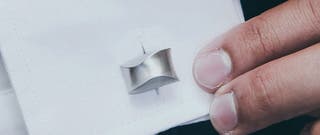
Apart from its obvious--and attractive--non-rusting advantage, stainless steel features a grayish luster which falls outside of the color wheel and is therefore easy to match, making it a “safe” option.
Depending on the design, stainless steel has a clean, almost industrial look. It’s like a no-nonsense-I’m-here-to-get-things-done-and-not-mess-around assertion. Stainless steel lasts very long. Given the choice, always go for surgical grade stainless steel--it’s hypoallergenic.
Titanium cufflinks
Named after the mythological Titans, titanium is a highly durable and biocompatible metal.
Titanium is a fairly new addition to the metals used for jewelry. As such, it has a more modern appeal, which most designs reflect. Like stainless steel and silver, it features a neutral grayish tone that lies outside the colour wheel, so it's easy to pair.
Platinum Cufflinks
Platinum is a silver-white precious metal that is often used for men’s jewelry. Platinum is hypoallergenic and, unlike silver, doesn’t tarnish.
It also polishes up beautifully and, like other silverish metals, is not difficult to pair.
Copper cufflinks
Copper has a lovely warm tone. It’s darker than gold, and looks less formal. Copper cufflinks are not as common as silver or gold ones.
The yellow-reddish tone of copper means it should be paired accordingly. Pure copper will develop a patina with time, darkening and even growing green patches. These lend it a special vintage cufflinks charm that, depending on your tastes, may or may not suit you.
Bronze cufflinks
With less of a red tinge than copper, bronze is still warm-colored. It falls somewhere between gold and copper.
Like copper, bronze tarnishes and develops a patina, and requires some thought when it comes to pairing.
Sterling Silver cufflinks
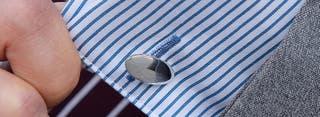
Silver is similar to stainless steel but with a slightly warmer luster. It’s been around much longer than stainless steel and has always been associated with class and good taste.
Again, existing beyond the color wheel, it is extremely easy to pair and you should have no problem wearing it with your existing shirts and suits. Choose sterling silver over pure silver. It’s shinier, brighter, stronger, and retains its sheen longer.
Gold cufflinks
Gold has always been a symbol of status, prosperity, and eminence. On cufflinks, it certainly makes a statement. Unlike silver, gold is more like a yellow than a neutral tone and should be paired thoughtfully.
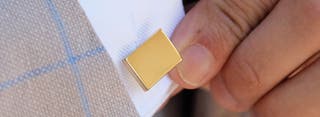
Gold cufflinks should be displayed in situations where you want to make a strong impression, such as important business meetings, weddings, or other highly formal events.
Metal alloy cufflinks
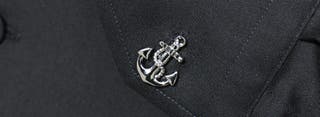
Crafted from a mix of metals, metal alloy cufflinks are usually polished to look like silver or stainless steel, but can also feature a gold-like finish. The abundance of the materials and their mass-production make metal alloy cufflinks highly affordable.
If you don’t have the budget for higher-end pieces or if you’re just starting out with cufflinks, metal alloy ones are a great way to test the waters before you wade deeper.
Silk cufflinks
Silk is a protein fiber, produced from the cocoons of certain insect larvae. It can be dyed any color and works for informal situations, whether in the office or any other gathering where you want to look good but not project an air of power or status.
Silk can fray and doesn’t last as long as some of the other materials. On the other hand, it’s very affordable.
Cufflinks' Decorative Materials
Now that we’ve covered base cufflink materials, let’s take a look at the more common materials showcased on the front face of cufflinks.
Fabric
Fabric cufflinks feature either a bullet back or whaleback design with a fabric front face.
The fabric means they have a more laidback look that works great for informal settings.
Enamel & Glass
Traditionally, these are made by hand-applying finely ground colored glass to a stamped design. The cufflink is then placed in the kiln, before another layer is added. The process is repeated several times, with a final polishing to create a highly glossy and attractive surface. Since enamel and glass cufflinks come in all designs and color combinations, they should be matched individually, and may or may not be appropriate for highbrow settings depending on the design.
A lot of work goes into making quality enamel cufflinks, as is reflected by their price tag. Choose a pair you’ll be happy with years and years down the line. Or even one a son or grandson would love to inherit one day.
Precious & Semi-Precious Stones
Anything from extravagant rubies and emeralds to readily available semi-precious stones can adorn the face of a cufflink.
Beyond depth and luster, stones still correspond to colors and should be matched accordingly. Unless you’re a duke or a bishop, make sure you know what you’re doing when wearing super blingy cufflinks.
Wood
Wood has a warm, earthy tone and always features an entirely unique grain pattern. Wooden cufflinks, or cufflinks with a wooden face are a fantastic way of bringing that lumberjack vibe to semi-formal attire.
They’re also a great way to show some sass and personal style. Unlike more classic materials, wood on cufflinks is fairly modern. Paired correctly, it makes a striking visual contrast. Not always good for formal settings, however.
Leather
Leather has a masculine, rugged appeal and is a great way to channel your individual flair.
Like wood, leather has a more modern appeal and is excellent for casually complementing your more edgy outfits, but is considered problematic for black tie events.
Mother-of-Pearl
Made with the beautifully iridescent shell coating of molluscs, mother-of-pearl cufflinks are an old and gentlemanly classic.
A graceful pair of mother-of-pearl cufflinks matched with a sleek suit can make a powerful and timeless impression. They’re also the kind of cufflinks that are passed down the generations and cherished.
How to put on cufflinks
For those who don't know, here's how to put on cufflinks.
- Start with your french cuffed shirt unfolded and extra long.
- Fold the french cuff in on itself.
- Flip the toggle of the cufflinks into an upright position, and slide them through the first 2 layers of fabric.
- Slide the cufflinks through the remaining 2 pieces of fabric. For a total of 4 layers.
- Flip the toggle back.
- Be proud and enjoy. You're done.
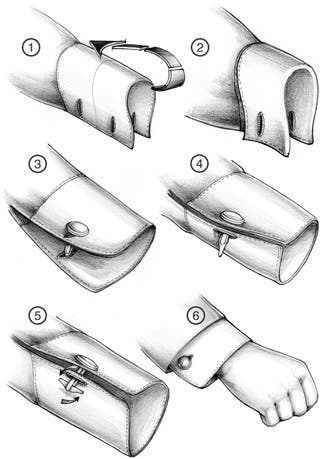
Types of cuffs
To make life super easy for you, the following illustrations show all the different kinds of cuffs in existence, literally. Ok probably not, but we couldn't find more. Give this a quick read through and you'll know exactly what cuffs go with cufflinks and which ones don't.
Barrel cuffs
Barrel cuffs are the cuffs you'll most often find on normal shirts, and usually feature between 1 and 3 buttons. You can not use cufflinks on barrel cuffs.
There are at least 9 types of Barrel cuffs
- Two-button square cuff (can be found with 1, 2 or 3 buttons)
- Two-button angle cuff (can be found with 1, 2 or 3 buttons)
- Two-button rounded cuff (can be found with 1, 2 or 3 buttons)
- Continental cuff (same design can be found as a french cuff too, see below)
- Envelope cuff
- Cone cuff
- Napolitan cuff
- Tab cuff
- Italian cuff
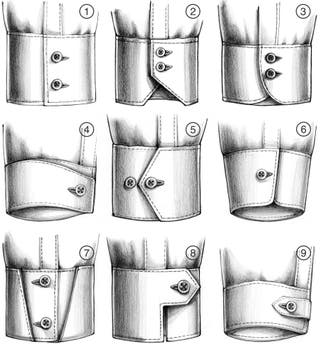
French Cuffs
French cuffs are cuffs that are twice as long as normal cuffs and are then folded in on themselves. They never come with buttons, but instead are always fastened with cufflinks. Traditionally, they were laced and might have even puffed out on the royalty and clergy. In the past, they were worn only with jackets, but today you’ll see men wearing French cuffed shirts on their own.
Given their name, we're betting they are somehow related to France, but that doesn't matter. The point here is: when there's French in the name of a cuff, it means it's made to be used with cufflinks.
There are 4 types of French cuffs
- French square cuff
- French angle cuff
- French round cuff
- French continental cuff
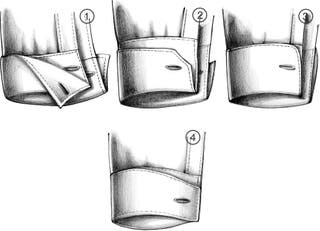
The special cuffs
So, there are barrel cuffs, French cuffs, and the ones that fall out of category.
Number one is a convertible square cuff. Which means you can use it with or without cufflinks, whatever the mood calls for.
Number two is your own barrel cuff that you've turned into a cuff that you can use with cufflinks, not ideal, but if you really want to flash those cufflinks, it can be a good option. Although you should really get a tailor to make the adjustment.
There are 2 types of special cuffs
- The convertible cuff
- The homemade "French cuff"
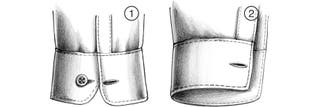
How to Match Cufflinks With Your Outfit
You want to think about color, design, and formality when pairing cufflinks with the rest of your attire.
As mentioned before, simple cufflink designs featuring only one neutral color like black, white, gray, beige or silver-toned can be paired easily with almost anything. Since these colours fall outside the colour wheel.
But if you're going for something else, let’s take a look at a few directions you can take.
Safe Matching
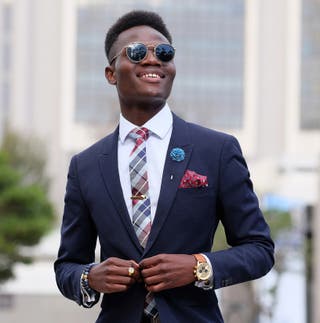
Then there’s the design and degree of formality. Just because you own a pair of diamond cufflinks doesn’t mean you should wear them to a barbecue. Actually, diamond cufflinks should only be worn at evening events, never during the daytime. You probably shouldn’t put skull cufflinks on for a wedding either. Always exercise good taste.
Contrast Matching
If you’re feeling more confident, contrast is a great way to add some flair to your look. That blue suit? Match it with a pair of red cufflinks. You could also play around with darker and lighter shades. So, a navy blue jacket can be paired with light blue cufflinks.
Playful Matching
An immaculate black suit paired with skull cufflinks can make a striking statement, but also takes a (large) pair to pull off. Basically, do whatever you want. Go crazy. You’re the ultimate judge of whether it works or not, and as long as you’re happy with how you look and you’re not deliberately trying to be controversial, you should be fine.
Which Cufflinks Match a White Shirt?
White is a neutral colour, so feel free to experiment with colour and pattern when it comes to your cufflinks. But remember to match metals – silver-tone cufflinks if your watch is silver.
What cufflinks match a blue shirt?
For a blue shirt, we suggest silver-toned cufflinks that have shades of blue in them.
What cufflinks match a pink dress shirt?
When wearing a pink shirt, go for a multi-coloured pair (with shades of pink) or keep it simple with classic silver.
What cufflinks match a black dress shirt?
Almost all cufflinks work well with a black shirt, but you can’t go wrong with gold-toned or a pair with gold highlights.
What cufflinks go with my patterned shirt?
It all depends on the colour of the pattern.
To play it safe, we suggest sticking with subtle silver-toned cufflinks because silver goes with most colours and patterns. As with all cufflinks, be sure they match other metals.
How to match cufflinks to gold accessories?
Matching metals is an easy way to keep your look clean and uncluttered.
Opt for silver and gold coloured cufflinks to match any of the shirts above and not clash with your gold tie clip.
How to Buy Cufflinks as a Gift?
Cufflinks make great gifts. While they may not be for everyone on your list, the well-dressed man will appreciate the thought you put into finding the perfect pair.
The first question to consider when buying cufflinks as a gift is what colour is his watch? If he sports a gold watch, you’ll want to purchase a pair of gold-tone cufflinks. The same goes for a silver watch… silver-tone cufflinks.
Matching the colour of his watch is the easiest way to choose a pair of cufflinks that he’ll actually wear. From there, you can go as flashy or as subtle as you want – from Santa’s sleigh at Christmas to Thor’s hammer when the world is under siege.
And if you want to make your gift extra special, add a custom engraving. Click here for ideas and inspiration on what message to engrave.
When To Wear What?
Cufflinks may seem like a small and subtle expression of style. But in a setting where everyone is similarly suited and tied, they can make quite the statement.
Work
There’s more than one way to put bread on the table. From a laidback startup to corporate board rooms where the quality of your attire can make the difference between commanding respect, closing a deal, and not being taken seriously, what you wear says a lot about you.
If you are the big kahuna, you can wear whatever you want. But there’s nothing like a classic cufflink design in silver, gold, mother-of-pearl or a precious stone to let everyone know who’s in charge.
If you’re not at the top of the pyramid, save the cufflinks for special occasions such as meetings with clients, conferences, and other important business events. Know your place: don’t walk in with sapphire-studded cufflinks and enter a style contest with the boss.
If you’re in a more creative position, cufflinks are a wonderful way to express your quirkiness. From Lego to Star Wars to decks of cards, if you haven’t found something that’s genuinely you, you’re not looking hard enough.
If you're in a more casual setting, elegant silk knot cufflinks or simple, unelaborate designs work well.
Black Tie Events
If you’re going to a wedding, gala, reception, party, or ball, you’re expected to look your best, and cufflinks are an excellent way to put that graceful and refined finishing touch on your outfit. And unless the event specifically calls for a more playful ensemble, avoid things like guns and pinups on your cufflinks or casual styles like silk knot cufflinks.
Go for the classics: silver, gold, tasteful enamel, mother-of-pearl, stones, etc.
Casual
Get-togethers and parties are great places to showcase your unique style. This is where you can pull out the skull cufflinks, nautical cufflinks or play around with wood, leather, and novel designs.
The right cufflinks can start a great conversation. Have fun!

Cleaning Your Cufflinks
To enjoy your cufflinks for a lifetime, you have to clean and store them properly. The easiest way to clean them is to use the professional services of a qualified jeweller. If you prefer to get the job done yourself, all you need for metal items with no stones is water, a mild detergent, a soft-bristled toothbrush, and a cotton cloth to dry.
A soft jewellery polishing cloth is also an inexpensive and effective way to remove light tarnishing. If your cufflinks have gemstones, keep the moisture to a minimum and use no abrasives to prevent scratches. Cotton swabs immersed in hydrogen peroxide will make the jewellery shine again. Wooden and leather accessories shouldn't get wet. In fact, unless you want to risk mildew, leather shouldn't even be in humid environments.
How To Store Your Cufflinks
Once you've cleaned your cufflinks, you should think of a suitable way to store them. The ideal storage place is a cufflink box where you will keep them away from heat and direct sunlight. It also helps prevent oxidation and tarnishing, occurring as a reaction to oxygen. Ideally, keep each pair in a separate, padded compartment so it won't get scratched by other jewellery items.

Do not store cufflinks in damp areas or in plastic bags whose compounds can make them tarnish faster. The proper care for your accessories will pay off and some of them will be a wonderful heirloom to pass on to next generations. You want your sons and grandsons to be as stylish as you are, don't you?
Your Party Chatter Version Of The Cufflinks’ History
We’ve been wearing shirts for more than seven millennia, pretty much since woven fabric was invented. But it’s only recently--relatively speaking--that the shirt has become decorative on its own.
Why Did We Start Wearing Shirts?
Shirts used to be an undergarment that served as a barrier between the skin and heavier outer garments, preventing them from getting dirty.
Back then, showing your cuffs was as bad as walking around with your fly open.
And After That?
Around the 1500’s, men started tying their cuffs together by threading narrow ribbons or strings through their cuff holes.
But it wasn’t until the beginning of the 18th century that some of the more daring, debonair gents started using buttons connected by a chain to fasten their cuffs. Often, these chain cufflinks would feature miniature portraits of famous figures or loved ones.
Shirt cuffs started stiffening up when we discovered starch in the mid-19th century. It became difficult to force buttons through cuff holes and a different solution was needed.
Enter The Cufflink
The cufflink solved the problem of stiff cuffs perfectly. And when the Industrial Revolution came along, their popularity exploded*, with everyone from the middle class to the elite sporting cufflinks in many different shapes and materials.
These days, cufflinks are worn on more occasions than ever before, and we men tend to take them very seriously--or playfully--as a way to make a statement and distinguish ourselves from our peers.
*Apart from a brief fall in popularity around the time the buttoned sport shirt was invented in the 1920’s.
You Asked – We Answered
Why are cufflinks used?
Cufflinks are used to link or fasten the cuffs on French cuff shirts. These are formal shirts that do not come with buttons. Cufflinks complement their formality.
How do you choose cufflinks?
When choosing cufflinks, you should think about where you’ll be wearing them. If it’s a wedding or some other black tie event, you want to look especially dignified and formal. Silver, gold, mother-of-pearl, elegant gemstones or enamel designs can all work well.
If it’s your first pair, we recommend a classy silver design. The safe bet.
If you’re expanding your collection, you can choose anything you want, depending on whether you’re going for a formal or casual look.
Where on the cuff should I attach a cufflink?
First, make sure you’re wearing the right kind of shirt--a French cuff shirt. It should have special holes for cufflinks and not buttons.
After folding back the end of your sleeve so that the cuffs are doubled, pinch them together, making sure the holes are aligned. Then, insert the bottom end of the cufflink through all four holes before securing in place.
The way cufflinks are fastened depends on their closure mechanism. Please see the section above for specific information about every kind of cufflinks.
How do you wear cufflinks and studs on a tuxedo?
For the cuffs, see Where On The Cuff Should I Attach A Cufflink? above.
If you’d like to wear studs on your tuxedo shirt, start by pushing the decorative side of the stud through the back hole, and then the front. Ignore the buttons--they aren’t necessary when wearing studs.
What kind of shirt do you wear cufflinks with?
Cufflinks are traditionally worn with French cuff shirts.
Having said that, any shirt that has holes for cufflinks instead of buttons, or in addition to buttons, can be worn with cufflinks.
Is it okay to wear cufflinks to a job interview?
The answer is… it depends.
What position are you interviewing for? In what company? Is it a laidback startup or a conventional corporate?
If you want to project an aura of class, power, and dignity, you can certainly put on a pair of cufflinks and let your outfit shine. In this case, we recommend going for traditional and classic cufflinks such as gold, silver (or any other greyish and neutral metal), mother-of-pearl, a tasteful gemstone, etc.
If you’re going for a more creative position, cufflinks are a great way to show your individuality.
Having said that, some interviewers may find cufflinks to be pretentious, so always exercise caution and try to find out as much information as possible about the company and position to help you make the right decision.
What should cufflinks match?
There's really no rule here, but a few things that might make it easier to pull off cufflinks. The safe choices if you will.
Colours outside the colour wheel, white, grey, black, silver, are always easier to pull off.
If you're wearing other metals besides your cufflinks, make sure these match, for example a gold watch and tie clip, to match your gold cufflinks.

